European colonialism
description: settlement, conquest, and colonization by Europeans
304 results
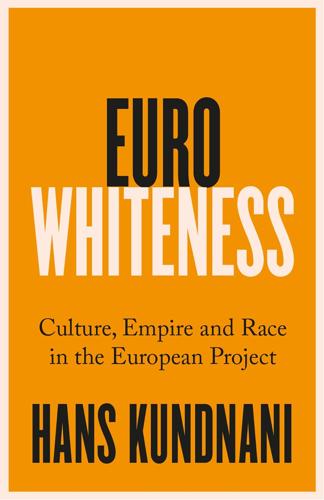
Eurowhiteness: Culture, Empire and Race in the European Project
by
Hans Kundnani
Published 16 Aug 2023
Yet, at this time, Europeans still saw the differences between them and the indigenous populations of the Americas in terms that were more religious than racial—the early accounts of Columbus’s voyages refer to the settlers as “the Christians”.17 Over the next several centuries, however, the racial would take up the narrativising, self-identifying work previously played by the religious, as Goldberg puts it. The shift from a more religious conception of European identity to a more racial one took place in the context of wider shifts in European colonialism in the Americas and in particular the emergence of the Atlantic slave trade. During the seventeenth century, England and France replaced Spain as the dominant European powers in the Americas, especially in north America and the Caribbean. This in turn was linked to a shift in the economies of European colonies. The focus of Spanish colonialism in the Americas had been on the discovery and acquisition of gold. English and French colonies, on the other hand, focused on the production of coffee, cotton, sugar and tobacco, which led to an expansion in the practice of slavery in the Americas.
…
The way European integration intersected with the end of European colonialism rather than following it shows that it was not even a post-colonial project, let alone an anti-colonial project. In fact, part of the point of European integration was that it was a way for France and Belgium to consolidate their colonial possessions at a time when they were unable to maintain them on their own. Many anti-imperialists saw it as a neo-colonial project. Kwame Nkrumah went so far as to compare the Treaty of Rome to the Berlin Conference of 1884–5—as we have seen, a cooperative moment in the history of European colonialism—and said that it created “a new system of collective colonialism which will be stronger and more dangerous than the old evils we are striving to liquidate”.24 However, the colonial origins of the EU—what we might call its original sin—have been written out of the narrative of European integration.
…
This could even include other western European countries that did not themselves have extensive colonies—after all, as Bhambra points out, many citizens of countries like Ireland and Sweden took part in the colonial project as settlers.46 But central and eastern European countries, particularly those who see themselves as the victims of Russian imperialism, would likely resist the idea that, in becoming EU member states, they also inherited responsibility for European colonialism.47 Thus an attempt to make the memory of empire more central to the EU’s identity would likely divide it between east and west. In that sense, the EU itself may actually be part of what is preventing Europeans from engaging more deeply with their colonial past. It is not simply an accident of history that the Holocaust became a central collective memory for the EU while the memory of European colonialism was forgotten. Rather, there are structural reasons why the EU has become a vehicle for imperial amnesia that mean it is also difficult for it to correct the problem of “biased salience” and to learn and apply the external lessons of its history as well as the internal lessons.
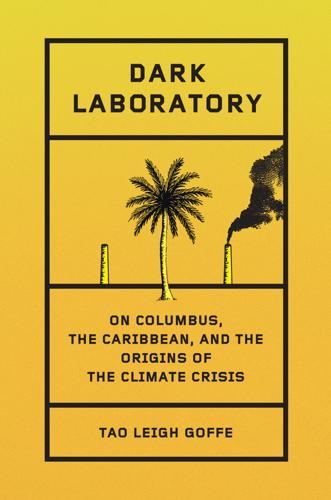
Dark Laboratory: On Columbus, the Caribbean, and the Origins of the Climate Crisis
by
Tao Leigh. Goffe
Published 14 Mar 2025
While I am not a climate scientist, as a professor of literature and history, I have evolved my lesson plans to face the cascade of global ecological crisis. It is the reality and the responsibility of the individual to face this crisis and our role within it. The weather is not simply changing, as climate deniers would like us to believe. We are experiencing the consequences of a centuries-long cycle of exploitation of people of color, whom European colonial powers have forced to extract resources from the earth. The archival research I undertake on the history of racial slavery feels detached without reckoning with the climate crisis as an ongoing colonial crisis. Poring through ledgers in Caribbean archives, I return each year not knowing what hurricane season will destroy of the delicate yellowing papers, the records the British, French, Danish, Dutch, and Spanish left behind of their exploits.
…
We at the lab understand that climate crisis cannot be solved without solving racial crisis. The two are inseparable. With over thirty members worldwide, from Helsinki to Hilo to Portland to New York, we collaborate on a wide range of creative storytelling projects centering on Black and Indigenous ecologies. Once I realized that European colonial archives are evidence lockers full of crimes against humanity, I began to stop arguing the case in court, as it were. As it often occurs with genocide, there is simply too much evidence. Those who have benefited from the crimes of colonialism refuse to be convinced. The weight of transatlantic history and its impact on our current climate crisis is overwhelming.
…
That humans have destroyed the natural environment is no surprise. The debates of the Anthropocene often fail to distribute the blame where it is due, on so-called developed nations. To use the word “Anthropocene” is to universally blame all human societies.[16] Meanwhile, the specificity of the calamity wrought by European colonialism is unmistakable. Furthermore, the Western scientific method and traditions of Enlightenment knowledge production have relied on centuries of discrediting Indigenous, African, Pacific, Middle Eastern, and Asian schools of thought. To address the climate crisis, we must question our assumptions, go beyond the predominate Western climate science approach, and acknowledge who has been excluded from the category of scientist to the detriment of the planet’s survival.
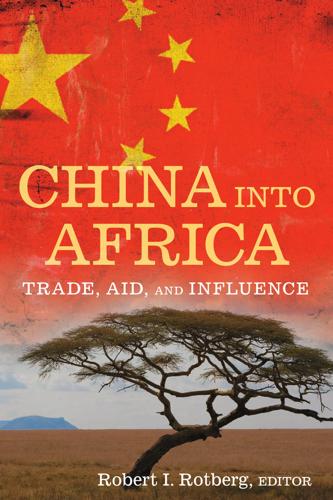
China into Africa: trade, aid, and influence
by
Robert I. Rotberg
Published 15 Nov 2008
Geopolitical and Macroeconomic Factors Referring to China’s investments and involvement in Africa from 1996 to 2006 as China’s “Scramble for Africa,” critical observers draw a clear comparison between China and European colonial powers of the nineteenth and twentieth centuries.3 Several macroeconomic and geopolitical factors that propelled the European “scramble” for Africa also appear to be at work in China’s recent engagement on the continent. During the European colonial era, as during the past decade of Chinese activity, the objective of external powers in Africa was to gain economic and 04-7561-4 ch4.qxd 9/16/08 4:11 PM Page 67 Engaging Postcolonial Interdependencies 67 political advantage for the interventionist power.4 This overriding reality offers preliminary evidence that China’s current engagement with Africa is (neo)colonial: in this basic analysis, China uses its power to influence relatively weaker African economic and political systems in its own interest.
…
In the Cultural Arena China’s cultural approach to engaging Africa diverges from the European colonial model of cultural paternalism. Fundamentally, China is not driven by a “civilizing mission” to reform and save African individuals from their perceived primitivity. Unlike attempts by French colonial authorities to create “Frenchmen” from their African subjects by imparting French language, eti-quette, and habits, Chinese authorities have no interest in transforming Africans into “Chinamen.” European colonial attitudes were paradoxical: paternalistic attempts to bring “civilized” ways of life to African subjects were debasing, even as this cultural engagement signaled the shared essence of humanity and fraternité.
…
In December 2006, South African President Thabo Mbeki warned fellow African leaders to “guard against sinking into a ‘colonial relationship’ with China as Beijing expands its push for raw materials across the continent.”2 Indeed, the widespread anxieties about China’s actions in Africa underline several basic congruencies between current Chinese activities and European colonial relations in Africa. These congruencies are both contextual and behavioral, and warrant systematic comparison beyond the common, but often superficial, alarmism of public discourse. This comparison also reveals divergences between contemporary Chinese interventions and colonial European activities in Africa that are politically, economically, and socially significant.
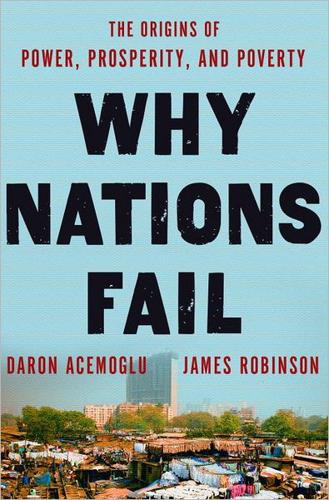
Why Nations Fail: The Origins of Power, Prosperity, and Poverty
by
Daron Acemoglu
and
James Robinson
Published 20 Mar 2012
THE TURNING POINT How a political revolution in 1688 changed institutions in England and led to the Industrial Revolution 8. NOT ON OUR TURF: BARRIERS TO DEVELOPMENT Why the politically powerful in many nations opposed the Industrial Revolution Photo Inserts 9. REVERSING DEVELOPMENT How European colonialism impoverished large parts of the world 10. THE DIFFUSION OF PROSPERITY How some parts of the world took different paths to prosperity from that of Britain 11. THE VIRTUOUS CIRCLE How institutions that encourage prosperity create positive feedback loops that prevent the efforts by elites to undermine them 12.
…
In West Africa there was rapid economic development based on the export of palm oil and ground nuts; throughout southern Africa, Africans developed exports to the rapidly expanding industrial and mining areas of the Rand in South Africa. Yet these promising economic experiments were obliterated not by African culture or the inability of ordinary Africans to act in their own self-interest, but first by European colonialism and then by postindependence African governments. The real reason that the Kongolese did not adopt superior technology was because they lacked any incentives to do so. They faced a high risk of all their output being expropriated and taxed by the all-powerful king, whether or not he had converted to Catholicism.
…
In addition, it reproduced the pattern of extractive institutions and political absolutism that empowered and enriched a few at the expense of the masses, though the few now were Belgian colonialists, most notably King Leopold II. When Congo became independent in 1960, the same pattern of economic institutions, incentives, and performance reproduced itself. These Congolese extractive economic institutions were again supported by highly extractive political institutions. The situation was worsened because European colonialism created a polity, Congo, made up of many different precolonial states and societies that the national state, run from Kinshasa, had little control over. Though President Mobutu used the state to enrich himself and his cronies—for example, through the Zairianization program of 1973, which involved the mass expropriation of foreign economic interests—he presided over a noncentralized state with little authority over much of the country, and had to appeal to foreign assistance to stop the provinces of Katanga and Kasai from seceding in the 1960s.

The Coffee Book: Anatomy of an Industry From Crop to the Last Drop
by
Gregory Dicum
and
Nina Luttinger
Published 1 Jan 1999
Today, in fact, Germany is the world’s third largest coffee consumer. Colonialism and the Spread of the Bean Beginning in the early 1700s, under the control of a handful of colonial powers, coffee cultivation increased dramatically throughout the tropics over the ensuing centuries. For most European colonial powers, coffee was a dream crop: a habit-forming, high-value tropical product that traveled well, with a ready market back home. Accompanying its expansion was a litany of cruelly inhumane and rapacious practices used for cultivating the bean, practices that indelibly scarred the landscapes and peoples unfortunate enough to be associated with the crop.
…
In 1773 citizens of Boston (“disguised” as natives) boarded English ships in the city harbor and threw the tea cargoes overboard, therein inspiring a lasting national affection for that other drink, coffee, which could be imported directly from French and Dutch colonies in the Caribbean. From that time, drinking coffee was viewed as a patriotic act, and drinking tea was seen as un-American. Curiously, then, whereas European colonialism seemed to dictate where coffee was cultivated and drunk, in the case of the United States, it was the end of colonialism, dramatically reflected in the Boston Tea Party, that marked coffee’s rise to prominence. The initiation of coffee as the American national drink in the late eighteenth century set the stage for a series of developments in the U.S. coffee trade that took place over the following two centuries—principally, the growth of a coffee trade infrastructure that served to smooth the flow of beans and bucks between producing and consuming nations.
…
This infrastructure included the centralization of the coffee roasting industry, technological innovations facilitating higher yields, increasingly efficient transport mechanisms, and geopolitical developments favoring the growth of symbiotic relationships between the United States and key producing countries. Later conglomeration of roasters into multinational corporations and the growth of Brazil and Colombia as the primary powers behind coffee production both echo some of the themes found in coffee’s early European colonial history—namely, the ongoing struggle for monopolistic control and regulation of a sector capable of generating tremendous revenues and power. The attendant social and ecological costs of the commerce in coffee, however, were also globalized. Increasingly powerful, the roasting corporations eventually became nearly indistinguishable from government in matters of coffee as they worked closely together to ensure that trade agreements and policies aligned with their own agendas.

Connectography: Mapping the Future of Global Civilization
by
Parag Khanna
Published 18 Apr 2016
Now India can leverage China’s infrastructure to more efficiently deliver its own projects for Sri Lanka, from railways to housing, and use the island as a reliable back office and outsourcing site for call centers and car part assembly for the huge south Indian market of 300 million people. The Indian Ocean is once again the epicenter of competitive connectivity. In the fifteenth and sixteenth centuries, India’s coastal kingdoms haggled with European colonial merchants to get the most favorable terms for carrying their goods to far-off markets. But whereas Sri Lanka became a European colony from the fifteenth century onward, this time it is prepared to resist any Chinese overextension beyond the projects that are mutually beneficial—armed with Chinese weapons. ATLANTIC CITIES The competition to shape maritime trade routes has become as intense in the Atlantic as in the Indian or Pacific Ocean.
…
Both the Arab conquerors of the mid-first millennium C.E. and the Mongols of the thirteenth century leveraged their organized mobility to establish vast empires. The Crusades and the Commercial Revolution of the late Middle Ages enabled the flourishing of maritime commerce and set the stage for centuries of European colonialism during which most of the world’s territory was mapped and claimed. Maps 2, 3, 4, 5, 6, 7, 8, 9, 10, 11, and 13, corresponding to this chapter, appear in the map insert. Globalization surged as empires expanded their connections: the fifteenth- and sixteenth-century Iberian (Spanish and Portuguese) voyages and the seventeenth-century Dutch and eighteenth-century British East India companies.
…
What will make the difference between celebrating independence and achieving success in Africa is not just political nation building but physical state building—both within and across borders. Africa has never had a time-out period to pause and decide how to best organize itself without outside interference. Its geopolitical complexity is the result of the layering of two centuries of European colonialism, a dozen major independence movements after World War II, the Cold War maneuverings that supported some of them while thwarting others, and the globalization of its commodities industries, which has brought in powerful foreign supply chain operators. Many of Africa’s interstate boundaries are visible only if one overlays the geometric grid of latitude and longitude, which European colonialists used rather than any sensible respect for cultural geography to draw the continent’s many straight-line borders.
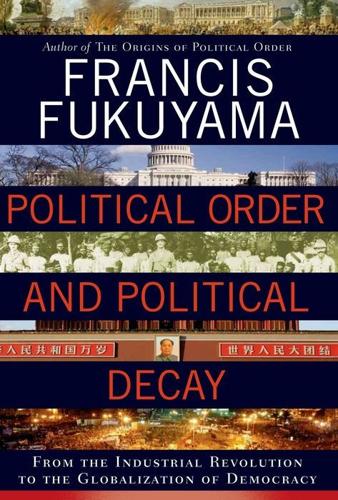
Political Order and Political Decay: From the Industrial Revolution to the Globalization of Democracy
by
Francis Fukuyama
Published 29 Sep 2014
The complex reasons for different development paths can be seen most vividly in the contrast between sub-Saharan Africa and East Asia, the worst- and best-performing regions of the world with respect to economic development over the past half century. Sub-Saharan Africa never developed strong indigenous state-level institutions prior to its contact with the West. When the European colonial powers began the “scramble for Africa” in the late nineteenth century, they soon discovered that their new colonies were barely paying for the cost of their own administration. Britain in response adopted a policy of indirect rule, which justified minimal investment on its part in the creation of state institutions.
…
On the contrary, there reigns in Asia a servile spirit, which they have never been able to shake off, and it is impossible to find in all the histories of that country a single passage which discovers a freedom of spirit; we shall never see anything there but by the excess of slavery. Other political theorists, from Aristotle to Rousseau, have argued that climate and geography had an effect in shaping the nature of political institutions. By the second half of the twentieth century, however, when the European colonial empires were being disbanded and countries of the developing world were emerging as independent states, this line of reasoning began to fall out of favor. This was particularly true of arguments having to do with the effects of climate on national character and consequently development. Many of Montesquieu’s views on the differences between courageous inhabitants of northern climates and pleasure-seeking but indolent southerners were dismissed as crude stereotyping or racist prejudice.
…
What East Asia had that Latin America needed more of and that Africa lacked almost entirely were strong, coherent states that could control violence and carry out good, economically rational public policies. THE ORIGINS OF STATE WEAKNESS The African deficit in state capacity must of course be traced back to the legacy of colonialism, as well as to the nature of African societies prior to the onset of European colonial rule. In this respect, Africa’s inheritance was totally different from that of Latin America. In the latter region, Spain and Portugal succeeded in wiping out the indigenous regimes and reproducing their own authoritarian, mercantilist political systems on the soil of the New World. Old World class hierarchies were amplified by the racial and ethnic differences that appeared as the Europeans extracted resources from their colonies.
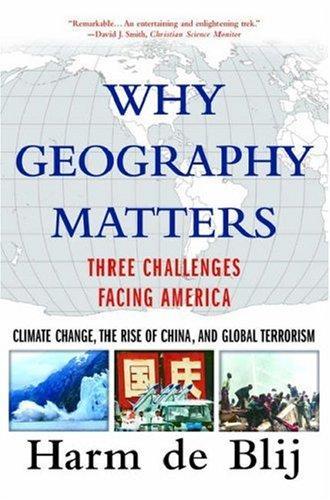
Why geography matters: three challenges facing America : climate change, the rise of China, and global terrorism
by
Harm J. De Blij
Published 15 Nov 2007
THE SPATIAL SPECIALIZERS The stirring story of geography's early emergence, its Greek and Roman expansion, its European diversification, and its global dissemination is a saga of pioneering observation, heroic exploration, inventive mapmaking, and ever-improving interpretation, discussed in fascinating detail by the discipline's leading historian (Martin, 2005). Long before European colonialism launched the first wave of what today we call globalization, indigenous geographers were drawing maps and interpreting landscapes from Korea to the Andes and from India to Morocco. Later, geographic philosophy got caught up in European nationalism, and various "schools" of geography—German, French, British—came to reflect, and even to support and justify, national political and strategic aspirations including expansionism, colonialism, and even Nazism.
…
African traditional societies hunted for food or for ceremonial reasons, but not for entertainment or amusement. The notion of killing for fun and fashion was introduced by Europeans. Hindu society and religious culture in India are more protective of the natural world than many others. The extermination and near extermination of many species of animals in India took place during (Muslim) Moghul and European colonial times. Malevolent destruction of the environment continues in various—indeed many—forms today, ranging from the deliberate spilling of oil and setting of oil fires by Iraqis during the 1991 conflict over Kuwait, to the mercury poisoning of Amazonian streams by Brazilian gold miners. For the first time in human history, however, the combined impacts of humanity's destructive A FUTURE GEOGRAPHY OF HUMAN POPULATION 103 and exploitative actions are threatening the entire Earth's biodiversity.
…
Three of these four states will determine the course of events, and it is China's historic durability and Britain's unification of India that have brought us to this momentous prospect. RED STAR RISING: CHINA'S GEOPOLITICAL GAUNTLET Napoleon, who knew a thing or two about empires and imperialism, is supposed to have remarked that China was a giant asleep, and that whoever woke it up would regret doing so. In the two centuries that followed, European colonial powers shook China's lethargic rulers, Japanese armies jolted the Chinese heartland, and Soviet ideologues got in bed with their Maoist counterparts. But China outlasted the colonialists, ousted the Japanese, and outdid their Stalinist advisors' communist fervor, all without entering the global stage.

The Future Is Asian
by
Parag Khanna
Published 5 Feb 2019
Asia for Asians More than two millennia ago, Asia’s disparate civilizations had already established commercial ties and engaged in conflict from the Mediterranean and Caspian seas to the Indus valley. By the fifteenth century, Asia was a diplomatically, economically, and culturally connected realm stretching from Anatolia to China. European colonialism, however, fractured Asia, reducing it to a collection of adjacent territories too poor and subservient to Western powers to congeal meaningfully. The Cold War further splintered Asia into competitive spheres of influence. Over time, Arabs and Turks came to see themselves as the “Middle East” and Chinese and Japanese identified as the “Far East.”
…
The Asianization of Asia is just the first step in the Asianization of the world. The Asianization of the World The legacy of the nineteenth-century Europeanization and twentieth-century Americanization of the world is that most nations have been shaped by the West in some significant way: European colonial borders and administration, US invasions or military assistance, a currency pegged to the US dollar, American software and social media, and so forth. Billions of people have acquired personal and psychological connections to the West. They have English or French as a first or second language, have relatives in America, Canada, or Great Britain, cheer for an English Premier League football team, never miss films starring their favorite Hollywood actor or actress, and follow the ins and outs of US presidential politics.
…
With his mantra “Asia is One,” the Japanese philosopher Okakura Tenshin became a leading voice of Pan-Asianism through his writings on the historical linkages not only among East Asians but also between Chinese and Muslims. Okukura’s Indian counterpart, the Nobel laureate Rabindranath Tagore, traveled from Japan and Korea to Persia, advocating a return to Asian ideals and traditions. Tagore’s host in China was the renowned intellectual Liang Qichao, who lamented how European colonialism had severed Asia’s historical interconnectivity and turned Asians against one another. The civil rights lawyer Mohandas K. Gandhi stepped up his campaigns of nonviolent disobedience against British rule in India throughout the 1920s, as did Aung San in Burma. By 1914, escalating tensions between European empires and their proxies exploded into war.
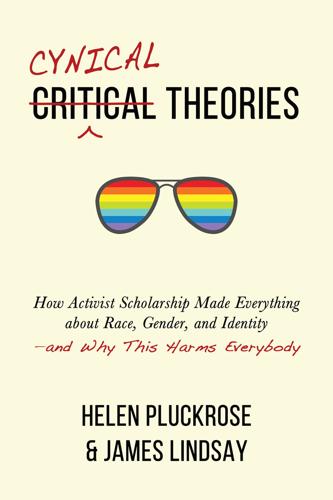
Cynical Theories: How Activist Scholarship Made Everything About Race, Gender, and Identity―and Why This Harms Everybody
by
Helen Pluckrose
and
James A. Lindsay
Published 14 Jul 2020
Though not all postcolonial scholars are postmodern in their outlook, the key figures certainly were and are, and this approach dominates postcolonial Social Justice scholarship and activism today.1 Postcolonialism and the related Theory arose in a specific historical context: the moral and political collapse of European colonialism, which had dominated global politics for more than five centuries. European colonialism began in earnest in around the fifteenth century and continued into the middle of the twentieth, and it proceeded upon the assumption that the European powers had a right to expand their territories and exert their political and cultural authority over other peoples and regions. Though this sort of empire-building attitude was a standard one typical to many, if not most, cultures before the twentieth century, European colonialism was equipped with sweeping explanations, stories, and justifications of itself—or metanarratives—that proclaimed and sought to legitimize this right in its own terms.
…
Though this sort of empire-building attitude was a standard one typical to many, if not most, cultures before the twentieth century, European colonialism was equipped with sweeping explanations, stories, and justifications of itself—or metanarratives—that proclaimed and sought to legitimize this right in its own terms. These included la mission civilisatrice (the civilizing mission) in French colonialism and Manifest Destiny in North America—concepts central to knowledge production and political organization from before the Enlightenment right through the Modern period.2 Then, with surprising rapidity, European colonialism faltered and collapsed in the middle of the twentieth century. Following World War II especially, decolonization efforts proceeded quickly on both the material and political levels, and, by the early 1960s, moral concerns about colonialism were prominent in both the academy and among the general public, especially on the radical left.
…
In late medieval England, references to “black” people often simply described the hair color of Europeans now regarded as “white.” While other factors may have contributed, race and racism as we understand them today probably arose as social constructions, made by Europeans to morally justify European colonialism and the Atlantic Slave Trade. European historians have tracked the rise of color-based prejudice over the early modern period, from roughly 1500 to 1800, and argued that prejudice on the grounds of religious difference gave way to racism—a belief in the superiority of some races over others—over the course of the seventeenth century.1 In order to justify the abuses of colonialism and the kidnapping, exploitation, and abuse of slaves, their victims had to be regarded as inferior or subhuman (even if they had converted to Christianity).

The Costs of Connection: How Data Is Colonizing Human Life and Appropriating It for Capitalism
by
Nick Couldry
and
Ulises A. Mejias
Published 19 Aug 2019
Interlude On Colonialism and the Decolonial Turn FOR READERS who wish to gain a basic understanding of what historical colonialism was, how it developed, and the postcolonial and decolonial responses that emerged in reaction to it, we recommend reading this interlude before proceeding. Others already familiar with these concepts may want to skip to chapter 3. Colonialism in Context Most allusions to colonialism refer to the European colonial period, that period in history from the sixteenth to the mid-twentieth centuries in which nation-states from Western Europe colonized large parts of the African, American, and Asian continents. An immediate question might arise as to why earlier regimes are not considered to be part of this historical period.
…
An immediate question might arise as to why earlier regimes are not considered to be part of this historical period. After all, there are plenty of examples of empires such as the Persian, Roman, Aztec, and Ottoman that engaged in the exploitation of nearby communities before the arrival of Columbus in America in 1492. But two characteristics made early-modern European colonialism unique. The first one is that it extended the scale of empire not just geographically but in having imposed a single universalizing narrative of values, beliefs, and politics, ushering in the beginning of modern globalization. Instead of talking about coexisting worlds, such as the Iberian world, the Aztec world, and so on, we can talk about a single emerging “modern” world system with one Eurocentric world history.1 The second characteristic, which flows from the first, is that colonialism sought to fundamentally change and reorganize the social and economic order of the societies it colonized, as opposed to satisfying itself with extracting tribute, as did earlier empires.2 Historical colonialism required first and foremost an external colonizer, a group of people who took land and resources that were not theirs.
…
In the eyes of the colonizer, the violent cost of the enterprise to “modernize” the “primitives” was inevitable yet necessary, even if this meant working individuals to death.4 Indeed, the most inhuman treatment was not seen as unethical because it was not believed to be inflicted on full human beings;5 violence was merely a feature of the economic mode of production. European colonialism was not a period characterized by the same mode of production from beginning to end (in which “mode of production” is a historically specific arrangement of how things are produced, distributed, and consumed, further discussed in chapter 3). Instead, colonialism involved a period of transition from a tributary mode of production (beginning with the Iberian conquest of the Americas) to something that by the “end” of colonialism looked very different: a modern capitalist mode of production.
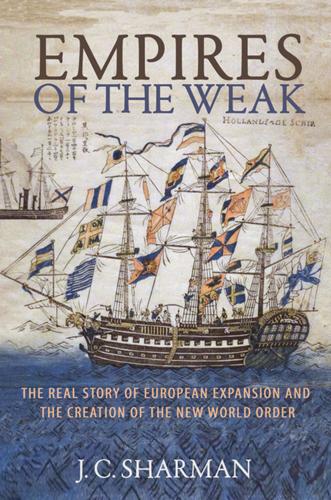
Empires of the Weak: The Real Story of European Expansion and the Creation of the New World Order
by
Jason Sharman
Published 5 Feb 2019
Any effort to understand a topic as huge as the creation and workings of the early modern global international order requires the insights of different disciplines. The Shape of the Argument A recent book observes that “in all the debate, few scholars have actually tested [the] claim that the military revolution underlay European colonialism. To what extent did Europe’s military innovations between 1450 and 1700 actually provide Europeans an edge in warfare?”1 The evidence I present in Chapters 1–3 shows that the military revolution thesis simply does not fit with the evidence from either Spanish conquests in the New World, or Portuguese, Dutch, and English engagements in Asia and Africa.
…
Individuals who go into combat believing they are immune to bullets are disproportionately likely to be killed or wounded, and groups in which this belief is widespread are disproportionately likely to be defeated. The lack of an elimination effect cannot be attributed to all parties operating with the same beliefs, as there were a variety of armed groups engaged that did not believe in bulletproofing. These ranged from European colonial armies to Communist forces disdainful of “reactionary” and “bourgeois” traditional beliefs, post-independence Western interventions, mercenary forces, and conventionally trained African armies. Sometimes these conventional forces massacred opponents who believed in bulletproofing, but at other times they lost.
…
Pulling back to look at the logic that underlies the military revolution thesis, the idea that international security competition ruthlessly and efficiently winnows institutional forms to promote a convergence on the best-adapted and most military effective solutions, either through rulers’ rational decision making, or through Darwinian elimination via conquest, is a poor fit with the rise of European colonial empires. Losing in the End: Decolonization and Insurgency from 1945 Can we explain European expansion without explaining European contraction also? Outside of the settler countries of the Americas and Oceania, European dominance fell even more suddenly than it had been established. By most measures, the European empires reached their greatest territorial extent in the inter-war years.
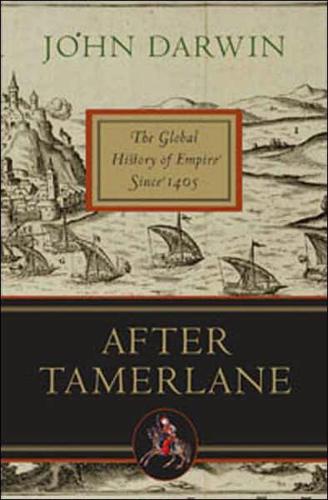
After Tamerlane: The Global History of Empire Since 1405
by
John Darwin
Published 5 Feb 2008
This intellectual imperialism derived in part from the ease with which European rule had been established, and the completeness of the native collapse. But it was also founded upon a set of social and cultural assumptions famously expressed by John Locke. It was the Amerindians’ failure to develop a system of property that Europeans could recognize, so Locke argued, that justified the Europeans’ colonial land grab.53 But although Locke evidently regarded the Ottoman Empire as a hateful tyranny, and hoped for a revolt by the Christians it had conquered, he displayed no similar assurance that Europe had any title to the conquest and occupation of Africa and Asia – even if it had the means. In this, Locke, who was exceptionally widely read in the travel and geographical literature of his day,54 was probably reflecting the respectful tone of the most influential contemporary writing on the Ottoman, Safavid, Mughal and Chinese empires.
…
Since around 1700, Dutch-speaking farmers (Boers) had moved up from the Cape, slowly imposing their power on the African peoples they met. In the late 1830s they surged forward in a series of ‘treks’ to occupy the northern half of modern South Africa, the plains of the ‘highveld’. After 1870 this localized brand of European colonialism was suddenly energized by new mineral wealth – first diamonds, then gold. To the British government, overlords of the Cape since 1815, it was the perfect chance to steer a backward region away from its cycle of costly frontier wars. They wanted South Africa to be like Canada: a federal dominion, economically progressive, ‘British’ in outlook, and loyal to the empire.
…
The European great powers had squabbled irritably over the share-out of territory and influence in North Africa and the Middle East. The size and scale of the American economy raised awkward questions over howfar American interests could be accommodated in a global economy centred on London and partitioned spatially between the European colonial powers. The frantic pace at which international trade and investment had been growing seemed to be easing off. Social unrest in Europe’s industrial economies threatened to clip the wings of the great-power governments and to rein in their global ambitions and strategies. But, before the influence of any of these changes could be felt internationally, world politics were transformed by a volcanic explosion, beginning in Europe but rapidly spreading to engulf every important state across the breadth of Eurasia.
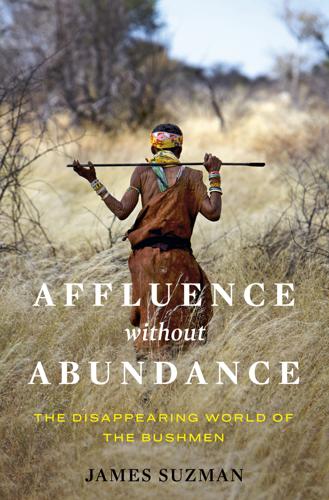
Affluence Without Abundance: The Disappearing World of the Bushmen
by
James Suzman
Published 10 Jul 2017
The only clear impact of these migrations on these populations was the adoption of cattle and sheep herding by some groups that by the fifteenth century were concentrated in the better-watered lands around what are now the vineyards and fruit farms of South Africa’s Western Cape. It was only when European colonialism began to reshape southern Africa that the independence and autonomy of Khoisan in the vast Kalahari Basin would eventually be challenged. 3 A Beachside Brawl The most startling thing about Cape Cross, on Namibia’s storm-battered Atlantic coast, is the smell. It lingers heavy in the saline air, reaches deep into your sinuses, and then creeps down the back of your throat.
…
And he would also not have realized that they managed to do this by not having to work very hard at all, and so had as much free time as only the most indolent of the nobles back in Portugal. Da Gama’s voyage presaged an era of unimaginable change for Khoisan across southern Africa. For some this process began the moment the first Portuguese sails pierced the Atlantic horizon off the Cape of Good Hope. For others it was marked by the progressive expansion of European colonialism northward from the Cape. For others still, like the Nyae Nyae Ju/’hoansi, it would be heralded by the arrival of the Marshall family’s convoy in 1951. By the 1850s only those Bushmen who lived north of the Cape Colony’s (modern South Africa’s) borders, in the vast Kalahari Basin, still maintained their independence in any meaningful way.
…
Markers in the genes of other Bushman groups living closer to farming settlements, like the G/wikhoe of the central Kalahari or the Hai//om of northwestern Namibia, show much more recent and extensive evidence of gene flow with Bantu from places like Bosutswe. In the end, the challenge of finding enough water for cattle in the Kalahari, like so many obstacles that stalled the advance of agriculture and commerce, was cracked by technology. By midway through the nineteenth century, the pressures of an ever-expanding European colonial presence across southern Africa had already forced some pastoralist peoples to try their luck herding along some of the Kalahari omiramba and in areas like Ghanzi, where a limestone ridge cut through the sand overburden, creating a series of easily accessible natural wells. But as abundant as the grazing was, there was seldom enough water in the dry seasons to make permanent settlement in much of the Kalahari a serious option.
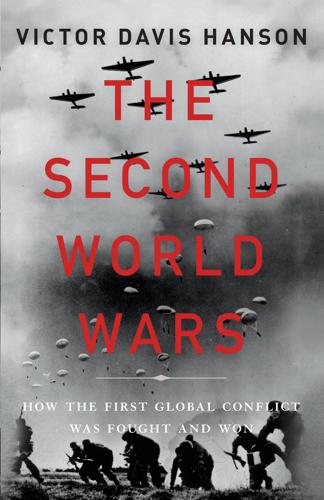
The Second World Wars: How the First Global Conflict Was Fought and Won
by
Victor Davis Hanson
Published 16 Oct 2017
At the beginning of the war a prescient Admiral Raeder lamented that his far-too-small surface fleet could do little against the British navy except “die with honor.” At a later point Hitler assumed that eventually the Japanese navy and its martial audacity could tie down both the European colonials and the United States in a Pacific slugfest. The fear of Soviet communism, or, after 1940, the allure of rich orphaned European colonies in the Pacific, or the resentment of serial British and American bullying—any or all would ensure Japan’s eagerness to fight alongside Germany. Yet fighting a common enemy separately was not quite the same as fighting it in synchronized and complementary fashion.
…
Anthony Eden quotes a pathetic diary entry of Neville Chamberlain weirdly blaming the Austrian Anschluss on Eden, who had resigned as foreign secretary, for supposedly alienating Mussolini—in a manner that his successor, the appeasing Lord Halifax, would never have: “It is tragic to think that very possibly this [the Anschluss] might have been prevented if I had had Halifax at the Foreign Office instead of Anthony at the time I wrote my letter to Mussolini.”27 Aside from the failure to recognize that past victory is a quickly wasting asset, some in Britain, France, and the United States privately felt that Germany had some legitimate grievances about the loss of territory from World War I. Japan—a member of the Allied councils in the aftermath of World War I—perhaps also had reasonable claims. Even by Western colonial reckoning, the Japanese, more so than distant European colonial powers, deserved the greater sphere of influence among their Asian brethren. Japan chafed under European condescension. So it quietly continued its efforts to establish a first-rate navy and trained superb naval aviators on the assumption that it would expand a new Pacific sphere of influence that would be protected by a fleet of aircraft carriers.
…
Perhaps most important, the fleet commander knew that many in the reactionary Japanese admiralty would consider Pearl Harbor a success by virtue of the destruction of the prestigious American battleship fleet.7 In the seven months following Pearl Harbor, the Japanese fleet ran wild, easily erasing the old European colonial and American spheres of influence. Naval superiority meant virtually unopposed landings at the Philippines, Thailand, Malaysia, the Dutch East Indies, Wake Island, New Britain, the Gilbert Islands, Guam, and Hong Kong. The Japanese are often scolded by historians for becoming infected with the “Victory Disease” early in the war.
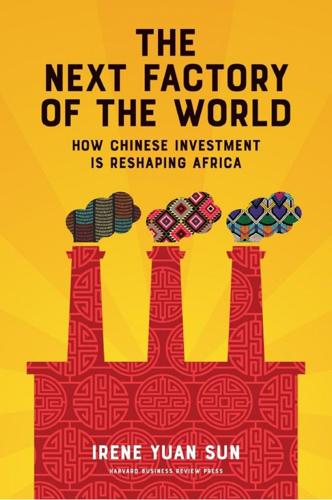
The Next Factory of the World: How Chinese Investment Is Reshaping Africa
by
Irene Yuan Sun
Published 16 Oct 2017
The idea that education was the key to my kids’ future seemed empty. That felt sacrilegious at the time, but I sensed that my teaching reinforced rather than expanded the ways in which Africa relates to the world. Receiving wisdom from foreigners who supposedly know better: it’s an old trope, dating back at least to European colonial ideology in Africa, and it has never worked. What else would it take for African countries to pull off the transformation I had seen China make in my short lifetime? Strangely, it was on a blind date that I began to encounter a new reality. A Chinese man from whom I regularly bought vegetables insisted that I come over for dinner one weekend to meet his “good friend.”
…
They take root in a place, thrive for a while, and then fade away. From British textile factories in the nineteenth century to Detroit auto plants and Japanese TV makers in the twentieth, factories come, then factories go. In Africa in the 1960s and 1970s, factories were coming to life. In the heady years following independence from European colonialism for vast swaths of the continent, both foreign investors and national governments were optimistic about the prospects for large-scale manufacturing in Africa. Shortly after Nigeria’s independence from Great Britain, in 1960, foreign investment helped create the first textile mill in the country.
…
*In fact, historians would point out that the Tungs’ arrival in the mid twentieth century was actually the third wave of Chinese immigration to Africa. The first wave came in the form of prisoners brought by the Dutch via Southeast Asia in the seventeenth century. The second wave consisted of Chinese contract laborers who came to the continent during the height of European colonialism, in the late nineteenth and early twentieth centuries. For example, in 1904, the British government brought 64,000 Chinese indentured laborers to work in South African gold mines. *Name changed to protect privacy.
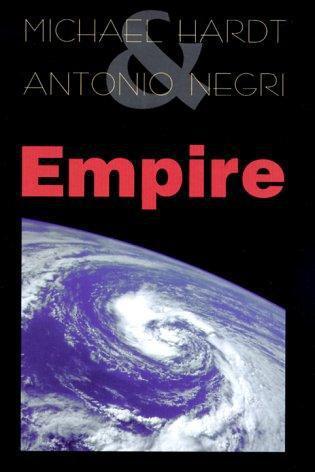
Empire
by
Michael Hardt
and
Antonio Negri
Published 9 Mar 2000
The sovereignty ofthe nation-state was the cornerstone ofthe imperialisms that European powers constructed throughout the modern era. By ‘‘Em- pire,’’ however, we understand something altogether different from ‘‘imperialism.’’ The boundaries defined by the modern system of nation-states were fundamental to European colonialism and eco- nomic expansion: the territorial boundaries ofthe nation delimited the center ofpower from which rule was exerted over external foreign territories through a system of channels and barriers that alternately facilitated and obstructed the flows of production and circulation. Imperialism was really an extension ofthe sovereignty ofthe European nation-states beyond their own boundaries.
…
Part ofthe S O V E R E I G N T Y O F T H E N A T I O N - S T A T E 107 ‘‘modernizing’’ effects of the nation in subordinated countries has been the unification ofdiverse populations, breaking down reli- gious, ethnic, cultural, and linguistic barriers. The unification of countries such as Indonesia, China, and Brazil, for example, is an ongoing process that involves overcoming innumerable such barriers—and in many cases this national unification was prepared by the European colonial power. In cases ofdiasporic populations, too, the nation seems at times to be the only concept available under which to imagine the community ofthe subaltern group—as, for example, the Aztlań is imagined as the geographical homeland of‘‘la Raza,’’ the spiritual Latino nation in North America.
…
For example, upon arriving in India and finding no historiography they could use, British administrators had to write their own ‘‘Indian history’’ to sustain and further the interests of colonial rule. The British had to historicize the Indian past in order to have access to it and put it to work. This British creation ofan Indian history, however, like the formation of the colonial state, could be achieved only by imposing European colonial logics and models on Indian reality.24 India’s past was thus annexed so as to become merely a portion of British history—or rather, British scholars and administrators created an Indian history and exported it to India. This historiography supported the Raj and in turn made the past inaccessible to Indians as history.
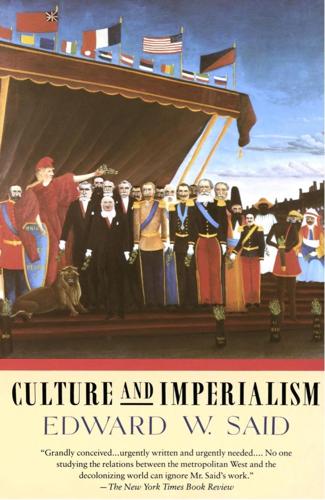
Culture and Imperialism
by
Edward W. Said
Published 29 May 1994
But come to an end it would, if only because—like all human effort, like speech itself—it would have its moment, then it would have to pass. Since Conrad dates imperialism, shows its contingency, records its illusions and tremendous violence and waste (as in Nostromo), he permits his later readers to imagine something other than an Africa carved up into dozens of European colonies, even if, for his own part, he had little notion of what that Africa might be. To return to the first line out of Conrad, the discourse of resurgent empire proves that the nineteenth-century imperial encounter continues today to draw lines and defend barriers. Strangely, it persists also in the enormously complex and quietly interesting interchange between former colonial partners, say between Britain and India, or between France and the Francophone countries of Africa.
…
The entire legacy of what can metaphorically be called the tension between Kipling, who finally saw only the politics of empire, and Fanon, who tried to look past the nationalist assertions succeeding classical imperialism, has been disastrous. Let us allow that, given the discrepancy between European colonial power and that of the colonized societies, there was a kind of historical necessity by which colonial pressure created anti-colonial resistance. What concerns me is the way in which, generations later, the conflict continues in an impoverished and for that reason all the more dangerous form, thanks to an uncritical alignment between intellectuals and institutions of power which reproduces the pattern of an earlier imperialist history.
…
We are fortunate that several young scholars have developed the study of imperial power sufficiently so as to let us observe the aesthetic component involved in the survey and administration of Egypt and India. I have in mind, for example, Timothy Mitchell’s Colonising Egypt,76 where it is shown that the practice of building model villages, discovering the intimacy of harem life, and instituting new modes of military behavior in an ostensibly Ottoman, but really European, colony not only reconfirmed European power, but also produced the added pleasure of surveying and ruling the place. That bond between power and pleasure in imperial rule is marvelously demonstrated by Leila Kinney and Zeynep Çelik in their study of belly-dancing, where the quasi-ethnographic displays afforded by European expositions in fact came to be associated with consumerist leisure based in Europe.77 Two related offshoots of this are excavated in T.
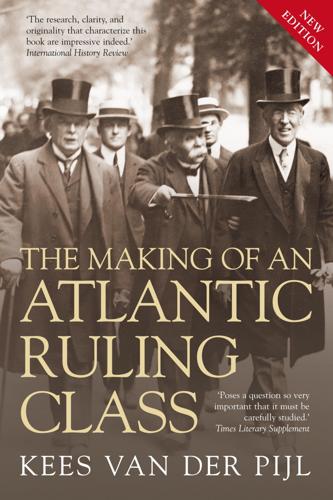
The Making of an Atlantic Ruling Class
by
Kees Van der Pijl
Published 2 Jun 2014
Generously allowing both the United States and Britain their share in the Anglo-Saxon heritage, Streit proposed that the model of federation would be provided by the American Constitution, while Britain would contribute the tradition of representative government as such.7 The area which could be united on this basis in the more modest version of 1941 was reduced to the actual Anglo-Saxon world: North America, Britain, the white Dominions, Ireland, and the white population of South Africa.8 Like the ‘Grand Area’ projected by Council on Foreign Relations planners as necessary for the survival of liberal capitalism, Streit’s federal union was conceived basically in sphere-of-interest terms, although its potential for expansion was crucial to the scheme’s logic. Western Europe, Scandinavia, Latin America, but also in the long run, the European colonies — might gradually be incorporated until a truly world government was achieved. If, as Streit proclaimed, ‘despite all that the Nazis, the Stalinists and their stooges say, the Union policy (was) the opposite of imperialism’, the difference would have eluded most non-Anglo-Saxons.9 Reciprocating Streit’s vision in this respect, George Catlin may be singled out as the second major ideologue working for Atlantic unity on the eve of US entry into the war.
…
Point Four, so named for being the fourth of a number of items announced by Truman in his Inaugural Address of January 1949, was an assistance programme to underdeveloped countries. It was meant, according to its author, ‘to enable [the underdeveloped countres] to help themselves to become growing, strong allies of freedom’. For this role, they needed both to emancipate themselves from European colonialism and to stop short of socialism; Point Four accordingly had ‘nothing in common with either the old imperialism of the last century or the new imperialism of the Communists’.70 When Point Four was enacted in 1950, its budget was ten and a half million dollars less than the minimum requested and, even with subsequent accretions, it remained extremely cheap compared to comprehensive assistance plans like Marshall Aid.
…
‘Strategically, it was a defensive age’, Calleo observes, ‘even if the tactics were often aggressive’.12 With respect to the periphery, the anti-communism and anti-colonialism which in the Marshall Plan had been depicted as a transcendent Free World strategy, now degenerated into rivalry as short-term considerations became the sole point of reference. At least until 1956, European colonial powers actively sought to reinforce and recapture imperial positions, encouraged by the defensive posture of the United States. In some cases, as in the Suez affair, the susceptibilities of Middle Eastern and African countries were taken into account by US policy-makers for tactical reasons.
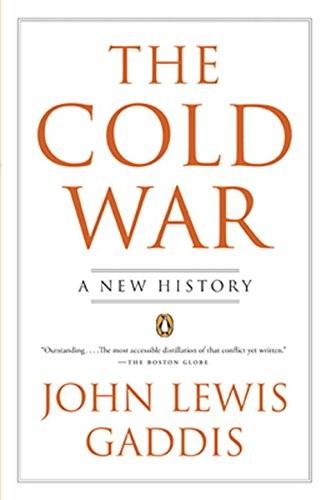
The Cold War: A New History
by
John Lewis Gaddis
Published 1 Jan 2005
The weak were discovering opportunities to confront the strong. The nature of power was changing because the fear of power, as traditionally conceived, was diminishing. Mallets were indeed beginning to turn into flamingos, and balls into hedgehogs. I. THE FIRST signs that this was happening came with the decline and eventual demise of European colonialism, a process that began before the Cold War started, paralleled its early development, and only gradually affected its subsequent evolution. The European domination of the world dated from the 15th century, when Portugal and Spain first perfected the means of transporting men, weapons, and—without realizing it—germs across the oceans that had hitherto kept human societies apart.3 By the end of the 19th century, there was little territory left that was not controlled by Europeans or their descendants.
…
—but advancing revolution in what was coming to be called the “third world” was less important to Stalin in the immediate postwar years than recovering from the war and attempting to spread his influence as widely as possible in Europe. The United States, for its part, was not about to defend European colonialism either. Its own history had begun in rebellion against an empire, and although the Americans had taken colonies of their own at the end of the 19th century—the Philippines being the most significant—they had never been comfortable with colonialism, preferring instead to exert their influence abroad by economic and cultural means.
…
The old dictator knew little about the “third world,” however, and undertook no sustained effort to project Soviet influence into it. Khrushchev was more energetic: unlike Stalin, he loved to travel abroad and rarely missed a chance to do so. Among his favored destinations were the newly independent countries that were emerging from European colonial rule. “I’m not an adventurer,” Khrushchev explained, “but we must aid national liberation movements.”6 The Americans feared precisely this. Colonialism, they believed, was an antiquated institution that could only discredit the West in the regions where it had existed, while weakening its practitioners in Europe, where they needed to be strong.
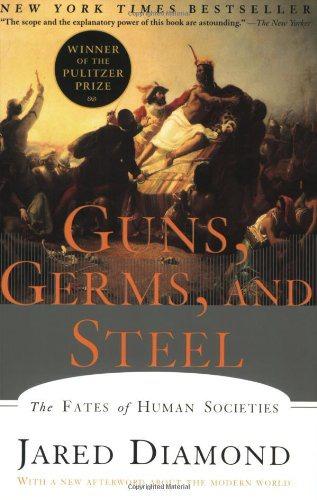
Guns, germs, and steel: the fates of human societies
by
Jared M. Diamond
Published 15 Jul 2005
A L T H O U G H Y ALI'S QUESTION concerned only the contrasting life- styles of New Guineans and of European whites, it can be extended to a larger set of contrasts within the modern world. Peoples of Eurasian ori- gin, especially those still living in Europe and eastern Asia, plus those transplanted to North America, dominate the modern world in wealth and power. Other peoples, including most Africans, have thrown off European colonial domination but remain far behind in wealth and power. Still other peoples, such as the aboriginal inhabitants of Australia, the Americas, and southernmost Africa, are no longer even masters of their own lands but have been decimated, subjugated, and in some cases even exterminated by European colonialists.
…
Such exchanges in the Andes, Alps, and Himalayas not only increased population densities in those areas, by providing people at all altitudes with a more balanced diet, but also promoted regional economic and political integration. For all these reasons, the population of traditional New Guinea never exceeded 1,000,000 until European colonial governments brought West- ern medicine and the end of intertribal warfare. Of the approximately nine world centers of agricultural origins that we discussed in Chapter 5, New Guinea remained the one with by far the smallest population. With a mere 1,000,000 people, New Guinea could not develop the technology, writing, and political systems that arose among populations of tens of millions in China, the Fertile Crescent, the Andes, and Mesoamerica.
…
But the highlands, already occupied by dense populations of New Guineans, were not reached by Europeans until the 1930s. By then, the Australian and Dutch colonial governments were no longer willing to open up lands for white settlement by killing native people in large numbers or driving them off their lands, as had happened during earlier centuries of European colonialism. The remaining obstacle to European would-be settlers was that Euro- pean crops, livestock, and subsistence methods do poorly everywhere in the New Guinea environment and climate. While introduced tropical American crops such as squash, corn, and tomatoes are now grown in small quantities, and tea and coffee plantations have been established in the highlands of Papua New Guinea, staple European crops, like wheat, barley, and peas, have never taken hold.
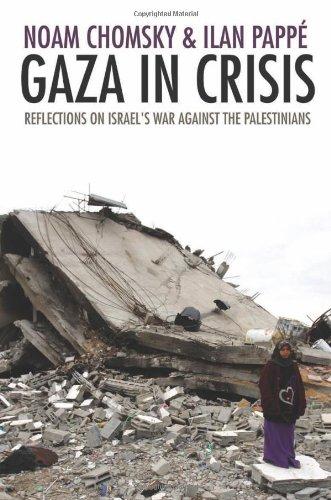
Gaza in Crisis: Reflections on Israel's War Against the Palestinians
by
Ilan Pappé
,
Noam Chomsky
and
Frank Barat
Published 9 Nov 2010
Within the American evangelical scene, the voices of the “Merrills” weakened and were almost silenced by the vociferous sermons of the “Blackstones,” whose numbers increased enormously in the twentieth century. Their positive view of Zionism was reinforced by the growing tension between the missionaries and the Islamic religious establishments in the eastern Mediterranean. The missionaries, who once preached for liberation from European colonialism, hoped that American Christianity and not the Islamic tradition would become the leading light of the new nations, as indeed would become the case. In many ways, the second and third generations of missionaries became the first “Orientalists”—in the full negative meaning of the term. But even before Edward Said attracted our attention to this group, another Edward was warning, forty years before Said’s Orientalism appeared, of the dubious impact of the Orientalist missionary.
…
In his important work on the subject, Stephen Sizer has revealed how Christian Zionists have constructed a historical narrative that describes the Muslim attitude to Christianity throughout the ages as a kind of a genocidal campaign, first against the Jews and then against the Christians.12 Hence, what were once hailed as moments of human triumph in the Middle East—the Islamic renaissance of the Middle Ages, the golden era of the Ottomans, the emergence of Arab independence and the end of European colonialism—were recast as the satanic, anti-Christian acts of heathens. In the new historical view, the United States became St. George, Israel his shield and spear, and Islam their dragon. THE KING-CRANE LEGACY In the heart of Ohio lies the town of Oberlin. At the beginning of the nineteenth century it was still a typical Midwest American village, surrounded by infinite cornfields, away from the ivy towers of the East and West coasts.
…
The American president wished to exploit the results of the war by disintegrating the big colonial empires in the name of the right to independence and self-determination. In the Wilsonian vision, the Arab peoples, too, were entitled to the national liberation denied them during four hundred years of Ottoman rule. Wilson suspected that Britain and France wanted to replace Turkish imperialism with European colonialism. He therefore asked the Peace Conference in Versailles to send a commission of inquiry to the Arab world to ascertain the peoples’ aspirations there. The survey included Palestine, and King was his favored candidate to head the mission.13 King’s partner for the mission came from a very different place.
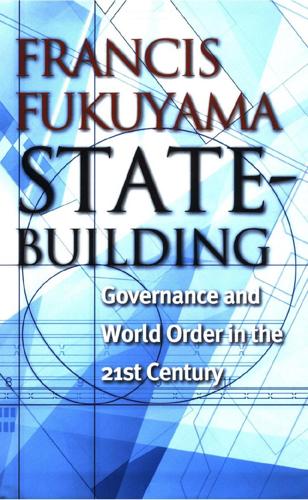
State-Building: Governance and World Order in the 21st Century
by
Francis Fukuyama
Published 7 Apr 2004
The task of modern 1 2 state-building politics has been to tame the power of the state, to direct its activities toward ends regarded as legitimate by the people it serves, and to regularize the exercise of power under a rule of law. Modern states in this sense are anything but universal. They did not exist at all in large parts of the world like sub-Saharan Africa before European colonialism. After World War II decolonization led to a flurry of state-building all over the developing world, which was successful in countries like India and China but which occurred in name only in many other parts of Africa, Asia, and the Middle East. The last European empire to collapse—that of the former Soviet Union—initiated much the same process, with varying and often equally troubled results.
…
If nation-building means the creation of self-sustaining state capacity that can survive once foreign advice and support are withdrawn, then the number of historical cases where this has happened successfully drops to a depressingly small handful. The most notable examples come from the history of European colonialism. The British above all succeeded in creating durable institutions in a number of their colonies, such as the Indian civil service and the legal systems in Singapore and Hong Kong that are widely credited as laying the basis for postindependence democracy in the first case and economic growth in the latter two.

White City, Black City: Architecture and War in Tel Aviv and Jaffa
by
Sharon Rotbard
Published 1 Jan 2005
Bauhaus Style structures were presented as strictly Central European in comparison with the eclectic, Orientalist architecture of the 1920s, which commentators like Nitza Szmuk depicted as Eastern European.25 This, despite the fact that Orientalism by definition is an occidental term routed in the West European colonial heritage, that nowhere else in the world was there an example of Eastern European colonial architecture to refer to, and that it was indisputable that the central figures in the eclectic oriental architecture of the 1920s (Alexander Brewald, for example) were of German origin. Eastern European elements in Tel Aviv’s architecture of the 1920s were introduced in a similar way to Oriental influences: as something of a parody.
…
It demonstrates another attempt to present Tel Aviv’s history as separate from the wider historiography of the region while exposing popular Zionist virtues of manual work and autarky. This point has always been crucial for the apologetics of the Zionist Project and its position vis-à-vis Europe: Zionism distinguished itself from European colonialism by claiming its intention had always been to colonize the territory, not the population.60 And yet, despite the pronounced virtues of Hebrew labour, it is very likely that beside those students, the construction sites in the 1930s were packed with real labourers, in most cases Arabs or Yemenite Jews.61 One might cross-check this with the claim of Haim Hefer, who played a similar role to that of Karavan but in the field of writing.
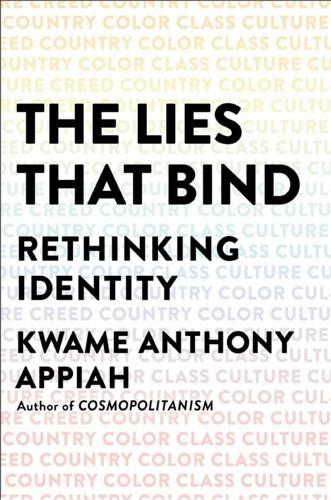
The Lies That Bind: Rethinking Identity
by
Kwame Anthony Appiah
Published 27 Aug 2018
He was talking, as he said, about “over half the world”; elsewhere in the address, he spoke not just of “the millions of black men in Africa, America and the Islands of the Sea,” but of “the brown and yellow myriads elsewhere.”20 So Du Bois had very much in mind the ways in which race figured in the European colonial schemes that were reshaping Africa and Asia as well as its role in the American social injustices he had experienced at first hand. Indeed, European colonial conquest in Africa was still very much under way when he spoke to the delegates in London. In West Africa, the final British conquest of Kumasi, where I grew up, occurred just a few weeks after Du Bois’s London conference; and the Sokoto caliphate, in northern Nigeria, was conquered only in 1903.
…
The continued denial by many Japanese of the scale, or even the occurrence, of these atrocities mirrors the forms of denial of those who deny the mass murder of Armenians in Turkey or Jews in the Nazi genocide. Less violent, but as racially grounded, are the anti-African attitudes reported by black visitors to China, who hear themselves described as hēi guǐ (black ghosts). Among the hundreds of thousands of Chinese now working in Africa, racial condescension of a sort familiar from the European colonial period is common (and, alas, anti-Chinese attacks have occurred in many African countries in recent years).27 While these East Asian attitudes must have roots in earlier traditions of the sort of xenophobia that is found historically around the planet, they are no longer independent of racial attitudes that came from the traditions of Europe and North America.
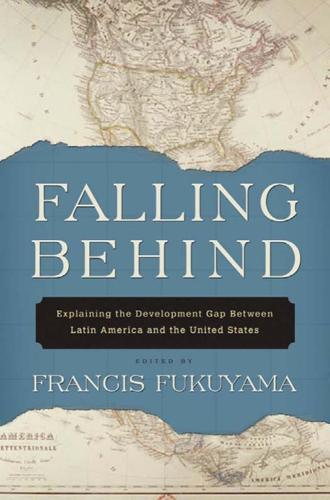
Falling Behind: Explaining the Development Gap Between Latin America and the United States
by
Francis Fukuyama
Published 1 Jan 2006
As a final and telling piece of evidence, information about nominal wages and prices in central Mexico from Charles Gibson suggests that, in the century after the conquest, while the indigenous population collapsed, real wages were at best unchanged and probably fell.8 This fact is in startling contradiction to the Malthusian situation which supposedly characterized the premodern economy of Europe. Of course, during this period, the United States and Canada were also European colonies and, indeed, at the time of the declared independence of the United States in 1776, differences in prosperity among Mexico, Brazil, and the United States were minimal.9 The relative gap 162 Institutional Factors in Latin America’s Development 10,000,000 9,000,000 8,000,000 7,000,000 6,000,000 5,000,000 4,000,000 3,000,000 2,000,000 1,000,000 1520 1575 1625 1710 1778 1820 1840 1860 1880 1921 1950 1973 1988 1992 Mayan Population Total Guatemalan Population figure 7.1 Historical Estimates of Population in Guatemala.
…
The explanation proposed by Acemoglu et al. for why figure 7.3 holds for former colonies is that Europeans created good institutions in some colonies, particularly places such as the United States, Canada, and Australia (what Alfred Crosby calls the neo-Europes), and bad ones in others (for example, Latin America and sub-Saharan Africa).27 These institutions had a strong tendency to persist over time. Why did different institutions develop in different European colonies? The The Latin American Equilibrium 173 simplest answer is that the economic institutions in various colonies were shaped by Europeans to benefit themselves. Moreover, because conditions and endowments differed between colonies, Europeans consciously created different economic institutions.
…
There are several important empirical regularities connecting these initial conditions to current outcomes. Of particular importance are initial population density and the disease environment faced by Europeans. Figure 7.7 shows that there is a strong inverse relationship between population density in 1500 and current expropriation risk for former European colonies. Figure 7.8 shows that colonies where the disease environment was worse for Europeans also have worse economic institutions today. The data here are the mortality rates of European soldiers, sailors, and bishops stationed in the colonial world.28 Why did Europeans introduce better institutions in relatively unsettled and unhealthy areas than in densely settled and healthy areas?
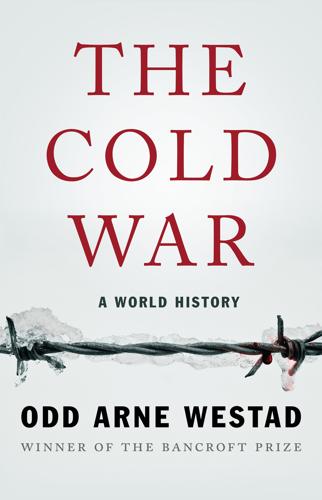
The Cold War: A World History
by
Odd Arne Westad
Published 4 Sep 2017
For much of the war, the Soviets, the British, and the Americans were allies. But the defeat of their common enemies—Germany, Italy, and Japan—meant that the conflict between Communism, led by the Soviet Union, and its opponents, led by the United States, became the new central focus of world politics. The dramatic loss in status and influence of the two main European colonial empires, first the French and then the British, led to the United States becoming by far the world’s most powerful country. The outcome of World War II assured American global hegemony, with the Soviet Union and the Communist parties it had inspired as the only major challenge remaining. While it is important to understand the role of World War II in creating the Cold War international system, it is equally important not to reduce that great war only to a prelude for what was to come.
…
Its own war with China had been dragging on for four years. Japanese leaders now decided to land a devastating blow to European interests in Asia and secure access for itself to crucial southeast Asian raw materials. In December 1941, the Japanese attack on the main US naval base in Hawaii, Pearl Harbor, and on European colonies in Asia meant that American forces joined in the fighting in the east and soon also in Europe. Even though the US Navy’s top strategists had been deeply concerned with the Japanese naval buildup in the Pacific, nobody had expected an all-out attack on US facilities. What followed was even more shocking.
…
The US government had promised the Philippines its independence before the war and used the promise to mobilize against the Japanese occupation of the islands. In Iran and Egypt nationalists protested against imposed British control. For many people in these countries, Nazism and Japan were not the main problems. The problem was European colonialism in all its forms. Working with Berlin and Tokyo could even help hasten the day of independence and national self-determination. The Atlantic Charter, issued by Roosevelt and Churchill in August 1941, seemed to some non-European nationalists too reminiscent of Woodrow Wilson’s World War I idealism, even if it inspired others.
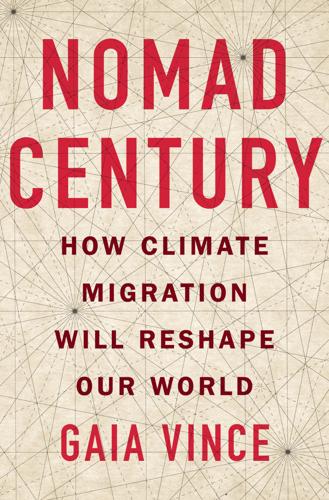
Nomad Century: How Climate Migration Will Reshape Our World
by
Gaia Vince
Published 22 Aug 2022
Kung peoples; lack of water resources; low levels of migration to; migration from as relatively low; poor infrastructure and city planning; population rise in; rainfall due to Indian irrigation; remittances from urban migrants; and restoring of planet’s habitability; Transaqua Project of water diversion; transatlantic slave trade; transport infrastructure in; urbanization in African Union agoraphobia AI and drone technology aid, development/foreign air-conditioning/cooling airships or blimps Alaska algae Aliens Act (UK, 1905) Alps, European Amazon region Americas Anatolia Anchorage, Alaska Anderson, Benedict animals/wildlife; global dispersal of; impact of fires on; impact of ice loss on see also livestock farming Antarctica; ice sheet Anthropocene era; four horsemen of Aravena, Alejandro Archaeology architecture/buildings: Aravena’s ‘partial houses’; energy-efficiency retrofits; floating infrastructure; heat- and light-responsive materials; low-carbon concrete; prefabricated and modular housing; in successful migrant cities; wooden skyscrapers; zero-carbon new-builds Arctic region; first ice-free summer expected; opening up of due to climate change Argentina Arrhenius, Svante Asia: cities vulnerable to climate change; drought-hit areas; extreme La Niña events; extreme precipitation in monsoon regions; Ganges and Indus river basins; and heat ‘survivability threshold’; huge populations of South Asia; lack of water resources; rivers fed by glaciers; small hydropower installations; urbanization Aswan High Dam asylum-seekers: Australia’s dismal record on; Britain’s proud history on; dominant hostile narratives about; drownings in English Channel; limbo situation due to delayed claim-processing; misinformation about see also refugees Athens Australia: Black Summer (2019–20); energy-supply economy; impact of climate emergency; indigenous inhabitants; low population density in; migration to; and mineral extraction in Greenland; renewable power in; treatment of asylum-seekers; White Australia Policy aviation Aztecs Babylon bacteria, in food production bamboo Bangkok Bangladesh; ‘Bangla’ communities in London; Burmese Rohingya refugees; impact of climate emergency; migration across Indian border; population density in; relocation strategies; training for rural migrants Bantu people Barber, Benjamin Barcelona Beckett, Samuel Belarus Belgium Bergamo, Italy Bhutan Bijlmermeer (outside Amsterdam) biodiversity loss/ecosystem collapse; coral reefs as probably doomed; crash in insect and bird populations; depletion of fish stocks; due to agriculture; due to farming; four horsemen of the Anthropocene; and human behaviour; Key Biodiversity Areas; links with climate change; and marine heatwaves; and overuse of fertilizers; restoring of; species extinction; and urban adaptation strategies see also environmental sustainability bioenergy with carbon capture and storage (BECCS) biotech industry birds black soldier flies black-footed ferrets BoKlok (IKEA spinoff) Bolivia Borneo Bosch, Carl Boston, Massachusetts Boulder, Colorado Brazil Brexit Brin, Sergey British Columbia Brown, Pat bureaucracy Burke, Marshall Burma business/private sector Cairo California; forest fires in Cambodia Cameroon Canaan Canada; and charter cities model; Climate Migrants and Refugee Project; economic benefits from global heating; expansion of agriculture in; first carbon-neutral building in; forest fires in; indigenous populations; infrastructure built on permafrost; regional relocation schemes Capa, Robert, capitalism Caplan, Bryan Caprera (Italian warship) carbon capture/storage; BECCS; ‘biochar’ use in soil; carbon capture and storage (CCS); direct capture from the air; by forests; in grasslands; Key Biodiversity Areas; in oceans; by peatlands; by phytoplankton; vegetation as vital carbon pricing/taxing carbon/carbon dioxide: amount in atmosphere now; Arrhenius’ work on; and biomatter decay in soil, ‘carbon quantitative easing’; continued emitting of; decarbonizing measures; effect on crop growth; emissions cut by building from wood; emissions from farming; emissions from human energy systems; emissions from urban buildings; geoengineering to remove; during last ice age; Miocene Era levels; new materials made from; ocean release of; released by wildfires; tree-planting as offsetting method; in tropical rainforests Carcassonne, France Card, David Cardiff Castro, Fidel Çatalhöyük, ancient city of Central African Republic Central America Chad ‘char people’ charcoal (‘biochar’) Chicago children: childcare costs; deaths of while seeking safety; ‘invisible’/living on the margins; left behind by migrant parents; and move to cities; numbers at extreme risk; in refugee camps; and sense of ‘belonging’ Chile China: adaptation for heavy rainfall events; Belt and Road Initiative; cities vulnerable to climate change; demography; desertification of farmland in north; economic domination of far east; emigrants and knowledge-flow; emissions as still rising in; extreme La Niña events; ‘green wall’ tree-planting projects; and heat ‘survivability threshold’; Hong Kong–Shenzhen–Guangzhou mega-region; hukou system; integrated soil-system management; internal migration in; migrant workers in Russia’s east; and mineral extraction; net zero commitment; small hydropower installations; South-to-North Water Diversion Project; ‘special economic zones’; Uyghur Muslim communities in; and water scarcity; ‘zhuan‘ documents Chinatowns Churchill (town in Manitoba) Churchill, Winston cities: adapting to net-zero carbon economy; city state model; coastal cities; as concentrated nodes of connectivity; ‘consumption cities’ in Africa; control of migration by; deadly urban heat; demand for cooling; devolving power to communities; in eighteenth/nineteenth-century Europe; entrenched assets; and extreme flood risk; flood defences; as focal points for trade networks; food production in; genetic impacts of; in high altitude locations; large megacities; merging into mega-regions; as particularly vulnerable to climate change; phased abandonment of; population densities in; private gardens in; relocation of; relocation strategies within; sprawling shanty towns in; strategies against impact of heat; zero-carbon new-builds see also migrant cities; migration, urban citizenship; patriotism of welcomed migrants; ‘UN/international passport’ idea Clemens, Michael climate change, historic: Cretaceous–Palaeogene meteorite impact event; in late-bronze-age Near East; and migration; in Miocene Era; and transition to farming climate change/emergency; 3–5° C as most likely scenario; as affecting all of Earth; cities as particularly vulnerable to; destruction of dam infrastructure; enlisting of military/security institutions against; every tenth of a degree matters; extreme weather events; global climate niches moving north; global water cycle as speeding up; greenhouse gas emissions as still growing; impact of cities; impact on lives as usually gradual; inertia of the Earth’s climate system; lethality by 2100; links with biodiversity loss; near-universal acceptance of as human made; net zero pledges; Paris Agreement (2015); path to 3–4° C-hotter world; situation as not hopeless; slow global response to; as threat multiplier; warming as mostly absorbed by oceans see also biodiversity loss/ecosystem collapse; drought; fires; floods; heat climate models: future emissions scenarios; heating predictions; impact of 4° C-hotter world; IPCC ‘Representative Concentration Pathways’ (RCPs); optimum climate for human productivity; threshold for mass migrations coastal areas: coastal cities; migration from; retreating coastlines; seawater desalination plants cochineal scale insect Colombia colonialism, European Colorado Columbia Concretene construction industry copper coral reefs Cornwall Costa Rica cotton Covid-19 pandemic; cooperation during cross-laminated timber (CLT) Crusaders Cruz, Abel Cuba cultural institutions/practices: cultural losses over time; diversity as improving innovation; migration of; in well-planned migrant cities cyclones Cyprus Czech workers in Germany Dar es Salaam Death Valley Delhi Democratic Republic of Congo demographic changes/information: and decline of nationality viewed in racial terms; depopulation crisis; elderly populations in global north; GenZ; global climate niches moving north; global population patterns; global population rise; ‘household formation’; huge variation in global fertility rates; migrants as percentage of global population; population fall due to urban migration; population-peak projection; post-war baby boom; and transition to farming Denmark Denver, Colorado desert conditions Dhaka Dharavi (slum in Mumbai) diet and nutrition: edible seeds of sea grasses; genetically engineered microbes; global disparities in access to nutrition; and Haber–Bosch process; insects as source of protein and fats; loss of nutrition due to heat stress of crops; move to plant-based diet; vitamin D sources; zinc and protein deficiencies dinosaurs direct air capture (DAC) disease; waterborne Doha Domesday Book (1086) Driscolls (Californian berry grower) drone technology drought; as affecting the most people; in Amazon region; impact on farming; in late-bronze-age Near East; and rivers fed by glaciers; and sulphate cooling Dubai Duluth, Minnesota Dunbar, Robin economies; Chinese domination of far east; economic growth; forced move towards a circular economy; GDP per capita measure; Global Compact for Migration; global productivity losses due to heat; immigrant-founded companies; and influx of low-skilled migrant workers; migration as benefitting; mining opportunities exposed by ice retreat; and nation state model; need to open world’s borders; new mineral deposits in northern latitudes; northern nations benefitting from global heating; ‘special economic zone’ concept; taxing of robots see also employment/labour markets; green economy; political and socioeconomic systems; trade and commerce education: availability to migrants; as key to growth; and remittances from urban migrants; systems improved by migration Egypt; Ancient electricity: current clean generation as not sufficient; decarbonizing of production; electric vehicles; grid systems; hydroelectric plants; and net zero world; renewable production Elwartowski, Chad employment/labour markets: amnesties of ‘illegal’ migrants; and arguments against migration; and automation; controlled by city authorities; and global labour mobility; and the green economy; impact of heat on jobs; indentured positions; and influx of low-skilled migrant workers; jobs in growth industries; jobs restoring diversity; jobs that natives don’t want to do; mechanization/automation slowed down by migrant workers; migrants bring greater diversity to; need for Nansen-style scheme; occupational upgrading of locals due to immigration; refugees barred from working; role of business in migrant integration; rural workers moving to cities; skilled migrants; support/access for migrants; Trump’s work visa restrictions; ‘urban visas’ in USA; workforce shortages in global north energy systems: access to in global south; air-conditioning/cooling demand; and carbon capture; ‘closed-loop’ radiator construction; decarbonizing of; and economic growth; geothermal production; global energy use as increasing; new dam-construction boom in south; nuclear power; oceans as source; poor grid infrastructure in global south; power outages; power sharing as not equitable; reducing growth in demand; replacement of inefficient heating/cooling systems; transmission/transport see also electricity English Channel Environmental Protection Agency, US environmental sustainability: decarbonizing measures; decoupling of GDP from carbon emissions; and economic growth; heat- and light-responsive materials; low-energy plastic recycling methods; and migrant cities; need for open mind in planning for; phytoplankton as hugely important; replacement of inefficient heating/cooling systems; zero-carbon new-builds see also biodiversity loss/ecosystem collapse environmentalists; negative growth advocates; opponents of geoengineering equatorial belt Erdoğan, Recep Tayyip Eritrea Estonia Ethiopia Europe: 2003 heatwave; depopulation crisis; eighteenth/nineteenth-century shanty towns; impact of climate emergency; medieval barriers to movement; Mediterranean climate moving north; migrant indentured labour in; migration of women working in domestic service; small hydropower installations; three mass migrations in Stone and Bronze Ages European Union: free movement within; fund for aid to Africa; Green New Deal; no ‘asylum crisis’ within; nuclear power in; open-border policy for refugees from Ukraine; as popular migrant destination; seeks quota system for refugees; as successful example of regional union; war against migrants Fairbourne (Welsh village) farming: in abandoned areas in south; in Africa; ancient transition to; bad harvests as more frequent; barns/storehouses; benefits of warming in Nordic nations; biodiversity loss due to; cereal crops; closing the yield gap; early nineteenth century expansion of; ever-decreasing, sub-divided plots of land; expanded growing seasons; fertile land exposed by ice retreat; genetic research to produce new crops; genetically modified crop varieties; global disparities in food production; Green Revolution; greenhouse gas emissions from; in Greenland; Haber–Bosch process; heat-tolerant and drought-resistant crops; high-yielding wheat and rice variants; impact of climate emergency; indoor industrial systems; modern improvement in yields; nutrient and drip-irrigation systems; pre-twentieth-century methods; relying on new forms of; Russian dominance; salt-tolerant rice; smallholder; and solar geoengineering; solar-powered closed-cycle; urban vertical farms; use of silicates; and water scarcity; wildflower strips in fields see also livestock farming Fiji Fires fish populations: artisanal fishers; boost of in Arctic region; and decommissioned offshore oilrigs; fish farming; future pricing of fish products; as under huge pressure; insects as farmed-fish feed; land-based fish-farming Five Points slum, New York floods; flash floods; low-lying islands and atolls; sea walls/coastal defences; three main causes; in urban areas; water-management infrastructure Florida food: algal mats; carbon-pricing of meat; impact of soaring global prices; insect farming; kelp forest plantations; lab-grown meats; meat substitutes; for migrant city dwellers; move to plant-based diet; need for bigger sources of in global north; need to cut waste; photosynthesizing marine plants and algae; plant-based dairy products; reduced supplies due to temperature rises; refrigerated storage; replication of Maillard chemical reaction; sourced from the oceans see also diet and nutrition; farming; livestock farming food security Ford, Henry forests: advance north of in Nordic nations; deforestation; impact of climate emergency; ‘negative emissions activity’; replanting of; Siberian taiga forest fossil fuels; carbon capture and storage (CCS); as embedded in human systems France Fraser, Sean freedom of movement French Polynesia Friedman, Patri Gargano, Gabriele gas industry Gates, Bill gender: heat related inequalities; physical/sexual danger for female migrants; women in domestic service in Europe; women rejoining workforce genetic modification genetics, population Genghis Khan geoengineering; artificial sill proposals; cloud-brightening idea; as controversial/taboo; and ideal temperature question; possible unwanted effects; proposals for dealing with ice melt; to reduce atmospheric carbon dioxide; solar radiation reduction tools; sulphate cooling concept; thin-film technology; tools to reflect the sun’s heat away from Earth geology GERD dam, Ethiopia Germany; Syrian refugee resettlement in Ghana Glasgow climate meeting (2021) Global Parliament of Mayors global south; benefit of solar cooling idea; capital costs of deploying new renewables; cutting of food waste in; future repopulation of abandoned regions; global income gap as rising; little suitable landmass for climate-driven migration; migration to higher elevations with water; need for improved infrastructure; need for sustainable economic growth; new dam-construction boom in; new domestic sources of energy; population rise in; remittances from urban migrants; resource extraction by rich countries; and vested interests in the rich world see also Africa; Asia; Latin America and entries for individual nations golf courses Gore, Al, An Inconvenient Truth (2006) Gothenburg Grand Inga hydroelectric dam project (Congo River) Granville, Earl grasslands Great Barrier Reef Great Lakes region, North America Greece; Ancient green economy; and building of fair societies; Green New Deals; migration as vital to; multiple benefits of see also environmental sustainability; renewable power production; restoring our planet’s habitability greenhouse gas emissions; charging land owners for; in cities; emitters trying to avoid/delay decarbonization; from farming; national emissions-reductions pledges; underreporting of; unfair global impact of see also carbon/carbon dioxide Greenland; ice sheet; potato farming in Gulf states Haber, Fritz Hangzhou Hawaii health: climate change as threat multiplier; dementia care; diseases of poor sanitation; healthcare in successful migrant cities; heat related inequalities; lethality of extreme heat; and life in cities; mental illness and migration; migration as benefitting social care systems; pathogens in frozen tundras; rural living as single largest killer today; and smoke pollution heat: 35°C wet bulb threshold crossed; climate model predictions; cloud and water vapour feedbacks; combined with humidity; and demand for cooling; extreme hotspots; global productivity/work hour losses; impact of 4° C-hotter world; impact on farming/food supplies; infrastructure problems due to; lethality by 2100; lethality of extreme temperatures; Paris pledge of below 2°C; solar radiation reduction tools; subtropical climate spreading into higher latitudes; temperatures above 50°C; threshold for mass migrations; ‘threshold of survivability’; urban adaptation strategies; urban heat island effect; ‘wet bulb’ temperature calculations Held, David Hernando, Antonia HIV Höfn, southeastern Iceland Holocene epoch Honduras Hong Kong horses, domestication of housing: Aravena’s ‘partial houses’; controlled by city authorities; equitable access to; floating infrastructure; in flood-affected areas; and heat related inequalities; and migrants; planning and zoning laws; policies to prevent segregation; prefabricated and modular; twentieth-century social programmes see also slum dwellers Hudson Bay Huguenot immigrants human rights, universal Hungary hunter-gatherers hurricanes hydrogen ice age, last ice loss; as accelerating at record rate; in Antarctica; in Arctic region; artificial reflective snow idea; artificial sill proposals; and flash floods; loss of glaciers; permafrost thaw; reflective fleece blankets idea; retreat of ice sheets; rising of land due to glaciers melting; tipping points for ice-free world Iceland ICON, construction company identity: accentuation of small differences; and ancient transition to farming; borders as ‘othering’ structures; language as tool of self-construction; mistrust of outsiders; pan-species; sense of ‘belonging’; social norms of ‘tribe’; social psychology; stories crafting group identity see also national identity immigration policies: bilateral or regional arrangements; deliberately prejudicial policy; development of since later nineteenth-century; and harnessing migrant potential; immigrant inclusion programmes; immigration lottery schemes; move needed from control to managing,; points-based entrance systems; poorly designed; quota systems; responses to terrorist incidents; restrictions as for people not stuff; restrictive border legislation; Spain’s successful policy Impossible Foods India; crop irrigation in; emigrants and knowledge-flow; emissions as still rising in; falling fertility rate in; Ganges Valley; and heat ‘survivability threshold’; impact of climate emergency; internal migration in; lime-washing of roofs in; Mahatma Gandhi National Rural Employment Guarantee Act (MGNREGA); National River Linking Project; population density in; young population in indigenous communities Indo-European language Indonesia industrial revolution inequality and poverty: and access to reliable energy; benefit of solar cooling to south; climate change as threat multiplier; climate migration and social justice; and demand for cooling; despair and anger of ‘left behind’ natives; and environmental destruction; and European colonialism; as failure of social/economic policy; and geoengineered cooling; global disparities in access to nutrition; and global food prices; global income gap as rising; heat related; and impact of flooding; increased by ancient transition to farming; as matter of geographical chance; migration as best route out of; and modern farming; and national pride; need for redistributive policies; the poor trapped in vulnerable cities; and post-war institutions; rural living as single largest killer today; slow global response to crisis of; superrich and private jets; tribalism as not inevitable; and vested interests in the rich world insects; collapsing populations; farming of; as human food source insulation insurance, availability of Intergovernmental Panel on Climate Change (IPCC) International Energy Agency (IEA) International Fund for Agricultural Development (IFAD) International Labour Organization Iquique (Chile) Ireland iron, powdered Islam islands, small/low-lying Israel Italy Ithaca, city of (New York) Jakarta Japan Jobs, Steve Johnson, Boris Jordan kelp Kenya Khan, Sadiq Khoisan Bushmen Kimmel, Mara King, Sir David Kiribati knowledge and skills: better environment for in rich countries; ‘brain drain’ issue; channelled through migrant networks; diversity as improving innovation; global knowledge transfer; Global Skill Partnerships model; impact of European colonialism; migrants returning to origin countries; and Nansen-style schemes; need for rapid transference of; and points-based entrance systems Kodiak Island, Alaska krill Kuba Kingdom, West Africa !
…
Kung peoples; lack of water resources; low levels of migration to; migration from as relatively low; poor infrastructure and city planning; population rise in; rainfall due to Indian irrigation; remittances from urban migrants; and restoring of planet’s habitability; Transaqua Project of water diversion; transatlantic slave trade; transport infrastructure in; urbanization in African Union agoraphobia AI and drone technology aid, development/foreign air-conditioning/cooling airships or blimps Alaska algae Aliens Act (UK, 1905) Alps, European Amazon region Americas Anatolia Anchorage, Alaska Anderson, Benedict animals/wildlife; global dispersal of; impact of fires on; impact of ice loss on see also livestock farming Antarctica; ice sheet Anthropocene era; four horsemen of Aravena, Alejandro Archaeology architecture/buildings: Aravena’s ‘partial houses’; energy-efficiency retrofits; floating infrastructure; heat- and light-responsive materials; low-carbon concrete; prefabricated and modular housing; in successful migrant cities; wooden skyscrapers; zero-carbon new-builds Arctic region; first ice-free summer expected; opening up of due to climate change Argentina Arrhenius, Svante Asia: cities vulnerable to climate change; drought-hit areas; extreme La Niña events; extreme precipitation in monsoon regions; Ganges and Indus river basins; and heat ‘survivability threshold’; huge populations of South Asia; lack of water resources; rivers fed by glaciers; small hydropower installations; urbanization Aswan High Dam asylum-seekers: Australia’s dismal record on; Britain’s proud history on; dominant hostile narratives about; drownings in English Channel; limbo situation due to delayed claim-processing; misinformation about see also refugees Athens Australia: Black Summer (2019–20); energy-supply economy; impact of climate emergency; indigenous inhabitants; low population density in; migration to; and mineral extraction in Greenland; renewable power in; treatment of asylum-seekers; White Australia Policy aviation Aztecs Babylon bacteria, in food production bamboo Bangkok Bangladesh; ‘Bangla’ communities in London; Burmese Rohingya refugees; impact of climate emergency; migration across Indian border; population density in; relocation strategies; training for rural migrants Bantu people Barber, Benjamin Barcelona Beckett, Samuel Belarus Belgium Bergamo, Italy Bhutan Bijlmermeer (outside Amsterdam) biodiversity loss/ecosystem collapse; coral reefs as probably doomed; crash in insect and bird populations; depletion of fish stocks; due to agriculture; due to farming; four horsemen of the Anthropocene; and human behaviour; Key Biodiversity Areas; links with climate change; and marine heatwaves; and overuse of fertilizers; restoring of; species extinction; and urban adaptation strategies see also environmental sustainability bioenergy with carbon capture and storage (BECCS) biotech industry birds black soldier flies black-footed ferrets BoKlok (IKEA spinoff) Bolivia Borneo Bosch, Carl Boston, Massachusetts Boulder, Colorado Brazil Brexit Brin, Sergey British Columbia Brown, Pat bureaucracy Burke, Marshall Burma business/private sector Cairo California; forest fires in Cambodia Cameroon Canaan Canada; and charter cities model; Climate Migrants and Refugee Project; economic benefits from global heating; expansion of agriculture in; first carbon-neutral building in; forest fires in; indigenous populations; infrastructure built on permafrost; regional relocation schemes Capa, Robert, capitalism Caplan, Bryan Caprera (Italian warship) carbon capture/storage; BECCS; ‘biochar’ use in soil; carbon capture and storage (CCS); direct capture from the air; by forests; in grasslands; Key Biodiversity Areas; in oceans; by peatlands; by phytoplankton; vegetation as vital carbon pricing/taxing carbon/carbon dioxide: amount in atmosphere now; Arrhenius’ work on; and biomatter decay in soil, ‘carbon quantitative easing’; continued emitting of; decarbonizing measures; effect on crop growth; emissions cut by building from wood; emissions from farming; emissions from human energy systems; emissions from urban buildings; geoengineering to remove; during last ice age; Miocene Era levels; new materials made from; ocean release of; released by wildfires; tree-planting as offsetting method; in tropical rainforests Carcassonne, France Card, David Cardiff Castro, Fidel Çatalhöyük, ancient city of Central African Republic Central America Chad ‘char people’ charcoal (‘biochar’) Chicago children: childcare costs; deaths of while seeking safety; ‘invisible’/living on the margins; left behind by migrant parents; and move to cities; numbers at extreme risk; in refugee camps; and sense of ‘belonging’ Chile China: adaptation for heavy rainfall events; Belt and Road Initiative; cities vulnerable to climate change; demography; desertification of farmland in north; economic domination of far east; emigrants and knowledge-flow; emissions as still rising in; extreme La Niña events; ‘green wall’ tree-planting projects; and heat ‘survivability threshold’; Hong Kong–Shenzhen–Guangzhou mega-region; hukou system; integrated soil-system management; internal migration in; migrant workers in Russia’s east; and mineral extraction; net zero commitment; small hydropower installations; South-to-North Water Diversion Project; ‘special economic zones’; Uyghur Muslim communities in; and water scarcity; ‘zhuan‘ documents Chinatowns Churchill (town in Manitoba) Churchill, Winston cities: adapting to net-zero carbon economy; city state model; coastal cities; as concentrated nodes of connectivity; ‘consumption cities’ in Africa; control of migration by; deadly urban heat; demand for cooling; devolving power to communities; in eighteenth/nineteenth-century Europe; entrenched assets; and extreme flood risk; flood defences; as focal points for trade networks; food production in; genetic impacts of; in high altitude locations; large megacities; merging into mega-regions; as particularly vulnerable to climate change; phased abandonment of; population densities in; private gardens in; relocation of; relocation strategies within; sprawling shanty towns in; strategies against impact of heat; zero-carbon new-builds see also migrant cities; migration, urban citizenship; patriotism of welcomed migrants; ‘UN/international passport’ idea Clemens, Michael climate change, historic: Cretaceous–Palaeogene meteorite impact event; in late-bronze-age Near East; and migration; in Miocene Era; and transition to farming climate change/emergency; 3–5° C as most likely scenario; as affecting all of Earth; cities as particularly vulnerable to; destruction of dam infrastructure; enlisting of military/security institutions against; every tenth of a degree matters; extreme weather events; global climate niches moving north; global water cycle as speeding up; greenhouse gas emissions as still growing; impact of cities; impact on lives as usually gradual; inertia of the Earth’s climate system; lethality by 2100; links with biodiversity loss; near-universal acceptance of as human made; net zero pledges; Paris Agreement (2015); path to 3–4° C-hotter world; situation as not hopeless; slow global response to; as threat multiplier; warming as mostly absorbed by oceans see also biodiversity loss/ecosystem collapse; drought; fires; floods; heat climate models: future emissions scenarios; heating predictions; impact of 4° C-hotter world; IPCC ‘Representative Concentration Pathways’ (RCPs); optimum climate for human productivity; threshold for mass migrations coastal areas: coastal cities; migration from; retreating coastlines; seawater desalination plants cochineal scale insect Colombia colonialism, European Colorado Columbia Concretene construction industry copper coral reefs Cornwall Costa Rica cotton Covid-19 pandemic; cooperation during cross-laminated timber (CLT) Crusaders Cruz, Abel Cuba cultural institutions/practices: cultural losses over time; diversity as improving innovation; migration of; in well-planned migrant cities cyclones Cyprus Czech workers in Germany Dar es Salaam Death Valley Delhi Democratic Republic of Congo demographic changes/information: and decline of nationality viewed in racial terms; depopulation crisis; elderly populations in global north; GenZ; global climate niches moving north; global population patterns; global population rise; ‘household formation’; huge variation in global fertility rates; migrants as percentage of global population; population fall due to urban migration; population-peak projection; post-war baby boom; and transition to farming Denmark Denver, Colorado desert conditions Dhaka Dharavi (slum in Mumbai) diet and nutrition: edible seeds of sea grasses; genetically engineered microbes; global disparities in access to nutrition; and Haber–Bosch process; insects as source of protein and fats; loss of nutrition due to heat stress of crops; move to plant-based diet; vitamin D sources; zinc and protein deficiencies dinosaurs direct air capture (DAC) disease; waterborne Doha Domesday Book (1086) Driscolls (Californian berry grower) drone technology drought; as affecting the most people; in Amazon region; impact on farming; in late-bronze-age Near East; and rivers fed by glaciers; and sulphate cooling Dubai Duluth, Minnesota Dunbar, Robin economies; Chinese domination of far east; economic growth; forced move towards a circular economy; GDP per capita measure; Global Compact for Migration; global productivity losses due to heat; immigrant-founded companies; and influx of low-skilled migrant workers; migration as benefitting; mining opportunities exposed by ice retreat; and nation state model; need to open world’s borders; new mineral deposits in northern latitudes; northern nations benefitting from global heating; ‘special economic zone’ concept; taxing of robots see also employment/labour markets; green economy; political and socioeconomic systems; trade and commerce education: availability to migrants; as key to growth; and remittances from urban migrants; systems improved by migration Egypt; Ancient electricity: current clean generation as not sufficient; decarbonizing of production; electric vehicles; grid systems; hydroelectric plants; and net zero world; renewable production Elwartowski, Chad employment/labour markets: amnesties of ‘illegal’ migrants; and arguments against migration; and automation; controlled by city authorities; and global labour mobility; and the green economy; impact of heat on jobs; indentured positions; and influx of low-skilled migrant workers; jobs in growth industries; jobs restoring diversity; jobs that natives don’t want to do; mechanization/automation slowed down by migrant workers; migrants bring greater diversity to; need for Nansen-style scheme; occupational upgrading of locals due to immigration; refugees barred from working; role of business in migrant integration; rural workers moving to cities; skilled migrants; support/access for migrants; Trump’s work visa restrictions; ‘urban visas’ in USA; workforce shortages in global north energy systems: access to in global south; air-conditioning/cooling demand; and carbon capture; ‘closed-loop’ radiator construction; decarbonizing of; and economic growth; geothermal production; global energy use as increasing; new dam-construction boom in south; nuclear power; oceans as source; poor grid infrastructure in global south; power outages; power sharing as not equitable; reducing growth in demand; replacement of inefficient heating/cooling systems; transmission/transport see also electricity English Channel Environmental Protection Agency, US environmental sustainability: decarbonizing measures; decoupling of GDP from carbon emissions; and economic growth; heat- and light-responsive materials; low-energy plastic recycling methods; and migrant cities; need for open mind in planning for; phytoplankton as hugely important; replacement of inefficient heating/cooling systems; zero-carbon new-builds see also biodiversity loss/ecosystem collapse environmentalists; negative growth advocates; opponents of geoengineering equatorial belt Erdoğan, Recep Tayyip Eritrea Estonia Ethiopia Europe: 2003 heatwave; depopulation crisis; eighteenth/nineteenth-century shanty towns; impact of climate emergency; medieval barriers to movement; Mediterranean climate moving north; migrant indentured labour in; migration of women working in domestic service; small hydropower installations; three mass migrations in Stone and Bronze Ages European Union: free movement within; fund for aid to Africa; Green New Deal; no ‘asylum crisis’ within; nuclear power in; open-border policy for refugees from Ukraine; as popular migrant destination; seeks quota system for refugees; as successful example of regional union; war against migrants Fairbourne (Welsh village) farming: in abandoned areas in south; in Africa; ancient transition to; bad harvests as more frequent; barns/storehouses; benefits of warming in Nordic nations; biodiversity loss due to; cereal crops; closing the yield gap; early nineteenth century expansion of; ever-decreasing, sub-divided plots of land; expanded growing seasons; fertile land exposed by ice retreat; genetic research to produce new crops; genetically modified crop varieties; global disparities in food production; Green Revolution; greenhouse gas emissions from; in Greenland; Haber–Bosch process; heat-tolerant and drought-resistant crops; high-yielding wheat and rice variants; impact of climate emergency; indoor industrial systems; modern improvement in yields; nutrient and drip-irrigation systems; pre-twentieth-century methods; relying on new forms of; Russian dominance; salt-tolerant rice; smallholder; and solar geoengineering; solar-powered closed-cycle; urban vertical farms; use of silicates; and water scarcity; wildflower strips in fields see also livestock farming Fiji Fires fish populations: artisanal fishers; boost of in Arctic region; and decommissioned offshore oilrigs; fish farming; future pricing of fish products; as under huge pressure; insects as farmed-fish feed; land-based fish-farming Five Points slum, New York floods; flash floods; low-lying islands and atolls; sea walls/coastal defences; three main causes; in urban areas; water-management infrastructure Florida food: algal mats; carbon-pricing of meat; impact of soaring global prices; insect farming; kelp forest plantations; lab-grown meats; meat substitutes; for migrant city dwellers; move to plant-based diet; need for bigger sources of in global north; need to cut waste; photosynthesizing marine plants and algae; plant-based dairy products; reduced supplies due to temperature rises; refrigerated storage; replication of Maillard chemical reaction; sourced from the oceans see also diet and nutrition; farming; livestock farming food security Ford, Henry forests: advance north of in Nordic nations; deforestation; impact of climate emergency; ‘negative emissions activity’; replanting of; Siberian taiga forest fossil fuels; carbon capture and storage (CCS); as embedded in human systems France Fraser, Sean freedom of movement French Polynesia Friedman, Patri Gargano, Gabriele gas industry Gates, Bill gender: heat related inequalities; physical/sexual danger for female migrants; women in domestic service in Europe; women rejoining workforce genetic modification genetics, population Genghis Khan geoengineering; artificial sill proposals; cloud-brightening idea; as controversial/taboo; and ideal temperature question; possible unwanted effects; proposals for dealing with ice melt; to reduce atmospheric carbon dioxide; solar radiation reduction tools; sulphate cooling concept; thin-film technology; tools to reflect the sun’s heat away from Earth geology GERD dam, Ethiopia Germany; Syrian refugee resettlement in Ghana Glasgow climate meeting (2021) Global Parliament of Mayors global south; benefit of solar cooling idea; capital costs of deploying new renewables; cutting of food waste in; future repopulation of abandoned regions; global income gap as rising; little suitable landmass for climate-driven migration; migration to higher elevations with water; need for improved infrastructure; need for sustainable economic growth; new dam-construction boom in; new domestic sources of energy; population rise in; remittances from urban migrants; resource extraction by rich countries; and vested interests in the rich world see also Africa; Asia; Latin America and entries for individual nations golf courses Gore, Al, An Inconvenient Truth (2006) Gothenburg Grand Inga hydroelectric dam project (Congo River) Granville, Earl grasslands Great Barrier Reef Great Lakes region, North America Greece; Ancient green economy; and building of fair societies; Green New Deals; migration as vital to; multiple benefits of see also environmental sustainability; renewable power production; restoring our planet’s habitability greenhouse gas emissions; charging land owners for; in cities; emitters trying to avoid/delay decarbonization; from farming; national emissions-reductions pledges; underreporting of; unfair global impact of see also carbon/carbon dioxide Greenland; ice sheet; potato farming in Gulf states Haber, Fritz Hangzhou Hawaii health: climate change as threat multiplier; dementia care; diseases of poor sanitation; healthcare in successful migrant cities; heat related inequalities; lethality of extreme heat; and life in cities; mental illness and migration; migration as benefitting social care systems; pathogens in frozen tundras; rural living as single largest killer today; and smoke pollution heat: 35°C wet bulb threshold crossed; climate model predictions; cloud and water vapour feedbacks; combined with humidity; and demand for cooling; extreme hotspots; global productivity/work hour losses; impact of 4° C-hotter world; impact on farming/food supplies; infrastructure problems due to; lethality by 2100; lethality of extreme temperatures; Paris pledge of below 2°C; solar radiation reduction tools; subtropical climate spreading into higher latitudes; temperatures above 50°C; threshold for mass migrations; ‘threshold of survivability’; urban adaptation strategies; urban heat island effect; ‘wet bulb’ temperature calculations Held, David Hernando, Antonia HIV Höfn, southeastern Iceland Holocene epoch Honduras Hong Kong horses, domestication of housing: Aravena’s ‘partial houses’; controlled by city authorities; equitable access to; floating infrastructure; in flood-affected areas; and heat related inequalities; and migrants; planning and zoning laws; policies to prevent segregation; prefabricated and modular; twentieth-century social programmes see also slum dwellers Hudson Bay Huguenot immigrants human rights, universal Hungary hunter-gatherers hurricanes hydrogen ice age, last ice loss; as accelerating at record rate; in Antarctica; in Arctic region; artificial reflective snow idea; artificial sill proposals; and flash floods; loss of glaciers; permafrost thaw; reflective fleece blankets idea; retreat of ice sheets; rising of land due to glaciers melting; tipping points for ice-free world Iceland ICON, construction company identity: accentuation of small differences; and ancient transition to farming; borders as ‘othering’ structures; language as tool of self-construction; mistrust of outsiders; pan-species; sense of ‘belonging’; social norms of ‘tribe’; social psychology; stories crafting group identity see also national identity immigration policies: bilateral or regional arrangements; deliberately prejudicial policy; development of since later nineteenth-century; and harnessing migrant potential; immigrant inclusion programmes; immigration lottery schemes; move needed from control to managing,; points-based entrance systems; poorly designed; quota systems; responses to terrorist incidents; restrictions as for people not stuff; restrictive border legislation; Spain’s successful policy Impossible Foods India; crop irrigation in; emigrants and knowledge-flow; emissions as still rising in; falling fertility rate in; Ganges Valley; and heat ‘survivability threshold’; impact of climate emergency; internal migration in; lime-washing of roofs in; Mahatma Gandhi National Rural Employment Guarantee Act (MGNREGA); National River Linking Project; population density in; young population in indigenous communities Indo-European language Indonesia industrial revolution inequality and poverty: and access to reliable energy; benefit of solar cooling to south; climate change as threat multiplier; climate migration and social justice; and demand for cooling; despair and anger of ‘left behind’ natives; and environmental destruction; and European colonialism; as failure of social/economic policy; and geoengineered cooling; global disparities in access to nutrition; and global food prices; global income gap as rising; heat related; and impact of flooding; increased by ancient transition to farming; as matter of geographical chance; migration as best route out of; and modern farming; and national pride; need for redistributive policies; the poor trapped in vulnerable cities; and post-war institutions; rural living as single largest killer today; slow global response to crisis of; superrich and private jets; tribalism as not inevitable; and vested interests in the rich world insects; collapsing populations; farming of; as human food source insulation insurance, availability of Intergovernmental Panel on Climate Change (IPCC) International Energy Agency (IEA) International Fund for Agricultural Development (IFAD) International Labour Organization Iquique (Chile) Ireland iron, powdered Islam islands, small/low-lying Israel Italy Ithaca, city of (New York) Jakarta Japan Jobs, Steve Johnson, Boris Jordan kelp Kenya Khan, Sadiq Khoisan Bushmen Kimmel, Mara King, Sir David Kiribati knowledge and skills: better environment for in rich countries; ‘brain drain’ issue; channelled through migrant networks; diversity as improving innovation; global knowledge transfer; Global Skill Partnerships model; impact of European colonialism; migrants returning to origin countries; and Nansen-style schemes; need for rapid transference of; and points-based entrance systems Kodiak Island, Alaska krill Kuba Kingdom, West Africa !Kung peoples Kutupalong refugee camp, Bangladesh Kyrgyzstan Lagos Lake Chad Lammy, David land ownership language/linguistics; language classes for new arrivals; and nation state Laos Las Vegas Latin America: Amazon region; first nation states in; fragile social systems in; impact of climate emergency; mega-El Niño (1997–8); migrants in Parla, Spain; rivers fed by glaciers; rural to urban migration League of Nations Leipzig liberalism Libya Lima livestock farming: by drone; feeding of animals; impact of drought; inhumane treatment of animals; insects as feed; land and water used for; meat and dairy subsidies; need for huge reduction in Ljubljana, Slovenia locust plagues London Macau Maillard chemical reaction maize production, global Malacca Straits Malaysia Maldives Mali Manchester Mangroves Marijuana marine life: fish populations; impact of global warming; starved of oxygen by algae marshes Mayan civilization Mayors Migration Council McCarthy, Kate McCay, Adam McConnell, Ed Medellín, Colombia media, prejudice against migrants Mediterranean Mekong River Melbourne, Pixel Building Merkel, Angela Mesopotamia Met Office, UK, methane Mexico Mexico City Miami Micronesians Middle East migrant cities: the Arctic as new region for; charter cities option; and circulation of community resources; ‘climate haven’ cities; creation of entirely new cities; as cultural factories; environmental sustainability; evidence of decline of tribalism in; expanding existing cities; in the new north; planning future cities; repurposing/adaptation of; successful urban development/planning in; as synergistic; training for rural migrants; water-management infrastructure migrants/immigrants: arrival in family groups; ‘Bangla’ communities in London; contribution to global GDP; creation of active markets by; distinction between refugees and; dominant hostile narratives of in West; ‘economic migrant’ term; evidence of decline in hostility towards; harnessing potential of; immigrant inclusion programmes; as indentured labour; internal migration; Boris Johnson’s language on; language classes for; levels of patriotism of; living in slums/shanty towns; mentoring and support for; as percentage of global population; racist and prejudicial tropes about; returning to origin countries; seasonal; situations of appalling abuse/danger; state-sponsored support needed for migration: and advantageous genetic modifications; barriers to today; as benefitting everyone; controlled by city authorities; as deeply interwoven with cooperation; and diversified genes/culture; evidence of decline of anti-immigrant feeling; free movement ends in twentieth century; and historic climate change; historical; human displacement at record levels; inherited routes and channels; and mental illness; as not reduced by aid; reluctance to move; and skin colour; of stuff/resources; as survival strategy used widely in nature; as valid and essential part of human nature; world’s major cities created by migration, arguments against/fears around: fears around crime and violence; and jobs; long evolutionary roots to prejudice; in the media; populist politicians; pressure on inadequate host services; prospect of radical change; resting on true/pure national identity idea; security/terrorism issues; and welfare systems migration, climate-driven: Covid cooperation as hopeful example; due to flooding; and geopolitical mindset; global agreement on pathways needed; hypothetical scenarios/models enabling; as inevitable; Kiribati’s ‘migration with dignity’ programme; mass movement already under way; move to higher elevations; national and regional relocation schemes; need for strong nation-states; need to plan practically now; numbers affected today; predicted future numbers; and Refugee Convention (1951); risk of domination by wealthy elites; as solution not problem; speed of movement of climate niches; water issues to be main driver migration, urban; access to health and education; community sponsorship models; family retention of farmland; and intensive infrastructure development; as most effective route out of poverty; population fall due to; role of business in migrant integration; from rural areas; successful management of; as unplanned and iterative; in the West (1850–1910); and workforce shortages in global north Miller, David mineral supples/extraction mining industry Mongla (Bangladesh) Mongolian steppes Morocco Mumbai, mussels Myanmar Nairobi Nansen, Fridtjof nation state: Anderson’s ‘imagined communities’; claims that country is ‘too full’; first created by revolutionaries; and genetic variation; and geopolitical mindset; and language; leases/purchases of territory by; model as often failing; nationality as arbitrary line drawn on map; need for reinvention of; as norm after First World War; and system of borders; translocation of existing nation states National Health Service (UK) national identity: and anti-immigrant feeling; and bureaucracy; creation of first nation states; ethnic and cultural pluralism as the norm; evidence of decline of tribalism; feelings of loss of/decline; and ideology of nationalism; lack of political meaning before end of eighteenth century; nation state as norm after First World War; need to change immigration narrative; patriotism of welcomed migrants; predicated on mythology of homogeneity; and supranational identity; transition to pan-species identity Nauru Neanderthals negative emissions technologies Netherlands; Delta Programme; Energiesprong house insulation Neukölln (Berlin) New Orleans New Story (nonprofit) New York City; ‘Big U’ seawall project; NYCID programme New Zealand; Managed Retreat and Climate Adaptation Act Newtok, Alaska Nicaragua Niger, West Africa Nigeria nitrogen Noem, Kristi nomadic pastoralism Nordic nations Normans North Korea Northern Ireland Northwest Passage Norway Notre Dame, University of, Global Adaptation Initiative nuclear power; fusion reactor technology Nusantara (Borneo) Nuuk (Greenland) Obayashi (Japanese firm) oceans/seas: acidification; as energy source in north; and enhanced weathering techniques; global warming absorbed by; impact of 4° C-hotter world; impact of carbon emissions; jellyfish explosions; long-distance migratory voyages; marine heatwaves; and migratory raiders; Miocene Era sea levels; North Atlantic currents; Northwest Passage; nutrient and oxygen circulation; ocean fertilization; release of carbon dioxide; rise in sea levels; sea grasses; sourcing food from; toxic algae blooms oil industry OmniTrax (US freight company) Ottoman Turks Overjeria, Bolivian village Paine, Thomas Pakistan Palaeo-Eskimos, Canadian palaeontology Palestine Panama Papua New Guinea Paris climate meeting (2015) Parla (near Madrid) passports Patagonia Patel, Priti patriotism Pearl River Delta Peatlands people-traffickers Peri, Giovanni permafrost, infrastructure built on Persian Gulf Peru Pfizer vaccine Philippines; nurses from Philistines Photios of Constantinople Phuket, Thailand Phytoplankton plains/steppes plants/vegetation: destruction of by wildfires; genetic tools to help adaptation; grass verge areas; heat damage to crops; during last ice age; move to plant-based diet; planted to increase crop yields; replanting of; rooftop vegetation/gardens plastic waste Pleistocene epoch Poland political and socioeconomic systems: in Africa; benefits to democracy of migration; cooperation during Covid upheaval; corporate food system; democracy based on inclusiveness; development of governance systems; end of multinational empires; erosion in the powers of global bodies; failure over decarbonization; far-right political parties/groups; fossil fuels as embedded in; geopolitical constraints; geopolitical implications of farming’s shift north; global institutions with enforceable powers needed; and ideal temperature question; inequality as failure of policy; institutional bias over skin-colour; institutional trust levels; international diplomacy; move from feudalism to centralized monarchy; nation-state model spreads; need for global planning over migration; need for redistributive policies; need for strong nation-states; new regional unions option; pledge of ‘strong borders’ as vote-winner; possible new political institutions/structures; post-war institutions and inequality; strong/stable institutions in north; translocation of existing nation states; and transnational rivers/’water towers’; vested interests in the rich world; Westphalian state system pollinators pollution Polynesians populist politicians Portugal postcolonial diaspora poverty see inequality and poverty Próspera ZEDE (embryonic charter city) Prussia Puerto Rico Putin, Vladimir Pygmies Qatar race and ethnicity: and anti-immigrant feeling; deliberately prejudicial policies; and demographic change; European colonialism; fallacy of biological ‘race’; heat related inequalities; unconscious bias in society; white supremacists rain gardens rainfall: altering patterns of; captured by roof gardens/storage; seeding of clouds rare earth metals Raworth, Kate, Doughnut Economics, recycling Refugee Convention (1951) refugees: from Afghanistan; barred from working; Burmese Rohingya in Bangladesh; climate change not in legal definition of; distinction between migrants and; EU seeks quota system for; hostile rhetoric towards; judgemental terms used about; and Nansen passports; privately sponsored; from Syrian crisis (2015–16) see also asylum-seekers renewable power production: as adding to, not replacing, fossil fuels; artificial light delivered by LEDs; hybrid hydro-solar power concept; hydroelectric plants; as leading job creator; and net zero targets; phenomenal rise in; refrigerant units in global south; solar-powered closed-cycle farming; storage technology; zero-carbon new-builds Republic of the Congo restoring our planet’s habitability; biodiversity loss; ‘blue carbon’; climate change-biodiversity loss as linked; cooling of global temperatures; decarbonizing measures; enhanced weathering techniques; future repopulation of abandoned regions; genetic tools to help species adapt; as global, labour-intensive task; natural restoration after human abandonment; nature guardianship in tropical regions; need for speed; negative emissions technologies; ocean fertilization; paying communities to protect ecosystems; regenerative agriculture; replanting of vegetation; solar radiation reduction tools, see also geoengineering retail services rice; SRI cultivation process rivers: drying out of; fed by glaciers; heavier rainfall as increasing flows; lack of in Gulf region; pollution discharged into; transnational Roatan, Caribbean island of Rocky Mountains Rome, ancient Romer, Paul Rotterdam rural living: and depopulation crisis; flight from drought/heat hit areas; impact of flooding; massive abandonment of in coming decades; migration to urban areas; and population expansion in Africa; remittances from urban migrants; as single largest killer today; and water scarcity Russell, Bertrand Russia: and charter cities model; depopulation crisis; economic benefits from global heating; economic sanctions on; expansion of agriculture in; infrastructure built on permafrost; invasion of Ukraine (2022); mega-heatwave (2010); migrant workforce in east; as potential area for charter cities; small-scale modular nuclear reactors in; water resources in Rwanda: Hutus and Tutsis in; special protective zones in; and UK asylum-seeker plan Salla, Finnish town of sanitation Saudi Arabia Saunders, Doug Sawiris, Naguib Scandinavia scientific discovery Scotland sea grasses Seasteading movement Seven Dials, London sex industry Shanghai sharing/circular economy Shenzhen Shyaam a-Mbul Siberia silicates Silicon Valley Silk Road Singapore sinkholes Skellefteå, Sweden slavery Slovenia slum dwellers; conditions at Kutupalong refugee camp; in Lagos; in Lima; and urban heat island effect; vulnerability to flooding social class/hierarchies: and anti-migrant attitudes; barriers erected against migration of the poorest; despair and anger of ‘left behind’ natives; development of; and gentrification; middle class migrants; myth of meritocracy; prejudice as often defensive fear-based reaction social networks; benefits of trade; cities as focal points for trade; Dunbar number; entangled ancestries/identities; forged by migrants; and knowledge flow; loss due to gentrification; migrants in family groups; and mistrust of outsiders; need for inclusive governance; and reluctance to migrate; in slum areas; social clustering of migrants; synergy created by; and unjust hierarchies; welcoming of strangers to social services see welfare systems and social services socioeconomic system see political and socioeconomic systems soil: ‘biochar’ use in; biomatter decay in; as carbon store; impact of heat on; impact of wildfires on; integrated soil-system management in China; and overuse of fertilizers; and perennial cereals; use of silicates in solar power Solar Radiation Management Governance Initiative South Dakota South Korea Southern Ocean Soviet Union soya production Spain Spitalfields, London stateless persons Sudan sulphate cooling concept Sumerian civilization Sunak, Rishi Sweden Switzerland Syrian crisis (2015–16) Tabasco, Mexican state of Tabassum, Marina Tahiti Tajikistan Tanzania Tasmania textiles industry Thailand Thepdet, Supranee thermal wallpaper Thiel, Peter Thirty Years War Thwaites Glacier Tokyo Toltecs Tong, Anote Tourism trade and commerce; cities as focal points for networks; free movement of goods; free trade; global trade deals; origins and development of transport infrastructure: aviation; decarbonizing of; electric-powered vehicles; equitable access to; in global south; and limitations of battery weight; problems due to extreme heat; sail power as due a revival; in successful migrant cities; use of foot or pedal trees: American chestnut trees; cycles of burn and recovery; as ‘emissions offset’; giant sequoias; ‘green wall’ tree-planting projects; vine-like lianas Trestor, Anne Marie tropical regions: benefit of solar cooling idea; impact of climate emergency; nature guardianship in; population rise in Trump, Donald Tsipras, Alexis tundra Turkey Turkmenistan Tuvalu UAE Uganda Ukraine: maize exports; Russian invasion of (2022) United Kingdom: ageing population in; anti-immigrant feeling in; Brexit; Commonwealth Immigrants Act (1962); and Covid pandemic; destruction of peatlands in; flood defences in London; historical migration to; history of granting asylum; ‘hostile environment’ policy; impact of climate emergency; and inevitability of change; low statutory sick pay level; migratory shift to southeast; planned fusion reactors; planning laws; renewable power production; Rwanda proposal for asylum-seekers; slow processing of asylum claims; small boats in English channel; wet-farming in United Nations: Global Compact for Safe, Orderly and Regular Migration (2018); HCR; Human Rights Council; International Labour Organization; International Organization for Migration; and Nansen Passport concept; suggested new global migration body United States: Chinese Exclusion Act (1882); ‘climate-proof’ cities in; as created from global migrants; dam removal in; demographic change in; and depopulation crisis; and extreme La Niña events; and future climate problems; Green New Deal; heat related inequalities; Homestead Act; immigrant-founded companies; impact of climate emergency; indigenous communities; and inevitability of change; lack of universal healthcare in; leases/purchases of territory by; low spending on social services; mass incarceration of Mexicans in; meat industry in; migration to since 1980s; and mineral extraction; municipal codes; net zero commitment; nineteenth century migration to; patriotism of migrants; refugee children in detention camps; resettlement project in Louisiana; rural to urban migration; seeding of clouds in; Trump’s work visa restrictions; ‘urban visas’ in; yield gap in university towns urban development/planning: Bijlmermeer (outside Amsterdam); and elderly populations; and inclusive government policies; machizukuri process in Tokyo; need for integrated high-rise/low-rise; new canals/water features to combat heat; parks/squares/public spaces; planning and zoning laws; slum clearance programmes; social capital investment in cities USAID Uttarakhand, Indian state Uzbekistan Venezuela Venice Vermont Vietnam Vikings war/violent conflict: over water scarcity; triggered by climate upheaval water, fresh: circulated, cleaned, stored and reused; closed-circuit water recycling; conflict triggered by scarcity; crop irrigation; desalination techniques; drip-irrigation systems; evaporative losses; geopolitics of water control; held in glaciers; impact of heat on supplies; importance of new water policies; inland lake systems; need for urban underground reservoirs; new waterways and river diversions; pumping of groundwater; purified sewage recycled; as resource anxiety of this century; running dry of aquifers; salination of groundwater; used for livestock; water pricing/tax policies Waterloo, Ontario weather systems: cyclonic storms in Bay of Bengal; El Niño events; extreme La Niña events; extreme weather events; Intertropical Convergence Zone (ITCZ); monsoon regions; trade winds welfare systems and social services: access to in migrant cities; and arguments against migration; and bureaucracy; despair and anger of ‘left behind’ natives; intensive infrastructure development needed; low spending on in USA; migrant access to; migration as benefitting social care systems; punitive restrictions on new migrants Westphalia, Peace of (1648) Whales wheat production, global Wilson, E.
…
Kung peoples Kutupalong refugee camp, Bangladesh Kyrgyzstan Lagos Lake Chad Lammy, David land ownership language/linguistics; language classes for new arrivals; and nation state Laos Las Vegas Latin America: Amazon region; first nation states in; fragile social systems in; impact of climate emergency; mega-El Niño (1997–8); migrants in Parla, Spain; rivers fed by glaciers; rural to urban migration League of Nations Leipzig liberalism Libya Lima livestock farming: by drone; feeding of animals; impact of drought; inhumane treatment of animals; insects as feed; land and water used for; meat and dairy subsidies; need for huge reduction in Ljubljana, Slovenia locust plagues London Macau Maillard chemical reaction maize production, global Malacca Straits Malaysia Maldives Mali Manchester Mangroves Marijuana marine life: fish populations; impact of global warming; starved of oxygen by algae marshes Mayan civilization Mayors Migration Council McCarthy, Kate McCay, Adam McConnell, Ed Medellín, Colombia media, prejudice against migrants Mediterranean Mekong River Melbourne, Pixel Building Merkel, Angela Mesopotamia Met Office, UK, methane Mexico Mexico City Miami Micronesians Middle East migrant cities: the Arctic as new region for; charter cities option; and circulation of community resources; ‘climate haven’ cities; creation of entirely new cities; as cultural factories; environmental sustainability; evidence of decline of tribalism in; expanding existing cities; in the new north; planning future cities; repurposing/adaptation of; successful urban development/planning in; as synergistic; training for rural migrants; water-management infrastructure migrants/immigrants: arrival in family groups; ‘Bangla’ communities in London; contribution to global GDP; creation of active markets by; distinction between refugees and; dominant hostile narratives of in West; ‘economic migrant’ term; evidence of decline in hostility towards; harnessing potential of; immigrant inclusion programmes; as indentured labour; internal migration; Boris Johnson’s language on; language classes for; levels of patriotism of; living in slums/shanty towns; mentoring and support for; as percentage of global population; racist and prejudicial tropes about; returning to origin countries; seasonal; situations of appalling abuse/danger; state-sponsored support needed for migration: and advantageous genetic modifications; barriers to today; as benefitting everyone; controlled by city authorities; as deeply interwoven with cooperation; and diversified genes/culture; evidence of decline of anti-immigrant feeling; free movement ends in twentieth century; and historic climate change; historical; human displacement at record levels; inherited routes and channels; and mental illness; as not reduced by aid; reluctance to move; and skin colour; of stuff/resources; as survival strategy used widely in nature; as valid and essential part of human nature; world’s major cities created by migration, arguments against/fears around: fears around crime and violence; and jobs; long evolutionary roots to prejudice; in the media; populist politicians; pressure on inadequate host services; prospect of radical change; resting on true/pure national identity idea; security/terrorism issues; and welfare systems migration, climate-driven: Covid cooperation as hopeful example; due to flooding; and geopolitical mindset; global agreement on pathways needed; hypothetical scenarios/models enabling; as inevitable; Kiribati’s ‘migration with dignity’ programme; mass movement already under way; move to higher elevations; national and regional relocation schemes; need for strong nation-states; need to plan practically now; numbers affected today; predicted future numbers; and Refugee Convention (1951); risk of domination by wealthy elites; as solution not problem; speed of movement of climate niches; water issues to be main driver migration, urban; access to health and education; community sponsorship models; family retention of farmland; and intensive infrastructure development; as most effective route out of poverty; population fall due to; role of business in migrant integration; from rural areas; successful management of; as unplanned and iterative; in the West (1850–1910); and workforce shortages in global north Miller, David mineral supples/extraction mining industry Mongla (Bangladesh) Mongolian steppes Morocco Mumbai, mussels Myanmar Nairobi Nansen, Fridtjof nation state: Anderson’s ‘imagined communities’; claims that country is ‘too full’; first created by revolutionaries; and genetic variation; and geopolitical mindset; and language; leases/purchases of territory by; model as often failing; nationality as arbitrary line drawn on map; need for reinvention of; as norm after First World War; and system of borders; translocation of existing nation states National Health Service (UK) national identity: and anti-immigrant feeling; and bureaucracy; creation of first nation states; ethnic and cultural pluralism as the norm; evidence of decline of tribalism; feelings of loss of/decline; and ideology of nationalism; lack of political meaning before end of eighteenth century; nation state as norm after First World War; need to change immigration narrative; patriotism of welcomed migrants; predicated on mythology of homogeneity; and supranational identity; transition to pan-species identity Nauru Neanderthals negative emissions technologies Netherlands; Delta Programme; Energiesprong house insulation Neukölln (Berlin) New Orleans New Story (nonprofit) New York City; ‘Big U’ seawall project; NYCID programme New Zealand; Managed Retreat and Climate Adaptation Act Newtok, Alaska Nicaragua Niger, West Africa Nigeria nitrogen Noem, Kristi nomadic pastoralism Nordic nations Normans North Korea Northern Ireland Northwest Passage Norway Notre Dame, University of, Global Adaptation Initiative nuclear power; fusion reactor technology Nusantara (Borneo) Nuuk (Greenland) Obayashi (Japanese firm) oceans/seas: acidification; as energy source in north; and enhanced weathering techniques; global warming absorbed by; impact of 4° C-hotter world; impact of carbon emissions; jellyfish explosions; long-distance migratory voyages; marine heatwaves; and migratory raiders; Miocene Era sea levels; North Atlantic currents; Northwest Passage; nutrient and oxygen circulation; ocean fertilization; release of carbon dioxide; rise in sea levels; sea grasses; sourcing food from; toxic algae blooms oil industry OmniTrax (US freight company) Ottoman Turks Overjeria, Bolivian village Paine, Thomas Pakistan Palaeo-Eskimos, Canadian palaeontology Palestine Panama Papua New Guinea Paris climate meeting (2015) Parla (near Madrid) passports Patagonia Patel, Priti patriotism Pearl River Delta Peatlands people-traffickers Peri, Giovanni permafrost, infrastructure built on Persian Gulf Peru Pfizer vaccine Philippines; nurses from Philistines Photios of Constantinople Phuket, Thailand Phytoplankton plains/steppes plants/vegetation: destruction of by wildfires; genetic tools to help adaptation; grass verge areas; heat damage to crops; during last ice age; move to plant-based diet; planted to increase crop yields; replanting of; rooftop vegetation/gardens plastic waste Pleistocene epoch Poland political and socioeconomic systems: in Africa; benefits to democracy of migration; cooperation during Covid upheaval; corporate food system; democracy based on inclusiveness; development of governance systems; end of multinational empires; erosion in the powers of global bodies; failure over decarbonization; far-right political parties/groups; fossil fuels as embedded in; geopolitical constraints; geopolitical implications of farming’s shift north; global institutions with enforceable powers needed; and ideal temperature question; inequality as failure of policy; institutional bias over skin-colour; institutional trust levels; international diplomacy; move from feudalism to centralized monarchy; nation-state model spreads; need for global planning over migration; need for redistributive policies; need for strong nation-states; new regional unions option; pledge of ‘strong borders’ as vote-winner; possible new political institutions/structures; post-war institutions and inequality; strong/stable institutions in north; translocation of existing nation states; and transnational rivers/’water towers’; vested interests in the rich world; Westphalian state system pollinators pollution Polynesians populist politicians Portugal postcolonial diaspora poverty see inequality and poverty Próspera ZEDE (embryonic charter city) Prussia Puerto Rico Putin, Vladimir Pygmies Qatar race and ethnicity: and anti-immigrant feeling; deliberately prejudicial policies; and demographic change; European colonialism; fallacy of biological ‘race’; heat related inequalities; unconscious bias in society; white supremacists rain gardens rainfall: altering patterns of; captured by roof gardens/storage; seeding of clouds rare earth metals Raworth, Kate, Doughnut Economics, recycling Refugee Convention (1951) refugees: from Afghanistan; barred from working; Burmese Rohingya in Bangladesh; climate change not in legal definition of; distinction between migrants and; EU seeks quota system for; hostile rhetoric towards; judgemental terms used about; and Nansen passports; privately sponsored; from Syrian crisis (2015–16) see also asylum-seekers renewable power production: as adding to, not replacing, fossil fuels; artificial light delivered by LEDs; hybrid hydro-solar power concept; hydroelectric plants; as leading job creator; and net zero targets; phenomenal rise in; refrigerant units in global south; solar-powered closed-cycle farming; storage technology; zero-carbon new-builds Republic of the Congo restoring our planet’s habitability; biodiversity loss; ‘blue carbon’; climate change-biodiversity loss as linked; cooling of global temperatures; decarbonizing measures; enhanced weathering techniques; future repopulation of abandoned regions; genetic tools to help species adapt; as global, labour-intensive task; natural restoration after human abandonment; nature guardianship in tropical regions; need for speed; negative emissions technologies; ocean fertilization; paying communities to protect ecosystems; regenerative agriculture; replanting of vegetation; solar radiation reduction tools, see also geoengineering retail services rice; SRI cultivation process rivers: drying out of; fed by glaciers; heavier rainfall as increasing flows; lack of in Gulf region; pollution discharged into; transnational Roatan, Caribbean island of Rocky Mountains Rome, ancient Romer, Paul Rotterdam rural living: and depopulation crisis; flight from drought/heat hit areas; impact of flooding; massive abandonment of in coming decades; migration to urban areas; and population expansion in Africa; remittances from urban migrants; as single largest killer today; and water scarcity Russell, Bertrand Russia: and charter cities model; depopulation crisis; economic benefits from global heating; economic sanctions on; expansion of agriculture in; infrastructure built on permafrost; invasion of Ukraine (2022); mega-heatwave (2010); migrant workforce in east; as potential area for charter cities; small-scale modular nuclear reactors in; water resources in Rwanda: Hutus and Tutsis in; special protective zones in; and UK asylum-seeker plan Salla, Finnish town of sanitation Saudi Arabia Saunders, Doug Sawiris, Naguib Scandinavia scientific discovery Scotland sea grasses Seasteading movement Seven Dials, London sex industry Shanghai sharing/circular economy Shenzhen Shyaam a-Mbul Siberia silicates Silicon Valley Silk Road Singapore sinkholes Skellefteå, Sweden slavery Slovenia slum dwellers; conditions at Kutupalong refugee camp; in Lagos; in Lima; and urban heat island effect; vulnerability to flooding social class/hierarchies: and anti-migrant attitudes; barriers erected against migration of the poorest; despair and anger of ‘left behind’ natives; development of; and gentrification; middle class migrants; myth of meritocracy; prejudice as often defensive fear-based reaction social networks; benefits of trade; cities as focal points for trade; Dunbar number; entangled ancestries/identities; forged by migrants; and knowledge flow; loss due to gentrification; migrants in family groups; and mistrust of outsiders; need for inclusive governance; and reluctance to migrate; in slum areas; social clustering of migrants; synergy created by; and unjust hierarchies; welcoming of strangers to social services see welfare systems and social services socioeconomic system see political and socioeconomic systems soil: ‘biochar’ use in; biomatter decay in; as carbon store; impact of heat on; impact of wildfires on; integrated soil-system management in China; and overuse of fertilizers; and perennial cereals; use of silicates in solar power Solar Radiation Management Governance Initiative South Dakota South Korea Southern Ocean Soviet Union soya production Spain Spitalfields, London stateless persons Sudan sulphate cooling concept Sumerian civilization Sunak, Rishi Sweden Switzerland Syrian crisis (2015–16) Tabasco, Mexican state of Tabassum, Marina Tahiti Tajikistan Tanzania Tasmania textiles industry Thailand Thepdet, Supranee thermal wallpaper Thiel, Peter Thirty Years War Thwaites Glacier Tokyo Toltecs Tong, Anote Tourism trade and commerce; cities as focal points for networks; free movement of goods; free trade; global trade deals; origins and development of transport infrastructure: aviation; decarbonizing of; electric-powered vehicles; equitable access to; in global south; and limitations of battery weight; problems due to extreme heat; sail power as due a revival; in successful migrant cities; use of foot or pedal trees: American chestnut trees; cycles of burn and recovery; as ‘emissions offset’; giant sequoias; ‘green wall’ tree-planting projects; vine-like lianas Trestor, Anne Marie tropical regions: benefit of solar cooling idea; impact of climate emergency; nature guardianship in; population rise in Trump, Donald Tsipras, Alexis tundra Turkey Turkmenistan Tuvalu UAE Uganda Ukraine: maize exports; Russian invasion of (2022) United Kingdom: ageing population in; anti-immigrant feeling in; Brexit; Commonwealth Immigrants Act (1962); and Covid pandemic; destruction of peatlands in; flood defences in London; historical migration to; history of granting asylum; ‘hostile environment’ policy; impact of climate emergency; and inevitability of change; low statutory sick pay level; migratory shift to southeast; planned fusion reactors; planning laws; renewable power production; Rwanda proposal for asylum-seekers; slow processing of asylum claims; small boats in English channel; wet-farming in United Nations: Global Compact for Safe, Orderly and Regular Migration (2018); HCR; Human Rights Council; International Labour Organization; International Organization for Migration; and Nansen Passport concept; suggested new global migration body United States: Chinese Exclusion Act (1882); ‘climate-proof’ cities in; as created from global migrants; dam removal in; demographic change in; and depopulation crisis; and extreme La Niña events; and future climate problems; Green New Deal; heat related inequalities; Homestead Act; immigrant-founded companies; impact of climate emergency; indigenous communities; and inevitability of change; lack of universal healthcare in; leases/purchases of territory by; low spending on social services; mass incarceration of Mexicans in; meat industry in; migration to since 1980s; and mineral extraction; municipal codes; net zero commitment; nineteenth century migration to; patriotism of migrants; refugee children in detention camps; resettlement project in Louisiana; rural to urban migration; seeding of clouds in; Trump’s work visa restrictions; ‘urban visas’ in; yield gap in university towns urban development/planning: Bijlmermeer (outside Amsterdam); and elderly populations; and inclusive government policies; machizukuri process in Tokyo; need for integrated high-rise/low-rise; new canals/water features to combat heat; parks/squares/public spaces; planning and zoning laws; slum clearance programmes; social capital investment in cities USAID Uttarakhand, Indian state Uzbekistan Venezuela Venice Vermont Vietnam Vikings war/violent conflict: over water scarcity; triggered by climate upheaval water, fresh: circulated, cleaned, stored and reused; closed-circuit water recycling; conflict triggered by scarcity; crop irrigation; desalination techniques; drip-irrigation systems; evaporative losses; geopolitics of water control; held in glaciers; impact of heat on supplies; importance of new water policies; inland lake systems; need for urban underground reservoirs; new waterways and river diversions; pumping of groundwater; purified sewage recycled; as resource anxiety of this century; running dry of aquifers; salination of groundwater; used for livestock; water pricing/tax policies Waterloo, Ontario weather systems: cyclonic storms in Bay of Bengal; El Niño events; extreme La Niña events; extreme weather events; Intertropical Convergence Zone (ITCZ); monsoon regions; trade winds welfare systems and social services: access to in migrant cities; and arguments against migration; and bureaucracy; despair and anger of ‘left behind’ natives; intensive infrastructure development needed; low spending on in USA; migrant access to; migration as benefitting social care systems; punitive restrictions on new migrants Westphalia, Peace of (1648) Whales wheat production, global Wilson, E.

Power and Progress: Our Thousand-Year Struggle Over Technology and Prosperity
by
Daron Acemoglu
and
Simon Johnson
Published 15 May 2023
In South Korea, shared prosperity owed much to the threat from North Korea and the labor movement’s strength, especially after the country democratized in 1988. But the East Asian experience was the exception, not the rule. The populations of remaining European colonies had little voice and little chance at shared prosperity. Independence, which arrived for most colonies between 1945 and 1973, did not mean the end of misery, violence, and repression. Many of the former European colonies soon discovered that colonial institutions fell into the hands of authoritarian rulers, who used the system they inherited to enrich themselves and their cronies, and squeeze everyone else.
…
They became a reality after countervailing powers against factory owners and the wealthy elites started developing in workplaces and then in the political arena. These changes triggered improvements in public health and infrastructure, enabled workers to bargain for better conditions and higher pay, and contributed to a redirection of technological change. But we will also see that for people around the world, especially those in the European colonies who had no political voice, industrialization’s effects were often grim. Less Pay for More Work The productivity bandwagon suggests that as technology advanced rapidly during the early phases of the Industrial Revolution, wages should have risen. Instead, real incomes of the majority stagnated.
…
Moreover, conditions improved only for those who had sufficient political voice. Women did not have the right to vote in most places during the nineteenth century; consequently, economic opportunities and broader rights for them were much slower to arrive. Even more jarringly, conditions in most European colonies, rather than improving, significantly deteriorated. Some, such as India, were forcefully deindustrialized when British textiles flowed into the country. Others, India and parts of Africa included, were turned into raw-material suppliers to meet the ferocious appetite of growing industrial production in Europe.
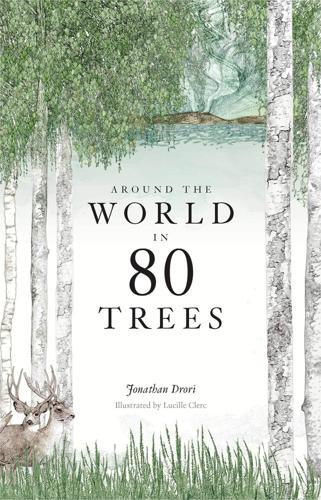
Around the World in 80 Trees
by
Jonathan Drori
Published 28 May 2018
The name ‘quinine’ came from the Quechua language, quina-quina, ‘the bark of all barks’. But quinine alkaloids have the rare capability of making certain components of our blood poisonous to the malaria parasite. Malaria was a problem in Europe until the twentieth century, but in the tropics the disease was the limiting factor to European colonial ambitions: virulent strains killed more than half of all Europeans who ventured to some parts of Africa and Asia. In North America, in the British 174 settlements of Virginia, more people died from ‘swamp fever’ than at the hands of the Native Americans. Anything that might check the disease was of the utmost strategic significance and would command a pretty price.
…
By the 1930s the Dutch East Indies supplied most of the world’s quinine, but it remained a source of strategic power right through World War II. When Java and its quinine supplies were captured by Japan, the United States imported hundreds of tons of Cinchona from Peru. Even that wasn’t enough: tens of thousands of US troops in Africa and the South Pacific were incapacitated for lack of quinine. Without Cinchona, the European colonies would not have expanded in tropical parts of the world. In India, the British Raj depended on quinine, the white powder extracted from the bark, which was taken daily in ‘tonic water’. To disguise the bitter taste, gin, lemon and sugar were added to make it more palatable, resulting in the forerunner of today’s G&T.
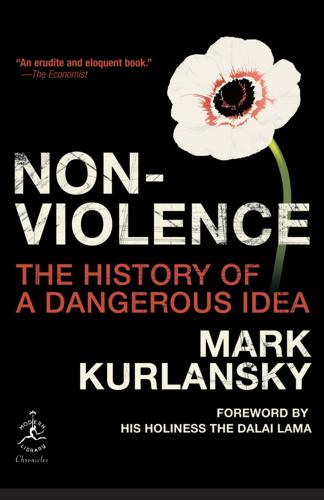
Nonviolence: The History of a Dangerous Idea
by
Mark Kurlansky
Published 7 Apr 2008
Even before the French and Indian War, an American extension of the nearly global Seven Years War, there was almost constant warring with Indians and between European powers in North America and the Caribbean, including King William's War (1689–97), Queen Anne's War (1702–13), and King George's War (1744). To live in a European colony was to constantly be called upon to fight Europe's wars. During all these conflicts there were small numbers of Americans, not all of them religious, who refused to fight. In 1675 a few men refused to participate in preparations to defend against an Indian assault on Boston. In the early eighteenth century the Massachusetts colony found it necessary to pass a law establishing prison sentences for those who refused to bear arms.
…
Mennonites and other nonviolent sects retreated to their traditional posture of nonparticipation in government and were seldom heard from again until the fight over slavery heated up in the mid-nineteenth century. Quaker control of the colony lasted only seventy-four years. The central problem was that the pacifist state was part of a larger colonial system that vehemently rejected nonviolence. In the vast history of European colonialism, there are few incidents of nonviolent resistance by indigenous people, leaving unanswered the question of whether this would have worked. What is answerable is that nothing they did try worked. The indigenous people of five continents were facing an intractable enemy from a sixth continent that was convinced that they had the right to steal the land on other continents and destroy the inhabitants as peoples and cultures, and, in fact, that this was the proper thing to do.

The Relentless Revolution: A History of Capitalism
by
Joyce Appleby
Published 22 Dec 2009
Various combinations of these countries went to war against each other eight times between 1689 and 1815 for a total of sixty-three years.1 One major consequence of these hostilities was a sharp reduction in the intra-European trade that had grown substantially in the previous two centuries. Neighboring Great Britain and France, in particular, turned from each other as trading partners toward their overseas holdings. The wars themselves made raising revenue urgent, so heavy import tariffs became the order of the day. The various European colonies in the New World were expected to complement the economic needs of the mother country. The persistent warfare among European powers created a kind of catch-22. The warring countries needed the riches they extracted from Asia and the New World to support their wars, but the intense competition for control of these lucrative trades triggered more bellicosity.
…
Of course the factories in the fields of the seventeenth-and eighteenth-century Caribbean sugar plantations and the silver mines of Mexico and Peru offered something of a template for the new capitalist thrust to make colonies centers of production. Governments had what companies lacked, the power to commandeer workers by extorting concessions from their compliant leaders or moving in with force where there was no recognized political order, as in much of sub-Saharan Africa. European colonies already existed on the coasts as supports to long-distance commerce. The untapped riches in the African interior stirred imperial designs. European countries began to scuffle over who would get what, with little thought of the people who lived there. Cupidity, curiosity, Christian proselytizing, and militant strong-arming came into play.
…
See also David Levine, At the Dawn of Modernity: Biology, Culture, and Material Life in Europe after the Year 1000 (Berkeley, 2001). 4. Kenneth Pomeranz, The Great Divergence: China, Europe, and the Marking of the Modern World Economy (Princeton, 2000). The critical literature on this proposition is best covered in James M. Bryant, “The West and the Rest Revisited: Debating Capitalist Origins, European Colonialism, and the Advent of Modernity,” Canadian Journal of Sociology, 31 (2006). See also David Landes, “East Is East and West Is West,” in Maxine Berg and Kristine Bruland, eds., Technological Revolutions in Europe: Historical Perspectives (Northampton, MA, 1998), 19–38. For a more sympathetic response to Pomeranz, see P.
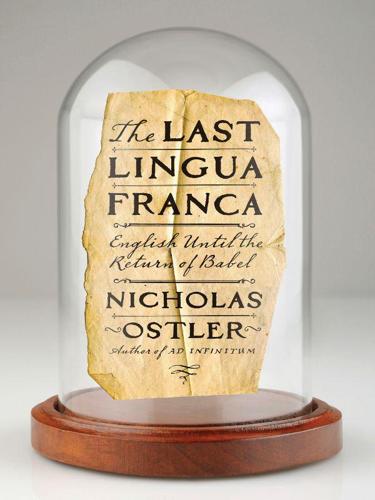
The Last Lingua Franca: English Until the Return of Babel
by
Nicholas Ostler
Published 23 Nov 2010
In Papua New Guinea, the proportion of worshippers is 61.8 percent, and in sub-Saharan Africa generally, direct impact has been serious. There, Christians (and mostly Protestants) are now in the majority in almost every country where English functions as lingua-franca.7 It is ultimately impossible to disentangle the long-term effects of the religious missionary pioneers from the later workings of the European colonial enterprise more generally; for example, schools that were originally mission foundations were often later incorporated as national institutions. Nonetheless, there are already more practicing Christians in Africa than on any other continent, and on current rates of growth, by the coming decade Africa will overtake Europe as the continent with most self-identifying Christians.
…
This process created Bislama and Tok Pisin, now official languages in their own right (as well as widely spoken vernaculars) in Vanuatu and Papua New Guinea. When the sources are major languages that are widely known in their original forms, these creoles get little popular respect and are seen as somehow inferior alternatives to a properly learned language. This has happened a great deal on the margins of the great European colonial empires of the seventeenth to twentieth centuries. Languages such as Gullah in the southeastern USA, Haitian Creole French, Papiamentu (from Spanish or Portuguese in the southern Caribbean), spoken by marginal communities of uneducated people long treated as second-class, have been dismissed as no-account languages.
…
There have been no institutions for Arabic, Hindi, Urdu, Malay, or Swahili, for example, despite their political and lingua-franca importance. Nor have any of the major nonindigenous users of European languages, such the USA, Canada, Mexico, or Brazil, seen value in getting into this game on behalf of their majority languages, surprising when one considers that the sheer scale of some of these states, once founded as European colonies, dwarfs the absolute size of their countries of origin. † Nations that have such languages may attempt to practice cultural diplomacy (as witness the defunct United States Information Agency, which functioned 1953–99), but if they do, they will focus on their own politics, arts, and society; they will not expect to gain sympathizers just by propagating their own language.
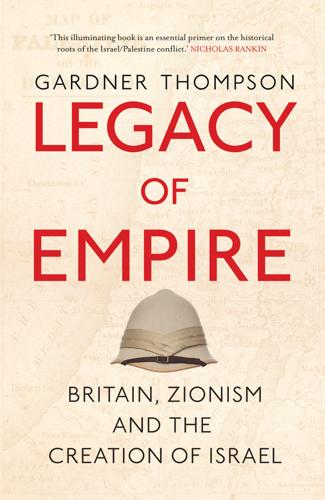
Legacy of Empire
by
Gardner Thompson
While the question implies continuation, our focus here remains on the past. First, a note on chronology and context. In the 1890s, there was little exceptional, or to prevailing opinion exceptionable, about the Zionist project to colonise Palestine. It was launched at the high watermark of European colonialism. Indeed, these were Europeans, albeit Jewish Europeans, who were advocating it. They were imitating the peoples of the Great Powers in promoting emigration, land acquisition and longterm settlement. To this extent, Palestine was to be a new home for Jews, just as, for example, the East Africa Protectorate (Kenya) and Southern Rhodesia were to be new homes for (mainly) British white settlers of that time.
…
Echoing Edward Said’s advice that it would be foolish morally to equate mass dispossession with mass extermination, the Lebanese-born professor Gilbert Achcar argues persuasively that ‘the Palestinians cannot … advisedly and legitimately apply to their own case the superlatives appropriate to the Jewish genocide’.2 A different lens is required. The Palestinian experience is to be compared, rather, to the more mundane phenomena of nineteenth- and twentieth-century colonialism. In this context, Israel may be seen as the only European colonial settler state in which the political aspirations of the native population for independence have not been met. But our concern is with origins. ‘As the pogroms in Russia in the 1880s had launched modern Zionism, so the largest pogrom of all, the Holocaust, was to propel the movement, almost instantly, into statehood.’3 Benny Morris offers, here, more than a haunting parallel.
…
INDEX Page numbers in bold refer to tables; page numbers in italics refer to illustrations; ‘n’ after a page number indicates the endnote number. 1929 violence and disturbances, 159, 161, 184, 195, 203, 215–16, 223 1930 Hope-Simpson Report, 183, 186, 187, 297 1930 Passfield White Paper, 76, 187–90 1930 Shaw Report, 186, 187, 197, 202, 297 casualties, 185 Hebron, 184–5 inter-communal antagonism, 211 land issue, 186, 209–10 racial character of, 185 Western Wall, Jerusalem, 184, 185, 186 1933 protests and rioting, 215 1936 Arab Revolt/Great Revolt, 126, 161, 203, 208, 218–21, 223 British army, 220–1 casualties, 221 Hebron, 220 Jaffa, 218, 220–1 Peel Commission and Report, 221, 222, 233 strikes and boycotts of Jewish businesses, 221 truce, 220, 221 see also Peel Commission and Report 1938 Arab Revolt, 126, 207, 228–33, 249 Arab-on-Arab violence, 230–1 British army, 228, 230, 230 casualties, 230 destruction, 231, 232 Haganah, 229 Irgun militia, 229 Jenin, 231, 232 Jewish Agency, 229 partnership of British and Jewish authorities, 228–9 repression and group/village punishments, 228, 229 1947–1949 First Arab-Israeli War, 264–72, 294–5, 333n6 1st stage/‘civil war’, 265–9, 270, 272 2nd stage/inter-state stage, 269–72 1948 invasion of Israel by Arab League forces, 269 1949 Armistice lines, 261 Abdullah I, King of Transjordan, 266, 268–9, 270 armistices, 270 Ben-Gurion, David, 264–5, 270 Deir Yassin, 332n4 Haganah, 265–6, 271 Haifa, 266 IDF 266, 270, 271 Israeli victory, 271, 274 Palestinian refugees, 274, 276 terrorism, 265 truce, 270 yishuv, 264–6 1956 Suez Crisis (Second Arab–Israeli War), 272, 332n9 1967 Six Day War (Third Arab-Israeli War), 272–3, 274, 284 Palestinian refugees, 274 settlement programme, 274 UN 242 Resolution, 275 1973 Yom Kippur, 273 nuclear exchange, 273 Aaronovitch, David, 289 Abbas, Mahmoud, 279 Abdul Hamid II, Ottoman Sultan, 34–5 Abdullah I, King of Transjordan, 266, 332n6 Arab Legion/Royal Jordanian Army, 268, 270 Peel Report, 268–9 Achcar, Gilbert, 294, 300 Ahad Ha’am (Asher Ginsberg), 14, 15, 16, 29, 36, 80, 116, 241, 286 AHC (Arab Higher Committee), 218–20, 219, 238, 244, 262 banning of, 230 Jewish immigration to Palestine, 220 partition of Palestine, opposition to, 227–8 UNSCOP, 260 Alexander II, Tsar of Russia, 4 aliyah (wave of Jewish immigration into Palestine), 316n30 1st aliyah, 22–3, 28, 39, 42 2nd aliyah, 16, 21, 23, 25, 26, 28, 39 see also Jewish immigration to Palestine Allenby, Edmund Henry Hynman, Field Marshal, 71, 101 American Council of Judaism, 253–4, 331n11 American Zionist Federation, 296 Amery, Leo, 87, 93 Andrews, Lewis, 228 anti-Semitism, 264, 298 1905 Aliens Act, 84–5 anti-Zionism/anti-Semitism distinction, ix, 22, 39, 123, 304, 318n6 Balfour Declaration, xi–xii, 85–6, 88, 89 Britain, xi–xii, 85–6 British Mandate for Palestine, 141 as conspiracy theory, 87–8, 322n59 Europe, xi, xii, 4 Evian Conference, 247–8, 299 France, 315n11 Jewish Question, x, 3, 6 Nazi Germany and state-sponsored anti-Semitism, 161, 247, 296 Poland, 161, 247 USA, xi, 86, 298 see also discrimination; persecution Arab Agency, 168, 170, 180, 199, 327n15 Arab opposition to, 164, 168–9, 303 Arab-Israeli conflict, ix, 163, 280, 289, 304 Arab-Israeli reconciliation, xv, 280, 304 Arab-Jewish rapprochement in Palestine, 22 Arab League, 266, 267, 269, 275, 332n5 Arabic, 21, 29, 109, 112, 149, 181, 209 as official language of Palestine, 133, 158 Arabs, 182 anti-British feeling, 118–19 Arab Agency, opposition to, 164, 168–9, 303 ‘Arab Jews’, 21–2 Arab kingdom in Palestine, 170–1 Balfour Declaration, Arab population in, 97–8, 99, 100, 101, 121 Balfour Declaration, opposition to, 55, 65, 105, 108–109, 119, 121, 125–6, 129, 136, 153, 177, 197 British Mandate for Palestine, 133, 135, 141–2, 197, 264 Chancellor, John and, 195–201 Christian Arabs, 30–1, 32, 33, 39, 55, 109, 214, 224, 284 destruction of Arab property, 228 disillusionment with the British, 115 disregard for, 141–2, 172, 213, 250–1 eviction from Palestinian land, 24, 183, 186, 209, 210, 271, 278 exclusion from Palestinian land, 26, 30, 200, 271 as indigenous Palestinian population, xi, 12, 17–18, 23, 36–7, 39, 44, 49, 58–9, 89–90, 91, 116, 149, 151, 152, 262, 271, 295, 302–303 Jewish Agency and, 168 Legislative Council, opposition to, 164, 165–6, 169, 177, 199 Palestine as Jewish national home, opposition to, 217, 223, 228, 240 Peel Commission and Report, opposition to, 161, 221, 227–8 self-determination, 131–2, 140 unemployment, 192, 197, 210, 285 Zionist excess against, 163 Arafat, Yasser, 275, 277 arms, 112, 140, 154 armed Arab resistance, 215, 220, 241 armed Jews in Palestine, 30, 118, 171 death penalty for unauthorised possession of, 228 Haganah, 121, 216 intifadas, 279 PLO armed struggle, 275 Zionism and, 121, 147, 264, 284, 297 Ashkenazi Jews, 21–2, 41, 155 Asquith, Herbert Henry, xii, 58, 59, 61, 68, 69, 77, 100 replaced as Prime Minister by Lloyd George, 70 assimilation, 20, 42, 43, 162 criticism of, 7–10 intermarriage and, 9 Jewish identity and, 9–10 Jewish Question and, 5, 6–8 Montagu, Edwin, 88–9 reverse assimilation, 28 secularism and, 5 support for, 12 USA, 42, 48–9 Weizmann, Chaim, 8–9, 49 Zionism and, 7–10 see also identity Atatürk, Kemal, 136 Attlee, Clement, 243, 256–7 Australia, 12, 248 Azouri, Najib, 31 Babylonia, 44, 45 Baldwin, Stanley, 169 Balfour, Arthur, 85, 142, 147, 148–9, 258, 300 1905 Aliens Act, xi, 41, 84–5 Balfour Declaration, 72, 73, 74, 76, 93, 97, 101, 110, 148 death, 233, 331n15 Ireland, 125 Zionism and, 84 Balfour Declaration (1917), 36, 57–8, 72–4, 116, 148, 188, 263, 294, 300, 301, 304 1st anniversary, 108 4th anniversary, 122 100th anniversary of, xiii–xv, 324n15 Balfour, Arthur, 72, 73, 74, 76, 93, 97, 101, 110, 148 Black Letter, 190, 191, 193 British Mandate for Palestine and, 105, 115, 127, 132, 134, 135, 138, 146, 148 Chancellor, John, Sir, 195–6, 197, 199, 200, 201 Christian Zionism and, 55, 74, 92–4 Jewish state in Palestine, 96–7, 99 League of Nations Mandate and, 105, 115, 127, 132, 134, 135, 138, 146, 148, 170, 199 legitimacy, 263 Lloyd George, David, x–xi, 58, 73, 74–80, 93, 97, 100, 101, 105, 148 Montagu, Edwin, 74, 88–91, 92 Palestine as Jewish national home, 72, 95, 189, 197 policy review, 105, 113, 137, 170 self-determination, 77, 105, 110, 115, 263 text of, 72, 95–8 Weizmann, Chaim, 36, 74, 75, 80–3, 90–1, 94, 96, 97, 98, 116, 117, 134, 321n43 World War I, 73, 76–7, 83–4, 98, 101, 105, 148 Zionism and, xi, xiii, 95–6, 98, 99, 194, 251 as Zionism’s ‘Magna Carta’, 98, 317n74 see also Balfour Declaration, criticism and opposition to Balfour Declaration, criticism and opposition to, xiv, 88–92, 98–101, 106, 108, 113, 148, 159 1919 King-Crane Commission Report, 110–13, 114, 115, 142, 233 1920 disturbances of Nabi Musa, Jerusalem, 113–17, 174 1921 Deedes Letter, 121–3 1921 disturbances in Jaffa, 118–20, 121, 127, 148, 174 1921 Haycraft Report, 118–20, 123, 144 anti-Semitism and, xi–xii, 85–6, 88, 89 Arab opposition to, 55, 65, 105, 108–109, 119, 121, 125–6, 129, 136, 153, 177, 197 Arab population in the Declaration, 97–8, 99, 100, 101, 121 Christian Arabs, 109 colonialism, 95, 142 consequences, xiii, 64, 99, 102, 120, 125, 138, 148–9, 185–6, 195, 198 contradictions, x–xi, 18, 99–100, 105, 106, 115, 138, 161, 162, 195–6, 200, 297 failure of, 58, 100–102, 139, 189, 195, 233 Ireland, 105, 125–7 London, 105, 122, 127 nimbyism, xi, 74, 86–8 Palestine, 108–15 as short-term appeal for help, 74 suspension of Jewish immigration, 120, 177, 203 violence, 105, 113, 118, 122 Zionism, opposition to, 108, 111–13, 115, 118–19, 122 Bar Kokhba revolt (132 AD), 45 Barbour, Nevill, 149 Barr, James, 69, 140 Basel (Switzerland), 1, 2 1st Zionist Congress (1897), 15, 34, 42, 251, 314n6 Basel Programme, 2, 29, 33, 38, 251, 285, 287, 289, 296 full text, 3 Bedouins, 24, 153 Begin, Menachem, 246 Bell, Gertrude, 108 Ben-Ami, Shlomo, 289, 296 Ben-Gurion, David, 24, 26, 27, 30, 37, 50, 80, 109–10, 152–3, 229, 238, 257, 326n5 1947–1949 First Arab-Israeli War, 264–5, 270 Biltmore Programme, 251–2 Declaration of Independence, 267 as first Prime Minister of Israel, 326n5 Histadrut, 180 IDF 333n25 Judaism, 52 transfer of population, 226 World War II, 245, 249 Zionism, 180, 289–90, 295–6 Bentwich, Herbert, 17 Bentwich, Norman, 163 Betar, 173, 185 Bethlehem, 45, 225 Bevin, Ernest, 255–6, 257–8, 297 Bible/Hebrew Bible, 11, 48, 53, 75, 94, 229, 285, 314n8 Old Testament, 51, 52, 53, 84, 93 Zionism and, 50–2, 93 Biltmore Conference (New York, 1942), 247, 251, 254 Biltmore Programme, 251–3 Birnbaum, Nathan, 41 Black Letter, 190–4, 204, 206, 213 see also MacDonald, Ramsay Bloudan Conference (1937, Syria), 231 Blum, Leon, 48 Bols, General, 117 Bonaparte, Napoleon, 92, 302 Borochov, Ber, 25–6, 28, 293, 316n48, 333n1 Brandeis, Louis, 84, 86 Bren, Josef Chaim, 148 Breuer, Isaac, 19 Brezhnev, Leonid, 273 Britain 1905 Aliens Act, xi, 41, 84–5 anti-Semitism, xi–xii, 85–6 colonialism, xii, xiii, 124, 300–301 endorsement of Zionism, x, 38, 52, 53, 57, 72, 74, 296, 302 fascism, 48 France and, 63–4, 68, 69–70, 77, 100, 139–40 ‘indirect rule’, 327n15 Jewish characters in English novels, 54, 319n44 Jews in, 35, 41, 48, 89, 237 legacy for Palestine, xiii, 239, 300 Middle East, 68, 70, 72, 234 nimbyism, 141, 254, 298, 300, 334n10 Ottoman Empire and, 61–2, 64, 71, 72 Palestine and, xii, 57, 58–9, 66, 68–9, 148, 239–40 responsibility for Palestine, xv, 298–300, 304 USA and, 243, 255–6 War Cabinet, 70, 87, 93, 95 World War I, 70–1, 72, 76–7, 87, 123, 139 see also the entries below related to Britain; Balfour Declaration; House of Commons; House of Lords; Sykes-Picot Agreement British army, 138, 139, 142, 255 1929 Manual of Military Law, 228 1936 Arab Revolt, 220–1 1938 Arab Revolt, 228, 230, 230 British military administration in Palestine, 146–7 British Mandate for Palestine, x, xi, xii, 17, 74, 103, 104, 105, 127 1923: 164, 169–71, 173, 215 1945 onwards, 255 1947 British abdication, x, xi, 222, 243, 244, 255, 257–8, 264, 297, 298 anti-Semitism, 141 Arab opposition to, 135, 197, 264 Arab population in, 133, 141–2 Balfour Declaration, 105, 115, 127, 132, 134, 135, 138, 146, 148 British government in London, 135, 136–42 British personnel in Palestine, 138–9 case against keeping Palestine, 139 colonialism, 135, 138, 174, 240 contradictions, 223, 224, 226 criticism of, 234–5, 240–1, 263 ‘divide and rule’, 174, 175, 231 failure of, 240, 258, 297, 302 ‘indirect rule’, 174, 179, 327n15 Jewish Agency, 121, 123, 132, 133, 143, 167, 168, 180 Jewish capital and enterprise, 135, 142–4, 158, 262 legitimacy of, 131, 197, 262–3 nimbyism, 141, 254 notables/eminent families, 174–5, 241 Palestinian underdevelopment/backwardness, 150, 151, 153, 154 UNSCOP, 263–4 violence against British targets, 246, 255 Weizmann, Chaim, 134, 146, 147, 149, 158 Wilson’s Fourteen Points and origins of the mandate, 106–107 World War II, 234, 239, 254, 257 Zionism, 115, 132, 133, 134, 135, 138, 140, 142–7, 149, 158, 161, 167, 173–4, 190, 194, 211, 217, 241, 254, 297–8 see also ‘Handbook of Palestine’; League of Nations Mandate British White Paper (1922), 49, 127–30, 134, 188 Arab reply to, 129, 141, 199 Balfour Declaration and, 128, 130 ‘economic absorptive capacity’, 128–9, 167, 188 Jewish immigration to Palestine, 128 Legislative Council, 128, 129, 164 Palestine as Jewish national home, 127, 130 self-government in Palestine, 128 Zionism, 127–8, 129, 130 British White Paper (1930, Passfield White Paper), 76, 187–90, 191, 192, 203–204 annulled by Zionists, 190, 194 Jewish immigration to Palestine, 188, 203–204, 206 Palestine as Jewish national home, 188, 189, 193, 194 British White Paper (1939), 161, 171, 233–9, 240, 242, 244, 251, 260, 266, 297 criticism and opposition to, 238–9, 245 Jewish immigration to Palestine, 234, 235, 236, 237, 238, 254 Jewish state in Palestine, 238 nimbyism, 237 Palestine as Jewish national home, 235–6, 240, 255 Palestine as unitary state, 234 Zionism, 236, 243, 245 the Bund, 20 Cable, J.E., 269 Cambon, Jules, 78 Camp David, 278 Canaan, 11, 51, 53–4 Canaanites, 44, 155 Canada, 12, 248, 299 Carson, Edward, Sir, 70, 87 Carter, Morris, Sir, 330n82 Cassius Dio, 45 Catherine the Great, Empress of Russia, 4 Cecil, Robert, Lord, 93, 95–6 Chamberlain, Joseph, 79 Chancellor, John, Sir, 194, 195, 212, 257, 302 Arabs and, 195–201 Balfour Declaration, 195–6, 197, 199, 200, 201 as British High Commissioner of Palestine, 159, 161, 185, 187, 189, 194–203 despatch of January 1930: 197–200 League of Nations Mandate, 199–200 ‘Reasons for Retiring’, 201 Channing, William Ellery, 286 Childers, Erskine, 301 children of Israel, 51, 75, 318n15 Chomsky, Noam, 281, 289 Christian Zionism, 51, 53–5, 75, 229, 253 anti-Semitism, 88 Balfour Declaration, 55, 74, 92–4 Britain, 82, 142 Christian Zionism/Jewish Zionism comparison, 55 Christianity, 6, 46 Christian Arabs, 30–1, 32, 33, 39, 55, 109, 214, 224, 284 Christian-Muslim associations, 214 Jesus Christ, 46, 54 Protestantism, 54, 123, 152, 285–6 Roman Catholicism, 40, 77, 123, 315n11, 330n85 see also Christian Zionism Churchill, Winston, 123 1922 British White Paper, 127 as Colonial Secretary, 136, 143 Irgun militia and, 332n6 Palestine and, 136–8 Zionism, 69, 87, 136 Clayton, General, 109 Clemenceau, Georges, 70, 139 Cohen, Hillel, 183, 281, 284, 290 Cohen, Michael J., 34, 39, 193, 236 Cold War, 243, 256, 264, 272, 273, 280 colonialism, 33, 147, 259, 281, 283 Balfour Declaration, 95, 142 Britain, xii, xiii, 124, 300–301 British Mandate for Palestine, 135, 138, 174, 240 European colonialism, 283, 284 hybrid colonialism in Palestine, xiii, 142, 159, 218, 297–8 nationalism and, 289–90, 301 Zionism and, 281, 283–7, 289–90 Zionist colonisation of Palestine, xiii, 3, 15, 16–18, 22, 23, 31, 171, 173, 193, 198, 211, 216, 289, 294, 295, 299 Congreve, General, 49, 125–6, 139, 145–6 conversion, 5–6, 40, 41, 54 Cook, Thomas, 54 Coupland, Reginald, 330n82 Crane, Charles, 110–13 see also King-Crane Commission Report Crimean War, 63, 70 Crossman, Richard, 82 Curzon, Lord, 91–2, 109, 148–9 Cushing, Caleb, 286–7 Cyrus the Great, 44 Daily Mail (newspaper), 66, 95 The Daily Telegraph (newspaper), 233 Dalton, Hugh, 257 Dayan, Moshe, 273, 281 De Bunsen, Maurice, Sir: 1915 Report of the de Bunsen Committee, 61–4, 67, 68, 69, 70 Deedes, Wyndham, Sir, 121–3 diaspora (Jewish diaspora), 10, 24, 41, 53, 185, 265, 275, 280 70 AD diaspora, 45–6 discrimination, 5, 40, 43, 48, 117 Dominican Republic, 247 Dreyfus Affair, 4, 48, 315n11 Drummond Shiels, Thomas, Sir, 186 Dubnow, Ze’ev, 23, 50 East Africa, 11, 36, 75, 84, 107, 137 Eastern Mediterranean, xvi–xvii, 11, 45, 62, 66, 79, 94 The Economist (newspaper), 101 Eder, David, 119–20 Egypt, 45, 274 1936 demonstrations and strikes, 218 1956 Suez Crisis, 272, 332n9 1967 Six Day War, 272–3 1973 Yom Kippur, 273 Britain and, 11, 63, 69, 139 Gaza, 271, 272 Einstein, Albert, 47–8, 81, 159, 243 El Arish (Sinai), 11, 71, 75 Eliot, George: Daniel Deronda, 54, 142, 319n44 English (language), 133, 158, 181 Enlightenment, 3, 5 Haskalah/Jewish Enlightenment, 5, 19 Epstein, Yitzhak, 1, 14, 16–18, 25, 103, 241, 271–2, 286 equality, 8, 120, 190, 252 Eretz Yisrael (The Land of Israel), 13, 27, 28 Europe, xvi–xvii, 4 anti-Semitism, xi, xii, 4 Central Europe, xi, xii, 41 colonialism, 283, 284 Eastern Europe, 4, 7, 23, 47, 84, 240, 284 interest in Palestine, 152 Jewish Question, 3–4 Jews’ conversion to Christianity, 6 Exodus 1947 affair 259–60 Evian Conference (France, 1938), 246–9, 254 anti-Semitism, 247–8, 299 nimbyism, 299 Zionism, 248–9 Faisal I, King of Syria, 58–9, 71, 111, 117, 140, 170, 179, 263, 320n8 Emir, 110, 145 Fatah, 275, 278 fellahin (labourers), 22, 141, 209 Filastin (newspaper), 32, 221 Ford, Henry, 298 France, 4, 48, 58, 59, 218, 315n11 Britain and, 63–4, 68, 69–70, 77, 100, 139–40 Middle East, 68, 139 Palestine and, 140 Syria, 103, 104, 107 Zionism, 78 see also Sykes-Picot Agreement French Revolution, 3, 8 Galilee, 45, 46, 152, 168, 225, 229 Gandhi, Mahatma, 233 Gaza, 225, 259, 261, 273, 279, 280, 282 Egypt and, 271, 272 intifada, 278 Palestinian Arabs in, 280 Palestinian National Authority, 277 George V, King of the United Kingdom, 145 Germany, 70, 71, 73, 100, 139, 237 Jews in, 6–7, 8 see also Nazi Germany ghetto, 10, 14, 16, 89, 91 ghettoisation, 46 Golan Heights, 261, 273, 274–5, 282 Goldie, Annabel MacNicoll, Baroness, xiv–xv Great Powers, 13, 16, 29, 33, 34, 38, 40, 283 Greece, 78–80, 330n86 1919–22 Greco-Turkish War, 79 Grey, Lord, 73, 99–100, 101 Gruenbaum, Yitzhak, 249 Ha’aretz (newspaper), 182 Habash, George, 275 Haganah (Jewish militia), 167, 173, 216, 259, 267, 271, 290, 332n4, 333n25 1938 Arab Revolt, 229 1947–1949 First Arab-Israeli War, 265–6, 271 arms, 121, 216 IDF, 266, 271 Plan D, 266 World War II, 245 Haifa, 62, 64, 140, 152, 259, 260, 261, 282, 325n54 1933 protests and rioting, 215 1947–1949 First Arab-Israeli War, 266 Jewish population of, 207 Sykes-Picot agreement, 67, 68 terrorism, 229 Young Men’s Muslim Association, 215 Halevi, Chaim, 185 Halifax, Lord, 248 Hamas, 277–8, 329n74 Hammond, Laurie, Sir, 330n82 ‘Handbook of Palestine’ (1922), 150–1, 153–8, 159 see also Samuel, Herbert, Sir Hankey, Maurice, 77 Hapoel Hatzair (Young Worker) party, 26–7 Hashemites, 64, 65, 268 Haskalah (Jewish Enlightenment), 5, 19 Hattersley, Roy, 302 Haycraft, Thomas, Sir: Haycraft Report, 118–20, 123, 144, 297 Heath, Edward, 334n10 Hebrew, 26, 27, 167, 181, 209 as national language for Zionism in Palestine, 41, 50, 168, 316n36 as official language of Palestine, 133, 158, 168, 175 Hebron, 184–5, 220, 274 Hertzberg, Arthur, 14, 38, 50, 283, 291 The Zionist Idea, 14 Herzl, Theodor, 1, 2, 3, 4, 38, 47, 48, 88, 287, 288, 300, 317n74 alternatives to Palestine, 11 on anti-Semitism, 88 Arabs as indigenous Palestinian population, 36–7 assimilation, 7–8, 49, 162 death of, 34, 36, 37 diplomacy, 34–7, 80 on infiltration, 29, 34 Jewish Question, 1–2, 303 Judenstaat/The Jewish State, 1–2, 7–8, 10, 11, 29, 298 Political Zionism, 2, 15, 16, 50 World Zionist Organisation, 23, 34 Zionism, 2, 36–7, 55, 289, 314n5 Herzog, Chaim, ix Hess, Moses, 13, 314n5 Histadrut (labour federation), 167, 180, 181, 193, 267, 326n5 Hitler, Adolf, xi, 43, 107, 161, 207, 218, 237, 247, 293, 296, 300 al-Husayni, Amin and, 244 see also Nazi Germany; Nazism Hobsbawm, Eric, 48 Holocaust, xiv, 246, 265, 271, 293–4 Auschwitz, 49, 293 survivors of, 49, 254, 259, 294, 304 Holy Land, 11, 14, 21, 47, 54, 63, 93, 108, 112, 154, 198 Holy Places, 63, 64, 67, 75, 77, 175, 214, 216, 303, 320n10 Hope Simpson, John, Sir, 186–7 1930 Hope-Simpson Report, 183, 186, 187, 297 House of Commons (Britain), 76, 137, 190, 201, 258 House of Lords (Britain), 304 2017 debate on occasion of the Balfour Declaration centenary, xiii–xv, 300 Hovevei Zion (Lovers of Zion), 4, 7, 42 al-Husayni, Abd al-Qadir, 215, 267–8 al-Husayni, Amin, 33, 161, 175, 176, 177, 180, 212–14, 212, 215, 332n6 1937 Bloudan Conference, 231 1947–1949 First Arab-Israeli War, 266–8 AHC, 218, 219–20, 219 exile, 230, 244 Hitler, Adolf and, 244 Holy War Army, 267 radicalisation of 217, 244 SMC, 179, 213 al-Husayni, Jamal, 267 al-Husayni, Kamil, 175 al-Husayni, Musa Kazim, 136, 175, 176, 177, 179, 211–12, 212, 213 death, 215 al-Husayni, Tahir, 33, 175 Husayni dynasty, 175, 176, 177, 179, 218 Hussein, Abdullah, 170 Hussein, Faisal, see Faisal I Hussein bin Ali, Sharif of Mecca, 64–6, 67, 100, 320n8 Hussein bin Talal, King of Jordan, 276 identity, 4, 6 Arab-Jewish identity, 170 assimilation and Jewish identity, 9–10 Jewish identity, 15, 170 Jewishness, 10, 54 ‘melting-pot’ metaphor, 5–6 national identity, 32, 283 Palestinian national identity, 32 see also assimilation IDF (Israel Defense Forces), 272, 273, 276, 278, 290, 333n25 1947–1949 First Arab-Israeli War, 266, 270, 271 as army of occupation/instrument of colonial repression, 274 Haganah and, 266, 271 Lebanon, 276 Operation Thunderbolt, Entebbe, 276 PLO, 276 India, 62, 69, 92, 201, 256, 260 intermarriage, 5–6, 9, 40 intifada, 279 1987–1993 first intifada, 278 2000–2005 second intifada, 278–9 Iraq, 251, 280, 330n84 oil, 140 see also Mesopotamia Ireland, 105, 108, 123–7, 133, 255, 300–301 1916 Easter Rising, Dublin, 124, 324n31 independence from Britain, 124 Sinn Fein, 124 Irgun militia, 245, 246, 290, 332n6, 333n25 1938 Arab Revolt, 229 establishment of, 173 violence, 238, 255, 332n4, 332n6 World War II, 245, 246 al-‘Isa, Isa, 32 Islam, 47, 151, 180, 216 Islamic revivalism, 215 Israel (state of Israel), 227, 273–4, 282 1948 Declaration of the Establishment of the State of Israel, ix, 44, 266, 267, 294 the army and, 290–1 origins of, ix, xiii, 290–1, 300 Palestinian Arabs in, 280 settlement policy, 274 territorial limits, 274 UN 242 Resolution, 275 USA and, 280 Istiqlal (Arab Independence Party), 211, 214, 266 Italy, 49 Jabotinsky, Ze’ev (Vladimir), 143, 171, 172, 245, 271, 279, 284 Betar, 173, 185 The Iron Wall, 164, 171 Revisionist Party, 164, 167, 173, 185 Jaffa, 21, 25, 209, 228, 261 1921 disturbances, 118–20, 121, 127, 148, 174, 203 1932 National Congress of Arab Youth, 208 1933 protests and rioting, 215 1936 Arab Revolt, 218, 220–1 Arab population in, 182, 221 Jeffries, Joseph, 65–6, 113, 126, 143, 164, 168–9, 215, 303, 324n15 Balfour Declaration, 95, 96, 99, 101, 116 Palestine: The Reality, 324n15 Jerusalem, 23, 45, 63, 192, 228, 261, 278, 314–15n8 1920 disturbances of Nabi Musa, 113–17, 174, 175, 179, 203 Arab-Jewish relations, worsening of, 114 Britain and, 71 settlement programme, 274 status of, 280 Western Wall, 184, 185, 186, 328n24 Jewish Agency, 188 1938 Arab Revolt, 229 Biltmore Programme, 252 British Mandate for Palestine, 121, 123, 132, 133, 143, 167, 168, 180 Jewish immigration to Palestine, 203, 209 as parallel government alongside the mandatory government, 168 SMC/Jewish Agency comparison, 179–80 unique status of, 167 UNSCOP, 260 see also Zionist Commission Jewish history, 40, 44–50 British Mandate for Palestine and, 134, 146 ‘exile’ from Judea, 45–6 exile from Palestine, 44, 45, 46, 49, 53, 58, 271, 284 ‘return’ to Palestine as Jewish national homeland, 40, 44, 46, 49, 53, 271 Zionist version of, 44, 46, 47, 49–50, 127, 134, 271 Jewish immigration to Palestine, 39, 149, 205, 206, 239, 280, 302–303 1920s, 159, 205–206, 223 1922 White Paper, 128 1930 White Paper, 188, 203–204, 206 1930s, 161, 203, 204, 206–10, 211, 237, 295–6 1931 General Muslim Conference, 214 1939 White Paper, 234, 235, 236, 237, 238, 254 ‘absorptive capacity’, 128–9, 188, 203–204, 208, 239 AHC, 220 Balfour Declaration, 138 Black Letter, 192, 204, 206 illegal immigration, 76, 129, 204, 207–208, 245, 259, 263 impact on Arabs, 183, 197, 204, 206, 235, 264 Jewish Agency, 203, 209 Jewish/Palestinian clashes and bloodshed, ix, 28–9, 30, 105, 126, 148, 185, 195, 203, 206, 208, 223, 243 Jews leaving Palestine, 39, 42, 158, 205 League of Nations Mandate, 121, 132, 204 limitation/restriction of, 112, 186, 203, 220, 234, 235, 236, 254 Nazism and, 218, 237 Palestine as Jewish national home and, 120, 159, 218, 296 Russian Jews, 4, 21, 22, 25–6, 152 suspension of, 120, 136, 177, 201, 203, 220, 236, 237, 255 World War II, 243 Zionism, 172, 296 see also aliyah Jewish Legion, 41–2 Jewish Question, x, xii, 3–7, 38, 249, 298, 300 anti-Semitism, x, 3, 6 assimilation, 5, 6–8 colonisation of Palestine as answer to, xiii, 7 conversion, 6 Herzl, Theodor, 1–2, 303 identity, 4–5 ‘return’ to Palestine, 13, 94, 105, 208, 227, 237 Zionism as answer to, 3, 38, 43, 291, 322n64 Jewish Reform Movement, 5, 19 Jewish refugees, x, 36, 147, 243, 247, 254, 255, 256, 274, 299 Jewish state in Palestine, 92, 96, 229, 241, 294 1939 White Paper, 238 1947–1949 First Arab-Israeli War, 271 Abdullah I, King of Transjordan, 268 Balfour Declaration, 96–7, 99 Biltmore Programme, 252, 253, 254 Churchill, Winston, 69 establishment of, 271 Jewish national home as precursor to, 262 King-Crane Commission Report, 112 Lloyd George, David, 75 Peel Report, 160, 168, 221, 226, 227, 241 Samuel, Herbert, 163 UN, x, 227 Weizmann, Chaim, 97 World War II, 243 Zionism, 189, 202, 224, 252, 253, 254, 289–90 see also partition of Palestine; statehood jihad, 216 JNF (Jewish National Fund), 24, 167, 198, 210 Johnson, Albert, 298 Jordan, 261, 271, 279 Palestinian refugees in, 276 Jordan River, 11, 129, 152, 155, 170, 326n3 JTO (Jewish Territorial Organisation), 12, 46 Judaism, 4–5, 6–7, 13, 15, 46, 52 Judea, 45–6 Kalischer, Zvi, 50 Kalvarisky, Haim, 31 Kenya, 11, 142, 165, 183, 231, 283, 298 Khalidi, Rashid, 304 Khalidi, Walid, 303–04 al-Khalidi, Yusuf Diya, 30 Khalidi, Yusuf Zia, 288 King, Henry, 110–13 see also King-Crane Commission Report King-Crane Commission Report (1919), 110–13, 114, 115, 142, 233, 242, 264, 297 Kipling, Rudyard, 153 Klein, Menachem, 170 Klier, John D., 20 Koestler, Arthur, 297–8, 302–303 Krämer, Gudrun, 39, 138, 179 La Guardia, Anton, 290 Labour Party (Britain), ix Labour Zionism, 173 language, 40, 41 see also Arabic; English; Hebrew; Yiddish Laqueur, Walter, 301 Laski, Neville, 248 Law, Andrew Bonar, 70 Lawrence, T.E., 71 League of Nations, 100, 240, 326n69, 330n86 Covenant, 107, 130–1, 211 Covenant, Article 22: 131, 132, 134, 135, 197, 263, 294 dominated by Britain and France, 130 failure of, 232–3 Mandate Commission, 133, 168 mandates for Arabic-speaking Ottoman provinces, 104, 107 see also British Mandate for Palestine; League of Nations Mandate League of Nations Mandate (1922), 130–5, 170, 188 Article 2: 132, 134, 199–200 Article 4: 121, 122, 123, 132, 133, 167, 168, 199–200 Article 6: 121, 132, 167, 199–200, 204 Article 11: 133, 143, 167, 199–200 Article 22: 133 Balfour Declaration and, 105, 115, 127, 132, 134, 135, 138, 146, 148, 170, 199 draft of, 121, 146 Jewish immigration to Palestine, 121, 132, 204 League of Nations Covenant/Mandate comparison, 131–2, 134, 135 Palestine as Jewish national home, 132, 133, 134 preamble, 134 written by the British, 130, 263 see also British Mandate for Palestine Lebanon, 117, 269, 276, 320n12 1975–90 Lebanese Civil War, 276 Israel-Lebanon border/Blue Line, 282 Legislative Council, 122, 135, 158, 164–5 1922 British White Paper, 128, 129, 164 absence of, 164, 165–6, 169, 180, 326–7n6, 327n15 allocations for seats, 165 Arab opposition to, 164, 165–6, 169, 177, 199 Levi, Primo, 49, 293 Levin, Judah, 48 Likud Party, 274 Lloyd George, David, x, 56, 70, 190, 300 Balfour Declaration, x–xi, 58, 73, 74–80, 93, 97, 100, 101, 105, 148 death, 331n15 Ireland, 124–5 memoirs, 75, 76, 321n27 Palestine and, 71, 74–5, 79, 80, 136, 140, 218, 242, 301 Paris Peace Conference, 78 World War I, 71, 72–3, 76 Zionism and, xii–xiii, 57, 71, 75–6, 77, 79, 80, 93, 136, 142, 296 Lucas, F.L., 233 Luke, Harry, Sir, 195 MacDonald, Malcolm, 257, 331n13 MacDonald, Ramsay, 189–90, 200–201, 213 Black Letter, 190–4, 204, 206, 213 McMahon, Henry, Sir: 1915 McMahon letter, 64–6, 69, 100, 262 MacMichael, Harold (British High Commissioner of Palestine), 229, 246, 257 MacMillan, Margaret, 78–9, 84, 96, 124 Maisky, Ivan, 249–51, 253 Marx, Heinrich, 6 Marx, Karl, 6, 283 Marxism, 275 Marxist Zionism, 25–6, 28 Masalha, Nur, 287 Mattar, Philip, 219 Meir, Golda, 268, 269 Mesopotamia, 12, 60, 62, 63, 65, 67, 68, 137, 139, 140, 186 see also Iraq messianism, 14, 15, 52, 147, 285, 316n27 Middle Ages, 46, 47 Middle East, 273 Britain, 68, 70, 72, 234 France, 68, 139 Milner, Alfred, Lord, 93 Mizrahim/Mizrahi Jews, 21 Money, Major-General, 109 Monroe, Elizabeth, 101 Montagu, Edwin, xi, 40, 41, 74, 88, 90, 254, 274 1917 Montagu Memorandum, 57, 88–92 assimilation, 88–9 Balfour Declaration, 74, 88–91, 92 National Insurance Bill, 322n64 Zionism, 90, 299 Montgomery, Bernard, General, 228, 229 Morris, Benny, 26, 294 Morris, Harold, Sir, 330n82 Moses, 43, 51, 155, 318n15 Mosley, Oswald, 48 Mossessohn, Nehemia, 81 Motzkin, Leo, 287 Moyne, Lord, 246 mukhtars (village headmen), 157, 327n15 Mussolini, Benito, 232 al-Nashashibi, Raghib, 175–6, 177, 178, 212, 213, 217 AHC, 219 Nashashibi dynasty, 175, 177, 209, 218, 268 Nassar, Najib, 31 Nasser, Gamal Abdel, General, 272, 332n9 nation/nationhood, 10, 40 Jewish nationhood, 40–4, 53, 88, 92, 134, 149, 319n41 national identity, 32, 283 ‘nationalisation’ of the Jews, 43 Palestinian nationhood, 32 nationalism, 38, 288–90 Arab nationalism, 29–30, 31, 59, 83, 121, 152, 166, 169, 180, 211, 223, 262 colonialism and, 289–90, 301 Jewish nationalism, 19, 223 Palestinian nationalism, 33, 210, 211, 214, 265, 269, 289 secular nationalism, 9 Zionism as Jewish national movement, 289, 290 see also self-determination Nazi Germany, 203, 207, 295–6, 299 1938 Kristallnacht, 295 Jews in, 237, 238, 295–6 Nazi persecution, 211, 218 Nuremberg Laws, 218 state-sponsored anti-Semitism, 161, 247, 296 see also Germany; Hitler, Adolf; Nazism Nazism, xii, 47, 148, 162 extermination of Jews, 245, 252 Jewish immigration to Palestine, 218, 237 see also Hitler, Adolf; Nazi Germany Netanyahu, Benjamin, 277 Nicholas II, Tsar of Russia, 35 Nietzsche, Friedrich W., 285 nimbyism, 240, 298–300 1939 British White Paper, 237 Balfour Declaration, xi, 74, 86–8 Britain, 141, 254, 298, 300, 334n10 Evian Conference, 299 Peel Report, 226–7, 237 UNSCOP, 264 USA, 207, 299 Nixon, Richard, 273 Nordau, Max, 27 Northern Ireland, 124, 330n85 Occupied Territories, 278, 280, 282 OETA (Occupied Enemy Territory Administration), 109, 113, 116–17, 125, 138, 182 Ormsby-Gore, William, 93, 146 Orthodox Jews, 19, 39, 167 Oslo Accords (1993), 277, 278 Ottoman Empire, 13, 40, 58 1327 Press Law, 156 1858 Land Code, 24, 327–8n21 1916 Arab Revolt, 65, 66, 71 Arab/Jew co-existence, 47 Britain and, 61–2, 64, 71, 72 Herzl, Theodor, 34–5 Palestine and, 24–5, 26, 29, 30, 32, 58, 151–2 post-war partition of Ottoman lands, 64, 66–7, 103, 104, 110, 146 Tanzimat/Reorganisation, 151 Young Turks, 30, 31 Oz, Amos, 9, 41 PAE (Palestinian Arab Executive), 176–8, 183, 194, 199, 208 1929–1930 delegation to London, 211, 212, 212–13 1931 General Muslim Conference, 211, 213–14 demise of, 211 shortcomings, 177 Pakistan, 256, 260 Palestine, 45, 282 1920s, x, 159 1922, 150–1, 153–8 1930s, x, 161, 167 Arabs/Muslims and Christians as indigenous population of, xi, 12, 17–18, 23, 36–7, 39, 44, 49, 58–9, 89–90, 91, 116, 149, 151, 152, 262, 271, 295, 302–303 cultural clash, 29 economy, 154–5, 180–1, 244 education, 181, 209 health issues, 153, 157 independence of, 277 infiltration, 29, 34 internationalisation of the Palestine problem, 231 Islam, 151 national consciousness, 22, 28, 32–3 national identity, 32 Ottoman government and, 24–5, 26, 29, 30, 32, 58, 151–2 population, 39, 152–3, 155, 157, 206, 236, 280 the Promised Land, 52, 58 rights of Palestinians, xii, 72, 95, 96, 97, 100, 121, 132, 134, 169, 183, 196, 197, 289 Sykes-Picot Agreement, 67–8, 69 transfer/population transfer, 37, 137, 162, 186, 226, 251, 253, 285, 287–8 World War I, 32, 49, 58, 59, 83 World War II, 162, 243–6 Zionism and, 3, 10–13, 24, 40, 153, 314–15n8 see also the entries below related to Palestine; British mandate for Palestine; colonialism; Jewish immigration to Palestine; Jewish state in Palestine; partition of Palestine Palestine, territory of, 151, 156, 170, 282, 326n1 1922 British White Paper, 129 coasts, 154, 156 geography, 155 Syria and, 58–9, 65, 174, 214 Palestine Arab Party, 267 Palestine as Jewish national home, 10, 12, 101, 147, 159, 166, 223, 268, 297 1922 League of Nations Mandate, 132, 133, 134 1922 White Paper, 127, 130 1930 White Paper, 188, 189, 193, 194 1931 Black Letter, 191, 213 1939 White Paper, 235–6, 240, 255 Abdullah I, King of Transjordan, 268 alternatives to Palestine as Jewish homeland, 11, 12, 36, 248, 287, 295–6 Arab opposition to, 217, 223, 228, 240 Balfour Declaration, 72, 95, 189, 197 Biltmore Programme, 252 British support for, 57–8, 89, 105, 140, 146, 174, 177, 182, 198, 204, 217, 224, 235, 239, 297 Jewish immigration and, 120, 159, 218, 296 as precursor to a Jewish state, 262 ‘return’ to Palestine as Jewish national homeland, 40, 44, 46, 49, 53, 147, 271 ‘the shutting down’ of, 223 USA, 207 Weizmann, Chaim, 13, 82, 98, 158, 169 World War II, 244, 255, 296 Zionism, 249 Palestine National Congress, 176, 177 Palestinian Arab politics, 211–18, 240–1, 244 radicalisation of Arab politics, 216–17 weakness of, 217 Palestinian land, 33, 148 1858 Land Code, 24, 327–8n21 1920s, 159, 182–4, 186, 198 1929 violence and disturbances, 186, 209–10 1930 Hope-Simpson Report, 183, 186, 187 1930s, 161, 206–207, 209–10 1947–1949 First Arab-Israeli War, 271 absentee landlords, 24, 31, 182–3, 328n21 eviction of Arabs from, 24, 183, 186, 209, 210, 271, 278 exclusion of Arabs from, 26, 30, 200, 271 farming, 28 inter-communal antagonism, 210 Jewish Agency, 209 Jewish agricultural colonies, 155 Jewish national territory, 210 Jews/Palestinian clashes over, 29, 223 Jezreel valley, 183 JNF, 210 kibbutz movement, 28 partition proposal and, 225 tenant farmers, 24, 25, 209 uncultivated land, 25 Zionist land reserves, 198 Zionist purchase of, 24–6, 31, 35, 159, 174, 182, 209, 210, 225, 284 Palestinian National Authority, 277, 279 Palestinian refugees, 274, 276, 278 Palin, Philip, Major-General Sir: Palin Report, 114–16, 297 Pappé, Ilan, 93 Paris Peace Conference (1919), 75, 78, 88, 96, 110, 112, 113, 124, 146, 263 League of Nations Covenant, 130 Parthian Empire, 45, 318n20 partition of Palestine, 182, 244, 256, 294 1937 Peel Commission Partition Proposal, 160, 221, 223–6, 288, 302 1947 UN Partition of Palestine, 261, 263, 299 1949 Armistice lines, 261 AHC, 227–8 cantonisation/federalism, 225, 256 Jewish/Palestinian segregation, 180–2, 221, 279, 287, 294 Palestine as unitary state, 224, 234, 254, 260, 301 ‘two-state solution’, xiii, 227, 263, 271, 277, 280 Zionism, 227 see also Jewish state in Palestine; UNSCOP Passfield, Lord (Sidney Webb), 197–200 see also British White Paper (1930, Passfield White Paper) Peel, Robert, Sir, 222 Peel, William, Lord, 222 see also Peel Commission and Report Peel Commission and Report (1937), 158, 161, 166, 168, 207, 231, 233, 240, 295, 297 1936 Arab revolt, 221, 222, 233 Abdullah I, King of Transjordan, 268–9 Arab opposition to, 161, 221, 227–8 British Mandate, abdication, 222 historic significance of, 221 Jewish state in Palestine, 160, 168, 221, 226, 227, 241 members of the Commission, 222, 330n82 nimbyism, 226–7, 237 Partition Proposal, 160, 221, 223–6, 288, 302 population transfer, 226, 288, 330n86 Report extracts, 222–3 ‘two-state solution’, xiii, 271 UNSCOP, 227, 262, 263 PEF (Palestine Exploration Fund), 54 Peres, Shimon, 27, 50, 52 persecution, 5, 35, 40, 43, 209, 295, 298 ghettoisation, 46 Nazi persecution, 211, 218 Zionism and, 46–7, 52, 108 Persian Gulf, 62, 66, 68 PFLP (Popular Front for the Liberation of Palestine), 275, 276 Picot, François Georges-, 66 see also Sykes-Picot Agreement Pinsker, Leo, 7, 15, 28, 42, 315n15 PLO (Palestine Liberation Organisation), 275–7 Black September, 276 IDF, 276 Palestinian National Covenant, 275 ‘two-state solution’, 277 UN observer status, 276 Plumer, Herbert, Field Marshal (British High Commissioner of Palestine), 196 Poale Zion (Workers of Zion), 25–6 pogrom, 38, 46, 47, 87, 107, 252, 255 Russia, 4, 7, 9, 11, 12, 35, 46, 47, 294 see also anti-Semitism; violence Poland, 4, 248, 251, 255 anti-Semitism, 161, 247 Jewish Question, x Jews in, x, 43, 207 Pollock, James, Captain, 117 al-Qassam, Izz ad-din, 215–16, 329n74 death, 216, 218 jihad, 216 Rabbinical Council, 155 Rabin, Yitzhak, 277 race, 41, 83, 87, 132, 185, 248 Jewish race, 61 rationalism, 5 Reagan, Ronald, 280 regeneration, 13, 14, 22, 27–8, 144, 205, 286 Revisionist Party, 164, 167, 172, 173, 185, 245 return ‘return’ to Palestine as answer to the Jewish Question, 13, 94, 105, 208, 227, 237 ‘return’ to Palestine as Jewish national homeland, 40, 44, 46, 49, 53, 94, 147, 271 ‘right of return’, 271, 280, 319n42 Rogan, Eugene, 64–5 Roman Empire, 45 Romans, 44, 45, 49, 53, 315n8 Roosevelt, Franklin, 247, 253 Rose, Norman, 39, 47, 193, 285 Rothschild, Edmond de, Baron, 24, 118, 144 Rothschild, Nathan, 2nd Baronet and Lord, 72, 76, 81, 83, 95, 96, 190 Rumbold, Horace, Sir, 330n82 Ruppin, Arthur, 25 Russia, 35, 70 Jewish Question, x, 4 Jews in, x, 4, 20, 42, 57, 73–4 Jews’ conversion to Christianity, 6 Pale of Settlement, 4, 8–9, 20, 47 pogrom, 4, 7, 9, 11, 12, 35, 46, 47, 294 see also USSR Rutenberg, Pinhas, 143 1921 Rutenberg affair, 143–4 Said, Edward, 98–9, 284, 285, 294, 302 al-Sakakini, Khalil, 30 Samaria, 45 Samuel, Herbert, Sir, 59, 60, 75, 80, 95, 115–16, 150, 303 1915 ‘The Future of Palestine’, 59–61, 63, 69 1922 British White Paper, 127 assimilation, 162 Balfour Declaration, 120–1 as British High Commissioner of Palestine, 117, 120, 122, 126, 150, 162–9, 170, 175, 179, 182, 196 gradualism, 163 Peel Report, 226 Zionism, 162, 196 see also ‘Handbook of Palestine’ San Remo Conference (1920), 103, 116, 146, 147, 162 Sand, Shlomo, 42, 44, 45, 46, 50, 318n21 Schneer, Jonathan, 69, 83, 91 Scott, C.P., 75, 77, 83, 326n64 secularism/secularisation, 5, 10, 14, 43 secular nationalism, 9 Zionism, 14, 19, 39, 40, 50, 52, 55, 149 self-determination, 43, 79, 106, 107, 260, 263 Arab self-determination, 131–2, 140 Balfour Declaration, 77, 105, 110, 115, 263 Zionism, 14, 32, 43, 52, 77, 105, 147, 285 see also nationalism Sephardi Jews, 21–2, 23, 41, 155 Seychelles, 267, 330–1n93 Shaftesbury, Lord, 54, 88, 92–3 Shamir, Yitzhak, 246 Sharon, Ariel, 278, 279 Shavit, Ari, 10, 17, 47, 141, 144 Shaw, Walter, Sir, 186, 187, 197, 202, 297 Shertok, Moshe, 229–30 Shlaim, Avi, 32, 173, 288–9, 318n6 Shuckburgh, John, Sir, 122, 123, 127, 139 Simms, William Gilmore, 288 Sinai, 11, 71, 272, 273, 274 SMC (Supreme Muslim Council), 178–80, 213, 215 Jewish Agency/SMC comparison, 179–80 Smuts, Jan, 93 socialism/socialist Zionism, 25, 26, 28, 31, 39, 48, 180, 181, 284, 286 inter-communal socialism, 246 Sokolow, Nahum, 78, 96, 146 South America, 23, 237 sovereignty, 88, 106, 124, 275, 283 Jewish sovereignty, 1, 10, 29, 34 Stalin, Joseph, 264, 293 Stanislawski, Michael, 73 statehood, 15, 40, 44, 52, 173, 294 Palestinian statehood, 269, 280 Zionism and, 294 see also Jewish state in Palestine Stein, Kenneth, 25, 163, 210 Stern, Avraham, 245 Stern Gang, 245–6, 332n4 Storrs, Ronald, 175 Suez Canal, 61, 63, 69, 77, 82, 83, 94, 139, 140, 256 1956 Suez Crisis, 272, 332n9 Sykes, Mark, Sir, 66, 87, 93, 95, 109 anti-Semitism, 87 Zionism, 140 see also Sykes-Picot Agreement Sykes-Picot Agreement (1916), 64, 66–8, 87, 107 Palestine, 67–8, 69, 140 partition plan, 66–7, 320n12 synagogue, 47, 184, 289 Syria, 63, 218 Greater Syria, 58, 65, 69, 174, 179, 214, 320n8 Palestine and, 58–9, 65, 174, 179, 214 Syrkin, Nahman, 287 Tel Aviv, 144, 184, 261, 270, 282 population, 207 as separate ‘Jewish’ port, 221 as separate municipality, 182 settlement programme, 274 territorialism, 12, 287 terrorism, 220, 229, 255, 265, 274, 276, 277 suicide bombing, 278–9 see also Haganah; Hamas; Irgun militia; PLO; Stern Gang The Times (newspaper), 72, 92, 96 Tolstoy, Leo, 302 Torah, 19 trade union issues 181 see also Histadrut Transjordan, 170, 186, 197, 220, 221, 266, 268 Truman, Harry, 256, 264 Turkey, 136–7, 140, 330n86 UN (United Nations), xiii, 257, 258, 259–60, 280 Jewish state in Palestine, x, 227 ‘Palestine’, observer status, 278 PLO, observer status, 276 Resolution 242, 275, 277 UN General Assembly’s vote on partition proposals, 265, 277 UNSCOP (UN Special Committee on Palestine), 260–4 1947 UN Partition of Palestine, 261, 263, 299 Arab case, 262–3 awarding 55% of Palestinian land to a Jewish state, x, 274 British Mandate for Palestine, 263–4 nimbyism, 264 Peel Report, 227, 262, 263 ‘two-state solution’, xiii, 227, 263, 271 USA (United States of America), 304, 332n9 1924 Johnson-Reed Act, 207, 237, 298–9, 329n62 as alternative to Palestine as Jewish homeland, 12, 23 annual quota of Jewish immigration, 237–8, 248, 254, 329n62 anti-Semitism and, xi, 86, 298 assimilation, 42, 48–9 Great Depression, 237 Israel and, 280 Jewish population in, 23, 237–8, 315n10 Jews in, xii, 23, 43, 57, 73–4, 107–108, 207, 295 Manifest Destiny, 286–7 ‘melting-pot’ metaphor, 5–6 nimbyism, 207, 299 Palestine as Jewish national home, 207 Protestantism and native Americans, 285–7 restrictions on immigration, 207, 237–8, 298–9 Statue of Liberty, 23 Zionism and, xi, 74, 86, 100, 145, 253, 285–7 Ussishkin, Menachem, 81, 288 USSR (Union of Soviet Socialist Republics), 256, 264, 273, 280, 300, 332n9 see also Russia Venizelos, Eleutherios, 78–80 Victor Emmanuel II, King of Italy, 35 Vienna (Austria), 1–2, 4 Vital, David, 6, 247 Viton, Albert, 208 Von Plehve, Vyacheslav Konstantinovich, 35, 88 Wasserstein, Bernard, 274 Wauchope, Arthur, General Sir (British High Commissioner of Palestine), 194, 196, 220 Weinstock, Nathan, 259, 314n5 Weizmann, Chaim, 20, 25, 36, 38, 52, 72–3, 78–83, 81, 147, 177, 182, 201, 285 1941 London meeting with Maisky, 247, 249–51 on Arab nationalism, 29–30 Arabs, disregard of, 141, 250–1 assimilation, 8–9, 49 Balfour Declaration, 36, 74, 75, 80–3, 90–1, 94, 96, 97, 98, 116, 117, 134, 321n43 Black Letter, 190 British Mandate for Palestine, 134, 146, 147, 149, 158 Deedes letter, answer to, 122–3 Jews as nation, 40, 42, 43 Palestine as Jewish national home, 13, 82, 98, 158, 169 Peel Report, 227 as President of World Zionist Organisation, 314n6 ‘transfer’/population transfer, 186, 251, 253 What is Zionism, 8, 12, 43 World War II, 246, 249–50 Zionism, 80, 82, 254, 289, 321n43 Zionist Commission, 145 West Bank, 261, 268, 270, 271, 275, 278, 282, 320n13 1967 Six Day War, 272, 273 Palestinian Arabs in, 280 Palestinian National Authority, 277 settlement programme, 274 West Bank Barrier, 279 Wilhelm II, German Emperor, 35 Wilson, Henry, Field Marshal Sir, 125 Wilson, Thomas Woodrow, 73, 77, 100, 130–1, 146, 326n69 Fourteen Points, 106–107, 131, 135 Wingate, Orde, 229 World War I, 41–2, 49, 57, 70–1 Allies, 76–7 Balfour Declaration, 73, 76–7, 83–4, 98, 101, 105, 148 Britain, 70–1, 72, 76–7, 87, 123, 139 Israel, origins of the state of, ix Palestine, 32, 49, 58, 59, 83 Zionism, 73, 83 World War II Axis powers, 244 British Mandate for Palestine, 234, 239, 254, 257 Haganah, 245 Irgun militia, 245, 246 Israel, origins of the state of, ix Jewish immigration to Palestine, 243 Jewish state in Palestine, 243 Palestine, 162, 243–6 Palestine as Jewish national home, 244, 255, 296 Zionism, 245–6, 252–3 see also Holocaust World Zionist Organisation, 23, 24, 34, 39, 122, 167, 314n6 Yiddish, 20, 41, 47, 316n36 yishuv (Jewish community in Palestine) 39, 119, 166, 167, 180, 221, 241, 252, 296, 327n15 1920s, 205 1947–1949 First Arab-Israeli War, 264–6 British administration and, 217 revenue from, 144 Zionist Commission and, 145 Young Turks, 30, 31, 40 Zangwill, Israel, 12, 46, 287 The Melting Pot, 12 Zionism, 13, 171–4, 257, 288, 297 aim of, 3, 14, 24, 55 alternatives to, 19, 21–2 anachronism, 47, 48 anti-Zionism, 22, 123, 169, 304, 318n6 arms and violence, 121, 147, 264, 284, 288, 297 assimilation and, 7–10 Balfour Declaration, xi, xiii, 95–6, 98, 99, 194, 251, 317n74 birth of modern Zionism, 1–3, 47, 314n5 British Mandate for Palestine, 115, 132, 133, 134, 135, 138, 140, 142–7, 149, 158, 161, 167, 173–4, 190, 194, 211, 217, 241, 254, 297–8 colonialism, 281, 283–7, 289–90 colonisation of Palestine, xiii, 3, 15, 16–18, 22, 23, 31, 171, 173, 193, 198, 211, 216, 289, 294, 295, 299 criticism of, 17, 19–20, 22, 30, 38, 90, 93, 254, 280, 286 different notions of, 13–18 diplomacy for Palestine, 33–7, 40 hybridity, 52 industrialisation of Palestine, 144 as ideology, 22, 37, 38, 40–53, 55, 130, 281, 288 as Jewish national movement, 289, 290 Jewish opposition to, 19–22 Jewish Question and, 3, 38, 43, 291, 322n64 lack of appeal to Jews, 39, 42–3, 48, 74 messianism, 14–15, 52 as movement, 22, 130, 281, 289 Political Zionism, 15, 16, 22, 38, 43, 46 secularism, 14, 19, 39, 40, 50, 52, 55, 149 self-determination, 14, 32, 43, 52, 77, 105, 147, 285 Spiritual/Cultural Zionism, 15–16, 286 the term, 314–15n8 transfer/population transfer, 37, 137, 186, 226, 251, 285, 287–8 World War I, 73, 83 World War II, 245–6, 252–3 see also Christian Zionism Zionist Commission, 108, 117, 119, 122, 126, 163, 324n21 criticism of, 144, 145–6 establishment of, 145 organisational structure, 167–8 see also Jewish Agency; Zionist Executive Zionist Congress, 27, 251 1st Zionist Congress (1897), 15, 34, 42, 251, 314n6 7th Zionist Congress (1905), 11 12th Zionist Congress (1921), 128 16th Zionist Congress (1929), 198 17th Zionist Congress (1931), 227 18th Zionist Congress (1933), 296 see also Biltmore Conference Zionist Executive, 167, 171 Zionist organisation, registering fee, 42–3 see also World Zionist Organisation
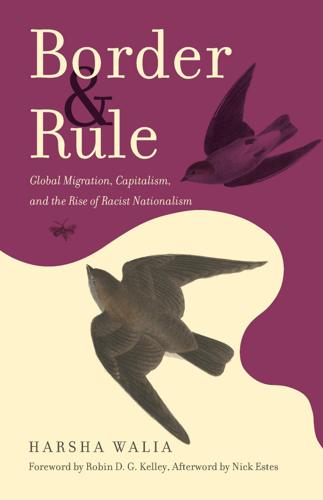
Border and Rule: Global Migration, Capitalism, and the Rise of Racist Nationalism
by
Harsha Walia
Published 9 Feb 2021
Outside the Jungle: hatred.”102 Disrupting white European innocence requires refusing selective amnesia and shifting the gaze away from migrants and refugees, and toward the enduring project of Europe. Migration is treated as a recent phenomenon, even though the genocide, displacement, and movement of millions of people was unequally structured by European colonialism for three centuries, with European emigrant settlers in the Americas and Oceania, the transatlantic slave trade from Africa, and imported indentured laborers from Asia. As Paul Gilroy writes on the intimacies of these histories, “The reflexive cultures and consciousness of the European settlers and those of the Africans they enslaved, the ‘Indians’ they slaughtered, and the Asians they indentured were not, even in situations of the most extreme brutality, sealed off hermetically from each other.”103 But these ongoing colonial encounters are conveniently erased in the constitution of Europe’s migration crisis.
…
Approximately a quarter million of those indentured were women, many of whom were sex workers, widowed, or escaping domestic violence.33 Even though indentureship was deemed voluntary contract labor, the movement of mostly class- and caste-oppressed South Asian indentured labor throughout the British colonies, and later other European colonies, created some of the first state interventions in migration and facilitated the conditions of unfree labor migration. As part of an imperial labor strategy in the aftermath of the formal abolition of chattel slavery, indentured labor maintained a disciplined racialized labor force subordinated to colonial-capitalist production.
…
Daulatzai and Rana conclude that “to be a Muslim as a faith category and a racial figure entails a dangerous existence amid a vocal and public turn that vilifies Islam as antimodern and antihuman.”96 Liberal responses to vitriolic racism are best encapsulated by Hillary Clinton’s remarks about the rise of far-right leaders in Europe. Instead of offering a fight-back challenging white entitlement and European colonialism, she enabled reactionary far-right rhetoric on immigration. Clinton claimed: “Europe needs to get a handle on migration because that is what lit the flame…. Europe has done its part, and must send a very clear message—‘we are not going to be able to continue provide refuge and support’—because if we don’t deal with the migration issue it will continue to roil the body politic.”97 Former British prime minister Tony Blair, in typical, Third Way centrist fashion, similarly victim-blamed migrants, stating their failure to integrate produced far-right bigotry and proposing “civic integration contracts” as a condition of immigration.98 Clinton, Blair, and other politicians justify their restrictionist views on immigration through the failed strategy of centrist compromise.
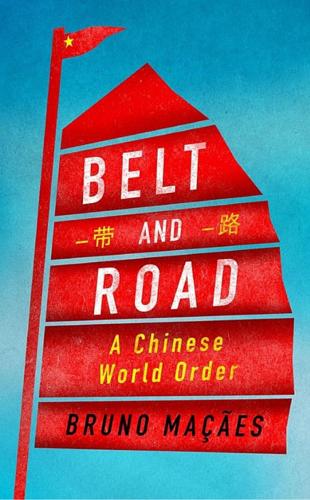
Belt and Road: A Chinese World Order
by
Bruno Maçães
Published 1 Feb 2019
To a considerable extent, sharp divides between regions of the kind we have been discussing have their root in the age of European colonial empires. They sometimes originated in the competition for territory and areas of influence between rival European powers. In other cases, they followed from the administrative imperative of each of these powers, which found it convenient to organize their territories in separate units. Often these divisions were superimposed on older and more permanent racial or religious divides, but European colonial power did much to reinforce them or even create them where they had a very incomplete meaning.
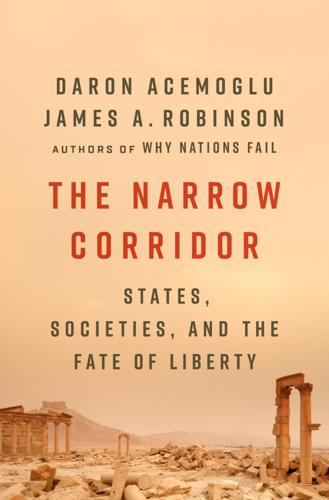
The Narrow Corridor: States, Societies, and the Fate of Liberty
by
Daron Acemoglu
and
James A. Robinson
Published 23 Sep 2019
The Postcolonial World Paper Leviathans are not restricted to Latin America and Africa; they inhabit many different parts of the world. Several of them, like the ones we discussed in this chapter, have one thing in common—they are products of European colonization. This is true even for Liberia, which wasn’t a colony so much as an outpost for later-freed slaves of a European colony, the United States of America. This is because the way that European colonial powers governed and manipulated the institutions of many of their colonies created the conditions for Paper Leviathans to emerge. What is it about the residues of colonization that created such a state? As we have already seen in the Latin American context, two axes were particularly important.
…
The Islamic empires evolved into a rigidly despotic direction for the reasons Ibn Khaldun identified. This despotic evolution was continued and if anything aggravated by Ottoman rule. There were few pathways for society to have a say in political decision making or any type of accountability for rulers save for rebellion. After World War I, European colonial powers replaced the Ottomans. Aspirations for self-governance and independence that had built up over the last several decades were quashed and a patchwork of artificial client states was soon created. They had little in common with existing political structures and boundaries, except for their penchant for despotism.
…
The classic ethnographic survey of the Tiv is Bohannan and Bohannan (1953). See Lugard (1922) for the most famous statement of his philosophy of indirect rule, and see Perham (1960) for a comprehensive biography. See Curtin (1995) on the incidence of stateless societies in West Africa at the time of European colonial conquest and Osafo-Kwaako and Robinson (2013) for some basic correlates. The Lugard quote is from Afigbo (1967, 694), and Afigbo (1972) is the seminal study of the warrant chiefs. Quotes from Bohannan are from Bohannan (1958, 3, 11). Akiga’s observation is from Akiga (1939, 264). The concept of illegibility is from Scott (2010).
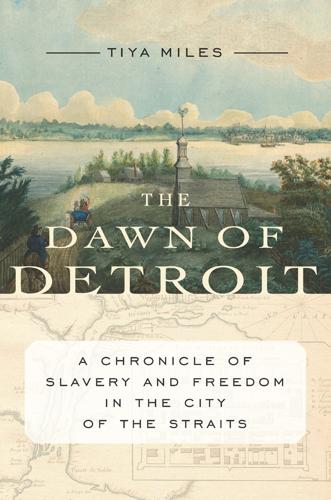
Dawn of Detroit
by
Tiya Miles
Published 13 Sep 2017
Such a town could extend its economic reach across the western interior, accessing a vast array of indigenous trade alliances and moving prized materials from the Great Lakes hinterlands into the lucrative markets of North America’s eastern colonies and western Europe’s populous cities. These materials consisted in the main of treated and untreated animal skins and items crafted from peltry, like textured beaver hats of the kind we can imagine on the head of a mature Benjamin Franklin. The eighteenth century was the height of the international fur trade, which locked European colonial powers in fierce competition for indigenous trading partners: Indian men who had the skills to hunt the animals that were driving a fashion frenzy among the transatlantic cosmopolitan set. The vessels that launched from a site such as Detroit carrying away beaver, fox, and deer parts would return from the East with capital in the form of credits and payments, as well as with sundry practical wares like cloth, guns, and kettles.
…
Detroit was on the far periphery of European settlement. In some senses the town was like an island in an archipelago, separated from other colonial cities by long stretches of water but connected to imperial networks through trade. Surrounded by indigenous villages and hunting grounds, Detroit had no immediate support from either European colonial or American territorial infrastructures. It possessed what legal historian Lea VanderVelde has described as “frontier characteristics,” which meant the town was perpetually engaged in “building itself up, inventing first generation solutions in the absence of long-standing institutional foundations.”
…
And in his forthcoming second study of indigenous peoples in the Great Lakes, Michael Witgen is endeavoring to formulate a capacious and exacting theoretical frame that historicizes the racialization of Indians in the age of U.S. expansion and interprets what he calls the “political economy of plunder” that links black and Native trajectories.16 In addition to charting complex cultural and political relations between European colonies and indigenous communities, historians of Native America have wrestled with connotations of the term “frontier,” rightly contesting the customary meaning of the word derived from historian Frederick Jackson Turner’s 1894 thesis of westward expansion.17 In Turner’s work and in American culture more generally, the word “frontier” has long suggested a line of difference between advancing white “civilization” and Native American “savagery,” where cross-cultural confrontation ultimately gives way to the perfection of the American character and expansion of the colonial enterprise captured by the idea of “manifest destiny.”
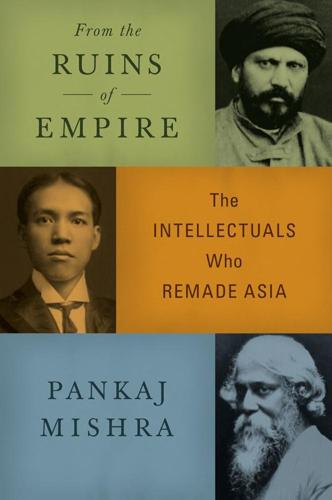
From the Ruins of Empire: The Intellectuals Who Remade Asia
by
Pankaj Mishra
Published 3 Sep 2012
Muslims deeply resented the granting of apparently blasphemous legal equality to non-Muslims who not only remained exempt from military conscription but could also call upon their European Christian patrons to exert pressure upon the Ottoman state with impunity (even as Muslims remained without rights in Asian and African countries administered by European colonial powers). Looking back at European attitudes towards Turkey, Hüseyin Cahid, Turkey’s most prominent journalist in the early twentieth century, explained why he and other Young Turks became such fervent nationalists and anti-imperialists: The Turk was a tyrant, an oppressor, he knew nothing of right and justice.
…
Watching Chinese labourers diligently at work in the port city, he made a canny prophecy about the future balance of power in international relations: ‘The nations which now own the world’s resources fear the rise of China, and wish to postpone the day of that rise.’29 But Tagore seemed to derive no comfort from the prospect of any country rising in the manner prescribed by the modern West. ‘The New Japan is only an imitation of the West,’ he declared at his official reception in Tokyo, which included the Japanese prime minister among other dignitaries. This did not go down well with his audience, for whom Japan was a powerful nation and budding empire, and India a pitiable European colony. Tagore had received most of his impressions of the country from Okakura, but Japan had changed rapidly in the period between 1900 and 1916. In such books as The Awakening of Japan (1904) and The Book of Tea (1906), Okakura himself had begun to advocate a more assertive Japanese identity. ‘When will the West understand, or try to understand, the East?’
…
According to Foucault, ‘Islam, which is not simply a religion, but an entire way of life, an adherence to a history and a civilization – has a good chance to become a gigantic powder keg, at the level of hundreds of millions of men.’51 The Iranian Islamic Revolution became the prime example of how, in the absence of any democratic politics, Muslims could use Islamic themes of sacrifice and martyrdom to challenge despotic and corrupt rulers who claimed legitimacy both domestically and in the West as modernizers and secularizers. Although never a European colony, oil-rich Iran had been dominated by British and Russian imperialists since the nineteenth century. Al-Afghani had witnessed the first of the great anti-imperialist movements in 1891. There were more to come after the First World War. Not content with appropriating large parts of the Ottoman Empire, Lord Curzon, then the British foreign minister, hatched a scheme to annex Iran, convinced, as his early biographer Harold Nicolson put it, that ‘God had personally selected the British upper class as an instrument of the Divine Will’.
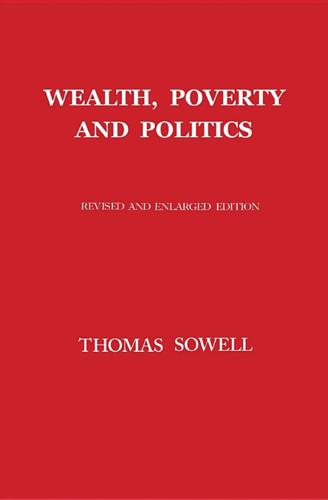
Wealth, Poverty and Politics
by
Thomas Sowell
Published 31 Aug 2015
Diseases have also affected the course of history. Europeans knew of the existence of Africa thousands of years before they learned of the existence of the Western Hemisphere. Yet European empires were established in the Western Hemisphere hundreds of years before the “scramble for Africa” began in the late nineteenth century and led to European colonial empires that extended throughout the continent. Diseases had much to do with the differing fates of these different regions of the world. Microorganisms that most of the humans involved knew nothing about at the time were, in effect, on the side of the Europeans during their conquests in the Western Hemisphere.
…
During the era of mass immigration from Europe to the United States, Polish immigrants from Russia or from Austria— Poland itself having been dismembered and absorbed into these empires— were almost always unskilled workers, but those relatively few Polish immigrants who did have specialized work skills as weavers, tailors or cabinet makers were predominantly from Prussia,52 where they acquired such skills from being located in a German culture. During the era of European colonialism, location near Western institutions like schools gave those segments of the conquered people in such locations major advantages over their compatriots in the hinterlands. Other locational differences created other locational windfall gains or windfall losses. In colonial Ceylon, for example, British missionaries set up schools in more favored portions of the island nation, while the British authorities assigned American missionaries to the less favored northern tip of the island, where the Tamil minority was concentrated.
…
So too was the spectacular rise of Scotland and Japan to the forefront of world achievements in a remarkably short time, as history is measured. On a smaller scale, various groups within particular non-Western countries seized upon educational opportunities presented by the presence of Western educational institutions during the era of European colonialism. Like the Scots and the Japanese, these indigenous groups often came from regions with geographic handicaps, such as soil too poor for the people in the region to support their growing population. The Ibos in the southern part of Nigeria and the Tamils in the northern part of Sri Lanka were among such groups in various times and places, including Indonesia, Algeria, and the Philippines.57 Armed with Western education and other Western cultural advantages, the Ibos and the Tamils spread out to other regions of their respective countries, outperforming other groups in businesses, civil service and the professions, bringing benefits to the general population, and at the same time stirring resentments of their striking success.
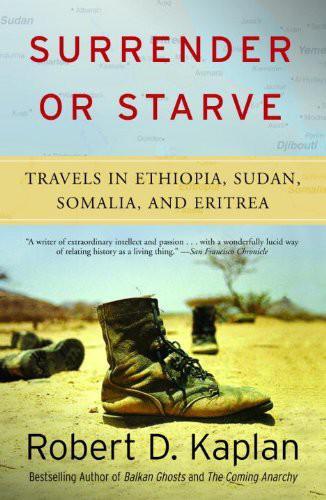
Surrender or Starve: Travels in Ethiopia, Sudan, Somalia, and Eritrea
by
Robert D. Kaplan
Published 1 Jan 1988
“Nevertheless, by 1889 all of Eritrea had been occupied, and Menelik [the Amhara king] had signed the Treaty of Ucciali, under which he recognized Italian rule over Eritrea.” The treaty demarcated the regional boundaries as they exist today. Selassie indicated that “two different imperial territories now existed side by side,” the one, Eritrea, governed by a white European colonial power; the other, Ethiopia, governed by a black African colonial power—the Amharas under Menelik—whose subjugation of the Tigreans to the north and of the Oromo people to the south was viewed by the indigenous inhabitants as no more preferable than any European-imposed tyranny. The fact that Eritreans, Tigreans, and Oromos viewed the black Amharas no differently than these three groups viewed the white European intruders is a truth that many in the liberal West may find hard to accept, but whose implications are crucial to a proper understanding of the present conflict.
…
According to Brussels-based columnist Giles Merritt, writing in an October 1985 International Herald Tribune, 1985 was “the year when the United States went into Africa, one of the few remaining areas of the world it had managed to stay out of. In the past Washington has been glad to leave much of Africa under the influence of the former European colonial powers. But three million tons of U.S. food aid … changed that.” Merritt feared that such a generous outpouring of emergency aid was bound to get the United States involved in “the quagmires of African politics. The sacks of emergency grain and the seed that the Sudanese have named ‘Reagan' may prove as sure a hook as President Kennedy's handful of military advisors in Vietnam.”
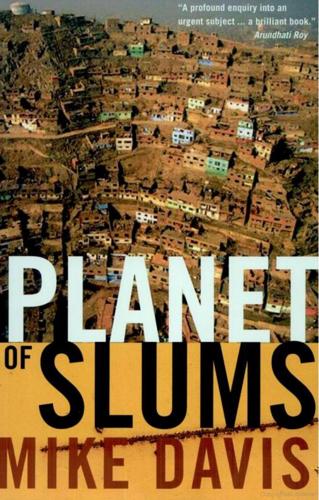
Planet of Slums
by
Mike Davis
Published 1 Mar 2006
Earlier in the twentieth century, the massive transfer of rural poverty to cities was prevented by the economic and political equivalents of city walls - both urban entry and, even more importantly, substantive urban citizenship were systematically withheld from large parts of the agrarian population. Keeping the Peasants Out A principal barrier, of course, was European colonialism which, in its most extreme form in the British colonial cities of eastern and southern Africa, denied native populations the rights of urban land ownership and permanent residence. The British, always the ideologues of divide and rule, feared that city life would "detribalize" Africans and foster anticolonial solidarities.3 Urban migration was controlled by pass laws, while vagrancy ordinances penalized informal labor.
…
Public lighting was reserved for the European quarters. Overcrowding created a great hazard to health."10 Indeed, this almost universal refusal to provide even minimal sanitary infrastructures for the "native quarters" until the 1950s was more than stinginess: it.pointedly symbolized the lack of anyjiative "right to the city." But European colonialism was not the only international system of urban growth control. Although raised to power by peasant revolt, Asian Stalinism also tried to staunch the influx from the countryside. Initially the 1949 Chinese Revolution opened city gates to returning refugees and job-hungry peasant ex-soldiers.
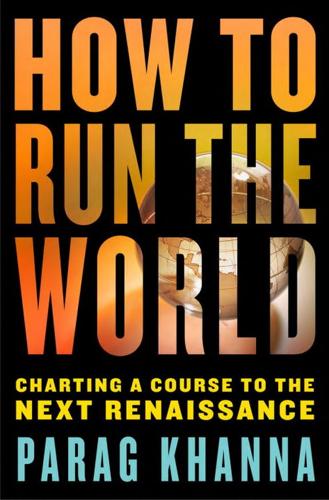
How to Run the World: Charting a Course to the Next Renaissance
by
Parag Khanna
Published 11 Jan 2011
The details of demobilizing armies, reforming police forces, creating ethnic reconciliation programs, and jump-starting power plants and hospitals are unique aspects of modern state building: There is no template for them. Instead, we are mostly state-building in places where there never really was a state. There would be no state building to speak of were it not for the aggressive European colonialism that created the international system we take for granted today. For centuries, European colonizers fanned out across the planet for commercial gain and geopolitical advantage—along the way creating one world under their hierarchy. They forced insular societies such as China and Japan to accept their consulates, compelled the modernization of the Ottoman bureaucracy, and in the name of a mission civilisatrice created coherent administrative structures in India and Africa.
…
There are clearly big differences between the old and new colonialism. As Tony Pipa, director of the NGO Leaders Forum, says, “Equating the two is like calling the Prius the new Hummer. They both get you from here to there, but the goals and values behind the design are completely different.” Unlike the previous European colonialism, which purposely sought to perpetuate dependency, the new colonialists want states to practice “responsible sovereignty” by which they protect their people and prevent threats from spilling over their borders.1 The new colonialism isn’t intentionally exploitative, condescending, or coercive—only unintentionally so.
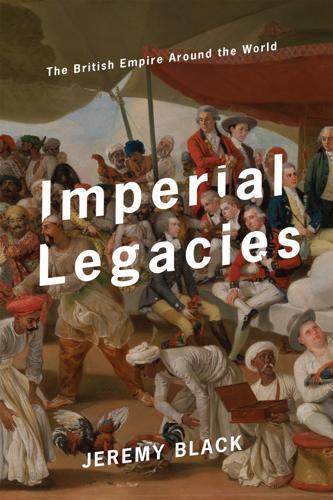
Imperial Legacies
by
Jeremy Black;
Published 14 Jul 2019
Subsequently, in March 2018, some of those involved took part in a violent blockade of the main SOAS building, their statement protesting at “the white-supremacist hetero-patriarchal capitalist order” of university life. Meanwhile, in February 2018, the controversy was over Birmingham Museum and Art Gallery’s exhibition “The Past is Now,” in which information boards claimed that “the relationship between European colonialism, industrial production and capitalism is unique in its brutality.” The key Birmingham politician of the Victorian period, Joseph Chamberlain, an exponent of a stronger British Empire who became secretary of state for the Colonies (1895–1903), was described as “still revered despite his aggressive and racist imperial policy.”
…
Hall wrote that she became an historian of Britain and empire in order to explain the legacies of colonialism for the British and that she started work on Thomas Macaulay in the wake of the “War on Terror,” or, rather, the “Global War on Terrorism.” Pressing on to observe that she was opposed to the 2003 Gulf War, Hall noted that she was: horrified by the claim that the West had the right to assume such positions of moral certitude, apparently with no memory of past “civilising missions,” key aspects of some phases of European colonialisms. This was the return of the … assumption that Britain, despite its loss of empire, could use force and legislate for those others who were stuck in barbaric times, who needed white knights to rescue them. Moral rectitude was masking new geo-political claims. Britain’s shameful history in Iraq, and subsequently in Afghanistan, seemed to be entirely forgotten.
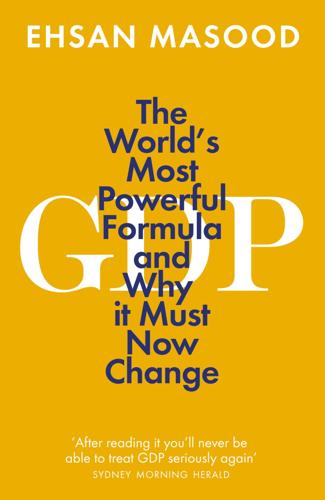
GDP: The World’s Most Powerful Formula and Why It Must Now Change
by
Ehsan Masood
Published 4 Mar 2021
“To my amazement I found that Harvard was putting together a team of economic advisers to go to Pakistan.”4 This was the famous Harvard Development Advisory Service, where Mahbub ul Haq would learn his trade as a growth architect, and where Papanek, blacklisted at home, would spend the next 60 years in a career at the centre of America’s international anti-communism crusade. America’s purge of those it considered to be communists was of course not restricted to its own borders. It competed with the Soviet Union to influence, if not control, the countries of the developing world that were becoming free from European colonialism. Both Moscow and Washington sent eye-watering amounts of aid, and shipped expensive weapons to support military dictatorships, so that countries could come round to their way of thinking and acting. Promoting economic growth was one (albeit small) part of America’s mission to destroy communism.
…
But Rostow would accomplish far more: he would be an active participant in enabling America’s government, the CIA, MIT and Harvard, and funders such as the Ford Foundation, to connect academic economists and their theories to the mission to support military dictatorships in countries that were emerging from centuries of European colonial rule. Rostow probably had more in common with Marx than he would care to admit. Both wanted a better life for citizens of the poorest countries. Both believed that this could be achieved in stages. And both advocated—or at least understood—that their aims could not be achieved without some degree of violence.
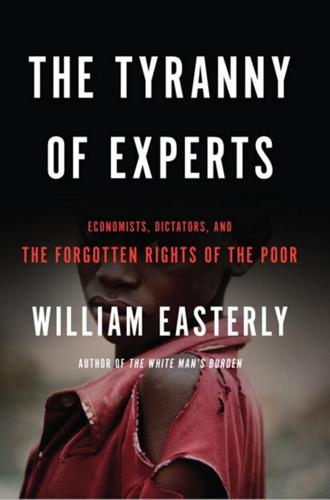
The Tyranny of Experts: Economists, Dictators, and the Forgotten Rights of the Poor
by
William Easterly
Published 4 Mar 2014
This article thereby firmly required colonial powers to protect their colonial subjects against—themselves.57 When the United Nations published its first report on development in 1947, Economic Development in Selected Countries: Plans, Programmes and Agencies, it included plans for “British African Non-Self-Governing and Non-Metropolitan Territories” and “French African Overseas Territories.” The introduction to the report lumps together all “governments of the less developed countries,” including the European colonial rulers of these territories next to local rulers like those in Argentina, Brazil, Chile, Poland, and Yugoslavia. The report declared that all members of this diverse group of autocrats, democrats, Stalinists, and colonizers shared the “ultimate aim in economic development” which “is to raise the national welfare of the entire population.”58 POSTWAR EMPIRE Was the new development justification for empire taken seriously after the war was over?
…
Already by the seventeenth century they had muscled into the role of key middlemen in East–West trade (in addition to intra-East trade) by playing off the Dutch and the Spanish against each other, trading silk, porcelain, furniture, sugar, and metal wares.15 Yet more Fujianese migration happened between the 1860s and 1930s, as European colonial plantations (such as rubber in British Malaya and Dutch Indonesia) were looking for a reliable labor force. The network of Fujianese merchants already in place was happy to help out, recruiting coolie labor back in Fujian, who then moved permanently to Malaya, Singapore, and Indonesia. The coolie laborers’ descendants were then available also to join the next generation of merchants in the thriving regional Fujianese trading network.16 The advice of the development experts as “official development” began after 1949 was to emphasize national industrialization over international trade.
…
They got these goods from northern Syria and the Syrian desert, southeastern Anatolia, Mosul, Iran, Diyarbakr, Arabia, and Basra. From Europe, the goods included woolens, raw metals, and other goods as diverse as firearms, clocks, paper, housewares, and chemical products, not to mention products of the European colonies such as dyes, spices, sugar, and coffee. From Aleppo, most of these goods were destined for re-export to cities in the interior, in Syria, Anatolia, Iraq, and Iran.26 The twentieth century was a series of nationalist disasters for Aleppo. After World War I, Aleppo got its first blow from the carving up of the Levant into the French colonies (called League of Nations “mandates”) of Syria (containing Aleppo) and Lebanon; the British colonies (mandates) of Palestine, Jordan, and Iraq; and independent Turkey.
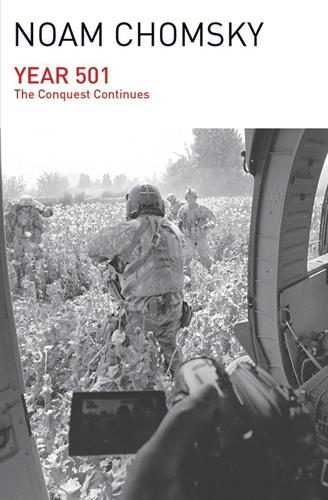
Year 501
by
Noam Chomsky
Published 19 Jan 2016
Part I Old Wine, New Bottles Chapter 1 “The Great Work of Subjugation and Conquest” The year 1992 poses a critical moral and cultural challenge for the more privileged sectors of the world-dominant societies. The challenge is heightened by the fact that within these societies, notably the first European colony liberated from imperial rule, popular struggle over many centuries has achieved a large measure of freedom, opening many opportunities for independent thought and committed action. How this challenge is addressed in the years to come will have fateful consequences. October 11, 1992 brings to an end the 500th year of the Old World Order, sometimes called the Colombian era of world history, or the Vasco da Gama era, depending on which adventurers bent on plunder got there first.
…
Reality itself is the “transcendent purpose” of the nation, which is indeed noble; the abuse of reality is the irrelevant factual record.3 The record is misleading if it keeps to the support for horrendous atrocities and fails to reveal the welcome accorded them when they are seen to be in a good cause, a leading feature of the 500-year conquest. The reaction to the US-directed atrocities in Central America in the past decade is one well-studied example. To illustrate how firmly this pillar of the traditional culture is in place, it would only be fitting to consider the earliest Asian outpost of European colonialism, the Dutch East Indies, during the era of US global management. 2. Securing the Anchor “The problem of Indonesia” is “the most crucial issue of the moment in our struggle with the Kremlin,” Kennan wrote in 1948. “Indonesia is the anchor in that chain of islands stretching from Hokkaido to Sumatra which we should develop as a politico-economic counter-force to communism” and a “base area” for possible military action beyond.
…
As noted earlier, it was not until the 1960s that the truth began to break through, eliciting scorn and protest from outraged loyalists.3 The Spanish effort to plunder the island’s riches by enslaving its gentle people were unsuccessful; they died too quickly, if not killed by the “wild beasts” or in mass suicide. African slaves were sent from the early 1500s, later in a flood as the plantation economy was established. “Saint Domingue was the wealthiest European colonial possession in the Americas,” Hans Schmidt writes, producing three-quarters of the world’s sugar by 1789, also leading the world in production of coffee, cotton, indigo, and rum. The slave masters provided France with enormous wealth from the labor of their 450,000 slaves, much as in the British West Indian colonies.
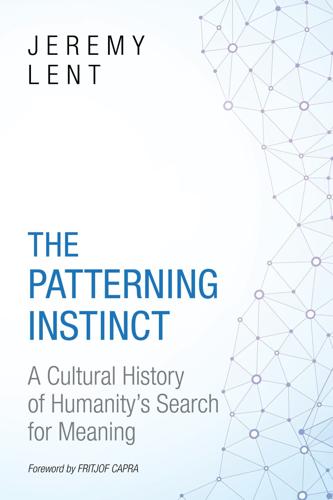
The Patterning Instinct: A Cultural History of Humanity's Search for Meaning
by
Jeremy Lent
Published 22 May 2017
The smaller countries of Southeast Asia are known as “the East Indies” because of the tremendous cultural, religious, and political prominence of the Indian subcontinent in their history. Indian historians indeed refer to these countries in antiquity as “Indian colonies.” However, rather than being conquered and pillaged like the European colonies of the past few centuries, they became part of a peaceful trading network that advanced their security and cultural sophistication.34 Throughout history, there have, of course, been all kinds of brutal conquerors with no qualms about slaughtering their enemies and viciously terrorizing their subjects.
…
New York: Penguin, 2007. A comprehensive and compelling environmental perspective on world history. Abu-Lughod, Janet L. Before European Hegemony: The World System AD 1250–1350. New York: Oxford University Press, 1989. An illuminating portrayal of the global order that existed before the rise of European colonialism. Stannard, David E. American Holocaust: Columbus and the Conquest of the New World. New York: Oxford University Press, 1992. An unflinching and shocking exposé of the brutality unleashed by the European conquest of the New World. Chapter 17. The Enigma of the Scientific Revolution Huff, Toby E.
…
Meditations Sacrae, cited in Owen Flanagan, The Really Hard Problem: Meaning in a Material World (Cambridge, MA: MIT Press, 2007), 221; The Great Instauration, cited in Hans Jonas, The Phenomenon of Life: Toward a Philosophical Biology (Evanston: Northwestern University Press, 2001), 188–89. 55. See Leiss, Domination of Nature, xiv. 56. M. E. Townsend, European Colonial Expansion since 1871 (Chicago: J. Lippincott, 1941), 19; A. Supan, Die territoriale Entwicklung der Europaischen Kolonien (Gotha, 1906), 254, https://www.mtholyoke.edu/acad/intrel/pol116/colonies.htm (accessed July 10, 2013). 57. Ponting, New Green History, 175–76. 58. Ibid., 175–76, 197–98.
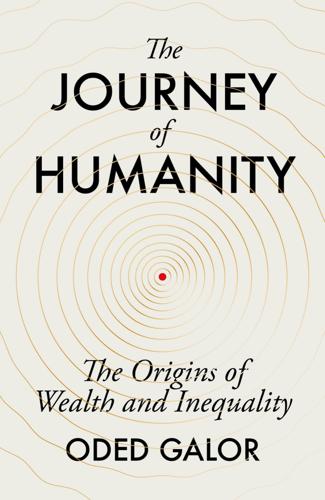
The Journey of Humanity: The Origins of Wealth and Inequality
by
Oded Galor
Published 22 Mar 2022
Likewise, the Atlantic triangular trade, which was at its height in the preceding centuries, and the growing trade with Asia and Africa had a major impact on Western European economies. Not only was the trade in goods itself highly profitable, it provided raw materials such as timber, rubber and raw cotton for the process of industrialisation, all cheaply produced through slave and forced labour. Meanwhile, the production in the European colonies of agricultural products such as wheat, rice, sugar and tea enabled European nations to enhance their specialisation in the production of industrial goods, and benefit from the expanding markets for their products in the colonies.[10] In the UK especially, the share of national income derived from international trade grew: from 10 per cent in the 1780s to 26 per cent in the period 1837–45, and to 51 per cent in 1909–13.
…
Large regions of North America, Australia and New Zealand, which had been relatively sparsely populated and less advanced technologically, enjoyed rapid economic growth after they were colonised, though of course the growth was experienced not by the native populations of these lands, but rather by a rapidly expanding immigrant population from Europe. Conversely, the densely populated regions of Meso and South America that had given rise to the most advanced pre-Columbian civilisations – home to the flourishing Aztec, Inca and Maya cultures – encountered slower development in the modern era and were overtaken by the European colonies in North America.[17] This was largely an unanticipated reversal of fortunes. The French philosopher Voltaire spoke for many when he belittled the British and French skirmishes over their colonies in North America as fighting ‘over a few acres of snow’. The Seven Years War in the period 1756–63 ended with a British victory.
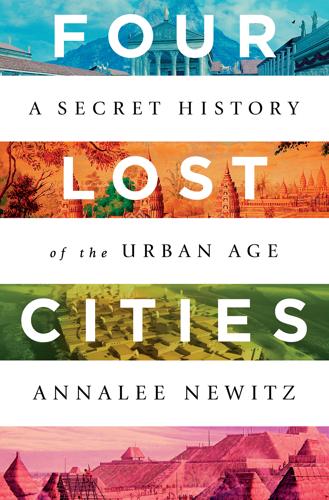
Four Lost Cities: A Secret History of the Urban Age
by
Annalee Newitz
Published 2 Feb 2021
Like Santiago X, Vizenor looks to an indigenous future full of living cultures that are always transforming. We may not know exactly what Cahokia meant to the people who lived there, but their traditions thrive in revitalized communities, reconfigured in the wake of the political disaster that was European colonialism. As Roanhorse and other indigenous artists have pointed out, tribal cultures today survived an apocalypse and are building something new. Cahokia is part of a history of indigenous American social movements that recently took the form of protests to stop an oil pipeline on land that belongs to the Standing Rock Sioux tribe.
…
Louis, Illinois, 9, 10, 207, 212, 228–33 Ebusus, 86 École française d’Extrême-Orient (EFEO), 168, 184–85 Edwardsville, Illinois, 222 egalitarianism, 75 Egyptians, 86 Ellis, Steven, 105–6, 108–10 Emerald site, 222–23 Emerson, Tom, 244–45 engineering, 52 environmental crises, 5, 238, 239–40, 257–58 ancient, 256 fragmentation and, 249–50 modern, 256, 257 Envisioning Cahokia, 234 erect knotweed, 220 Eumachia, 95 Europe, executions in, 216–17 European colonialism, 217, 253 European Research Council, 152 Evans, Damian, 2–3, 160, 169, 178–79, 196–97, 200 city grids and, 155 lidar mapping and, 151–53, 167, 181, 185 excavation blocks, 229–32, 246–47 executions, 216–17 expansion, 256, 257 famine, 64 Fargher, Lane, 236 farming, 51, 54–55, 62, 72–73, 222 agricultural complexity, 73 in Angkor, 146–61 in Cahokia, 218–24, 251 in Çatalhöyük, 61, 73 development of, 27 harvesting, 219–22, 223 men and, 222 shock of agricultural life, 35 urbanism and, 54–55, 73 feasts, 221, 227 Ferguson, Missouri, 254 fertility, 215–16 fertility rituals, 244, 245 fertility symbols, 46–51 festivals, 157, 174, 215–16 in Angkor, 157, 174 figurines, 46–51, 56, 213, 214, 219, 220–21, 251 Fiorelli, Giuseppe, 129 fire, 246–47.

Dark Matters: On the Surveillance of Blackness
by
Simone Browne
Published 1 Oct 2015
Racializing surveillance is a technology of social control where surveillance practices, policies, and performances concern the production of norms pertaining to race and exercise a “power to define what is in or out of place.”44 Being mindful here of David Theo Goldberg’s caution that the term “racialization,” if applied, should be done with a certain precision and not merely called upon to uncritically signal “race-inflected social situations,” my use of the term “racializing surveillance” signals those moments when enactments of surveillance reify boundaries, borders, and bodies along racial lines, and where the outcome is often discriminatory treatment of those who are negatively racialized by such surveillance.45 To say that racializing surveillance is a technology of social control is not to take this form of surveillance as involving a fixed set of practices that maintain a racial order of things. Instead, it suggests that how things get ordered racially by way of surveillance depends on space and time and is subject to change, but most often upholds negating strategies that first accompanied European colonial expansion and transatlantic slavery that sought to structure social relations and institutions in ways that privilege whiteness. Racializing surveillance is not static or only applied to particular human groupings, but it does rely on certain techniques in order to reify boundaries along racial lines, and, in so doing, it reifies race.
…
In those texts he touches on such topics as sugar production, punishment, and abolition. Writing during the 1770s on “afflictive capital punishment,” that being when the degree of pain imposed upon the body surpasses that necessary to produce death, Bentham details the severe methods of torture and punishment reserved for “negro slaves” of the European colonies in the West Indies for the crime of rebellion, a crime so named, he writes, ”because they are the weakest, but which, if they were the strongest would be called an act of self-defense.”2 While acknowledging Europe’s desire for “sugar and coffee” and other crops produced through enslaved labor in the colonies, he suggests that when these goods are obtained by keeping people enslaved “in a state in which they cannot be kept but by the terror of such execution: are there any considerations of luxury or enjoyment that can counterbalance such evils?”

More: The 10,000-Year Rise of the World Economy
by
Philip Coggan
Published 6 Feb 2020
They moved to escape flood, or drought; they moved to find new lands to farm, or seas to fish; they moved to find new opportunities away from their clans or tribes; they moved to escape conquering armies and oppressive states; they moved unwillingly, in the case of the 10 to 12 million Africans subjected to the Atlantic slave trade; they moved as invaders, like the European colonial powers or the Mongol empire; and they moved, as was the case with most immigrants at Ellis Island, in search of a fresh start in a new world. All humans are immigrants, or are descended from them, differing only in the date when we, or our ancestors, arrived at our current home. Over history, these flows have had enormous political and economic significance.
…
By the end of the 1970s, the defects of the Latin American model were fairly clear; too much debt, inefficient industries, and too much state control (in 1979, the Brazilian government owned 28 of the country’s 30 largest firms).69 Those defects would prove catastrophic in the 1980s. Africa, alas, also had limited economic success in this era. The continent largely managed to throw off its European colonial masters, with the obvious exceptions of South Africa and Zimbabwe (then Rhodesia). But the newly independent countries were dependent on commodity exports, and were often run by kleptocratic dictators. The per capita growth rate from 1950 to 1973 was 2%, below the world average, and half the growth rate of western Europe.
…
Sub-Saharan Africa has the lowest agricultural yields in the world: farmers produce 1.2 tonnes of grain per hectare, compared with an average of 3 tonnes in the developing world and 8 tonnes in North America and Europe.54 The continent has also been handicapped by terrible government. Independence from the European colonial powers did not bring democracy but rather one-party rule, whether in the form of a kleptocrat like Mobutu of Zaire (now the Democratic Republic of Congo) or a socialist state like Tanzania. In the latter, President Julius Nyerere nationalised industry, seized foreign-owned businesses, and forced peasants to sell grain to the government for as little as a fifth of its value.55 The 21st century has seen an improvement in Africa’s fortunes.
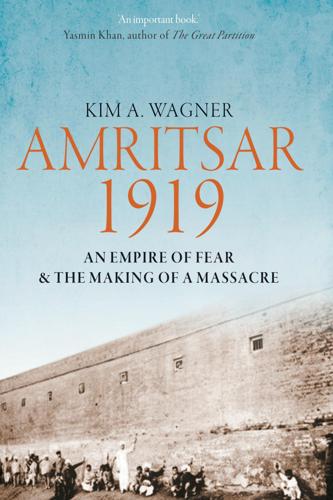
Amritsar 1919: An Empire of Fear and the Making of a Massacre
by
Kim Wagner
Published 26 Mar 2019
This is more than just an academic quibble: when the facts cease to matter, the very grounds upon which historical claims are made, or restitution demanded, are critically undermined. This ahistorical conceptualisation of the massacre is by no means restricted to the public sphere or popular debates. For instance, in one of the recent scholarly interventions in global history, A World Connecting, Charles S. Maier simply lists the massacre among the litany of European colonial conflicts of the early twentieth century, describing how ‘General Reginald Dyer famously emptied his machine guns against assembled Indians at Amritsar in 1919.’8 The fact that Dyer used neither machine guns nor all his ammunition is yet again an indication of the extent to which the Amritsar Massacre is referenced – not because of what happened, but rather because of what the event is taken to represent in the most abstract sense.
…
, Daily Mail, 12 April 2018. 10.Wedgwood, Hansard, HC, Deb. 8 July 1920, vol. 131, col. 1788. 11.Cooper, The Crisis in Punjab, pp. 151–2. 12.Spoor, Hansard, HC, Deb. 8 July 1920, vol. 131, col. 1739. 13.Surtees, ibid., col. 1777. 14.Collett, The Butcher of Amritsar, pp. 390–1. 15.Mohan, An Imaginary Rebellion, II, p. 795. 16.Drake-Brockman, Evidence, DIC, I, p. 172. 17.Collett, The Butcher of Amritsar, p. 285. 18.Partha Chatterjee, The Nation and its Fragments: Colonial and Postcolonial Histories (Oxford: Oxford University Press, 1994), pp. 10 and 19. 19.Bailkin, ‘The Boot and the Spleen’. 20.Sherman, State Violence, pp. 1–37. 21.Elisabeth Kolsky, ‘“Fanaticism” and State Violence in British India’, American Historical Review, 120, 4 (Oct. 2015), pp. 1218–46; and Condos, ‘“Fanaticism” and the Politics of Resistance along the North-West Frontier of British India’. 22.See also Michelle Gordon, ‘British Colonial Violence in Perak, Sierra Leone and the Sudan’ (unpublished PhD thesis, Royal Holloway, 2017). 23.See Wagner, ‘Savage Warfare’; and Sven Lindqvist, Exterminate All the Brutes (London: Granta, 2002). 24.Wagner, ‘Calculated to Strike Terror’. 25.See Huw Bennett, ‘The Other Side of the COIN: Minimum and Exemplary Force in British Counterinsurgency in Kenya’, Small Wars & Insurgencies, 18, 4 (2007), 638–64; and David French, ‘Nasty Not Nice: British Counter-insurgency Doctrine and Practice, 1945–1967’, Small Wars & Insurgencies, 23, 4–5 (2012), pp. 744–61. 26.Priya Satia, ‘The Defense of Inhumanity: Air Control in Iraq and the British Idea of Arabia’, American Historical Review, 111 (Feb. 2006), pp. 16–51; and Sven Lindqvist, A History of Bombing (New York: New Press, 2001). 27.See John Newsinger, British Counterinsurgency: From Palestine to Northern Ireland (Basingstoke: Palgrave Macmillan, 2001); David French, The British Way in Counterinsurgency, 1945–1967 (Oxford: Oxford University Press, 2011); Huw Bennett, Fighting the Mau Mau: The British Army and Counter-insurgency in the Kenya Emergency (Cambridge: Cambridge University Press, 2013); and Brian Drohan, Brutality in an Age of Human Rights: Activism and Counterinsurgency at the End of the British Empire (Ithaca, NY: Cornell University Press, 2017). 28.Major-General Sir Charles W. Gwynn, Imperial Policing (London: Macmillan, 1934). See also Martin Thomas, Violence and Colonial Order: Police, Workers and Protest in the European Colonial Empires, 1918–1940 (Cambridge: Cambridge University Press, 2012). 29.Churchill, Hansard, HC, Deb. 8 July 1920, vol. 131, col. 1728. 30.E.J. Thompson, Other Side of the Medal, p. 97. 31.O’Dwyer, Evidence, DIC, VI, in Datta, New Light, I, p. 140. See also Irving, Evidence, DIC, III, p. 21. 32.I have further developed this argument in Wagner, ‘Calculated to Strike Terror’, but see also Vann ‘Fear and Loathing in French Hanoi’. 33.
…
Swinson, A., Six Minutes to Sunset: The Story of General Dyer and the Amritsar Affair (London: Davis 1964). Tambiah, S., Levelling Crowds: Ethnonationalist Conflict and Collective Violence in South Asia (Berkeley, CA: University of California Press, 1996). Thomas, M., Violence and Colonial Order: Police, Workers and Protest in the European Colonial Empires, 1918–1940 (Cambridge: Cambridge University Press, 2012). Tinker, H., The Ordeal of Love: C.F. Andrews and India (Delhi: Oxford University Press, 1979). Townshend, C., The British Campaign in Ireland 1919–1921: The Development of Political and Military Policies (London: Oxford University Press, 1975).
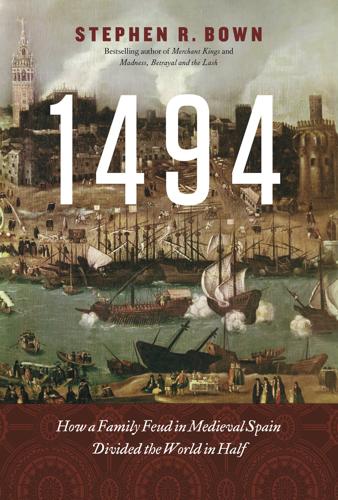
1494: How a Family Feud in Medieval Spain Divided the World in Half
by
Stephen R. Bown
Published 15 Feb 2011
The island was never returned to Spain, despite the high language of the many treaties and documents attesting to Spanish exclusivity in the Caribbean; language in Europe was one thing, whereas actions across the ocean were another altogether. The Dutch West India Company was also gearing up its activities at this time, founding Manhattan as a base for assaults on Spanish shipping in the Caribbean. As Spanish sea power waned, other European colonies grew more prosperous. The vast mountains of bullion that paid for Spain’s prominence in Europe was only as secure as the ships that carried them thousands of miles across the Atlantic, through waters ringed by dangerous reefs, infested with pirates and privateers, and prone to disastrous and unpredictable storms.
…
Hakluyt, Richard. Voyages of Drake and Gilbert: Select Narratives from the Principal Navigations of Hakluyt. Oxford: Clarendon Press, 1909. Hanke, Lewis. The Spanish Struggle for Justice in the Conquest of America. Philadelphia: University of Pennsylvania Press, 1949. Hart, Jonathan. Comparing Empires: European Colonialism from Portuguese Expansion to the Spanish-American War. New York: Palgrave Macmillan, 2003. Hart, Jonathan. Empires and Colonies. Cambridge: Polity, 2008. Hawthorne, Daniel. Ferdinand Magellan. Garden City, NY: Doubleday, 1964. Hibbert, Christopher. The Borgias and Their Enemies, 1431–1519.
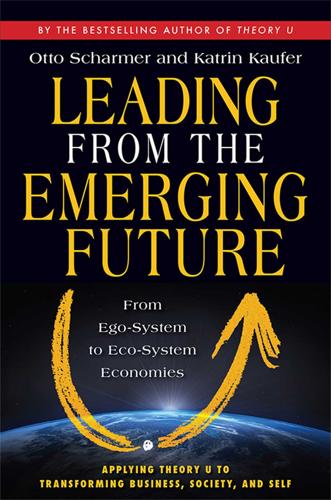
Leading From the Emerging Future: From Ego-System to Eco-System Economies
by
Otto Scharmer
and
Katrin Kaufer
Published 14 Apr 2013
The state-centered 1.0 version of society never had a strong home base in the United States. In fact, 1.0 institutions, seen from a US perspective, might resemble more what people did not like about Europe—what made them leave the Old World for the New World. Early Society 2.0 in America was not formed to limit an oppressive US state, but to limit the oppressive European colonial states. As a consequence, even today, mistrust of government or anything that looks like a 1.0 structure runs deep in many parts of US culture. The 2.0 version of a market economy, however, was firmly grounded at home. Throughout the twentieth century, particularly during the Great Depression of the 1930s, negative externalities in the form of mass unemployment and poverty moved the United States toward Society 3.0.
…
When the nineteenth-century colonialist Europeans and other Westerners imposed a ruthless regime of exploiting the soil and the people of Africa, millions of slaves were sold to the Americas and elsewhere. Thus, the introduction of the modern state came with an iron (and malevolent) fist. The governments that were put in place by European colonial powers first and foremost served those powers’ interests. The Arab revolution of 2011 that was ignited in Tunisia and Egypt is directed against the last strongholds of those cynical and corrupt 1.0 regimes that have continued to exist in North Africa, where Western powers have repeatedly turned a blind eye to civil rights violations in exchange for cheap oil.
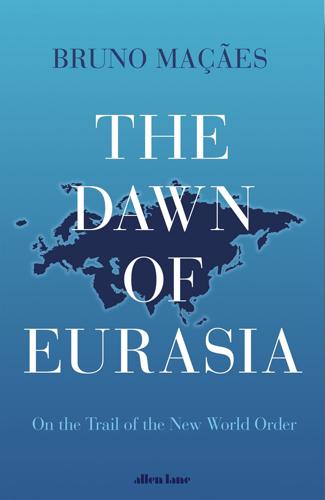
The Dawn of Eurasia: On the Trail of the New World Order
by
Bruno Macaes
Published 25 Jan 2018
For him this had nothing to do with geography and all to do with history, with a vision of Russia under the czars as medieval and ‘shamefully backward’.16 Modernity or capitalism or industrialization – depending on which theory you subscribed to – were seen as originally European, but capable of expanding worldwide. Over the nineteenth century the term ‘European’ was slowly replaced with ‘Western’, with the obvious intention of signalling both the universal appeal of modern ideas and the binary opposition to the old society. This opposition was an important underpinning of European colonialism, but it also served as a substratum for those who, starting in Japan in the second half of the nineteenth century, argued that Asia could embrace modernity and join the group of developed nations. Fukuzawa Yukichi famously argued that Japan should prevent the onslaught of Western civilization by casting its lot in with it, sailing the same waves, enjoying the same fruits of civilization.
…
One of the ironies of political geography in these parts is that China, the eastern empire, sits to the west and Russia, a European power, confronts it to the east. A swath of Russian territory cuts China’s Heilongjiang Province off from the Sea of Japan. Look again, more carefully, and you will realize why so many in Beijing regard the Russian Far East territory as the last remnant of European colonialism in Chinese lands. Is this monument a symbol, a proclamation that the East is Chinese? The giant character is 49 metres tall, an allusion to the founding date of the People’s Republic. In the enveloping square there is also a map of China drawn on the ground and a number of pavilions. The border guards at Kazakevichevo, while being careful not to disagree with the island’s partition, expressed obvious concerns about how it changed the security situation in Khabarovsk, the second city in the Russian Far East after Vladivostok.
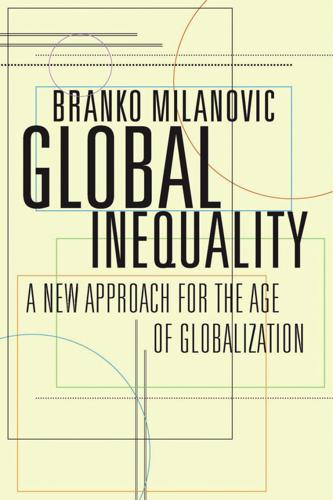
Global Inequality: A New Approach for the Age of Globalization
by
Branko Milanovic
Published 10 Apr 2016
But as the upwardly rising line in the figure shows, that changed completely over the next century. The proportions reversed: by the mid-twentieth century, 80 percent of global inequality depended on where one was born (or lived, in the case of migration), and only 20 percent on one’s social class. This world is best exemplified by European colonialism in Africa and Asia, where small groups of Europeans disposed of incomes a couple of hundred times greater than those of the native people.11 The key point is not just to compare the incomes of Europeans in Africa with those of Africans, but to realize that these were typical incomes for such classes of people in western Europe.12 It is by juxtaposing Europeans living in close physical proximity with Africans or Asians that we can see how stark the differences were.
…
Theil (0), also known as the entropy index, is the only one of the popular measures of inequality in which the absolute values of inequality calculated for class (or location) do not change when the other component (location or class) is fully equalized. As a result, if the class component of Theil is calculated to be x with the actual data, then the hypothetical elimination of all locational inequalities will leave the class component (and thus the total Theil) at x. 11. It is worth mentioning here the increased spread of European colonialism, which achieved one of its high points in 1914. In 1914, almost 42 percent of the world population lived in colonies. The most important powers were Great Britain, which controlled 24 percent of the world population, and France, with about 6 percent. 12. In some individual cases, however, Europeans might have fared better by going to colonies than by staying at home. 13.
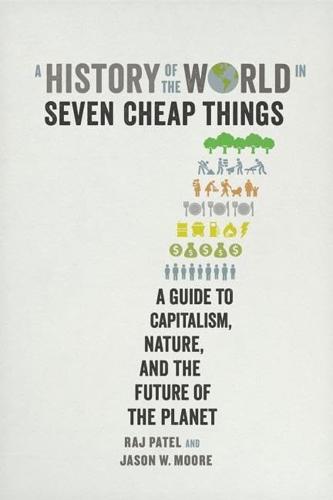
A History of the World in Seven Cheap Things: A Guide to Capitalism, Nature, and the Future of the Planet
by
Raj Patel
and
Jason W. Moore
Published 16 Oct 2017
This short book isn’t, however, a history of the whole world. It’s the history of processes that can explain why the world looks the way it does today. The story of these seven cheap things illustrates how capitalism expanded to yield maps like the one below, showing how small a portion of the earth has lain outside the scope of European colonial power. We’ll explain precisely what we mean by cheap below. First we need to make the case that it’s not just some natural human behavior but rather a specific interaction between humans and the biological and physical world that has brought us to this point. Map 2. Parts of the world colonized by Europe.
…
Amen.13 What was normal under Mayan religious codes was retold in imperial cadences as a scandal that demanded swift action by the Spanish. These priests may have been placed elsewhere as a result, but such acts of resistance and subversion weren’t able to stop the policing of which bodies did what. In her studies of colonial history, Ann Stoler observes a long line of European colonial fantasies and fears about Indigenous sexualities that sat atop some very rigid ideas about order and power: “Who wedded and bedded whom in the colonies of France, England, Holland and Iberia was never left to chance.”14 Recent archaeology has suggested just how central the policing of sexuality and bodies was to the imperial project.
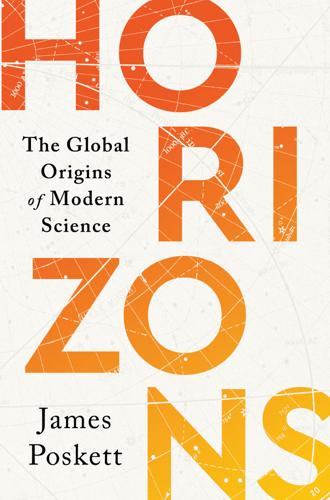
Horizons: The Global Origins of Modern Science
by
James Poskett
Published 22 Mar 2022
But at least in the early decades of the twentieth century, it was much more important to emphasize the revolutionary advances made under communism rather than anything achieved under the old regime.10 Things played out slightly differently in Asia and the Middle East, although ultimately with similar consequences. The Cold War was a period of decolonization, in which many countries finally gained independence from European colonial powers. Political leaders in places like India and Egypt desperately wanted to forge a new sense of national identity. Many looked to the ancient past. They celebrated the achievements of medieval and ancient scientific thinkers, ignoring much of what had happened during the period of colonialism.
…
The French East India Company even employed a missionary – named Pierre Poivre, no less – to smuggle seeds and saplings out of Southeast Asia to be grown in the new garden. The British did a similar thing in India, establishing a botanical garden in Calcutta in 1786 with the hope of growing cinnamon in order to break the Dutch monopoly. By the end of the eighteenth century, most European colonies – including Jamaica, New South Wales, and the Cape Colony – had a botanical garden. These, connected to the major botanical gardens in Europe, such as Kew Gardens in London, acted as important sources of information on the natural history of the world.7 I. Slavery and Botany Arriving in Jamaica in 1687, Hans Sloane headed for the mountains.
…
In another article, Gurevitch even went as far as to claim that a certain combination of rhesus antigens was shared by ‘all Jewish communities’. This, he argued, ‘suggests the common origin of the Jewish people’.71 The second half of the twentieth century was a period of major political change in the Middle East. Following the Second World War, European colonial empires were forced to withdraw from the region – the British from Egypt and Palestine, the French from Syria and Lebanon. This led to the creation of a number of new states, including the State of Israel in 1948. In Israel, as elsewhere, modern science was widely understood to be essential for the success of the new nation.
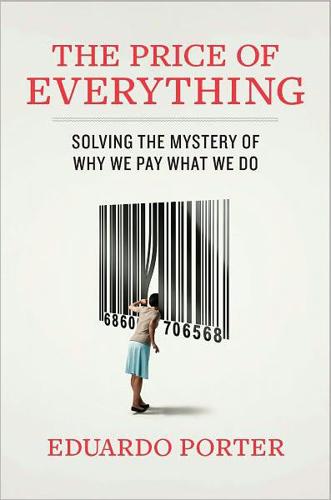
The Price of Everything: And the Hidden Logic of Value
by
Eduardo Porter
Published 4 Jan 2011
Instead, they feature dowries, payments from the family of the bride to the groom that are virtually unheard of in polygamous cultures. That’s probably why many traditional monogamous societies have been prone to female infanticide and feticide. Polygamy faded over the past two thousand years, first in Europe and then across much of the world, pushed by European colonial expansion. But it doesn’t seem to have been due to the opposition of women. The more likely reason is that men turned against it. One theory posits that economic development fostered monogamy because of the way it changed the reproductive goals of rich men. In less developed societies where wealth was mostly inherited, it made no sense to invest in educating one’s children.
…
That kind of money seems like a fairly potent incentive for their employers to enslave them. So why don’t they? Perhaps we’ve learned to be repulsed by slavery. But the historical record suggests that societies’ choice of working conditions has less to do with values and morality, and more with the profitability of how labor is organized. From sixteenth-century Russia to the European colonies in the New World, the decision of whether to employ indentured or free workers has hinged on whether it is cheaper to pay a wage or to feed, clothe, and house slaves while paying for security to keep them enslaved. Throughout history, slavery was rare in subsistence economies, such as early hunter-gatherer societies where people produced just enough to stay alive.
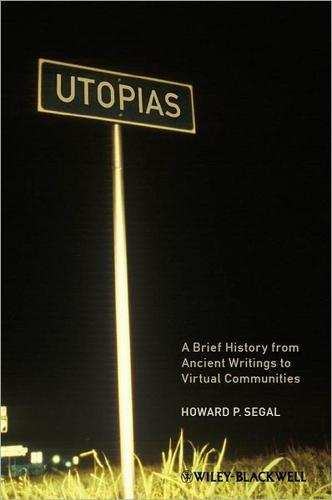
Utopias: A Brief History From Ancient Writings to Virtual Communities
by
Howard P. Segal
Published 20 May 2012
He contends that the prevailing negative connotation of speed in relation to clocks, schedules, and Frederick Taylor’s stopwatch Scientific Management was gradually “rerouted into the excessive speed of individual pleasure.”67 164 Utopia Reconsidered The automobile was not the only invention to provide that pleasurable experience, but it transcended all others, allowing people “to feel modernity in their bones.”68 Duffy suggests (somewhat unconvincingly) that, as European colonial empires declined, experiencing speed at home replaced thrilling adventure abroad. These “speed demons” of roughly a century ago hardly saw themselves as leading slow-paced lives. The key point is how the world was perceived by ordinary people then as much as now. Unlike those ahistorical high-tech prophets, Duffy properly respects and reads the past in its own complex terms.
…
Post-colonial Critiques of Western Science and Technology as Measures of “Progress” A complementary critique of the utopian assumptions of Western science and technology derives from the growing “post-colonial studies” field that has emerged in recent decades. It is increasingly common for historians and other scholars to argue that Western science and technology, the commonly deployed measures of “progress” possibly leading to utopia, were utilized by European colonial powers to dominate their empires not only materially and financially (rather familiar themes) but also culturally and psychologically. The traditional condescension toward non-Western science and technology invariably reflects ignorance of the achievements in Arab lands and in China, among many other places, in the centuries before colonial empires began.
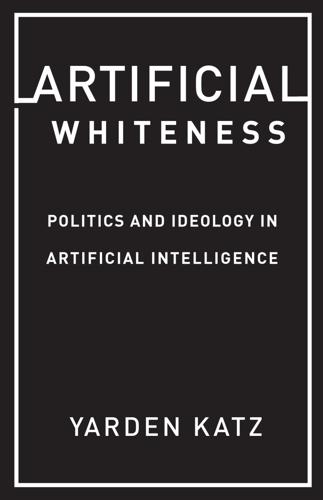
Artificial Whiteness
by
Yarden Katz
As Jemima Pierre has argued, “postcolonial” nations such as Ghana, where people racialized as white are a small minority, are still shaped by the global reaches and history of white supremacy—and Google’s AI lab in Accra is a case in point.9 The presentation of the lab reiterates nineteenth-century European colonial tropes of “the darkest Africa” as a site of savagery, as well as subsequent views, equally imperialist, of Africa’s “darkness” as bearing many secrets that could benefit global capital. Themes of imperial conquest and colonization are by no means limited to AI commentary, of course; they recur within the world of computing.
…
Horne, for instance, describes the efforts to create “cross-class, Pan-European” whiteness in the seventeenth and eighteenth centuries in order to maintain slavery and colonial rule. A primary aim was to build a “white” coalition large enough to suppress African and indigenous uprisings in the European colonies, sometimes by granting limited (and temporary) privileges to groups discriminated against on European soil, such as Jews or Irish people. This led to the typical contradictions of racial categories, as Horne notes: “It was as if the elite did not interrogate ‘whiteness,’ then no one else would either, and the inherent frailty of this unstable category would somehow magically disappear.”

Money: Vintage Minis
by
Yuval Noah Harari
Published 5 Apr 2018
Countless other crimes and misdemeanours accompanied the growth of the modern economy in other parts of the planet. THE NINETEENTH CENTURY brought no improvement in the ethics of capitalism. The Industrial Revolution that swept through Europe enriched the bankers and capital-owners, but condemned millions of workers to a life of abject poverty. In the European colonies things were even worse. In 1876, King Leopold II of Belgium set up a non-governmental humanitarian organisation with the declared aim of exploring Central Africa and fighting the slave trade along the Congo River. It was also charged with improving conditions for the inhabitants of the region by building roads, schools and hospitals.
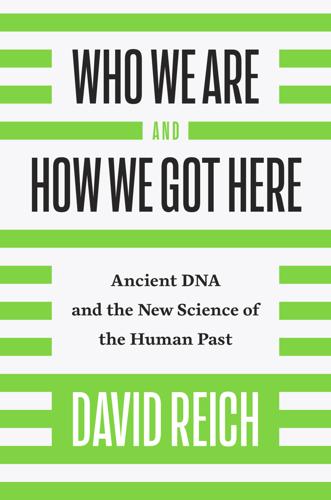
Who We Are and How We Got Here: Ancient DNA and the New Science of the Human Past
by
David Reich
Published 22 Mar 2018
Tracing back, the threads wind themselves through ever more ancestors, providing information about population size and substructure in each generation. When an African American person is said to have 80 percent West African and 20 percent European ancestry, for example, a statement is being made that about five hundred years ago, prior to the population migrations and mixtures precipitated by European colonialism, 80 percent of the person’s ancestral threads probably resided in West Africa and the remainder probably lived in Europe. But such statements are like still frames in a movie, capturing one point in the past. An equally valid perspective is that one hundred thousand years ago, the vast majority of lineages of African American ancestors, like those of everyone today, were in Africa.
…
A small percentage of European Americans have large stretches of African or Native American DNA as well, the legacy of people who successfully “passed” themselves off into the white majority.3 A 1973 science-fiction novel, Piers Anthony’s Race Against Time, envisions a future in which the mixing of populations initiated by European colonialism reaches its inevitable conclusion, and by the year 2300 nearly all humans belong to a “Standard” population.4 In that year, only six unmixed people are left: one pair of “purebred Caucasians,” one pair of “purebred Africans,” and one pair of “purebred Chinese.” These “purebreds” are being raised in human zoos by foster parents and are being groomed to breed with the only remaining individual of similar ancestry to sustain humanity’s diversity, a diversity that is viewed by the “Standard” population as a resource of irreplaceable biological value on the verge of being lost.
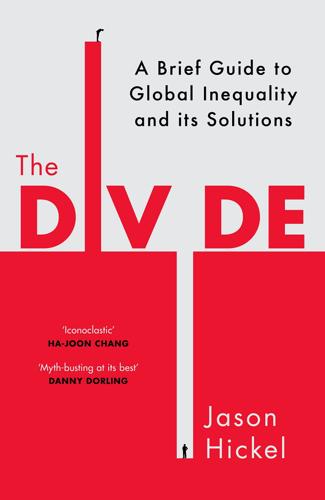
The Divide: A Brief Guide to Global Inequality and Its Solutions
by
Jason Hickel
Published 3 May 2017
By contrast, incomes in Western Europe grew at 1.3 per cent per year during this period, and in the US at 1.8 per cent per year – three to four times the rate of the colonised world.51 This differential in income growth rates was a major driver of global inequality. At the end of this period, Europe owned somewhere between one-third and one-half of the domestic capital of Asia and Africa, and more than three-quarters of their industrial capital.52 The story in Latin America unfolded somewhat differently. Three centuries of European colonialism came to an end in the early 19th century with revolutions led by liberators such as Simón Bolívar, who, after a long period of struggle against the Spanish Crown, won independence for Venezuela in 1821, Ecuador in 1822, Peru in 1824 and Bolivia in 1825. But these and other independent nations that emerged in the wake of decolonisation tended to be controlled by autocratic local elites who were quite happy to maintain the economic arrangements that their European counterparts had imposed.
…
It depended to some extent on cheap labour from women and minorities, and of course was financed in large part by surplus wealth siphoned from the rest of the world through the old colonial pipelines. A Miracle in the South The rise of Keynesianism coincided precisely with the last decades of European colonialism. In fact, it was partly due to the influence of Keynesian ideology – with its focus on fairness and welfare – that the colonial project began to seem untenable and gradually unravelled. The progressive political parties that began to take control in Europe after the Second World War had little appetite for colonialism as it conflicted with the growing discourse on equality, national sovereignty and human rights.9 Indeed, the Universal Declaration of Human Rights was adopted by the United Nations a few years after the war ended.
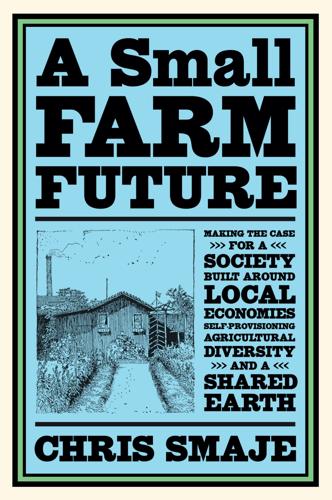
A Small Farm Future: Making the Case for a Society Built Around Local Economies, Self-Provisioning, Agricultural Diversity and a Shared Earth
by
Chris Smaje
Published 14 Aug 2020
Steven Pinker, for example, asserts that ‘industrial capitalism launched the Great Escape from universal poverty in the 19th century and is rescuing the rest of humankind in a Great Convergence in the 21st’.127 I’m reluctant to enter the statistical labyrinth through which such claims are defended or refuted because, unlike Pinker, I think summary statistics and grand historical claims make for uncomfortable bedfellows, but I’d like to take a cautious step inside, just to suggest that other views are possible. Figure 1.2 shows the inflation-adjusted GDP from 1960 to 2018 for the world’s countries aggregated into five population-weighted groups:128 Group 1: The 40 countries with the highest GDP per capita in 2017, of which 22 are West European, 4 were originally West European colonies (Australia, Canada, New Zealand and the United States) and the rest have their own histories of recent capitalist development (e.g. Japan, Kuwait, Singapore). Together, these countries account for 13% of the global population. Group 2: Eleven countries of Eastern Europe that until 1989 were allied with Soviet Russia but are now part of the European Union.
…
This kind of agriculture isn’t the only one possible, however. In Europe and its settler colonies, the typical situation was one of scarce labour and abundant land, leading to a path of intensification in which mechanisation substituted for labour, though it must be said that another approach to the labour problem widely followed in the history of European colonialism was slavery, a point too easily glossed over when we speak of modern development as a story of technological progress that ended human toil. But elsewhere in the world – the rice ecologies of Eastern and Southern Asia, for example – the typical situation was of scarce land and abundant labour, impelling a path of intensification that included both increased land productivity and increased labour demand.
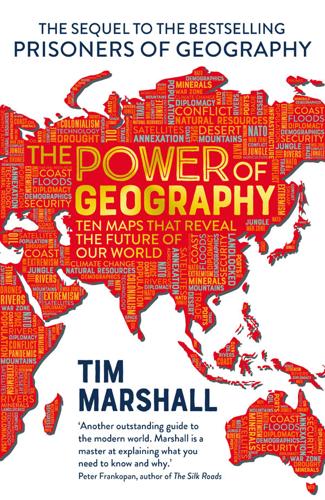
The Power of Geography: Ten Maps That Reveal the Future of Our World
by
Tim Marshall
Published 14 Oct 2021
In turn this should reduce rural people’s reliance on firewood and charcoal, which has depleted forests and led to soil erosion. This technology may also allow a more equitable sharing of the country’s riches and help overcome the competition between regions that has marked Ethiopian history. Many African countries have to deal with ethnic tensions between communities encompassed by borders created by the European colonial powers. Ethiopia was, famously, never colonized but, having built its own empire, it has similar problems within its borders. Ethiopia has nine major ethnic groups among its population. There are nine administrative areas and two self-governing cities, all based on ethnicity. More than eighty languages are spoken, which spring from four major groupings, and all enjoy official state recognition.
…
The early 1900s saw an effort to knit its sparse infrastructure together with the building of bridges across numerous rivers and a railway line connecting Addis Ababa to the port of Djibouti, then a French colony, on the Red Sea. These were relatively small steps and the country remained desperately poor, but by the 1920s the capital had a population of well over 100,000 and Ethiopia was emerging as an independent power in a region of European colonies. Nevertheless, it was still subject to pressure from the competing Europeans, and later, during the Cold War, from further afield. In 1930, Ras Tafari (Prince, or Duke, Tafari) become Emperor Haile Selassie I, Might of the Trinity, Field Marshal of the Imperial Ethiopian Army, Marshal of the Imperial Ethiopian Air Force, Admiral of the Imperial Ethiopian Navy.

DK Eyewitness Top 10 Azores
by
Dk Eyewitness
Published 22 Dec 2022
It is an equally exhilarating hiking challenge (see Lajedo–Fajã Grande–Ponta Delgada) whether starting from Lajedo or following a reverse itinerary out of Ponta Delgada. Along the way, look out for the landmark Rocha dos Bordões (see Rocha dos Bordões) in the south and, in the north, the Ilhéu de Monchique, the most western point of Europe. Bird-watchers should note that the largest European colonies of roseate tern nest on these islets. Coastal landscape at Fajã Grande 5. Caldeirão Corvo Google Map A profound sense of peace can be experienced when peering into the basin of this huge crater (see Caldeirão), its allure magnified by the remote location. This is a fertile habitat for American and European migratory birds during autumn, when the island welcomes ornithologists from around the world.
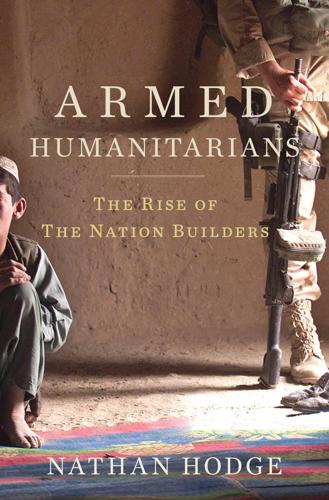
Armed Humanitarians
by
Nathan Hodge
Published 1 Sep 2011
In some respects AFRICOM represented a simple streamlining and reorganization of U.S. military activity in Africa. Before AFRICOM, three different commands divided responsibility for watching Africa. U.S. European Command oversaw most of sub-Saharan Africa; it tended to view Africa as an extension of former European colonial territories. U.S. Central Command, focused primarily on the Middle East, was responsible for the countries bordering on the Red Sea. The island of Madagascar was under U.S. Pacific Command, a seeming afterthought. The creation of the new command signaled a major foreign policy shift. Instead of dealing with Africa through dozens of embassies, the U.S. government could approach the continent through a powerful, unified military command.
…
A deadly July 2010 traffic incident involving State Department contractors led to violent street protests not far from the U.S. embassy in Kabul; every accidental shooting at a checkpoint or misdirected air strike further inflames the population and gives insurgents more fodder for propaganda. Supersizing our commitment only serves to undermine the mission in the long run. And there’s the question about whether we really even understand the long-term mission. A rich literature exists about the European colonial experience, but Americans seem to lack the same gift for self-scrutiny. In his 1936 autobiographical short story, “Shooting an Elephant,” George Orwell described his moment of awakening when he was serving as an imperial policeman in Burma. Standing in front of the elephant, rifle in hand, he realized the hollowness and futility of the European presence and of his role as an enforcer of colonial law.
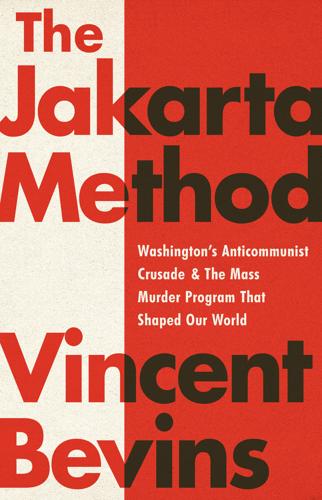
The Jakarta Method: Washington's Anticommunist Crusade and the Mass Murder Program That Shaped Our World
by
Vincent Bevins
Published 18 May 2020
“Third” did not mean third-rate, but something more like the third and final act: the first group of rich white countries had their crack at creating the world, as did the second, and this was the new movement, full of energy and potential, just waiting to be unleashed. For much of the planet, the Third World was not just a category; it was a movement.11 In 1950, more than two-thirds of the world’s population lived in the Third World, and with few exceptions, these peoples had lived under the control of European colonialism.12 Some of these countries had managed to break free of imperial rule in the nineteenth century; some earned their independence when fascist forces retreated at the end of World War II; some attempted to do so in 1945, only to be re-invaded by First World armies; and for many others, the war had changed little, and they were still unfree.
…
The independence leaders, a mix of nationalists, leftists, and Islamic groups, hopped around the archipelago, making alliances with local kingdoms and mounting resistance.7 In the middle of all this, in 1947, Francisca went to Holland to study in the small university town of Leiden. She attended the Royal Institute of Eastern Countries, set up to study European colonial possessions. Right away, she got involved in the Indonesian student organization, as almost everyone did. And right away, she met a man named Zain, five years her senior. She didn’t like him at first. She had considered herself “some kind of a feminist” from an early age, and had no intention of marrying, ever.

The Iron Cage: The Story of the Palestinian Struggle for Statehood
by
Rashid Khalidi
Published 31 Aug 2006
Meanwhile, although Morocco, Tunisia, the Sudan, and all of the Arabian Peninsula’s shaykhdoms, emirates, and sultanates (which later became the independent states of Kuwait, the United Arab Emirates, Qatar, Bahrain, Oman, and South Yemen, the latter eventually incorporated into the Arab Republic of Yemen) were under a variety of forms of indirect European control until the 1950s, all were ruled in some measure by their own indigenous governments.17 These Arab states had recognized indigenous state structures staffed by Arab functionaries, even though the colonial powers maintained a high level of supervision through the imposition of restrictive and intrusive controls, backed up with the highly unpopular stationing of their military forces throughout the Arab world during the interwar period, even in Iraq and Egypt, both nominally independent states.18 These indigenous state structures operated autonomously throughout most of the colonial period, albeit in many cases under the supervision and control of omnipresent, and sometimes omnipotent, European colonial officers or “advisors.” The sole exceptions to this pattern in the entire Arab world were Mauritania, the Spanish Sahara, and the Aden Crown Colony, as well as Libya and Algeria, which two not coincidentally were sites of settler colonialism, like Palestine. Settler colonialism, which involved replacement of the indigenous population by a new one, or at least the subordination of the former by the latter, denied any form of representation or control over governance to that indigenous population.
…
In the Arab world the most notable exceptions here, as in other respects, were the other two cases of European settler-colonialism, Algeria and Libya, where virtually all indigenous structures were destroyed or banned, and the structures of state erected by the colonial power existed almost entirely to benefit the European colonial population. The similarities with the Palestinian situation are most striking. 30. See Jacques Berque, Egypt: Imperialism and Revolution (London: Faber, 1972), and, inter alia, Robin Moore, The Crisis of India Unity, 1917–1940 (Oxford, U.K.: Oxford University Press, 1974). 31. MAE, Palestine, Consul General, Jaffa, to Briand, July 1, 1930, transcripts of meetings of May 1, 1930, 210, and May 6, 1930, 253. 32.
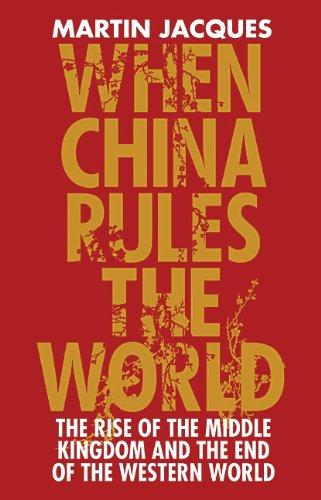
When China Rules the World: The End of the Western World and the Rise of the Middle Kingdom
by
Martin Jacques
Published 12 Nov 2009
One of the most remarkable examples was the huge resettlement of Sichuan province in the south-west, whose population had fallen to around half a million by 1681, but which reached 207 million in 1812 as a result of the movement of migrant-settlers, organized and orchestrated by the Qing dynasty.32 This process is still evident today, with the steady influx of Han migrants into Inner Mongolia, where they now constitute a very large majority, and into Tibet and Xinjiang, where they represent substantial minorities, possibly even a majority in the case of the latter. Resettlement has been a key tool in the process of Chinese expansion and Hanification. It is important, in this context, to distinguish between a land-based expansion like China’s and a maritime-based expansion such as those of the European empires of Britain and France. The European colonies never acquired any degree of permanence because, except in those cases where there was overwhelming white settlement, as for example in Australia and North America, it was impossible to assimilate races and cultures which, by virtue of place and distance, were entirely alien. This was quite different from China, which, because of its land-based expansion, always enjoyed the advantage of proximity, thereby enabling, if need be, the process of absorption and incorporation to take thousands of years.33 As a consequence, in terms of the consciousness of its multitudinous component groups, the Chinese empire is no longer an empire, except at its northern and especially north-western and western edges, with the population of these areas representing only 6 per cent of China’s total.34 China thus only confronts difference, for the most part, at its perimeter.
…
Though the proportion of China’s population who are internet users is far smaller than that in the United States, by 2008 the number of Chinese internet users had already overtaken the number of American users.29 Figure 44. Top ten internet languages, May 2008. Figure 45. World internet users, March 2008. THE CHINESE RACIAL ORDER For the last two centuries Caucasians have enjoyed a privileged position at the top of the global racial hierarchy. During the period of European colonial empires their pre-eminent position was frequently explained in terms of racial theories designed to show the inherent superiority of the white race. Since the mid twentieth century, with the defeat of Nazism followed by colonial liberation, such explicitly racial theories have been in retreat in most regions of the world and now enjoy only minority appeal in the West.
…
Notwithstanding these difficulties, the table below gives a rough idea of the total size of the Chinese diaspora and the main countries where it resides. Chinese migration has a long history, dating back to the Ming dynasty in the case of South-East Asia. The global Chinese diaspora began in the nineteenth century, when there was a surplus of labour in the southern coastal provinces of China and Chinese workers were recruited for the European colonies, often as indentured labour. The biggest migratory movements were to South-East Asia, but the Chinese also went in large numbers during the second half of the nineteenth century to the United States, notably in search of gold and to build the railroads, and also to Australia and many other parts of the world including Europe and South Africa.
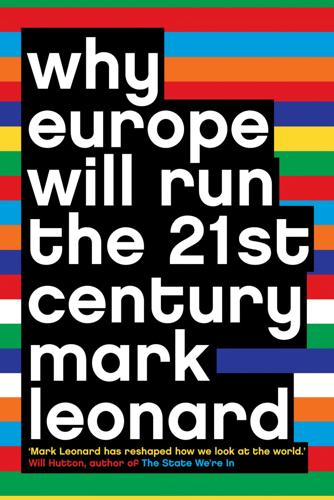
Why Europe Will Run the 21st Century
by
Mark Leonard
Published 4 Sep 2000
The 1980s saw remarkable levels of nail-biting and hand-wringing within the USA over the rise of Japan and its putative takeover of the commanding heights of the US economy. European investment in the USA now easily surpasses that of Japan, yet it barely merits a mention in American analysts’ dissections of European weakness. The most obvious reason for Europe’s invisibility abroad is the dark episode of European colonial history that means there is a real reluctance in Europe to adopt the trappings of empire. But there is a deeper reason for this respect for local cultures. The European vision has never aimed to establish a single model of human progress: it is about allowing diverse and competing cultures to live together in peace.
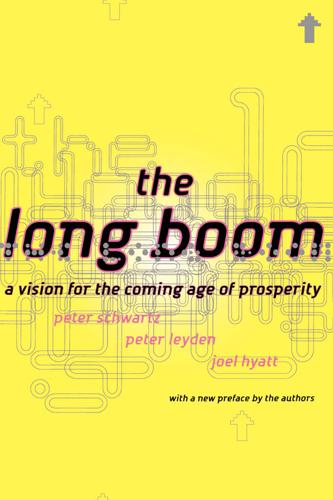
The Long Boom: A Vision for the Coming Age of Prosperity
by
Peter Schwartz
,
Peter Leyden
and
Joel Hyatt
Published 18 Oct 2000
SOME pRoddiNq CAME (ROM Those cARRyinq ON The leqAcy of ThE EUROPEAN sociAlisT MOVEMENTS. BUT IN ThE ENd, whAT MOVEd T^E EUROPEANS TO ACTION WAS ACCEpTiNq itlAT T^E MOST TROubkd ReqiONS of The wofild hAd ONly REcewly bcEN T^EiR colowiES. FOR MOST of The TWENTieh CENTURY, T!HIE VAST MAJORITY of ThE Uwds IN ihe Middls EAST Awd AfRicA hAd BEEN uwdER EUROPEAN coloNiAl CONTROL MOST AFRICAN NATJONS hAd BEEN qivEN TheiR iNdepENdeNCE AS IATE AS The 1960s. By The end of T^E CENTURA ThESE WERE ihf. MOST IMpOVEfiishEd. Ths coloNiAl lEqAcy, howtvER, WAS NOT All NEqATlve. ThE EUROPEANS hAd A dEEp UNdERSTANdiNq of ^ESE REqiows Awd could build ON TIES ThAT WENT FAR bAck—IN SOME CASES, CENTURIES.
…
For most of this century, the Kurds have fought for their own country against the Turks and the Iraqis. These struggles have nothing to do with Arabs versus Jews or Christians versus Muslims. However, the legacy of Western colonialism in the Middle East has colored all of these local struggles. Most Islamic societies were dominated first by European colonial powers and often later by Western companies— and these intruders often displayed a disrespect for local culture. The local people then equated modernization with Westernization. To modernize was to become like Europe or the United States, and they clearly had mixed feelings about that. In the postcolonial era, many nations of the region have developed internal struggles between the modernists, now considered secularists, and the traditionalists, who are increasingly the religious fundamentalists.

The Hundred Years' War on Palestine: A History of Settler Colonialism and Resistance, 1917–2017
by
Rashid Khalidi
Published 28 Jan 2020
This war has continued since then, waged sometimes overtly and sometimes covertly, but invariably with the tacit or overt approval, and often the direct involvement, of the leading powers of the day and the sanction of the international bodies they dominated, the League of Nations and the United Nations. Today, the conflict that was engendered by this classic nineteenth-century European colonial venture in a non-European land, supported from 1917 onward by the greatest Western imperial power of its age, is rarely described in such unvarnished terms. Indeed, those who analyze not only Israeli settlement efforts in Jerusalem, the West Bank, and the occupied Syrian Golan Heights, but the entire Zionist enterprise from the perspective of its colonial settler origins and nature are often vilified.
…
As newspapers like Filastin and al-Karmil reveal, this identity included love of country, a desire to improve society, religious attachment to Palestine, and opposition to European control. After the war, the focus on Palestine as a central locus of identity drew strength from widespread frustration at the blocking of Arab aspirations in Syria and elsewhere as the Middle East became suffocatingly dominated by the European colonial powers. This identity is thus comparable to the other Arab nation-state identities that emerged around the same time in Syria, Lebanon, and Iraq. The al-Khalidi family, Tal al-Rish, circa 1930: Top row from left: Ismail (the author’s father), Ya‘coub, Hasan (holding Samira), Husayn (holding Leila), Ghalib.
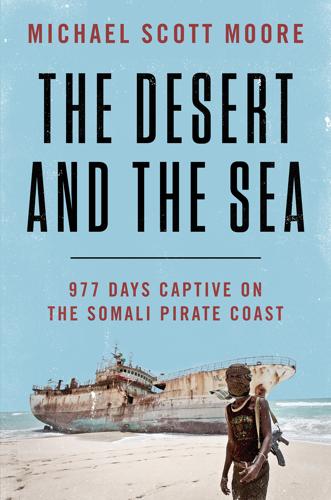
The Desert and the Sea: 977 Days Captive on the Somali Pirate Coast
by
Michael Scott Moore
Published 23 Jul 2018
In any case, he was handy with a weapon, which suggested training, and he liked the word askari, which elevated his self-esteem. The word had an odd resonance, because in East African countries once under the colonial heel of the Italians or the British or the Germans, askari used to refer to local soldiers trained by a European colonial power. Gerlach had used it as an epithet, something like “Uncle Tom.” But for Bashko it just meant “soldier,” which sounded better than “thief.” Bashko and Abdinasser both mimicked my yoga poses like housewives watching a weight-loss video. Through these improvised classes they became my “sahibs” in the Pirate Villa.
…
Mandela had noted in his autobiography that white South African lawyers and judges under apartheid considered him a “kaffir lawyer.” Kaffir is a nasty term in Afrikaans, close to nigger or coon; it derived from the Muslim slave trade. Arab traders used it to refer to non-Muslim African slaves, people it was halal to capture. The word had spread through European colonies in Africa as an epithet for slaves as early as the 1600s. I couldn’t compare my situation to Mandela’s—he’d suffered for the color of his skin over the better part of the twentieth century, without even leaving his country—but while I lived in Somalia, the label for me was galo, kafir, infidel, and in that sense I noticed a parallel.
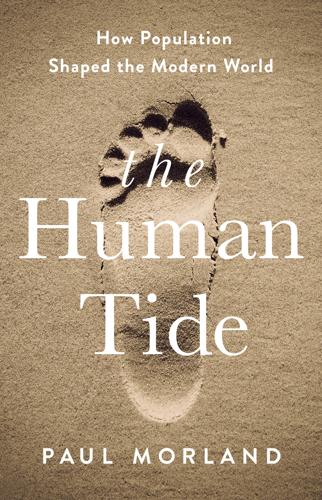
The Human Tide: How Population Shaped the Modern World
by
Paul Morland
Published 10 Jan 2019
In 1941 there were a million Europeans in Algeria, a number similar to the total indigenous population at the time of the French invasion just over a century earlier. Yet by this time the Muslims had expanded in number to 6.5 million.11 The impact of imperialism on the region is today still widely resented, and with justification, just as is the far longer-lasting impact of the Ottoman Empire on the Balkans. But the demographic effect of European colonialism was to stimulate a population explosion among the local people which was ultimately to prove the grave-digger of colonialism, creating demographic circumstances that made continuing European domination impossible. In the twenty-first century there are barely any Europeans left in Algeria while France has a significant North African population.
…
F., 112, 117, 119, 120; Race Suicide, 119 McCoppin, Frank, 41 McCormick, Katharine Dexter, 139 MacDonald, Ramsay, 90 Macedonia: average age, 16 Malaysia: ethnic Chinese fertility rate, 217 Malthus, Thomas: on China, 212; on conditions in USA, 65–6; on indigenous people, 59; Marx on, 174; on population growth and food supply, 11, 44–5, 52–3, 112, 131–2, 198; urges restraint and late marriage, 74; An Essay on the Principle of Population, 43–4, 129 Manchukuo, 202 Mandela, Nelson, 63 Manstein, General Fritz Erich von, 128 Mao Zedong, 213–15 Maoris, 61 Margaret Rose, Princess, 12 Marx, Karl, 122, 174 Marxism, 213, 218 May, Theresa, 151 Mbeki, Thabo, 268 median age: global rise, 274–6 Meinecke, Friedrich, 69, 93 Meir, Golda, 142 Merkel, Angela, 142, 159 Mexico: demographic pattern, 260; immigrants in USA, 153–6, 260–1; migrants leave USA, 17, 260–1; standard of living improvement, 261; USA annexes north, 57, 65–6, 68 Middle East: educational backwardness, 238–9; European imperialism in, 226; fertility rates, 230, 241; instability, 224, 226, 236–7, 241–3; League of Nations mandates, 228; median age, 225; misogyny, 239; peace prospects, 254; population growth, 239; prospective rise to power, 163; transition in, 229, 231; water supply, 239 migration: effect on demography, 17, 29, 108 Miliband, Ed, 111 military power: and numerical advantage, 18–20 modernisation (economic): and fertility rates and life expectancy, 22–3 Modi, Narendra, 264 Moldova, 191, 279 Money, Sir Leo Chiozza, 120 Morocco: fertility rate, 23, 249, 254; Jewish population, 248 mortality rate see death rate Moscow: Muslim population, 185–6 Mosley, Lady Cynthia, 75 Mubarak, Hosni, 224 Muslims: Bosnian, 189–90; fertility rates, 231, 234, 264; numbers, 245; refugees in Ottoman Empire, 226–7; in Russia, 171–2, 175, 185–6; in South Asia, 262–3; women’s status, 233, 238, 244 Mussolini, Benito, 124 Nagasaki, 211 Nagorno-Karabakh, 177 Napoleon I (Bonaparte), Emperor of the French, 19–20, 50, 79 National Birth Rate Commission (Britain), 90 National Council for Public Morals (Britain), 90 Nazis: murders by, 122; population policy, 125 New Zealand: baby boom, 136; European population and colonisation, 13, 46–7, 58–9, 61, 63; fertility rate, 144; food production, 61; immigrants, 156; low population increase, 119; non-Europeans excluded, 117–18 Nicholas II, Tsar of Russia, 195 Nietzsche, Friedrich, 45 Nigeria: fertility rate, 270; population trend, 14, 272; urbanisation, 172 Nixon, Richard M., 142 North Africa: European colonialism in, 227–8; famine (1866–8), 229; infant mortality falls, 230; instability, 224, 236–7, 242–3; population growth, 230; transition in, 229 Northern Ireland: Catholic minority, 27 Notestein, Frank, 132, 135 Novikov, Aleksey, 195 Obama, Barack, 25, 155 oil: in Middle East, 235 Okie, Howard Pitcher: America and the German Peril, 92 Opium Wars (China–Britain), 210 Orthodox religion: distribution and demographic patterns, 186–7, 190 Orwell, George: on the poor, 149; Burmese Days, 126 Oryol (Imperial Russian battleship), 195 Oslo Accord (Israel–Palestinian), 252 Ottoman Empire: in Balkans, 228; demographic data, 226–7; immigration, 227; population, 227 Pakistan: birth rate, 231; Deobandi opponents of birth control, 232; fertility rate, 262–3; immigrants in UK, 157–8; life expectancy, 181, 265 Palestinians: conflict with Israel, 239, 245–7; fertility rate, 250–2, 271; increasing median age, 253; life expectancy, 250; population increase, 249–50, 253 Pasteur, Louis, 73 pensions (old age), 152, 276 Pevsner, Nikolaus, 111 Philippines: median age, 276 Phillips, John, 3 Pill, the see contraceptive pill Pincus, Gregory, 139 plague: reduced in England, 48; see also Black Death Plus Grande Famille, La (French society), 121 Poland: Germans settle in, 125–6; immigrants in France, 110; median age, 275; migrants in France, 121; transition to capitalism, 189 poor, the: conditions, 149–50 population: and ethnicity, 112–13; and historical change, 7, 9–10; and international tensions, 94; post-First World War increase, 102–3; and racial quality, 112–15; stabilisation and ‘demographic transition’, 111, 132 potato: as staple in Ireland, 52 Protestants: fertility rates, 142, 146 Puerto Rico: fertility rate, 269; median age, 275 Putin, Vladimir, 178, 183 Qaida, al-, 142 Qatar: high per capita income, 237; immigration and population growth, 235 Quebec: French in, 60; high fertility rate, 136; independence movement, 26 Quiverfull movement (USA), 143 Quran, Holy, 232 race see ethnicity racism, 112–19, 121 Ransome, Stafford, 200 Reich, Emil: Germany’s Swelled Head, 91, 92 religion: diversity in South Asia, 360 Remennick, Larissa, 251 retirement: age and pensions, 152 Rhodes, Cecil, 68, 70, 127 Riezler, Kurt, 94 Robertson, John Mackinnon, 91 Rohrbach, Paul, 92 Roman Empire: population, 12 Romania: ethnic Hungarians in, 28; fertility rate, 187–8; population changes, 188 Roosevelt, Franklin D., 102 Roosevelt, Theodore (‘Teddy’), 111–12 Roses, Wars of the, 43 Rubio, Marco, 156 Rumbold, Joan, 3, 5, 8 rural life: historic conditions, 4 Russia (and Soviet Union): abortion legalised under Communists, 123, 168, 259; abortion rates reduced after Soviet era, 180; ageing leadership, 164–5; alcoholism, 180–1; anti-natalism, 178; childbearing age, 179; childless and single-child women, 179; deaths from diseases, 181; deaths from wars, famines and purges, 168–9; defeated by Japan (1904–5), 162, 195–6, 201; demographic transition, 167; ethnic Germans emigrate to Germany, 184; ethnic and regional differences, 170–2, 175–7, 184–5; fall in child death rates, 17, 171; female education, 167; fertility rates, 105–6, 123–4, 167, 178–80, 182–3, 207, 230–1; German fear of, 93–4, 98; industrial development, 93; influx of central Asians into towns and cities, 185; internal food supply, 96; Jewish emigrants to Israel, 170, 184, 248; life expectancy changes, 107, 169, 180–1, 207; little immigration and emigration, 170; male–female life expectancy differences, 283; median age, 166, 182, 185; migration to Siberia, 96; migration to USA, 77; Muslim population, 171–2, 175, 184–6, 227; population expansion, 69, 84–5, 93–4, 98, 104, 119, 168–9; population fall since Soviet period, 182, 207; post-war population growth rate, 169; as potential threat to Britain, 83; Putin proposes demographic changes, 184; remoteness of interior, 76; rise to power, 83–4, 127, 129, 163–5; rivalry with Anglo-Saxons, 71; Second World War with Germany, 127–8; Soviet collapse, 176–8; Soviet planned society and state control, 173–4; Soviet policy on population, 122–4; status of ethnic Russians/Slavs, 171–5, 177, 184–5; suicide rate, 181; under Bolshevik regime, 166–7; unrest in Caucasus, 177; urbanisation, 167, 170; war in Afghanistan, 165–6; wartime casualties and losses (1941–5), 204; women in workforce, 174 Russo–Japanese War (1904–5), 162, 195–6, 201 Rwanda: genocide (1994), 8; growing economy, 271 Saleh, Ali Abdullah, 224 San Francisco: population growth, 41 Sanger, Margaret, 139 Saudi Arabia: family size, 230; fertility rates, 235; immigrants, 235; oil resources, 235; status of women, 239, 244 Sauvy, Alfred, 112 Scandinavia: falling fertility rate, 144; out-of-marriage births, 146; small populations, 95 Scotland: migration to England, 46; population growth, 51, 59 Second World War: and Hitler’s obsession with population, 101; and war in Russia, 127–8 secularisation, 142 Seeley, J.
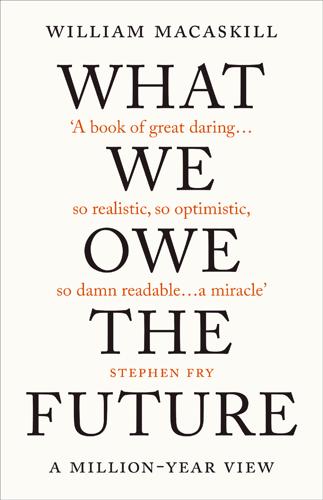
What We Owe the Future: A Million-Year View
by
William MacAskill
Published 31 Aug 2022
Over the last sixty years, the period for which we have the best data, world GDP has only shrunk in a single year a handful of times, and it has always completely rebounded within a couple of years.23 It is not even clear whether the population declined during the Spanish flu pandemic of 1918, in which seventeen million to one hundred million people died.24 Even though World War II was the deadliest war in history by the number of casualties, it did not cause the global population to decline.25 The last time global population even came close to declining over a period of decades was during what some historians refer to as the “General Crisis.”26 This was a period over the seventeenth century when almost everything was going wrong: major wars in Europe, China, and India, including the Thirty Years’ War and the collapse of the Ming dynasty; the widespread deaths of Indigenous Americans from European colonialism; the rise of the transatlantic slave trade; and what’s called the “Little Ice Age,” where temperatures in Europe cooled, leading to widespread famine.27 The global population loss may have been large: in the first half of the seventeenth century, according to some estimates, the Chinese population plummeted by around 40 percent, while Germany and parts of France lost 20 percent to 45 percent of their populations.28 Yet despite these crises, by AD 1700 the world population was larger than before the General Crisis.
…
If any natural event would have brought about the collapse of civilisation, we would have expected this to be it. But, despite the enormous loss of human lives and intense suffering that the Black Death caused, it did little to negatively impact longer-term European economic and technological development. European population size returned to its prepandemic levels two centuries later; European colonial expansion continued and the Industrial Revolution occurred just four centuries later.31 Other examples of remarkable societal resilience are more recent. We can consider, for example, the atomic bombing of the Japanese city of Hiroshima in 1945. The bomb the United States dropped was 1,500 times more powerful than any previously used.32 The fireball at the hypocenter of the blast reached several thousand degrees Celsius within one-ten thousandth of a second before igniting all flammable material within one and a half miles.33 Ninety percent of the city’s buildings were at least partially incinerated or reduced to rubble.34 Initial estimates suggested that 70,000 died because of the bombing before the end of 1945, while more recent estimates put the figure at 140,000.35 The heat from the blast was so ferocious that steps, pavements, and walls were brightened, and the people incinerated in the blast left darkened shadows.
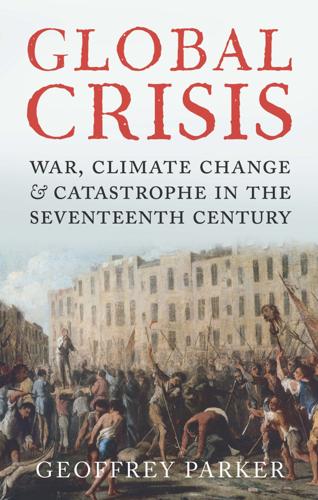
Global Crisis: War, Climate Change and Catastrophe in the Seventeenth Century
by
Geoffrey Parker
Published 29 Apr 2013
Many, especially from the mountainous southeastern provinces, left for the Philippines and Southeast Asia, either as settlers or to ‘service’ the European colonies there. By 1700 some 20,000 Chinese lived in a special suburb of Manila known as the Parián (and its population would have been much larger but for the periodic massacres carried out by the Spaniards and their Filipino allies); and several thousand more lived in Batavia (now Jakarta), which became a ‘Chinese colonial town under Dutch protection’.67 The establishment of European colonies on Taiwan after 1624 created another opportunity for Chinese ‘co-colonization’. Almost immediately, the governor of Fujian province allowed ‘several tens of thousands’ of those destitute through famine to migrate to the lands around the main Dutch settlement, providing each person with three taels of silver and every family with a cow.
…
Abnormal climatic conditions lasted from the 1640s until the 1690s – the longest as well as the most severe episode of global cooling recorded in the entire Holocene Era – leading climatologists to dub this period ‘The Little Ice Age’.15 1. The Global Crisis. Although Europe and East Asia formed the heartland of the ‘General Crisis’, the Mughal and Ottoman empires, like the European colonies in America, also experienced episodes of severe political disruption in the mid-seventeenth century. This volume seeks to link the climatologists’ Little Ice Age with the historians’ General Crisis – and to do so without ‘painting bull's eyes around bullet holes’: without arguing that global cooling ‘must’ have somehow caused recession and revolution around the world simply because climate change is the only plausible common denominator.
…
Chapter 12 examines the consequences of the prolonged wars and multiple regime changes in the three kingdoms between 1642 and 1660, including the first formulation of democratic principles now regarded as central to Western society; the attempts by the central government to overthrow them between 1660 and 1688; and their limited resurrection after the ‘Glorious Revolution’ of 1688–9. Part III considers two categories of ‘exception’ to this pattern: those areas where at least part of the population apparently emerged from the seventeenth-century trauma relatively unscathed (some European colonies in America; South and Southeast Asia; Japan); and those regions where the impact of the Little Ice Age remains ambiguous (the Great Plains of North America; Sub-Saharan Africa; Australia). Within the first category, in Mughal India and some of its neighbours, abundant resources enabled the state to ride out the crisis (chapter 13); while in Spanish Italy, the government managed to overcome major rebellions by making major concessions (chapter 14).
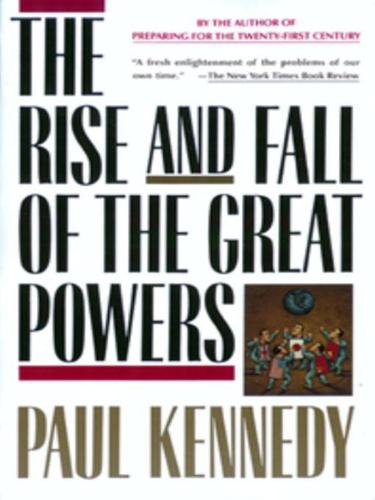
The Rise and Fall of the Great Powers: Economic Change and Military Conflict From 1500 to 2000
by
Paul Kennedy
Published 15 Jan 1989
To the Twenty-first Century History and Speculation China’s Balancing Act The Japanese Dilemma The EEC—Potential and Problems The Soviet Union and Its “Contradictions” The United States: The Problem of Number One in Relative Decline Epilogue Notes Bibliography About the Author Other Books by This Author Also by Paul Kennedy Maps 1. World Power Centers in the Sixteenth Century 2. The Political Divisions of Europe in the Sixteenth Century 3. Charles V’s Inheritance, 15194 4. The Collapse of Spanish Power in Europe 5. Europe in 1721 6. European Colonial Empires, c. 1750 7. Europe at the Height of Napoleon’s Power, 1810 8. The Chief Possessions, Naval Bases, and Submarine Cables of the British Empire, c. 1900 9. The European Powers and Their War Plans in 1914 10. Europe After the First World War 11. Europe at the Height of Hitler’s Power, 1942 12.
…
Here, too, one can detect precedents prior to 1914, such as Arabi Pasha’s revolt in Egypt, the young Turks’ breakthrough after 1908, Tilak’s attempts to radicalize the Indian Congress movement, and Sun Yat-sen’s campaign against western dominance in China; by the same token, historians have noted how events such as the Japanese defeat of Russia in 1905 and the abortive Russian revolution of that same year fascinated and electrified proto-nationalist forces elsewhere in Asia and the Middle East.26 Ironically, yet predictably, the more that colonialism penetrated underdeveloped societies, drew them into a global network of trade and finance, and brought them into contact with western ideas, the more this provoked an indigenous reaction; whether it came in the form of tribal unrest against restrictions upon their traditional patterns of life and trade or, more significantly, in the form of western-educated lawyers and intellectuals seeking to create mass parties and campaigning for national self-determination, the result was an increasing challenge to European colonial controls. The First World War accelerated these trends in all sorts of ways. In the first place, the intensified economic exploitation of the raw materials in the tropics and the attempts to make the colonies contribute—both with manpower and with taxes—to the metropolitan powers’ war effort inevitably caused questions to be asked about “compensation,” just as it was doing among the working classes of Europe.27 Furthermore, the campaigning in West, Southwest, and East Africa, in the Near East, and in the Pacific raised questions about the viability and permanence of colonial empires in general—a tendency reinforced by Allied propaganda about “national self-determination” and “democracy,” and German counterpropaganda activities toward the Maghreb, Ireland, Egypt, and India.
…
Such unity had already been made redundant by the entry into the Great Power club of the Japanese, some of whose thinkers were beginning to articulate notions of an East Asian “co-prosperity sphere” as early as 1919.29 And it was overtaken altogether by the coming of the two versions of the “new diplomacy” proposed by Lenin and Wilson—for whatever the political differences between those charismatic leaders, they had in common a dislike of the old European colonial order and a desire to transform it into something else. Neither of them, for a variety of reasons, could prevent the further extension of that colonial order under the League mandates; but their rhetoric and influence seeped across imperial demarcation zones and interacted with the mobilization of indigenous nationalists.

Against Technoableism: Rethinking Who Needs Improvement
by
Ashley Shew
Published 18 Sep 2023
The common thread of many Native American tribes is their ability to embrace difference in a variety of ways. Colonization deeply shaped understandings of work and community, shifting ideas about disability by introducing new stigmas. For example, Indigenous North Americans—whose customs, traditions, values, and even norms of communication differed from the dominant European colonial culture—were often read as psychologically unfit to be self-determining. This invention of disability had horrific material consequences for Indigenous people in North America; we are just now starting to reckon with some of these horrors as we uncover mass graves of Native children on former Indian Residential School sites.
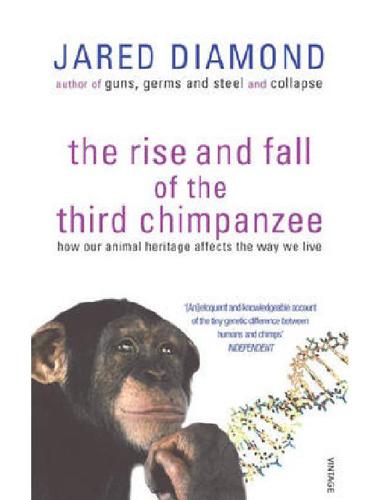
The Rise and Fall of the Third Chimpanzee
by
Jared Diamond
Published 2 Jan 1991
To anyone who has not been to New Guinea, the long concealment of 50,000 people there seems incomprehensible. After all, the Grand Valley lies only 115 miles from both New Guinea's north coast and its south coast. Europeans discovered New Guinea in 1526, Dutch missionaries took up residence in 1852, and European colonial governments were established in 1884. Why did it take another fifty-four years to find the Grand Valley? The answers—terrain, food, and porters—become obvious as soon as one sets foot in New Guinea and tries to walk away from an established trail. Swamps in the lowlands, endless series of knife-edge ridges in the mountains, and jungle that covers everything reduce one's progress to a few miles per day under the best conditions.
…
From this perspective, it is almost funny to read that half of all American schoolchildren do not know where Panama is, but not at all funny when politicians display comparable ignorance. Among the many notorious examples of disasters brought on by politicians ignorant of geography, two must suffice: the unnatural boundaries drawn on the map of Africa by nineteenth-century European colonial powers, thereby undermining the stability of some modern African states that inherited those borders; and the borders of Eastern Europe drawn at the Treaty of Versailles in 1919 by politicians who knew little of that region, thereby helping to fuel the Second World War. Geography used to be a required subject in US schools and colleges until a few decades ago, when it began to be dropped from many curricula.
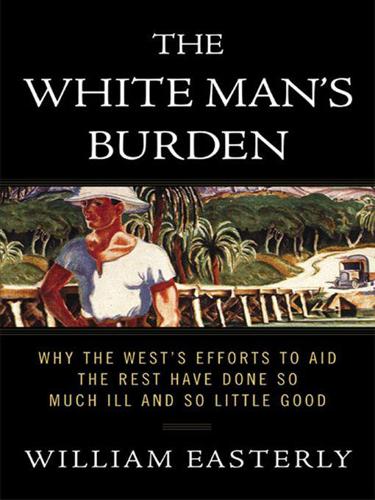
The White Man's Burden: Why the West's Efforts to Aid the Rest Have Done So Much Ill and So Little Good
by
William Easterly
Published 1 Mar 2006
However, these democratic countries dramatically outperformed the economies of oligarchy over the next two centuries. As Acemoglu predicted, oligarchy can perform well for a while, but tends to stagnate eventually. The Bolivian example given at the beginning of this chapter fits the pattern of oligarchy and stagnation. Fig. 14. Minority European Versus Mostly European Colonies Illiberal Democracy Fareed Zakaria, in his 2003 book, The Future of Freedom, has brought to wide attention the idea of “illiberal democracy.” Why do democracies sometimes produce awful government despite free elections? A big problem with democracy and development, particularly with uneducated voters, is that the politicians could appeal to voters’ gut instincts of hatred, fear, nationalism, or racism to win elections.
…
They are imperfect as a test of colonialism because these areas were not chosen randomly—they wound up that way because of factors that influenced their social evolution. There was also some degree of European control in some of these territories, like the infamous European enclaves in China. Korea and Taiwan did spend some part of the twentieth century as colonies of Japan. I compare the non-colonies to European colonies that were not settled by Europeans. The colonies settled by Europeans are a special case, discussed in an earlier chapter. The non-settlement colonies are a more natural experiment of European intervention from afar. The non-colonies had more rapid increases in secondary education from 1960 to 2001.
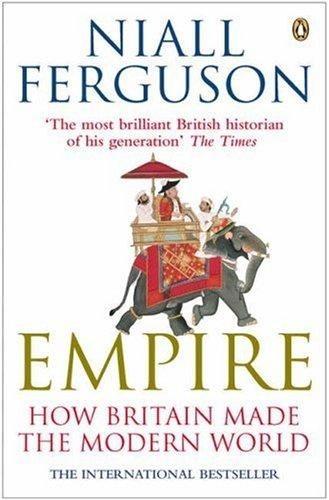
Empire: How Britain Made the Modern World
by
Niall Ferguson
Published 1 Jan 2002
Even more extensive and no less profitable was Portugal’s empire, which spread outwards from the Atlantic islands of Madeira and São Tomé to include the vast territory of Brazil and numerous trading outposts in West Africa, Indonesia, India and even China. In 1493 the Pope had issued a bull allocating trade in the Americas to Spain and trade in Asia to Portugal. In this division of the world, the Portuguese had got the sugar, spices and slaves. But what the English envied most was what the Spanish discovered in America: gold and silver. European colonial empires c. 1750 Since the time of Henry VII, Englishmen had dreamt of finding an ‘El Dorado’ of their own, in the hope that England too could become rich on American metals. Time and again they had drawn a blank. The best they could ever manage was to exploit their skills as sailors to steal gold from Spanish ships and settlements.
…
We should also remember the quality of Russian rule in Poland, the Ireland of Central Europe; and in the Caucasus, where it extended as far as Batum on the Black Sea and Astara on the Caspian Sea; in the Central Asian provinces of Turkestan and Turkmenia; and in the Far East, where the new Trans-Siberian Railway conveyed the Tsar’s writ all the way to Vladivostok and finally into Manchuria. To be sure, there were resemblances between Russian colonization of the steppe and the roughly contemporaneous colonization of the American prairies. But there were differences too. In their European colonies the Russians pursued aggressive policies of ‘russification’; coercion of the Poles was increasing at a time when the British were debating Home Rule for Ireland. In Central Asia, resistance to Russian colonization was dealt with uncompromisingly; a revolt by Muslims in Samarkand and Semirechie in 1916 was bloodily suppressed and the rebel death toll may have reached hundreds of thousands.
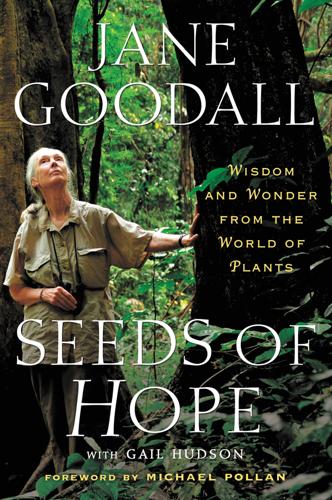
Seeds of Hope: Wisdom and Wonder From the World of Plants
by
Jane Goodall
Published 1 Apr 2013
In the sixteenth century, Spanish settlers in South America discovered that local indigenous people had, for hundreds of years, been using powdered cinchona bark as a treatment for fevers, and it seems that Jesuit priests first introduced the wonder bark to Spain. By 1630 regular shipments were being sent from Peru to Spain, from whence it was traded to other European countries. Word spread and the demand grew. By the early 1800s cinchona bark was seen as essential for the health of all those administering the European colonies in tropical areas around the world. As all this bark came from trees growing in the wild, it soon became impossible to meet the constantly increasing need for the bark, and prices soared. Finally, in 1820, two French chemists were able to extract, from the bark, an alkaloid that had antimalarial properties; they named it “quinine.”
…
However, in order to be economically successful, the colonial invaders needed plentiful supplies of cheap labor—and it was this that led to the transatlantic slave trade. The first African slaves were traded by the Portuguese in the sixteenth century, and during the following four hundred years or so an estimated 12.5 million people were abducted from their homes, mainly from West and Central Africa, and shipped to the European colonies. Most were forced to work on the plantations. And those plantations not only led to massive human suffering but were (and still are) extremely damaging to the environment. Large areas of land are cleared, trees felled, fertilizers (chemical today) added to the soil, and monocultures established.
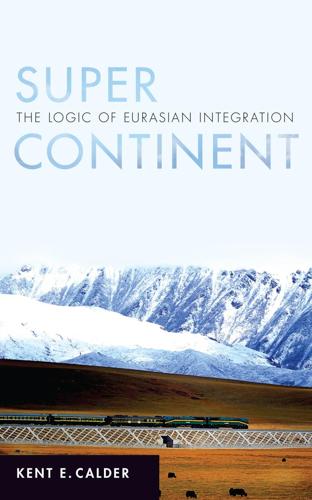
Super Continent: The Logic of Eurasian Integration
by
Kent E. Calder
Published 28 Apr 2019
The first wave came as merchants arrived, becoming central figures in such trading centers as Palembang and Surabaya in the course of the fourteenth century, although they were largely assimilated into the local population over the following two hundred years.3 The second and most numerous wave of migration arrived in Southeast Asia at the high tide of European colonialism during the late nineteenth century, with many being driven from China by the poverty and ruin caused by the Taiping rebellion (1850 –1864). In Southeast Asia, the Dutch, French, and British colonizers used these new migrants not only as laborers on plantations but often also as tax collectors and low-level administrators of colonial rule.
…
The first was a foreign-investment park in Suzhou; others dealt with city planning (Tianjin), environmental management (Guangzhou), and Internet of Things (Chongqing).63 In Conclusion Southeast Asia has broad historical and economic relations with other parts of Eurasia, including both Europe and Japan, but with a deepening recent China concentration. All of the Southeast Asian nations except Thailand were once European colonies; virtually all were occupied by Japan as well; and Vietnam, with the most complex foreign ties, also had deep Cold War ties links to the Soviet Union, as well as to the United States. The geographical and economic fulcrum for Southeast Asia’s continental ties, however, has almost invariably in recent years been China—the formidable geo-economic presence looming to the north.
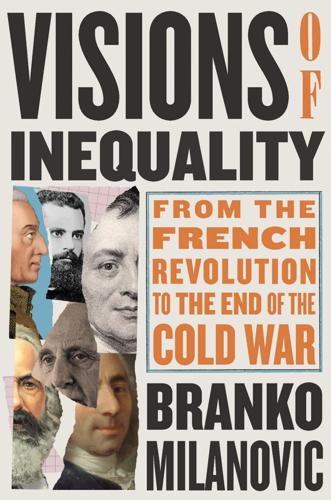
Visions of Inequality: From the French Revolution to the End of the Cold War
by
Branko Milanovic
Published 9 Oct 2023
Smith’s worldwide interests included colonial management and mismanagement, and it is not surprising, since his objective was to find the “secret to economic growth,” that he was especially scathing on the topic of merchant companies governing colonies, because merchants’ fates were not just divorced from those of the citizens of the “unfortunate countries” they oversaw but ran distinctly in the opposite direction: “It is a very singular government in which every member of the administration wishes to get out of the country, and consequently to have done with the government as soon as he can, and to whose interest, the day after he has left it and carried his whole fortune with him, it is perfectly indifferent though the whole country was swallowed up by an earthquake.” 9 The discussion of European colonial practices covers more than a hundred pages in Book IV of The Wealth of Nations (this is about 8 percent of the entire volume), and is almost uniformly negative, except for a few instances where Smith argues that colonists should be allowed to do as they please (as in continental North America)—that is, where they are not considered as default villains.
…
As shown in Chapter 2 , they did not go unnoticed by Adam Smith. Smith’s stadial theory of development may be interpreted as a way to explain the gap. Yet, income differences between the Western (European and North American) countries and the rest of the world became more obvious and more studied with the expansion of European colonialism and imperialism. The Maddison Project’s 2020 data show that the per-capita gap between the richest and the poorest country in the world has steadily risen throughout the nineteenth century, from about 4 to 1 in the beginning of the century to 12 to 1 just before World War I. In Figure 7.5 , some of the spikes in the individual years are due to the changing sample of countries, but the trend shown by the thick line is unmistakable.

Collapse
by
Jared Diamond
Published 25 Apr 2011
In Haiti, more urgent than any of those just-mentioned consequences is the problem of the loss of wood for making charcoal, Haiti's main fuel for cooking. The difference in forest cover between the two countries is paralleled by differences in their economies. Both Haiti and the Dominican Republic are poor countries, suffering from the usual disadvantages of most of the world's other tropical countries that were former European colonies: corrupt or weak governments, serious problems of public health, and lower agricultural productivity than in the temperate zones. On all those counts, though, Haiti's difficulties are much more serious than those of the Dominican Republic. It is the poorest country in the New World, and one of the poorest in the world outside of Africa.
…
Behind the reserve system stands a vigorous indigenous conservation movement with many non-governmental organizations staffed by Dominicans themselves, rather than foisted on the country by foreign advisors. All those dissimilarities in forest cover, economy, and natural reserve system arose despite the fact that the two countries share the same island. They also share histories of European colonialism and American occupations, overwhelmingly Catholic religion coexisting with a voodoo pantheon (more notably in Haiti), and mixed African-European ancestry (with a higher proportion of African ancestry in Haiti). For three periods of their history they were joined as a single colony or country.
…
During the 1700s the Spanish colony had a low population, few slaves, and a small economy based on raising cattle and selling their hides, while the French colony had a much larger population, more slaves (700,000 in 1785, compared to only 30,000 in the Spanish part), a proportionately much lower non-slave population (only 10% compared to 85%), and an economy based on sugar plantations. French Saint-Domingue, as it was called, became the richest European colony in the New World and contributed one-quarter of France's wealth. In 1795, Spain finally ceded its no-longer-valuable eastern part of the island to France, so that Hispaniola became briefly unified under France. After a slave rebellion broke out in French Saint-Domingue in 1791 and 1801, the French sent an army that was defeated by the slave army plus the effects of heavy losses to diseases.

Escape From Rome: The Failure of Empire and the Road to Prosperity
by
Walter Scheidel
Published 14 Oct 2019
Casale 2010: 114–15, 119–20, 138, 155 on the viziers and their downfall, 163, 177–79 on the shift to Yemen, and 87–88, 114–19, 155–56, 162–63, 182–83 on the “Indian Ocean faction” at the Ottoman court. 69. Ibid., 182–83 (shift to private trade), 199–202 (crisis and losses), 202–3 (quote). For the crisis, see chapter 6 in this volume. 70. Wallerstein 1974: 60 (quote). 71. Abernethy 2000: 173–273, on which I draw in the following, remains the most compelling account of the causes of European colonial expansion. 72. Ibid., 206–8 (quote: 208), and more generally 192–253 for the central role of competitive fragmentation. Cf. also Chirot 1985: 192. Logic: Vries 2015: 382. 73. Constraints on expansion: Abernethy 2000: 184; Rosenthal and Wong 2011: 217. Extension: Vries 2015: 381. Contrasts: Abernethy 2000: 212–13, who speculates that a fragmented China might have behaved differently.
…
The rise of Western Christendom: Triumph and diversity, A.D. 200–1000. 2nd ed. Malden, MA: Blackwell. Brunt, Peter A. 1987. Italian manpower 225 B.C.–A.D. 14. Reprint with postscript. Oxford: Clarendon Press. Bryant, Joseph M. 2006. “The West and the rest revisited: Debating capitalist origins, European colonialism, and the advent of modernity.” Canadian Journal of Sociology 31: 403–44. Bryant, Joseph M. 2008. “A new sociology for a new history? Further critical thoughts on the Eurasian similarity and great divergences theses.” Canadian Journal of Sociology 33: 149–67. Bulliet, Richard W. 2009. Cotton, climate, and camels in early Islamic Iran: A moment in world history.
…
See also counterfactual scenario for overseas exploration; specific mega-regions and countries German empire, 164–73, 167; ability to sustain empire of, 12, 35, 172; aristocracy in, 213, 241; castle construction in, 169; church’s role in and relationship with, 171, 346, 347, 512; compared to China, 562n30; compared to Roman empire, 213; ducal elites in, 168–69, 241; failure to expand, 166, 168, 172–73; fragmentation into quasi-polities, 169, 228; governance in, 350; integrity of ruling class in, 214; internal conflicts in (1025 to 1142), 165; land given in exchange for loyalty and military service in, 235, 238, 240–41, 562n30; Magyar raids into (tenth century), 187, 293–94; military controlled by nobles in, 169–70, 237–38, 244, 245; no standing armies in, 238; weak central power coupled with fiscal constraints in, 169–70, 214; zones of armed conflict in, 168 Germanic languages, 311–12 Germany: position in Holy Roman Empire, 195; Protestants in, 196, 197. See also Holy Roman Empire; Prussia “getting to Denmark,” 19, 539n26 Ghaznavids, 296, 301 ghost acreages, 424–25, 426–27, 588n12, 589n19, 589n21 Gibbon, Edward, 18, 128, 131, 149 Glahn, Richard von, 401, 412 globalization: criticism of and response to, 425–28; European colonial reach, 420–25, 452. See also maritime exploration and expansion; New World Goethe, Johann Wolfgang von, 18 Goffart, Walter, 236 Golden Horde in Eastern Europe, 183–85, 188–89, 213, 292 Goldscheid, Rudolf, 232 Goldstone, Jack, 208–10, 497, 560n16, 586n216, 595n38, 596n44, 597n68, 598n76 Goths and Gothic language, 311–12 Grainger, John D., 550n14 Great Divergence.
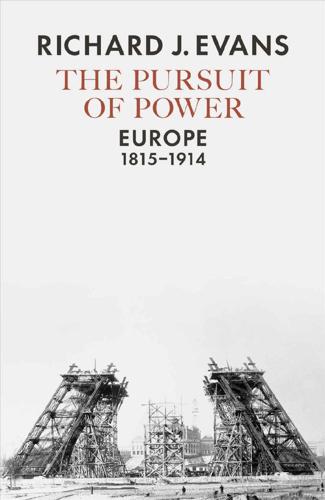
The Pursuit of Power: Europe, 1815-1914
by
Richard J. Evans
Published 31 Aug 2016
The end of the European empires in the Americas was thus bound up inextricably with events in Europe: the ferment of ideas generated by the French Revolution; the assertion of British sea power in the drive to open up mercantilist-controlled areas of South America to free trade; the severing of connections between the Americas and European colonial metropoles by war; and the insistence of European states on imposing tight and in some cases new economic regulations and taxes on increasingly prosperous and autonomous American colonies. At the same time, events in the Americas also had a profound effect on Europe. For European liberals, radicals and revolutionaries, Latin America (with the exception of Brazil, where slavery continued virtually unchanged through the following decades) became a classic example of the success of movements of emancipation and liberation.
…
France’s population growth was beginning to stagnate, and the country was unable to make good the loss of nearly one and a half million men on the battlefield. France’s share of the European population became steadily smaller. For the rest of the nineteenth century, there was more or less an equilibrium of power between the major continental European states, and on a larger scale, European colonial rivalries, so disruptive in the previous century, were now settled by international agreement, building on the experience of the Congress system and the Concert of Europe. Some historians have claimed that it was the ancien régime that ultimately triumphed over Napoleon in 1814–15, and certainly there were many notable continuities across the Revolutionary and Napoleonic divide.
…
Muslim social and educational institutions thought to encourage resistance to French rule were destroyed. Within a few years the northern part of the country had been turned into three French departments, satisfying settler demands, while the southern part remained under army control. Algeria was something of an exception to the general nature of European colonialism before 1880. More traditional patterns obtained in the rest of Africa, where three different interests intersected. The first of these was trading. As the slave trade declined then came to an end, European trading bases began to deal in vegetable oils instead of slaves, processing African-grown groundnuts and palms.
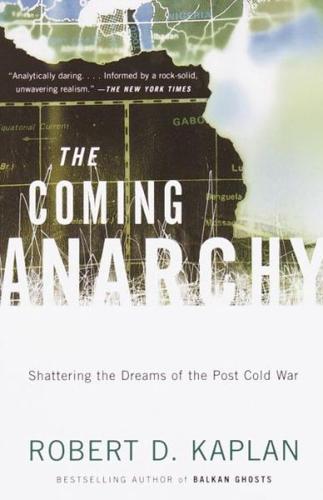
The Coming Anarchy: Shattering the Dreams of the Post Cold War
by
Robert D. Kaplan
Published 1 Jan 1994
Traveling with Eritrean guerrillas in what, according to the map, was northern Ethi opia, traveling in "northern Iraq" with Kurdish guerrillas, and staying in a hotel in the Caucasus controlled by a local mafia— to say nothing of my experiences in West Africa—led me to de velop a healthy skepticism toward maps, which, I began to realize, create a conceptual barrier that prevents us from com prehending the political crack-up just beginning to occur worldwide. Consider the map of the world, with its 190 or so countries, each signified by a bold and uniform color: this map, with which all of us have grown up, is generally an invention of modernism, specifically of European colonialism. Modernism, in the sense of which I speak, began with the rise of nationstates in Europe and was confirmed by the death of feudalism at the end of the Thirty Years' War—an event that was inter posed between the Renaissance and the Enlightenment, which together gave birth to modern science.
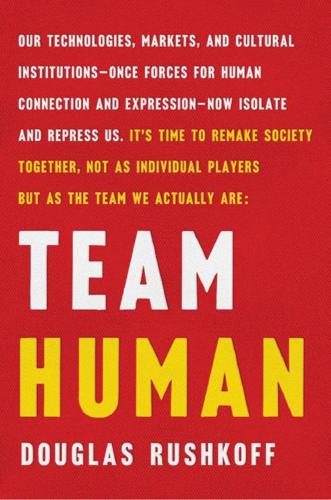
Team Human
by
Douglas Rushkoff
Published 22 Jan 2019
Our local peer-to-peer interactions, solidarity, and collective concerns were replaced by a large-scale, abstracted democratic process that couldn’t help but become more like the expression of brand affinities than of human needs. We became individuals voting our personal preferences in the seclusion of a booth, rather than groups expressing their solidarity through collaboration. This same process continues to this day. What the British East India Company, European colonial empires, and modern transnational corporations did to cooperative peoples of the world, today’s digital companies are doing to us: disconnecting us from the ground on which we stand, the communities where we live, and the people with whom we conspire. To conspire literally means to “breathe together”—something that any group of people meeting together in real space is already doing.
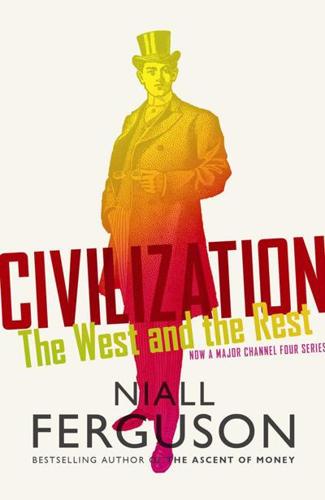
Civilization: The West and the Rest
by
Niall Ferguson
Published 28 Feb 2011
In the twenty-three modern Asian countries for which data are available, with one exception, the health transition came between the 1890s and the 1950s. In Africa it came between the 1920s and the 1950s, with just two exceptions out of forty-three countries. In nearly all Asian and African countries, then, life expectancy began to improve before the end of European colonial rule. Indeed, the rate of improvement in Africa has declined since independence, especially but not exclusively because of the HIV-AIDS epidemic. It is also noteworthy that Latin American countries did not fare any better, despite enjoying political independence from the early 1800s.8 The timing of the improvement in life expectancy is especially striking as much of it predated the introduction of antibiotics (not least streptomycin as a cure for tuberculosis), the insecticide DDT and vaccines other than the simple ones for smallpox and yellow fever invented in the imperial era (see below).
…
Life expectancy in mid-nineteenth-century Senegal was probably in the low to mid-twenties.51 So Africa was to be the ultimate testing ground for the fourth killer application of Western civilization: the power of modern medicine to prolong human life. MÉDECINS SANS FRONTIÈRES Not for nothing was West Africa known as the white man’s graveyard: all over Africa the European colonial project ran the risk of being snuffed out in its infancy. A good illustration of the risks Europeans ran in Africa is the monument on Gorée Island to the twenty-one French doctors who perished in a yellow-fever outbreak in 1878. Tropical diseases took a heavy toll on the French colonial civil service; between 1887 and 1912, a total of 135 out of 984 appointees (16 per cent) died in the colonies.
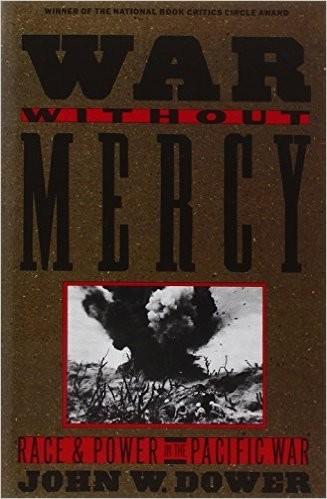
War Without Mercy: PACIFIC WAR
by
John Dower
Published 11 Apr 1986
As one of the major Japanese newspapers put it after the battle of Iwo Jima, “Enemy plans to wipe Japan and the Japanese people off the face of the earth are no propaganda manifestations.”70 One of the more provocative diversions in doing military history involves imagining things that did not happen, and there are several such hypothetical possibilities that attract students of the war in Asia. What if the Japanese had attacked only the British and European colonies in Southeast Asia, for example, or had been detected en route to Pearl Harbor? What if the U.S. aircraft carriers had been at the Hawaii anchorage as expected, or the Japanese had followed up with a further wave of attacks that included targets such as the fuel storage tanks? Suppose Hitler had not declared war against the United States following Japan’s attack (it is still not clear why he did), or the Japanese had changed their naval codes and plugged their disastrous intelligence leaks before Midway, or the Japanese naval command at Leyte had been bolder and more imaginative–how would such developments have affected the course of the war?
…
However optimistic Anglo-American leaders may have been in the summer and early autumn of 1941 concerning the possibility of forcing the Japanese to abandon their ambitions in Asia, by late November it had become clear to the top leadership that an attack was imminent. It was still assumed, however, that such an attack would be directed against the European colonies in Asia rather than the U.S. forces in Hawaii or the Philippines; and, in any case, like their British counterparts, few Americans at the command or popular level believed the Japanese would prove to be a formidable foe. Top-level U.S. military planners were by no means unaware of their relative weaknesses vis-à-vis the Japanese in 1941.
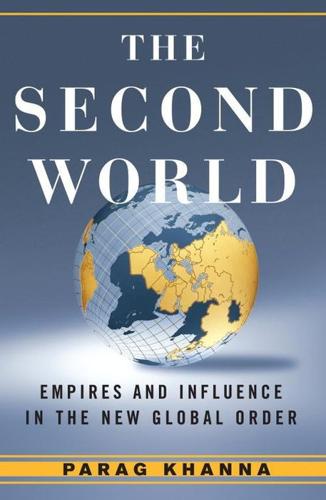
Second World: Empires and Influence in the New Global Order
by
Parag Khanna
Published 4 Mar 2008
The quality of public schools has fallen all over the Arab region, while Islamic social networks provide food, shelter, and spiritual fulfillment to restless youth seeking a sense of belonging and importance—but similarly neglect to teach marketable skills. Idle hands do the devil’s work, and the social tinderbox created by undereducation and unemployment can be mobilized either to build a modern society or to destroy it. As the epic film The Battle of Algiers demonstrates, even 150 years of European colonialism failed to transform Arab society. What else can be done? For years Tunisians, Lebanese, Egyptians, and other Arabs have wandered in search of work in the oil industries of Libya, Iraq, and Saudi Arabia, and cross-border supply chains are finally emerging that can take advantage of this fluidity of Arab labor.11 Europe has invested in special investment and export havens—a status the freewheeling port of Tangier has always enjoyed—which are emerging along the Mediterranean to create jobs, ease exports, and increase profits.
…
Because Lebanon has no stability, it has freedom and democracy by default. Syria, by contrast, is stabilized by leaders who allow neither freedom nor democracy. Both are linked by three major forces: the legacy of Phoenicians and Greek rule over the Levant (Tyre, Byblos, and Sidon were wealthy trade centers), European colonialism, and now a cross-border fraternal rivalry in which frequent assassinations are fair game and the sons of the now-deceased leaders Rafiq Hariri and Hafez Assad—Saad Hariri and Bashar Assad—struggle to defend their fathers’ honor. No one actually controls Lebanon, least of all the Lebanese.
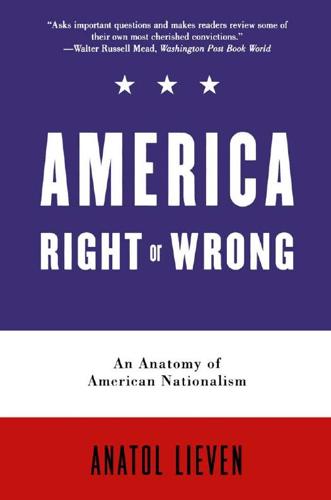
America Right or Wrong: An Anatomy of American Nationalism
by
Anatol Lieven
Published 3 May 2010
—Vachel Lindsay, "Bryan, Bryan, Bryan, Bryan" (on the defeat of William Jennings Bryan's populist campaign for president, 1896)1 R adical nationalism has many fathers, but its mother is defeat, and her milk is called humiliation. From this poisoned nourishment comes in part the tendency to chauvinist hatred which has streamed through so many of the world's nationalisms. This is self-evidently true of the nationalisms of the former European colonies, nationalisms which grew out of their conquest and occupation by European and other empires and the destruction or forced transformation of their previous economic structures and traditions of moral and political authority. It is no less true, however, of those countries which avoided direct conquest, but were forced to defend themselves, to imitate Western forms of government, economics, society and culture as best they could and reshape themselves radically in the process.
…
This legacy has bred in sections of the American tradition both a capacity for ruthlessness and a taste for absolute and unqualified victory of the kind which was in the end won over all the indigenous adversaries of White America. A second legacy was constant expansionism, often pushed for by the Frontier White populations against the wishes of administrations in Washington. In the South especially, this expansionist spirit was directed not just toward the Indian and Mexican lands but also to European colonial possessions in the Caribbean. In the twentieth century, as T. R. Fehrenbach has written, it carried over into support for far wider agendas: "Since 1900, Texas had increasingly fused back with the nation in foreign policy, especially when foreign policy was basically imperial— whatever name was put upon it.

The Rise and Fall of the Neoliberal Order: America and the World in the Free Market Era
by
Gary Gerstle
Published 14 Oct 2022
In Finland it was 23 percent, in Belgium 13 percent, and even in Norway, thought to be part of a Scandinavian bloc congenitally hostile to communism (and embracing social democracy), a significant 12 percent.37 Communists had also been prominently involved in resistance movements against Japanese occupiers in East and South Asia, giving them prestige and influence in the movements for national liberation in countries such as Vietnam that had been European colonies and that were now seeking independence.38 In both the West and East, communists, and their benefactor, the Soviet Union, were going to be central players in shaping the postwar world. Their leadership role in defeating fascism bathed them in glory and made them models of liberation for many of the world’s oppressed.
…
Thus, alt-Gorbachev would have opted in 1990 and 1991 for capitalist development within an authoritarian political framework, much as Deng was then doing in China. The Soviet democratic dissidents would have been crushed, as the Chinese ones were in Tiananmen Square, and the Soviet Union would have remained intact. The Soviet Union also would have held onto its Eastern European colonies. And in a move that would have pleased the young Putin stationed in the German Democratic Republic, alt-Gorbachev would have refused to countenance the reunification of Germany. Too much Russian blood had been spilled in warring against the Nazis to allow for a reunification that might one day be seen as a stepping stone to the formation of a Fourth Reich.
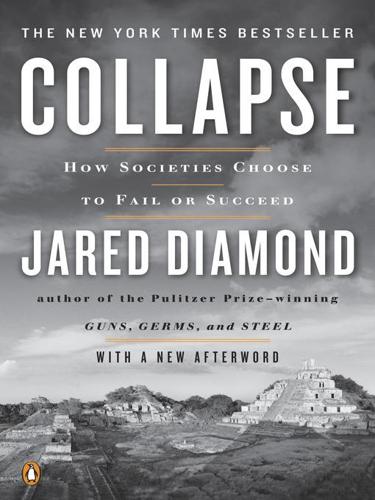
Collapse: How Societies Choose to Fail or Succeed
by
Jared Diamond
Published 2 Jan 2008
In Haiti, more urgent than any of those just-mentioned consequences is the problem of the loss of wood for making charcoal, Haiti’s main fuel for cooking. The difference in forest cover between the two countries is paralleled by differences in their economies. Both Haiti and the Dominican Republic are poor countries, suffering from the usual disadvantages of most of the world’s other tropical countries that were former European colonies: corrupt or weak governments, serious problems of public health, and lower agricultural productivity than in the temperate zones. On all those counts, though, Haiti’s difficulties are much more serious than those of the Dominican Republic. It is the poorest country in the New World, and one of the poorest in the world outside of Africa.
…
Behind the reserve system stands a vigorous indigenous conservation movement with many non-governmental organizations staffed by Dominicans themselves, rather than foisted on the country by foreign advisors. All those dissimilarities in forest cover, economy, and natural reserve system arose despite the fact that the two countries share the same island. They also share histories of European colonialism and American occupations, overwhelmingly Catholic religion coexisting with a voodoo pantheon (more notably in Haiti), and mixed African-European ancestry (with a higher proportion of African ancestry in Haiti). For three periods of their history they were joined as a single colony or country.
…
During the 1700s the Spanish colony had a low population, few slaves, and a small economy based on raising cattle and selling their hides, while the French colony had a much larger population, more slaves (700,000 in 1785, compared to only 30,000 in the Spanish part), a proportionately much lower non-slave population (only 10% compared to 85%), and an economy based on sugar plantations. French Saint-Domingue, as it was called, became the richest European colony in the New World and contributed one-quarter of France’s wealth. In 1795, Spain finally ceded its no-longer-valuable eastern part of the island to France, so that Hispaniola became briefly unified under France. After a slave rebellion broke out in French Saint-Domingue in 1791 and 1801, the French sent an army that was defeated by the slave army plus the effects of heavy losses to diseases.
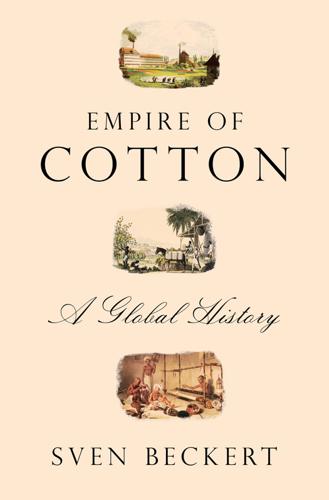
Empire of Cotton: A Global History
by
Sven Beckert
Published 2 Dec 2014
No longer did the personal authority of the king, the lord, or the master, or age-old custom, regulate the market; instead the market was made by explicit rules relentlessly enforced by contracts, laws, and regulations. Weaker states continued to rely on client networks, the subcontracting of authority, and arbitrary rule—characteristics that would not provide fertile ground for industrial capitalism. And as European colonialism spread its tentacles into ever more areas of the world, it further strengthened the state capacity of the colonizers, while at the same time undermining political authority and state capacity among the colonized. Just as state capacity became ever more important, its distribution around the globe became more unequal.
…
Yet while Russia mobilized Central Asian cultivators and forcefully settled nomads to grow cotton (as had also been the case in the Ottoman Empire’s Çukurova), the United States removed most indigenous inhabitants from cotton-growing soils as it encouraged citizens from farther east to move in, combining, as historian John C. Weaver has put it, “defiant private initiative” with “the ordered, state-backed certainties of property rights.”24 Capturing and incorporating new territories as a strategy to increase cotton production for world markets was thus not just significant in the context of European colonial expansion. The U.S. cotton empire expanded at a rapid clip and entered entirely new territories. Before the Civil War, in 1860, 5,386,897 bales of cotton had been produced in the United States, but in 1920 production had increased two and a half times, to 13,429,000 bales, and the territory used for cotton grew rapidly.
…
Worldwide, estimates of the number of people involved in the growing and manufacturing of cotton range from approximately 110 million households involved in the growing of cotton, 90 million in its transportation, ginning, and warehousing, and another 60 million workers operating spinning and weaving machines and stitching together clothing, to a total for all branches of that industry of 350 million people. This number, never before reached in one industry, represents between 3 and 4 percent of the world’s population. More than 35 million hectares of land are dedicated to the growing of cotton, the equivalent of the surface area of Germany.5 Some nations, just like European colonial powers in Africa a century earlier, have policies in place to force farmers to produce cotton, despite its often devastating environmental and financial consequences. Uzbekistan, for instance, one of the globe’s top ten cotton exporters, continues to force its farming population to grow cotton despite the fact that the need to irrigate its dry lands has essentially drained the Aral Sea and turned much of the country into virtual salt flats.
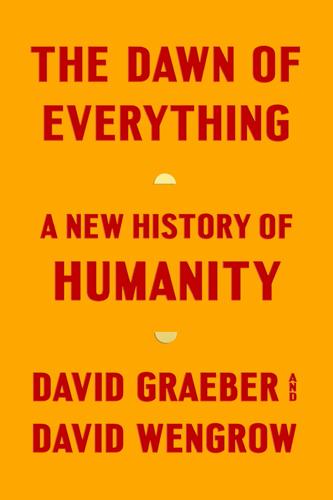
The Dawn of Everything: A New History of Humanity
by
David Graeber
and
David Wengrow
Published 18 Oct 2021
Indeed, it was to take an enormous effort to salvage that very sense of European superiority which Enlightenment thinkers had aimed to upend, unsettle and de-centre. Certainly, over the next century and more, such ideas became a remarkably successful strategy for doing so. But they also created a welter of contradictions: for instance, the peculiar fact that European colonial empires, unlike almost any other in history, were forced to espouse their own ephemerality, claiming to be mere temporary vehicles to speed up their subjects’ march to civilization – at least those subjects who, unlike the Wendat, they hadn’t largely wiped off the map. At this point we find ourselves back full circle with Rousseau.
…
HOW THE MYTH THAT FORAGERS LIVE IN A STATE OF INFANTILE SIMPLICITY IS KEPT ALIVE TODAY (OR, INFORMAL FALLACIES) Let’s first ask why even some experts apparently find it so difficult to shake off the idea of the carefree, idle forager band; and the twin assumption that ‘civilization’ properly so called – towns, specialized craftspeople, specialists in esoteric knowledge – would be impossible without agriculture. Why would anyone continue to write history as if places like Poverty Point could never have existed? It can’t just be the whimsical result of airy academic terminologies (‘Archaic’, ‘Jōmon’ and so on). The real answer, we suggest, has more to do with the legacy of European colonial expansion; and in particular its impact on both indigenous and European systems of thought, especially with regard to the expression of rights of property in land. Recall how – long before Sahlins’s notion of the ‘original affluent society’ – indigenous critics of European civilization were already arguing that hunter-gatherers were really better off than other people because they could obtain the things they wanted and needed so easily.
…
The best we can do, when confronted with unique historical events or configurations such as the Persian or Hellenistic empires, is to engage in a project of comparison. This at least can give us an idea of the sort of things that might happen, and at best a sense of the pattern by which one thing is likely to follow another. The problem is that ever since the Iberian invasion of the Americas, and subsequent European colonial empires, we can’t even really do that, because there’s ultimately been just one political-economic system and it is global. If we wish, say, to assess whether the modern nation state, industrial capitalism and the spread of lunatic asylums are necessarily linked, as opposed to separate phenomena that just happen to have come together in one part of the world, there’s simply no basis on which to judge.7 All three emerged at a time when the planet was effectively a single global system and we have no other planets to compare ourselves to.
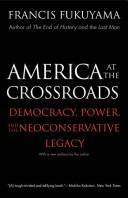
America at the Crossroads: Democracy, Power, and the Neoconservative Legacy
by
Francis Fukuyama
Published 20 Mar 2007
It is useful at the outset to separate economic and political development, since the intellectual histories of these two complementary aspects of modernization have taken somewhat different paths, though the two strands had converged somewhat by the 1990s, with interesting implications for future policy. Economic Development Thinking on economic development has gone through a series of distinct stages since the dissolution of European colonial empires that began in the late 1940s. Under the early influence of the Harrod-Domar growth model, there was a widespread belief among economists that the chief obstacle to growth in newly independent countries was the so-called investment gap. 5 They tacitly assumed that underdeveloped countries were like developed countries, only lacking in capital.
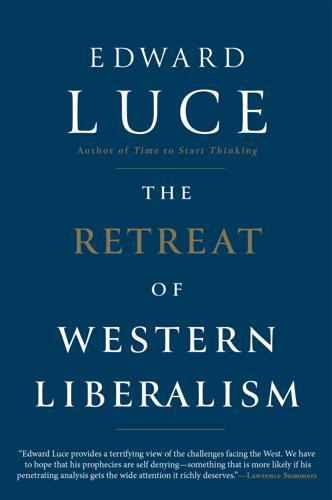
The Retreat of Western Liberalism
by
Edward Luce
Published 20 Apr 2017
The spread of automation, including artificial intelligence and remote intelligence, which some call the fourth industrial revolution, is still in its early stages. So too is what the American journalist Fareed Zakaria has labelled the rise of the rest.5 The emergence of China is the most dramatic event in economic history. We are living in an age of convergence no less dramatic than the age of divergence brought about by European colonialism and the Industrial Revolution. The downward pressure on the incomes of the West’s middle classes in the coming years will be relentless. The second part, Reaction, explains the resulting degeneration of Western politics. We are taught to think our democracies are held together by values.
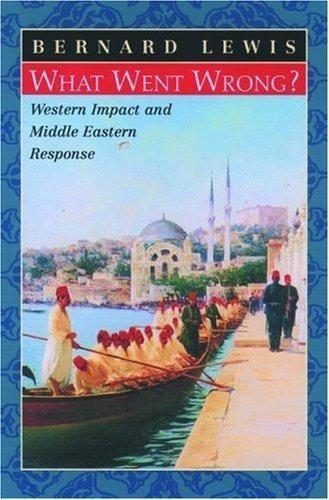
What Went Wrong? Western Impact and Middle Eastern Response
by
Bernard Lewis
Published 1 Jan 2001
French-Ottoman cooperation was briefly interrupted by the Franco-Ottoman War of 1798 to 1802, but was later resumed, only to be interrupted again when Napoleon made peace with the czar at Turkish expense. The Revolutionary and Napoleonic Wars, involving the whole of Europe, extended to Africa and more especially to Asia through the encounters there between the European colonial powers. The relative weakness of the major Islamic powers had already in a sense been revealed by the first European expansion in Asia, when even small countries like Portugal and the Netherlands were able to establish themselves on the seas and on the coasts in defiance of the Muslim powers.
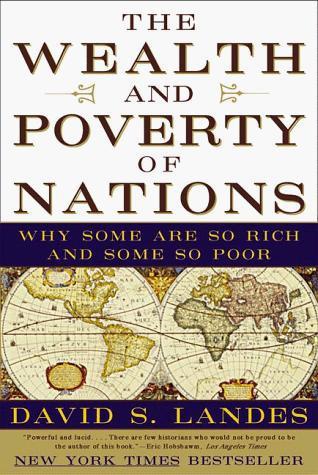
The Wealth and Poverty of Nations: Why Some Are So Rich and Some So Poor
by
David S. Landes
Published 14 Sep 1999
The Middle East: 2,000 Years of History from the Rise of Christianity to the Present Day. London: Weidenfeld & Nicolson. Lewis, Colin M. 1985. “Railways and Industrialization: Argentina and Brazil, 1870-1929,” in Abel and Lewis, eds., Latin America, pp. 199-230. Lewis, David Levering. 1987. The Race to Fashoda: European Colonialism and African Resistance in the Scramble for Africa. New York: Weidenfeld & Nicolson. Lewis, Gwynne. 1994. “Proto-industrialization in France,” Econ. Hist. Rev., 47, 1: 150-64. Lewis, Paul H. 1990. The Crisis of Argentine Capitalism. Chapel Hill: Univ. of North Carolina Press. Lewis, W.
…
Faujas de Saint Fond, a French traveler of the late eighteenth century, remarks that whereas English cultivators lived snug and warm thanks to coal fuel, French peasants often kept to bed in winter, thereby aggravating their poverty by forced idleness. * Cf. Adam Smith, Wealth of Nations, Book IV, ch. 7, Part 2: “In all European colonies the culture of the sugarcane is carried on by negro slaves. The constitution of those who have been born in the temperate climate of Europe could not, it is supposed, support the labour of digging the ground under the burning sun….” † Not everyone would agree. Cf. Blaut, The Colonizer’s Model, p. 70, who says that it has become clear, “from many sources of evidence including physiological studies, that human bodies of all sorts can labor as effectively in the tropics as elsewhere if the bodies in question have had time to adjust to tropical conditions.”
…
† Later incursions and invasions by Danes led in the ninth century to cession of a substantial area in eastern England that was known as the Danelaw (Danelagh). The Danish invaders intermarried with the residents, and a half-century later the area was reabsorbed into the English kingdom. * Exception is sometimes made for modem Japan; but what of precolonial Africa? The same “progressive” thinkers who denounce European colonialism are quick enough to take pride in the expansion of the Zulu or Ashante. On this manichean view of world history, setting the demonic white man against victimized people of color, see Bruckner’s emphatic Tears of the White Man. † Thus the Spanish government originally envisaged keeping Spaniards and Indians apart, but the inevitable unions of invaders and natives (castas) led to a large mixed population that, owing to the ravages of disease, almost came to equal in numbers the Indians of pure race.

Palo Alto: A History of California, Capitalism, and the World
by
Malcolm Harris
Published 14 Feb 2023
As Jessica Teisch observes in her book Engineering Nature: Water, Development, and the Global Spread of American Environmental Expertise, the “California model” was so adaptable because it reformatted the relationships between capital, labor, and the environment according to a generic formula: Anglos rule; all natives are Indians; all land and water is just gold waiting to happen. Geopolitics took on the character of the gold rush, as European colonial powers engaged in competitive scrambles for colonial territory in sub-Saharan Africa and China. California engineers became the heralds of proletarianization around the world, the shock troops of global enclosure, drawing the lines that so many others were forced to follow. In their packs they carried very particular ideas gleaned from the Golden State about how society should be arranged.
…
The law separated whites into national groups, but only in order to incorporate them in proper proportion as white Americans. Black Americans secured their citizenship by force in the Civil War, and so the bill’s logic required the annual admission of 200 black Africans: 100 each from the free nations of Ethiopia and Liberia. As for the rest of the racially undesirable world, European colonialism ensured that the most desirable whites—defined as desirable in large part thanks to their success in colonization—controlled those quota slots. California’s growers were still dependent on low-wage nonwhite workers, especially with the labor demand crunch of World War I, which meant they had to get by on loopholes.
…
Chastened by defeat in the 1894–95 Sino-Japanese War, in the summer of 1898 the Guangxu Emperor instituted a series of modernization reforms designed to make China internationally competitive: a new education system, capitalist industrialization, and the abolition of aristocratic sinecures. Part of the plan was to exploit the kingdom’s natural resources by establishing the Bureau of Mines. European colonial powers were in the middle of their “scramble” phase, and having divided the continent of Africa at the Berlin Conference in 1885, Western capital now eyed China’s new mining concessions. The Bureau of Mines director, Zhang Yi, consulted with Charles Moreing, who was happy to buy up bonds from the Chinese Engineering and Mining Company (CEMC) and went as far as to propose his company’s hotshot young mine evaluator to head up the technical staff.i Bewick, Moreing offered to double Hoover’s salary to $20,000 a year (plus expenses, of course) if he would once again head into the unknown and bring back a walrus tooth.
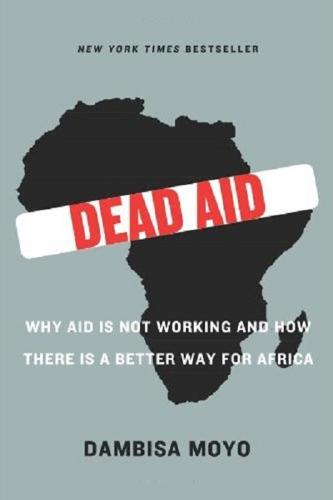
Dead Aid: Why Aid Is Not Working and How There Is a Better Way for Africa
by
Dambisa Moyo
Published 17 Mar 2009
Political system: adopted a nominal democracy ten years ago, having spent twenty years as a one-party state led by the same political party, and the same president. This is the Republic of Dongo. While fictitious, the Republic of Dongo is not far off the reality of many African countries. Freed from European colonial rule in the 1960s, the country’s background and evolution are pretty characteristic of the average African country. A socialist economy in the 1970s, it underwent privatization in the mid-1980s, moved to a democratic regime after Glasnost and Perestroika,1 and is ranked 3 out of a possible 10 on the Transparency International Corruption Perceptions Index (where 0 is the least transparent).
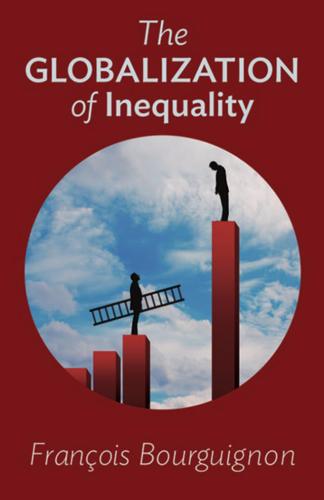
The Globalization of Inequality
by
François Bourguignon
Published 1 Aug 2012
While Japan first saw significant growth during the interwar period, the Asian “dragons” (South Korea, Hong Kong, Singapore, Taiwan) began to experience strong growth after the war, and the Latin American countries saw accelerated growth during the Second World War as a result of strong policies of import substitution. Growth also accelerated in the European colonies that achieved independence. Finally, the gap between rates of growth in developed countries and developing countries would reverse slightly before the turn of the twenty-first century. For more than two decades now, developing countries have been catching up. This began in Asian countries, notably the Indian and Chinese giants, marching in the steps of the Asian dragons, and since then has spread progressively to a large portion of the developing world, including the African continent in the 2000s.
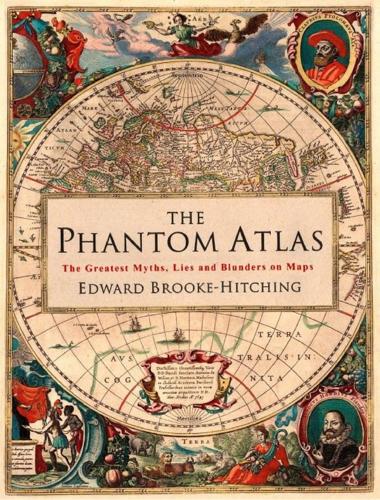
The Phantom Atlas: The Greatest Myths, Lies and Blunders on Maps
by
Edward Brooke-Hitching
Published 3 Nov 2016
AUSTRALIA’S INLAND SEA 24°54'S, 137°13'E Maslen’s wishful mapping of Australia’s possible inland sea and river system, from The Friend of Australia (1830). It had been forty-two years since the British First Fleet, commanded by Captain Arthur Philip, landed at Australia’s Botany Bay and formed the first European colony at Port Jackson. Initially, the new land served as a penal territory, but the British were keen to push deeper into the unmapped Australian interior and get a sense of the potential for further settlement. They knew from experience that following rivers inland usually led to mountains, river systems and fertile land that frequently exceeded expectation, and so it was assumed that the same topographic logic could be applied to Australia – what kind of rich verdant paradise, it was wondered, could be waiting in the heartland?
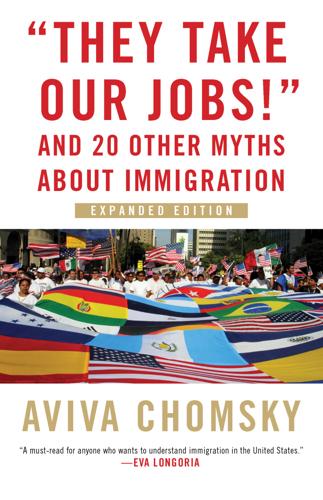
"They Take Our Jobs!": And 20 Other Myths About Immigration
by
Aviva Chomsky
Published 23 Apr 2018
One aspect of globalization in the second half of the twentieth century has been a huge population movement from the former colonies into the lands of their former colonial masters. In order to comprehend this global phenomenon, we have to look at the socioeconomic and cultural legacy of colonialism. In broad strokes, the European colonialism that shaped the modern world could be described as the conquest of people of color by white people, the massive transfer of natural resources out of the colonies and into the colonial powers, and the dispossession of formerly self-sufficient native inhabitants as their lands were taken for the export economy.

A Short History of Humanity: How Migration Made Us Who We Are
by
Johannes Krause
and
Thomas Trappe
Published 8 Apr 2021
During the age of the Bell Beaker culture, Celtic was probably spoken widely in Western Europe until the Roman Empire advanced into the northwest. Of the Hellenic languages to emerge then, only Greek now remains. And the Middle East is home to the large Indo-Iranian branch of Indo-European languages. Today, with 3 billion speakers worldwide, Indo-European is the family of languages most spoken. European colonial powers took these languages to Australia, parts of South Asia, and Africa, where European languages are often spoken as a second language if not a first, and to the Americas. Anybody who has ever tried to understand the English spoken in India (where Hindi is also an Indo-European language) will have noticed how rapidly languages develop.

Survival of the Richest: Escape Fantasies of the Tech Billionaires
by
Douglas Rushkoff
Published 7 Sep 2022
What was really going on here was that the real world of houses and property was unable to support so much financialization. In their race to grow exponentially forever, the markets had “gone meta” one time too many. No matter how many digital signifiers we employ to represent its value, the real world just doesn’t scale forever. A similar process of “going meta” fueled European colonialism. Under the supervision of kings and their navigators, land came to be represented by maps. Maps could be labeled, transforming land regions into territories. Places became properties. Pastures became parcels. Land was now an asset that could be bought, sold, and chartered. Back home in Europe, too, land went from feudal to market control.
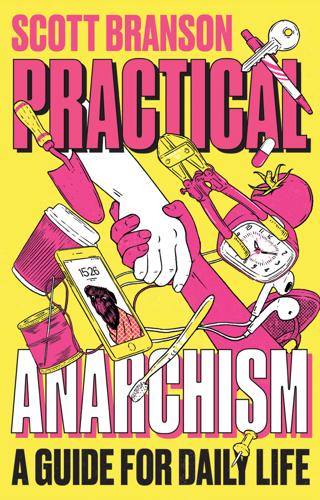
Practical Anarchism: A Guide for Daily Life
by
Scott. Branson
Published 14 Jun 2022
In clear ways, I am limited by my own perspective, and I take responsibility for anything I left out. I am Jewish and a queer/trans femme. My life has been marked in particular ways by whiteness and patriarchal masculinity. The dominant framework I address is the power structure inherited from European colonialism and slavery, which to a certain extent has been exported around the world but hasn’t been imposed evenly, and hasn’t fully destroyed the cultural lifeways of Indigenous groups all around the world. But even in the difference between the US and European contexts, I am closer and more informed about the United States.
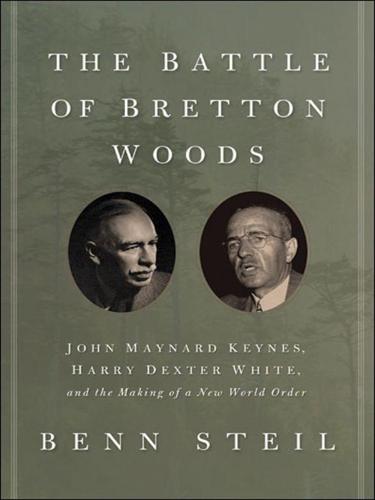
The Battle of Bretton Woods: John Maynard Keynes, Harry Dexter White, and the Making of a New World Order
by
Benn Steil
Published 14 May 2013
To proceed as if it can be made in London and ‘put over’ in Washington, or as if British policy can in the main develop independently and be only ‘co-ordinated’ with America is merely to kick against the pricks.” But the Roosevelt administration would not wait for victory before pressing its world vision. While White was unveiling his economic blueprint, the president was laying out his political version, central to which was the dismantling of the European colonial empires. He infuriated his devoted pen pal the prime minister with an April 11 cable blasting “the unwillingness of the British Government to concede to the Indians the right of self-government.”10 Harry Hopkins is said to have described it as “wrathfully received.”11 Churchill saw it as hypocritical, meddlesome, and irresponsible, given the immediate importance to the Allied cause of a stable India.
…
“The Netherlands—the Czechoslovakians at four-thirty,” said his assistant and diarist, Mrs. Klotz. “The Chileans, I think, are next in line,” said Collado. “They are the ones who are giving us a little trouble.” “The Chileans at four-forty-five,” Morgenthau affirmed. The one area of intense political debate within the U.S. delegation was how to deal with the European colonial powers. Did they have a right to bigger quotas because of their large, far-flung colonies? Senator Wagner couldn’t abide it. “[A]t Tehran it was decided that these countries shall have their freedom if they want it.… Now, are we doing something in here to say to them, ‘We are holding you down?’”
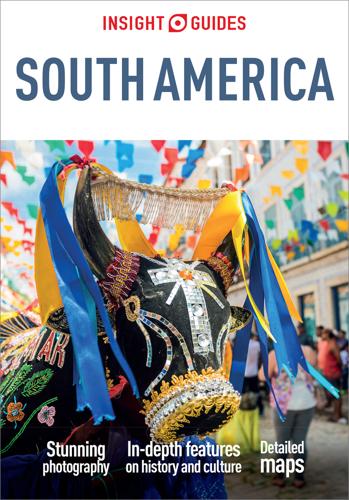
Insight Guides South America (Travel Guide eBook)
by
Insight Guides
Published 15 Dec 2022
At Montsinéry, 43km (27 miles) southwest of Cayenne, a botanical hiking trail leads to the Annamite Penal Colony, where deported Indo-Chinese were detained. Other hiking trails weave to waterfalls and wildlife-infested creeks. The interior can also be explored by pirogue (dugout canoe). Fact French Guiana is the last European colony on South America’s mainland. It uses the euro as its currency, and is France’s biggest and most densely forested département. South of Cayenne, the village of Cacao is inhabited by a Hmong community of Laotian descent. Visitors can sample traditional Hmong cuisine, and buy Hmong handicrafts.
…
Turbulent landscape Villarrica A [map] is a major resort on the shore of the 176-sq-km (68-sq-mile) Lago Villarrica. Its blue waters change hue as the sun falls low in the sky, reflecting the perfect cone of the Villarrica volcano. The lake is scarred by eruptions from the still-active volcano, which glows at night like the end of a giant cigar. The first European colony at Villarrica was besieged by the Mapuche in 1598, and collapsed without survivors in 1602. The colony was not re-established until 1882. The small, touristy town of Pucón in the middle of the southern Lake District. Richard Nowitz/Apa Publications The resort village of Pucón B [map] , farther east along the lake, is a summer haven for affluent Chileans, still charming thanks to its low-rise wooden architecture.
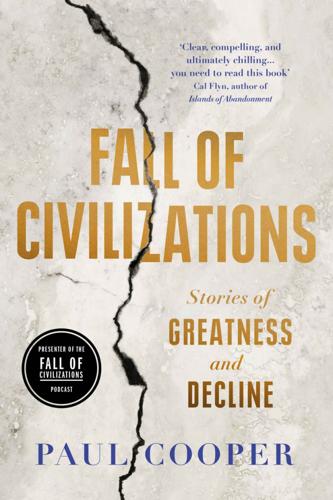
Fall of Civilizations: Stories of Greatness and Decline
by
Paul Cooper
Published 31 Mar 2024
Just as it had been in the days of Ugarit and the Phoenicians, this stretch of coast was a crucial gateway through which trade goods entered the Mediterranean from the Silk Road. Here the Latins set up small crusader kingdoms, a kind of early prototype of the settler states that would later characterize European colonialism — and wealth flowed back to Europe through the old Phoenician ports of Acre and Jaffa. Emperor Alexios had bet on the crusades — and for a period of about two centuries, the gamble paid off. Two subsequent crusader armies passed through Constantinople on their way to the Holy Land, and from 1100 onward, the five emperors of the Komnenos Dynasty presided over a century-long restoration of the military, territorial, economic and political position of the Byzantine Empire, while their Muslim rivals were busy fighting the constant influx of Latin armies.
…
The fall of Imperial Songhai, only eight years after the death of perhaps its second greatest king, sent splinters running right across the empire, just as had happened to Ghana and Mali. Soon, where a single nation had existed, now countless small states and nations reasserted their freedoms and separate borders. West Africa cracked like an egg. Non-Muslims began raiding in Muslim lands, and there was no longer any hope of unified resistance to the spreading influence of European colonialism. Predatory European traders set up slave trading posts all along the African coast, profiting from the chaos, and the full horror of the transatlantic slave trade reached new heights, draining the manpower of Africa on an industrial scale. Its economy and society destroyed, Timbuktu in turn lost its position as a centre of learning.
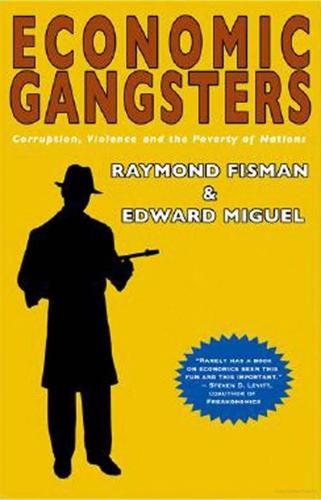
Economic Gangsters: Corruption, Violence, and the Poverty of Nations
by
Raymond Fisman
and
Edward Miguel
Published 14 Apr 2008
Ngugi’s earlier works—a dozen or so novels and collections of stories, which he began publishing just after Kenyan independence in 1963—had been wildly successful, not only in Kenya but throughout the world. Through his carefully wrought characters and achingly familiar plots of loss and suffering, Ngugi captured the bewildering contradictions left behind in the wake of European colonialism. Ngugi had lived those contradictions and drew inspiration from his experiences, which were shared by so many of his fellow Kenyans. Ngugi had grown up during the 1950s, when Kenya had been rocked by the Mau Mau rebellion against its British colonizers. He had witnessed the murder CH A PTER O N E of his brother, who had died along with thousands of other Kenyans in opposing the British.
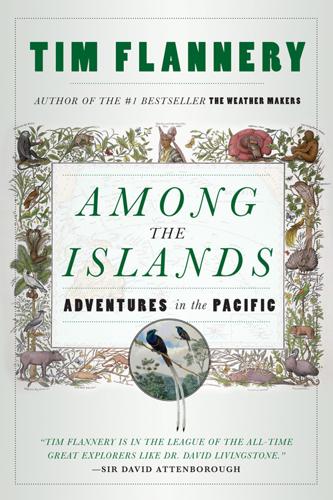
Among the Islands
by
Tim Flannery
Published 13 Dec 2011
Cook encountered New Caledonia in 1774, during his second voyage, naming it New Caledonia (Caledonia being the name the Romans gave to northern Scotland) because the sparse vegetation of the island’s nickel-rich mountains reminded him of heather-clad peaks. French missionaries began arriving in the 1840s, and in 1853 the French government formally annexed it. Like Australia, New Caledonia served as a penal colony. Today, New Caledonia remains one of the world’s last European colonies. Technically, it is known as a ‘special collectivity’ of France; only in July 2010 was it decided that the Kanak flag (the flag of the indigenous people) should fly beside the tricoleur as an official flag of the territory. At the time we conducted our surveys the political environment of both Fiji and New Caledonia was changing quickly.

Geek Sublime: The Beauty of Code, the Code of Beauty
by
Vikram Chandra
Published 7 Nov 2013
But it brings with it unique assets such as the direct verbal and thematic continuities that transcend local contexts and that, for that very reason, enable a powerful articulation of the regional in its true fullness … Interacting with these vernaculars, Sanskrit is itself continuously changing, stretching the boundaries of the sayable, thinking new thoughts, searching for ways to formulate this newness.2 So on the eve of colonialism in the early eighteenth century, there was still a thriving—if diminished—cosmopolis. Sheldon Pollock writes: The two centuries before European colonialism decisively established itself in the subcontinent around 1750 constitute one of the most innovative epochs of Sanskrit systematic thought (in language analysis, logic, hermeneutics, moral-legal philosophy, and the rest). Thinkers produced new formulations of old problems, in entirely new discursive idioms, in what were often new scholarly genres employing often a new historicist framework; some even called themselves (or, more often, their enemies) “the new” scholars (navya).3 This ancient, widespread transmission was finally fractured by the establishment of English as the language of colonial politics and commerce, and the institutionalization of new dispensations of morality, knowledge, and power.
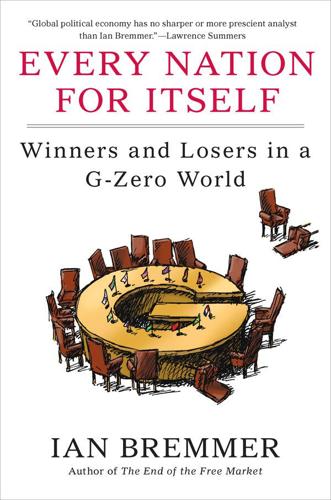
Every Nation for Itself: Winners and Losers in a G-Zero World
by
Ian Bremmer
Published 30 Apr 2012
This phenomenon then spreads to regions where borders have historically been drawn by outsiders. Local governments in the Caucasus region and Central Asia point to international recognition of independence for Kosovo as a precedent for small ethnically based states to declare independence. Former European colonies in Africa, including large resource-rich states like Nigeria and the Democratic Republic of Congo, face greater internal stresses as local governments insist on greater control over natural wealth drawn from within “their” territories. This is the relatively benign version of the wild-card scenario.
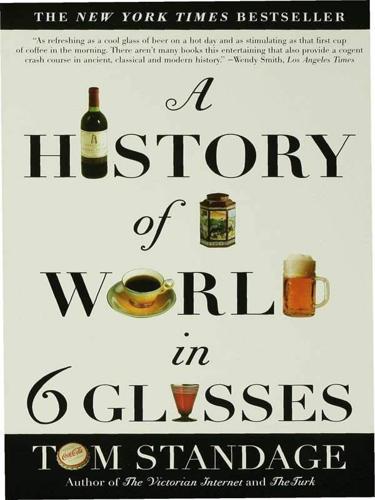
A History of the World in 6 Glasses
by
Tom Standage
Published 1 Jan 2005
For the Arab origins of coffee and coffeehouse culture and the debate over coffee's effects, see Hattox, Coffee and Coffeehouses; Schapira, Schapira, and Schapira, The Book of Coffee and Tea; and Weinberg and Bealer, The World of Caffeine. The account of coffee's spread into Europe and the rise of London's coffeehouses follows Ellis, The Penny Universities, and Jacob, Coffee. For the cultivation of coffee in European colonies, see Ukers, All About Coffee, and Weinberg and Bealer, The World of Caffeine. 8. The Coffeehouse Internet For the Internet-like role of coffeehouses, see Sommerville, "Surfing the Coffeehouse," and Darnton, "An Early Information Society." For the use of coffeehouses by scientists and financiers, see Stewart, "Other Centres of Calculation"; Stewart, The Rise of Public Science; Ellis, The Penny Universities; Inwood, The Man Who Knew Too Much; Jacob, Coffee; and Waller, 1700.
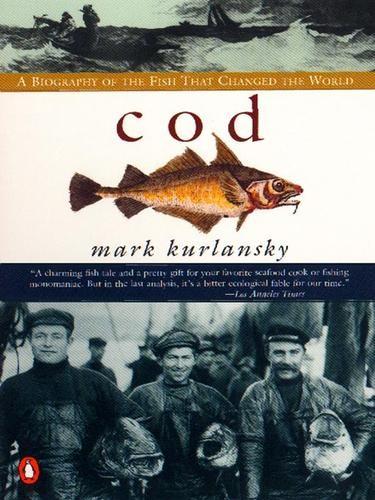
Cod: A Biography of the Fish That Changed the World
by
Mark Kurlansky
Published 30 Jun 1998
It also became an agricultural society, settlers moving ever farther toward western Massachusetts looking for fertile land to produce goods for the prosperous coastal market. As the most flourishing American community north of Virginia, New England was perfectly positioned for trade. In cod it had a product that Europe and European colonies wanted, and because of cod it had a population with spending power that was hungry for European products. This was what built Boston. The economies of Newfoundland and Nova Scotia, rather than growing in tandem with the economy of New England, were being drained off by it. Lacking population and internal markets, they were fishing outposts serviced by Boston.
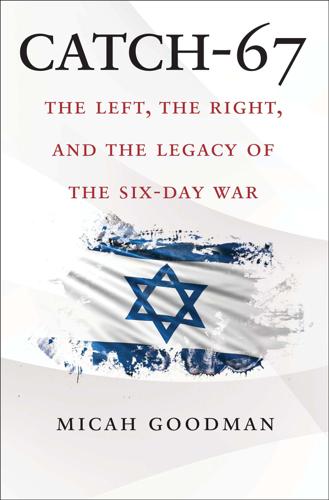
Catch-67: The Left, the Right, and the Legacy of the Six-Day War
by
Micah Goodman
Published 17 Sep 2018
It was they who instigated the replacement of the League of Nations with the United Nations and the Security Council to enable them to rule the world through them.5 The anti-Semitic conspiracy theories born in Europe have found a new home in the heart of the Palestinian resistance. The myths are the same myths. The anti-Semitism, many Israelis fear, is the same anti-Semitism. Palestinians face Israelis and see in them European colonialism; Israelis face Palestinians and see in them European anti-Semitism. Each side sees the other as representing Europe in its ugliest and most threatening guise. Each side sees the other as the product of a broader phenomenon of which it itself is a victim. In the Palestinians’ narrative, they are the victims of Israel.
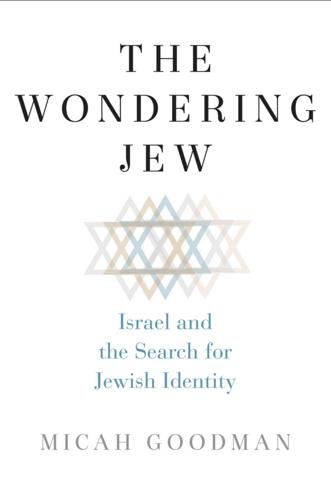
The Wondering Jew: Israel and the Search for Jewish Identity
by
Micah Goodman
Published 10 Nov 2020
Buzaglo presents an example of the different trends in religious rulings of ultra-Orthodox and traditionalist rabbis in Buzaglo, “The New Traditional Jew and the Halakha,” 196 [Hebrew]. 17. Buzaglo, “The New Traditionalist and the Halakha,” 202 [Hebrew]. Secularism existed in Muslim countries because of the European colonial presence. There were regions and countries where the Enlightenment and secularism had more influence and others where they had less, but in none of them did the European presence create such a severe reaction among Jews as among European Jewry. See Avriel Bar-Levav, “Secularization and the Jews in Islamic Countries,” in Avriel Bar-Levav, Ron Margolin, and Shmuel Feiner, eds., Secularization in Jewish Culture (Raanana: Open University of Israel Press, 2012), 1:293–342 [Hebrew]; Lital Levy, “The Haskala and Secularism in the Literature of Jews of Muslim Lands,” in Bar-Levav, Margolin, and Feiner, Secularization in Jewish Culture, 1:521–549.

The WikiLeaks Files: The World According to US Empire
by
Wikileaks
Published 24 Aug 2015
This was arguably hubristic, given that the United States lacked the naval capacity to enforce the doctrine at this point. But it expressed the proprietorial attitude to South America that would define US policy. Just as the United States was expanding westward, it hoped to expand to its south—and to do so, it would have to break the grip of the European colonial empires. In the meantime, American capital penetrated markets in Cuba, Brazil, Nicaragua, and beyond. And by 1890, with westward overland expansion almost completed, it began to construct a much larger navy for overseas gains. A victorious war with the Spanish Empire in 1898 won it control of Cuba and inaugurated a period of frantic military activism, saber-rattling, invasions, and occupations in Honduras, Cuba, and Nicaragua.
…
Domestic opposition to foreign interventions, amid a climate of quasi-isolationism, encouraged the US to intervene, in a calibrated and timely manner, only when, first, there was a clear and present danger of regional domination by revisionist states on the Eurasian landmass, and, second, its own interests (and territorial integrity) were directly threatened, as when Japan attacked Pearl Harbor.1 Historically, the US saw itself as an exceptional nation, founded upon principles of liberal democracy and opposed to archaic, oppressive forms of European colonialism. After all, the US itself emerged out of a protracted struggle for independence, culminating in the American Revolutionary War against the British monarchy (1775–83). But, as scholars such as John Mearsheimer note,2 hegemonic expansion was a recurring theme throughout America’s own uniquely successful state-building project: The United States is the only regional hegemon in modern history … the Founding Fathers and their successors consciously and deliberately sought to achieve hegemony in the Americas … To realize their so-called Manifest Destiny, they murdered large numbers of Native Americans and stole their land, bought Florida from Spain (1819) and what is now the center of the United States from France (1803).
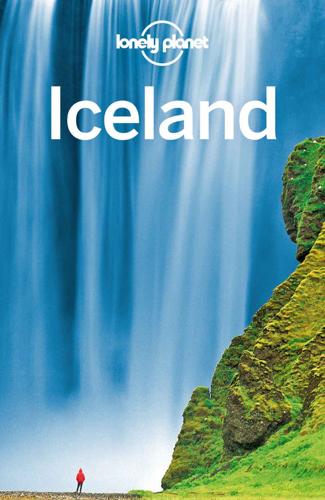
Lonely Planet Iceland (Travel Guide)
by
Lonely Planet
,
Carolyn Bain
and
Alexis Averbuck
Published 31 Mar 2015
Filled with expansionist aspirations, Harald won a significant naval victory at Hafrsfjord (Stavanger) in 890. The deposed chieftains chose to flee rather than surrender, and many wound up in Iceland. While Viking raids continued in Europe, Eiríkur Rauðe (Erik the Red) headed west with around 500 others to found the first permanent European colony in Greenland in 986. Eiríkur’s son, Leif the Lucky, went on to explore the coastline of northeast America in the year 1000, naming the new country Vínland (Wineland). Permanent settlement was thwarted by the skrælings (Native Americans), who were anything but welcoming. Viking raids gradually petered out, and the Viking Age ended with the death of King Harald Harðráði, last of the great Viking kings, who died in battle at Stamford Bridge, England, in 1066.
…
Scattered farmsteads rapidly cover the country. 871 Norwegian Viking Ingólfur Arnarson, credited as the country’s first permanent inhabitant, sails to the southwest coast; in time he makes his home in a promising-looking bay that he names Reykjavík. 930 The world’s oldest existing parliament, the Alþing, is founded at Þingvellir. The Icelanders’ law code is memorised by an elected law speaker, who helps to settle legal matters at annual parliamentary gatherings. 986 Erik the Red founds the first permanent European colony in Greenland, building the settlements of Eystribyggð and Vestribyggð in the southwest of the country. 1000 Iceland officially converts to Christianity under pressure from the Norwegian king, though pagan beliefs and rituals remain. Leif the Lucky lands in Newfoundland, becoming the first European to reach America. 1100–1200 Iceland’s literary Golden Age, during which the Old Norse sagas are written.
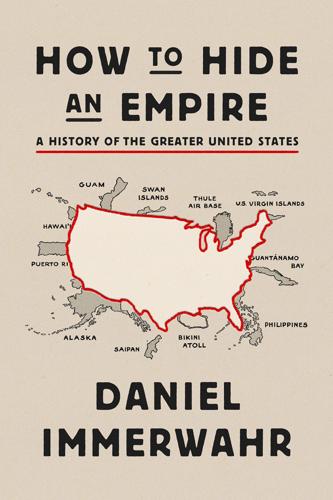
How to Hide an Empire: A History of the Greater United States
by
Daniel Immerwahr
Published 19 Feb 2019
Nor did it have a school to train colonial officials. Its territories were ruled by a haphazard and improvised set of bureaucratic arrangements under the army, navy, and Department of the Interior. It showed. The men sent to run the territories, unlike the trained administrators who oversaw European colonies, simply didn’t know much about the places to which they’d been assigned, and they cycled rapidly through their posts. Between Guam’s annexation in 1899 and World War II, it had nearly forty governors. FDR’s first governor of Puerto Rico, who served for six months, spoke no Spanish and left reporters with the distinct impression that he didn’t know where the island was.
…
Goodrich warned, without rubber the United States “could offer only 1860 defenses against 1942 attacks.” Without rubber—it wasn’t a hypothetical scenario. On December 7/8, 1941, Japan, worried about its own access to rubber and other critical raw materials, expanded its war beyond China and moved on to the resource-rich lands of Southeast Asia. Within months, it conquered the European colonies that accounted for 97 percent of the U.S. rubber supply. The United States and its allies were virtually cut off. It is hard to convey how dire a threat this was. “If a survey were made to determine the most frequently asked question in America today, it would probably turn out to be: ‘When are we going to get rubber—and how much?’”
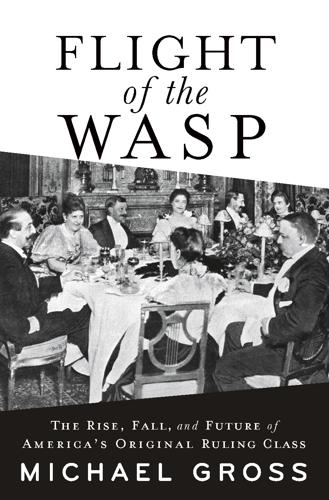
Flight of the WASP
by
Michael Gross
As Abraham Lincoln’s minister to Belgium in the 1860s, Sanford established America’s first international espionage network in western Europe. But after the Civil War, as he tried to get even richer using connections made as a diplomat, he played an ignoble role aiding and abetting what was arguably the worst excess of European colonialism. Promoting the Belgian king Leopold II’s scheme to rape and plunder his personally “owned” colony, the Congo, Sanford failed miserably in his personal attempts to get rich by exploiting its natural resources. Back at home during Reconstruction, he lost more money investing in sugar and cotton plantations.
…
Over the next two and a half years, his fortune mostly gone, Sanford stayed afloat by selling his shares; after he died, his creditors would seize what remained. In 1889, Sanford got his last official appointment—and, finally, the long-sought title of plenipotentiary and envoy extraordinary—to an anti-slavery conference in Brussels, which began as an attempt to push back against European colonialism, the Arab slave trade, and liquor distribution in the Congo and elsewhere in Africa, but degenerated into a squabble over business and land. When Leopold used the conference to push for import duties in the Congo, Sanford felt betrayed, and when he then learned that the Congo was engaged in slave trading and it became clear that he had been thoroughly deceived by Leopold, he bitterly opposed giving in to the king, but ultimately failed to protect America’s right to free trade.53 His split with Leopold was fortunate for Sanford, as the king’s regime would become internationally notorious for its brutal treatment of the Congolese, a two-decade campaign of land seizure, forced labor, and terror most garishly symbolized by chopped-off hands.
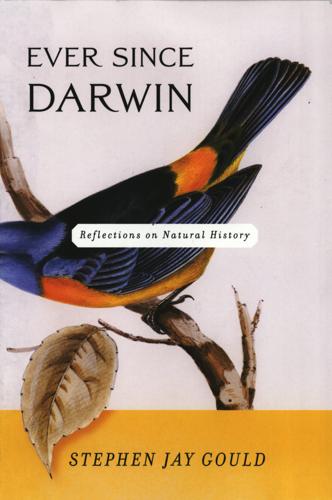
Ever Since Darwin: Reflections in Natural History
by
Stephen Jay Gould
Published 1 Jan 1977
One other social impact of Lombroso’s school should be mentioned. If human savages, like born criminals, retained apish traits, then primitive tribes—“lesser breeds without the law”—could be regarded as essentially criminal. Thus, criminal anthropology provided a powerful argument for racism and imperialism at the height of European colonial expansion. Lombroso, in noting a reduced sensitivity to pain among criminals, wrote: Their physical insensibility well recalls that of savage peoples who can bear in rites of puberty, tortures that a white man could never endure. All travelers know the indifference of Negroes and American savages to pain: the former cut their hands and laugh in order to avoid work; the latter, tied to the torture post, gaily sing the praises of their tribe while they are slowly burnt.

Worth Dying For: The Power and Politics of Flags
by
Tim Marshall
Published 21 Sep 2016
As long as the state does not curtail the power of the clerics, most of the Wahhabi elite will not seek to overthrow it. What they failed to factor in, though, was that their ideas about the nation state would help create terrorist revolutionaries such as Osama bin Laden and many others. In the decades during which European colonialism was coming to an end, few of the new Muslim-majority nation states followed the Saudi example of using the shahada on their flags, and only a handful went for green as the dominant colour. The leaders of the new Arab states were not known for their piety, and while some were practising Muslims, most were also infused with the somewhat contradictory ideology of socialism, notably those in the Ba’ath Party which ended up running Syria and Iraq.
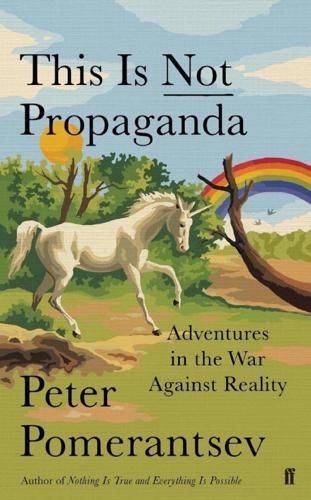
This Is Not Propaganda: Adventures in the War Against Reality
by
Peter Pomerantsev
Published 29 Jul 2019
Instead, the divide lay in what Wu calls the ‘China as a superpower ideology’: a militarist, territorially obsessed nationalism intent on dominating others and which saw China as surrounded by enemies weaving conspiracies against her, which harped on the humiliations China suffered at the hands of European colonial powers in the nineteenth century, humiliations that the party claimed it could relieve by restoring past greatness. There were people who embraced this position, and others who didn’t. Rather than an alternative, China seemed to provide another variant of what I had encountered in the US and Russia, peddling a nostalgia for a greatness before the ‘century of humiliations’, much like Putin promised to ‘bring Russia off its knees’ and Trump to ‘Make America Great Again’.
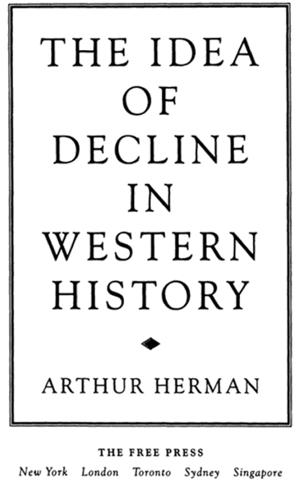
The Idea of Decline in Western History
by
Arthur Herman
Published 8 Jan 1997
Du Bois’s view of race was more complicated than this blast of typical romantic Orientalism suggests, although, as we will discover, he owed more to that Orientalist heritage than some current admirers are willing to admit. His theories, however, were based on his reaction against the doctrines of white supremacy circulating at the time and against what he saw as their most significant consequence: the growth of European colonial empires. To Du Bois, imperialism was the West’s most characteristic product, the natural outgrowth of European civilization’s own peculiar qualities. And its evils were now the evils of the West—including the United States, a nation created and sustained by imperialism’s institutional predecessor, slavery.
…
He often pointed to the French revolutionary September Massacre of 1792 and “the old Germanic custom” of sticking “the head of an enemy on a stake, for public viewing” as examples of this sort of people’s justice.62 However, the figure most associated with the liberating power of violence was Frantz Fanon. A friend and admirer of Jean-Paul Sartre, Fanon very much subscribed to the postwar French assault on Western rationality. Fanon identified that corrupt Western totalizing process with colonialism and imperialism. His call for an onslaught of “holy violence” against European colonialism, led by a rootless and impoverished Third World lumpenproletariat of fellahin , gave Marcus Garvey’s vision of an apocalyptic race war new, intellectually respectable force. The rituals of that holy violence—revolutions, assassinations, skyjackings, car bombings, and the burning of tire “necklaces”—were seen as acts of existential authenticity that would obliterate the West’s empire of bad faith.
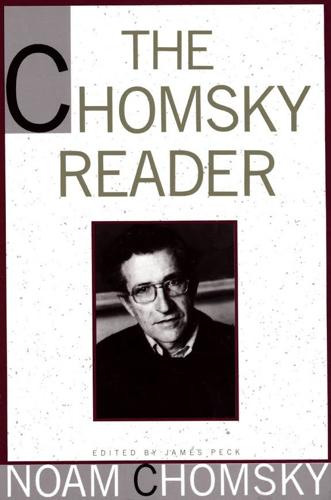
The Chomsky Reader
by
Noam Chomsky
Published 11 Sep 1987
Friends and enemies can be identified, to a rather good first approximation, in terms of their role in maintaining an integrated global economy in which American capital can operate with relative freedom. The so-called “Communist” powers are particularly evil because their “do-it-yourself” model of development tends to extricate them from this system. For this reason, even European colonialism, which was bad enough, is preferable to indigenous communism. For the same reason, Washington will prefer a Trujillo to a Castro. The study group of the Woodrow Wilson Foundation and the National Planning Association was perceptive, and more honest than many contemporary ideologists, when it described the primary threat of communism as the economic transformation of the Communist powers “in ways which reduce their willingness and ability to complement the industrial economies of the West,” their refusal to play the game of comparative advantage and to rely primarily on foreign investment for development.
…
The threat was not so much in Vietnam itself, which is not terribly important for American purposes (the freedom to rob in Vietnam is not all that significant); the fear was that the “rot would spread,” namely, the rot of successful social and economic development. In a very poor country which had suffered enormously under European colonialism, successful social and economic development could have a demonstration effect. Such development could be a model for people elsewhere and could lead them to try to duplicate it, and gradually the Grand Area would unravel. This, incidentally, is the rational version of the domino theory. There’s another version which is used to terrify the population.
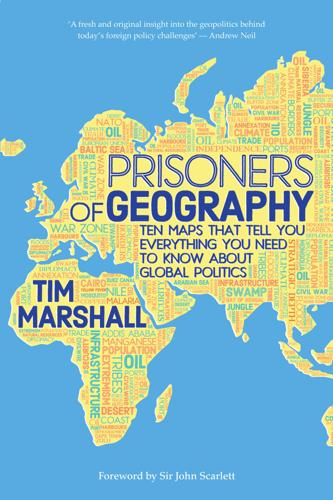
Prisoners of Geography: Ten Maps That Explain Everything About the World (Politics of Place)
by
Tim Marshall
Published 10 Oct 2016
The Ismaili school disputes the lineage of the seventh imam, while the Zaidi school disputes that of the fifth imam. There are also several offshoots from mainstream Shia Islam, with the Alawites and Druze being considered so far away from traditional Islamic thought that many other Muslims, especially among the Sunni, do not even recognize them as being part of the religion. The legacy of European colonialism left the Arabs grouped into nation states and ruled by leaders who tended to favor whichever branch of Islam (and tribe) from which they themselves came. These dictators then used the machinery of state to ensure their writ ruled over the entire area within the artificial lines drawn by the Europeans, regardless of whether this was historically appropriate and fair to the different tribes and religions that had been thrown together.
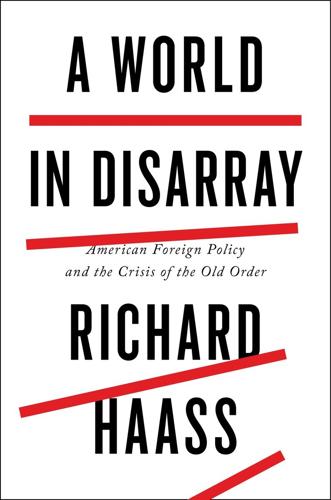
A World in Disarray: American Foreign Policy and the Crisis of the Old Order
by
Richard Haass
Published 10 Jan 2017
Interestingly, it was also supported by both the Soviet Union and the United States: the former saw it as an opportunity to win converts, while the latter feared that absent independence these societies would turn to the Soviets for support against the Western colonialists. With time, the populations of the mostly European colonial powers themselves grew weary of the costs of maintaining rule in faraway places that wanted to be on their own. By then, decolonization was viewed as a prerequisite to order, as otherwise it was feared that conflicts would develop in many of these places. That was an understandable concern, although it is one of the tragic ironies of history that the end of the colonial era, rather than promoting order, in many instances created disorder on a large scale.

In the Devil's Garden: A Sinful History of Forbidden Food
by
Stewart Lee Allen
Published 1 Jan 2002
Others claimed “Indian wheat” caused scabs and burned the blood. When they grew bored with blaming those red-skinned barbarians for the stuff, Europeans renamed it “Turkish wheat” after their archenemies in Istanbul and many nineteenth-century Irish preferred starvation to eating “brimstone yellow” corn bread. European colonials in America were too reliant on corn to completely snub it, so they assigned it to the lower classes. “Gentlemen’s houses,” noted Robert Beverley in 1705, “usually had bread made of wheat,” while corn bread was “mostly reserved for the servants,” an observation borne out by the African-American adage, “we grow the wheat and they give us the corn.”
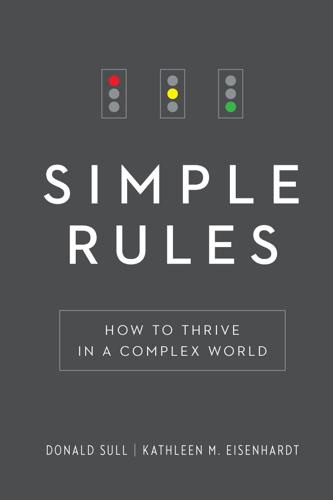
Simple Rules: How to Thrive in a Complex World
by
Donald Sull
and
Kathleen M. Eisenhardt
Published 20 Apr 2015
The expanding world of the sixteenth century created new possibilities to help souls, and the simple rules of the “Formula” provided the Jesuits with the flexibility to seize these opportunities, something incumbent religious orders lacked. As a religious startup with few rules, the Jesuits were well positioned to experiment with novel ministries. The first generation of Jesuits experimented widely: they converted natives in newly formed European colonies; negotiated peace between Catholic and Protestant rulers; freed debtors from prison; ministered to repentant prostitutes; preached on the streets; brought apostates back to Catholicism; cared for disabled soldiers; nursed lepers; and brokered truces among feuding Sicilian families. Even sympathetic commentators have characterized the Jesuits’ diverse ministries as a “grocery list” that “might be separated by only a hair’s breath, or less, from opportunism.”
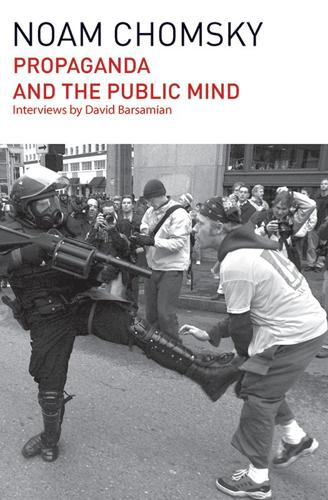
Propaganda and the Public Mind
by
Noam Chomsky
and
David Barsamian
Published 31 Mar 2015
To get back to your point, the more Europe is independent, the more weight it will be able to throw around on this issue. There are already indications of emerging trade wars with Europe, for example, over bananas. There’s a big conflict at the WTO right now between the European Union and the United States. Different corporations are involved. The E.U. has been giving preferences to former European colonies in the Caribbean. The U.S. wants in this case a “level playing field,” because the big producers, the really rich corporations, happen to be in U.S. hands. So they’d like to have a “level playing field,” which means crushing the Caribbean islands. You’ve said many times that you’re not Amnesty International.

Covid-19: The Pandemic That Never Should Have Happened and How to Stop the Next One
by
Debora MacKenzie
Published 13 Jul 2020
Recognition of all that by all sides, including by China, might be a good place to start. Pathogens come from all over. The last flu pandemic started on an American-owned farm in Mexico, the biggest-ever Ebola epidemic began with the infection of a two-year-old child in one of the poorest countries in Africa. The HIV pandemic was seeded in an African society upended by European colonialism. The Zika virus started in Africa and then traveled via Asia, Micronesia, and Polynesia to Brazil, then wherever in the Americas it could find the right mosquitoes, which were themselves transported worldwide by numerous countries. Of the viruses that are still mere threats, Nipah started in Malaysia and the very similar Hendra in Australia.
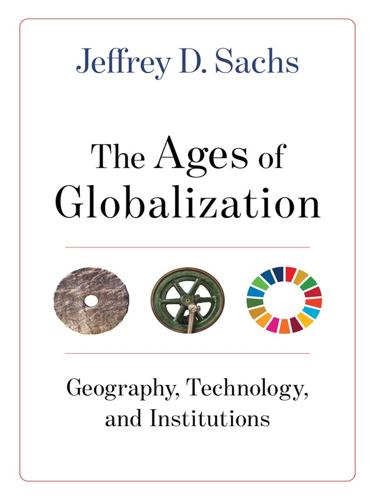
The Ages of Globalization
by
Jeffrey D. Sachs
Published 2 Jun 2020
While Japan still lagged far behind Europe and the United States in per capita income, by 1913 Japan’s per capita income was roughly 2.5 times that of China. Europe Swallows Africa Though Africa was the poorest and least industrialized part of the world, and though Europeans had been enslaving Africans for centuries, Africa was the last continent to face the full onslaught of European colonial domination. Until the end of the nineteenth century, Europe’s imperial foothold in Africa consisted of colonies in the north and south of Africa and a few trading outposts and forts along the coasts of East and West Africa. The interior of Africa was largely beyond European control or even knowledge.
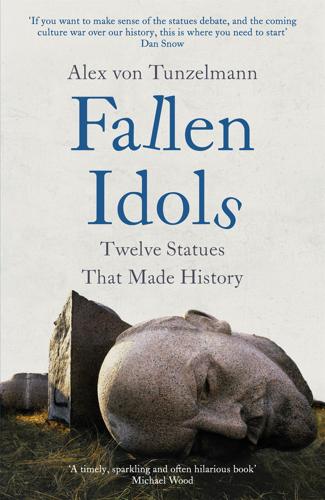
Fallen Idols: Twelve Statues That Made History
by
Alex von Tunzelmann
Published 7 Jul 2021
The Dominican Republic occupies the eastern side of the island of Hispaniola; Haiti occupies the west. Haiti was a French colony, and the site of world history’s only successful slave revolution. Haiti defeated Napoleon’s forces to win its people’s freedom. In doing so, it became a pariah state. The United States and European colonial powers feared that Haiti’s example might inspire slave rebellions in their own territories. The Dominican Republic’s colonial history was complex, and its European influence was mostly Spanish. Tension remained between Haiti and the Dominican Republic, fuelled by racial prejudice. Trujillo knew exactly how to exploit it.
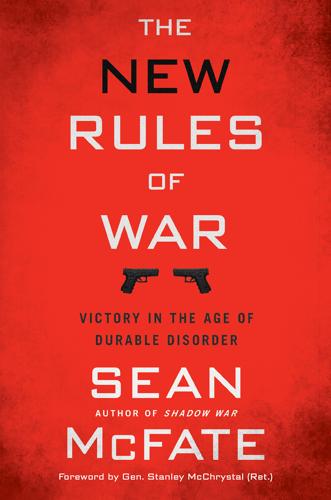
The New Rules of War: Victory in the Age of Durable Disorder
by
Sean McFate
Published 22 Jan 2019
It’s what we do against terrorists and other lesser threats. Third, when cartels wage war, they fight like empires. They battle each other for control of land, the resources on that land, and the people who can harvest those resources. It’s pure exploitation, just as was done in the age of European colonial empires. Material wealth and martial conquest have long been a theme of war, from the Spanish conquistadors to the British East India Company. Merging the profit motive and war is nothing new, and cartels are one more example. In the case of Acapulco, the cartels fight for a strategic transit point.
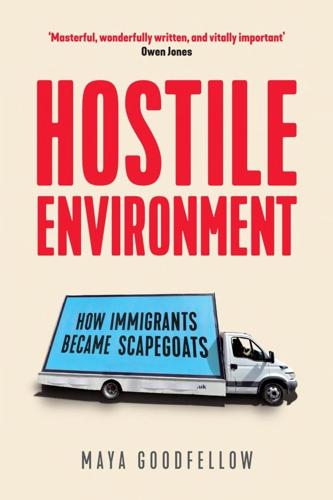
Hostile Environment: How Immigrants Became Scapegoats
by
Maya Goodfellow
Published 5 Nov 2019
There have always been significant numbers of people seeking asylum in the Global South – as a mere glance at the disaster wrought by the British partition of India shows – what changed was their destination, they increasingly were arriving in Europe. ‘What was different was that they were from the Global South, usually from former European colonies. This made them undesirable,’ writes political sociologist Lucy Mayblin. The legacies of colonial discourse, which classed black and brown people as somehow less than human, still survive and thrive, even as they have changed. Asylum seekers from the Global South came to be seen as ‘other’. ‘It is not the fact that they are marked as different as a consequence of their difference,’ Mayblin says, ‘but that the colonial discourses marked them as such.’
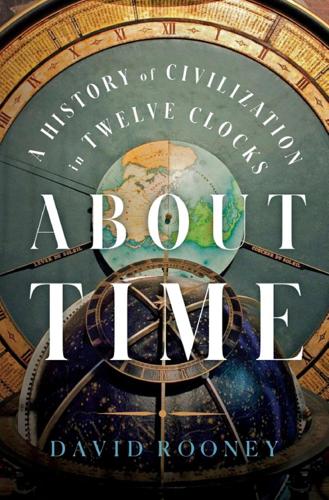
About Time: A History of Civilization in Twelve Clocks
by
David Rooney
Published 16 Aug 2021
Crawford Market and clock tower, Bombay, in an early-twentieth-century postcard At a time of intense political tension over British colonialism in India, standard time in Bombay took on ever more powerful symbolic meaning. The choice of time kept on the public clocks across the city—Bombay Time, Madras Time or the new Indian Standard Time—was an expression of colonial allegiance—or resistance. After weeks of increasingly bitter argument, as the new time standard was characterized as an unwelcome European colonial imposition on the native population of Bombay, the discussion that had previously been held behind closed doors spilled over. In December 1905, mass public demonstrations broke out, with one gathering attracting 15,000 protestors. The following month, the largest textile mill in Bombay changed its clocks to the new standard time without informing its 4,500 workers.

How to Fix the Future: Staying Human in the Digital Age
by
Andrew Keen
Published 1 Mar 2018
It’s possible that Thomas More got his geographical inspiration for Utopia from the archipelago of islands in the Strait of Malacca, the strategically valuable channel at the juncture of the Pacific and Indian oceans that had attracted the geopolitical attention of all the sixteenth-century European colonial powers. He might have even based it on a little place at the southern tip of the Malay Peninsula called Temasak. This island, also known as Singapura (meaning Lion City), was half the size of Utopia but with the same well-sheltered waters. It lay halfway between China and India and had been a commercial hub of Buddhist, Hindu, and Muslim traders for a millennium.
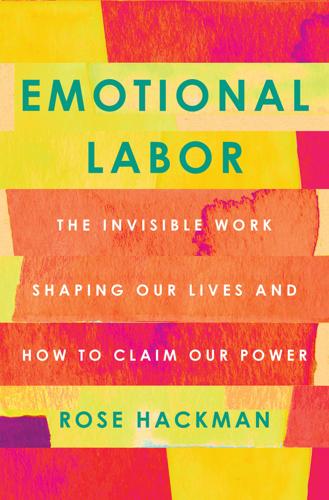
Emotional Labor: The Invisible Work Shaping Our Lives and How to Claim Our Power
by
Rose Hackman
Published 27 Mar 2023
An emotional economy describes a social organization in which the feelings of men are centered no matter the consequences to the nation.2 Emotional justice and racial healing, Armah told me, comes about once you start diligently dismantling all of these. Is this the answer? Armah’s four pillars certainly align with the findings in this book, even if Armah’s context is more explicitly global and more explicitly concerned with the remnants of European colonialism—which, to be sure, is a part of the background here, but almost exclusively in an American-specific iteration. During our interview, Armah expressed a frustration with the ways in which emotional labor had become equated with the struggles of white, middle-class women in relation to their families and to their men, without connection to wider systems of inequity.
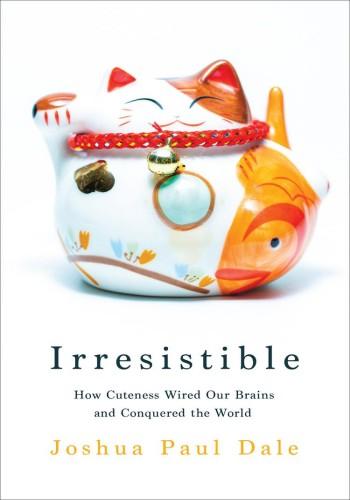
Irresistible: How Cuteness Wired our Brains and Conquered the World
by
Joshua Paul Dale
Published 15 Dec 2023
After all, such selection for tameness worked in the Siberian-fox experiment. Unfortunately this technique doesn’t seem to work with all animals. European horse-breeders, having settled in South Africa in the seventeenth century, tried unsuccessfully to tame zebras for several centuries. Horses were crucial to European colonialism, but many perished in Africa from diseases to which zebras were immune. So why do all zebra offspring remain as wild as their striped forebears? The author Jared Diamond offers two reasons. First, zebras are highly aggressive – you might be surprised to learn that they injure more zookeepers than tigers do.

I You We Them
by
Dan Gretton
By the beginning of the twentieth century there clearly existed an extremely virulent, widespread anti-Semitism within Germany, but it seems a serious limitation in Goldhagen’s analysis to look only within Germany’s borders for the seeds of Nazism and genocidal thinking. The Swedish writer Sven Lindqvist takes a wider view, in his brilliant work on European colonialism, Exterminate All the Brutes: Europe’s destruction of the ‘inferior races’ of four continents prepared the ground for Hitler’s destruction of six million Jews in Europe … European world expansion, accompanied as it was by a shameless defence of extermination, created habits of thought and political precedents that made way for new outrages, finally culminating in … the Holocaust.
…
Shocking not only in its own terms, but also because Germany, of all countries, should have understood, long before they did, the critical linkage between the two German genocides of the twentieth century. My own journey of understanding, which had begun with that short passage in Exterminate All the Brutes, continued when I read Mark Cocker’s Rivers of Blood, Rivers of Gold in 1998, which seemed to pick up Lindqvist’s broader challenge for us to understand the brutal nature of European colonial psychology. Cocker went into greater detail than Lindqvist, looking at four case studies of European exterminations of tribal peoples, including a long chapter on Germany’s extermination of the Herero and Nama. By this stage I had already begun the intensive research phase of my work on the desk killer, and I had become more and more preoccupied by the question of how Germany’s extermination of the European Jews had been possible.
…
Klee, Dressen and Reiss) is published in English – a riveting collection of eyewitness documentation of the Holocaust. 1991: Alan Bullock publishes Hitler and Stalin: Parallel Lives. 1991: Art Spiegelman’s Maus, a graphic novel, is published to great acclaim, and later wins a Pulitzer Prize. 1992: Christopher Browning publishes his groundbreaking work Ordinary Men: Reserve Police Battalion 101 and the Final Solution in Poland – a detailed study showing that a culture of terrifying obedience to authority, more than blood lust or violent antisemitism, was responsible for much of the mass killing in the Holocaust. 1992: Susan Griffin’s brilliant A Chorus of Stones: The Private Life of War is published – an extraordinary interweaving of memoir and history. 1992: Sven Lindqvist’s book Utrota varenda jävel is published in English as Exterminate All the Brutes – and makes a powerful argument that the Holocaust had its roots in earlier European colonial genocides. 1994: Between April and July, 800,000 people, around 70 per cent of the total Tutsi population, are killed in the Rwandan genocide. 1994: Jorge Semprún’s L’Écriture ou la vie is published in French (English edition, Literature or Life in 1997). 1994: GÖtz Aly, Peter Chroust and Christian Pross publish Cleansing the Fatherland: Nazi Medicine and Racial Hygiene – a brilliant study of the T4 ‘euthanasia’ programme and the corruption of the German medical establishment under Nazism. 1995: In July, Europe experiences its worst atrocity since the Second World War, when over 8,000 Bosnian Muslims are massacred at Srebrenica by the Bosnian Serb army under General Mladić. 1995: Gitta Sereny’s monumental work Albert Speer: His Battle with Truth is published, the most revealing book ever written on Speer. 1995: Bernard Schlink’s The Reader is published in Germany, and two years later, in English (and eventually translated into forty-five languages). 1996: W.
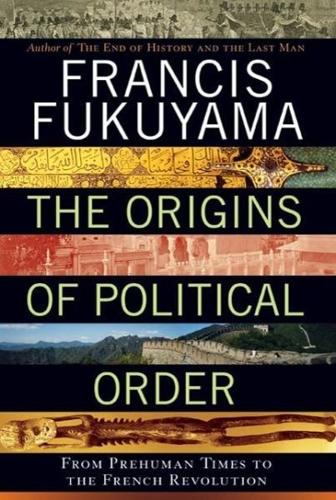
The Origins of Political Order: From Prehuman Times to the French Revolution
by
Francis Fukuyama
Published 11 Apr 2011
The Turkana and Masai of Kenya, and the Fulani pastoralists of West Africa, all developed systems whereby segments shared pasturage with each other while excluding outsiders.20 The failure of Westerners to understand the nature of customary property rights and their embeddedness in kinship groups lies in some measure at the root of many of Africa’s current dysfunctions. European colonial officials were convinced that economic development could not occur in the absence of modern property rights, that is, rights that were individual, alienable, and formally specified through the legal system. Many were convinced that Africans, left to their own devices, did not know how to manage land efficiently or sustainably.21 They were also motivated by self-interest, either for the sake of natural resources, commercial agricultural interests, or on behalf of European settlers.
…
It is therefore not enough merely to develop a state; the state must avoid retribalization or what I label repatrimonialization. Not all societies around the world made this transition to statehood on their own. Most of Melanesia consisted of acephalous tribal societies (that is, lacking centralized authority) prior to the arrival of European colonial powers in the nineteenth century, as did roughly half of sub-Saharan Africa, and parts of South and Southeast Asia.2 The fact that these regions had no long history of statehood very much affected their development prospects after they achieved independence in the second half of the twentieth century, especially when compared to colonized parts of East Asia where state traditions were deeply embedded.
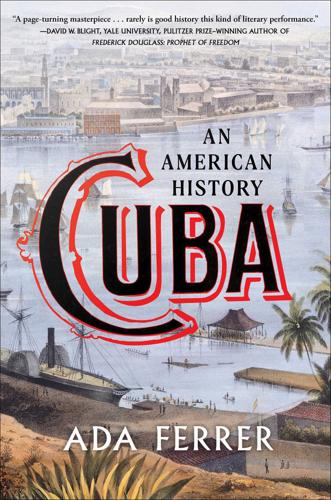
Cuba: An American History
by
Ada Ferrer
Published 6 Sep 2021
The French troops fighting alongside the Americans under the Comte de Rochambeau were also suffering and out of money. Washington pinned his hopes on the arrival of the French naval officer the Comte de Grasse with funds and reinforcements. De Grasse was trying to collect funds in Saint-Domingue (today Haiti), then the richest European colony in the world. He appealed for money from sugar planters and merchants, posted printed notices on street corners, and offered bills of exchange redeemable at profitable rates. Those efforts notwithstanding, he was unable to raise even the bare minimum required.15 At that impasse, Spanish emissary Francisco Saavedra—whom some called a “roving troubleshooter”—arrived in Saint-Domingue.
…
In Lisbon, capital of the empire that at the dawn of the sixteenth century launched the world’s transatlantic slave trade, young men from Portugal’s African colonies made their home at a boardinghouse aptly called the Imperial Students’ House. They gathered regularly to talk about the future of Africa. In the northern part of the continent, many former European colonies had recently gained their independence. In sub-Saharan Africa, too, independence was gaining ground. Beginning with Ghana in 1957, one colony after another saw the end of rule by England, France, and Belgium. But so far, independence had eluded Portuguese Africa. As the students in Lisbon pondered history’s strange unfolding, they read widely, debated heatedly, and dreamed—sometimes cautiously, sometimes grandly—about their own independence.
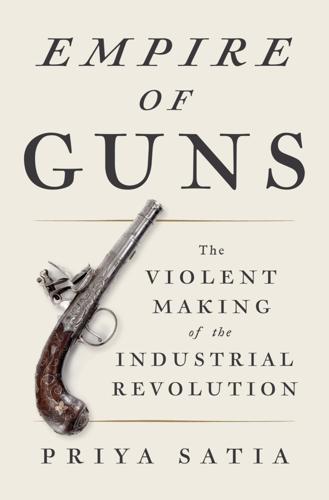
Empire of Guns
by
Priya Satia
Published 10 Apr 2018
Small arms—pistols, revolvers, carbines, handheld machine guns, rifles, shotguns, and hand grenades—remain the most abundant and most massively destructive category of weapons and the only category that continues to proliferate virtually unregulated. They inflict greatest suffering in former European colonies. There are roughly 640 million small arms in the world—mostly in private hands—increasing by 8 million each year and causing the death of one human being per minute. They are responsible for the vast majority of deaths in armed conflicts since 1945. While massive production and dumping of these long-lasting weapons during the Cold War continues to fulfill demand in the unhappiest parts of the world, the war on terror has accelerated their spread.
…
“Colt Culture: Examining Representations of the American West in Victorian London.” Columbia University Journal of Politics & Society 25 (Fall 2014): 6–26. Raudzens, George. “Military Revolution or Maritime Evolution? Military Superiorities or Transportation Advantages as Main Causes of European Colonial Conquests to 1788.” Journal of Military History 63 (1999): 631–41. ——— . “War-Winning Weapons: The Measurement of Technological Determinism in Military History.” Journal of Military History 54 (1990): 403–34. ———, ed. Technology, Disease and Colonial Conquests, Sixteenth to Eighteenth Centuries: Essays Reappraising the Guns and Germs Theories.

Lonely Planet Iceland
by
Lonely Planet
Filled with expansionist aspirations, Harald won a significant naval victory at Hafrsfjord (Stavanger) in 890. The deposed chieftains chose to flee rather than surrender, and many wound up in Iceland. While Viking raids continued in Europe, Eiríkur Rauðe (Erik the Red) headed west with around 500 others to found the first permanent European colony in Greenland in 986. Eiríkur’s son, Leif the Lucky, went on to explore the coastline of northeast America in the year 1000, naming the new country Vínland (Wineland). Permanent settlement was thwarted by the skrælings (Native Americans), who were anything but welcoming. Viking raids gradually petered out, and the Viking Age ended with the death of King Harald Harðráði, last of the great Viking kings, who died in battle at Stamford Bridge, England, in 1066.
…
Scattered farmsteads rapidly cover the country. 871 Norwegian Viking Ingólfur Arnarson, credited as the country’s first permanent inhabitant, sails to the southwest coast; in time he makes his home in a promising-looking bay that he names Reykjavík. 930 The world’s oldest existing parliament, the Alþingi, is founded at Þingvellir. The Icelanders’ law code is memorised by an elected law speaker, who helps to settle legal matters at annual parliamentary gatherings. 986 Erik the Red founds the first permanent European colony in Greenland, building the settlements of Eystribyggð and Vestribyggð in the southwest of the country. 1000 Iceland officially converts to Christianity under pressure from the Norwegian king, though pagan beliefs and rituals remain. Leif the Lucky lands in Newfoundland, becoming the first European to reach America. 1100–1230 Iceland’s literary Golden Age, during which the Old Norse sagas are written.
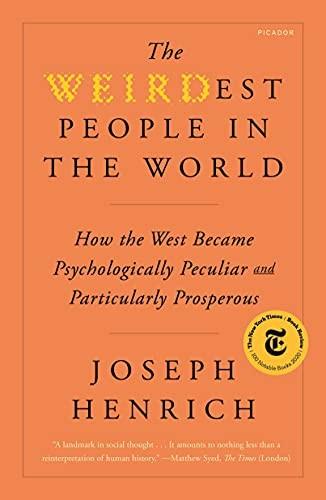
The WEIRDest People in the World: How the West Became Psychologically Peculiar and Particularly Prosperous
by
Joseph Henrich
Published 7 Sep 2020
The analyses by Gallego and Woodberry include statistical controls for population density, the strength of the rule of law, and geographic proximity to oceans, rivers, and national capitals. Interestingly, researchers have long noted that former British colonies in Africa have higher literacy rates than other European colonies. However, the “British advantage” vanishes when the effects of competition among Protestants and Catholics are considered. Nunn (2014) arrives at similar conclusions, and also controls for the influence of early explorers, railroads, agricultural suitability, and slave trade intensity. Nunn’s analysis indicates that the impact of early missionaries operates through both entire ethnic groups and local communities.
…
To deal with this, Benjamin statistically removed the effects of things like people’s schooling and the GDP per capita of the immigrant’s country of origin, as well as a host of geographic factors like temperature, distance from the equator, agricultural fertility, and malaria prevalence. The results hold. Some might further worry that European colonialization or settlement might be driving the results, but they even hold when he statistically removed the influence of the percentage of people of European descent in the home country and compared only individuals from countries colonized by the same European power. Finally, we might worry that these results on morality arise simply from the differences in trust discussed above; however, Benjamin’s analyses suggest that intensive kinship influences morality over and above its impact on generalized trust (Enke, 2017, 2019).
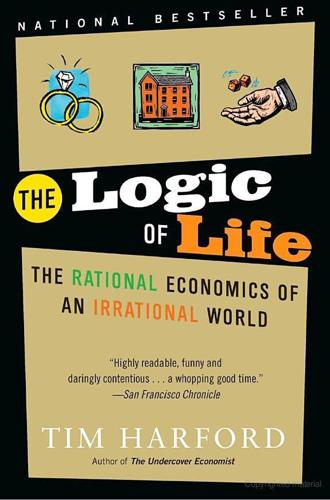
The Logic of Life: The Rational Economics of an Irrational World
by
Tim Harford
Published 1 Jan 2008
(On a large expedition led by a Scottish explorer from Gambia to Niger just ten years later, every single European died.) Mortality rates in African colonies were typically 40 or 50 percent in the first year. As well as swaying the consciences of the penal authorities, all these facts were well known to potential migrants from the European colonial powers, who much preferred to settle in the safer climes of what would eventually become Australia, Canada, New Zealand, and the United States. Instead of trying to send colonial settlers to areas with fearsome tropical diseases, Europeans instead made the even more brutal yet selfishly rational decision to establish the slave trade in such places and set up abusive economic systems designed to exploit the land and people or scrape up as much gold and ivory as possible in the shortest time.

Bastard Tongues: A Trailblazing Linguist Finds Clues to Our Common Humanity in the World's Lowliest Languages
by
Derek Bickerton
Published 4 Mar 2008
His "hapa haole" had an admixture of Hawaiian words, but it was basically a local form of Pidgin English, and he along with everyone else as sumed that this kind of language was what Hawaiians, and later the immigrant peoples, spoke to haoles and to one another. People conveniently forgot that the social dynamic of Hawaii, especially before sugar came along, was nothing like the social dy- H BASTARD TONGUES HAWAII'S HIDDEN HISTORY namic of European colonies. Hawaii was an independent kingdom and Europeans were there on sufferance, And when you enter somebody else's country, you don't get far if you try to make them talk your language. You have to try to speak theirs. Plus there' were more concrete clues. Don't forget that Hawaii became literate very early on.
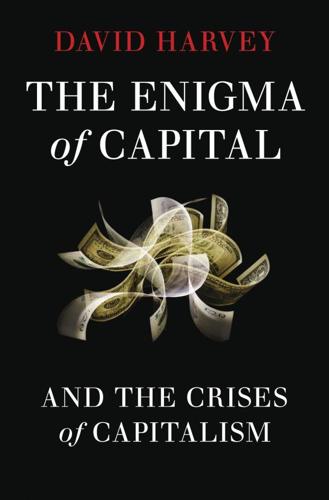
The Enigma of Capital: And the Crises of Capitalism
by
David Harvey
Published 1 Jan 2010
At first blush, this world would appear to be so geographically diverse as to escape principled understanding, let alone rationalised control. How on earth does it all relate? That there are intertwinings and inter-relationships is obvious. The civil wars in Africa, in many ways sad legacies of European colonial practices, reflect the long history of corporate and state-led struggles to control Africa’s valued resources, with China these days an increasingly important player. The factory in northern China or Ohio closes down in part because the factories in the Pearl River delta open up. The call centre in Barbados or Bangalore services customers in Ohio and London and the shirts or skirts worn in Paris have labels from Sri Lanka or Bangladesh, just as the shoes that were once made in Italy now come from Vietnam.
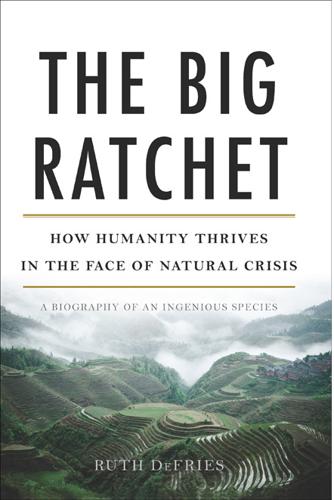
The Big Ratchet: How Humanity Thrives in the Face of Natural Crisis
by
Ruth Defries
Published 8 Sep 2014
According to his calculations and extrapolations, land was too scarce to produce enough wheat to satisfy “the great Caucasian race,” which he claimed included “the peoples of Europe, United States, British America, the white inhabitants of South Africa, Australia, parts of South America, and the white population of the European colonies.” He estimated that the number of bread-eaters was increasing “more than 6,000,000 per annum, necessitating annual additions to the bread supply nearly one-half greater than sufficed twenty-five years ago.” “What are our prospects of obtaining this amount?” he asked. Crookes’s motives in posing the question were not all benign—one could say they were chauvinistic, if not bordering on racist: “We are born wheat eaters. . . .
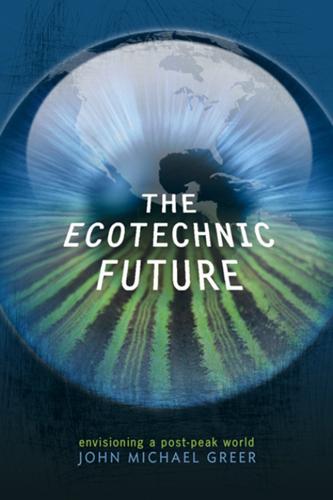
The Ecotechnic Future: Envisioning a Post-Peak World
by
John Michael Greer
Published 30 Sep 2009
That time of crisis and disintegration is still close enough to living memory that its phases, rather than the period as a whole, have names we recognize: the First World War, the Russian Revolution and the civil war that followed it, the rise to power of European fascism starting with Mussolini’s March on Rome in 1922, the bubble economy of the 1920s, the global Great Depression of the Thirties, the Second World War, and after it, the implosion of the last European colonial empires and the birth of nearly half of today’s independent nations. 63 64 T he E cotechnic F u t u re These events drew much of their momentum from one of the most sweeping changes in modern history: the end of European dominance over the rest of the planet. In 1914, most of the Earth’s land surface was either ruled from a European capital or was controlled by nations founded by European immigrants.9 By 1954, that state of affairs was no longer true.
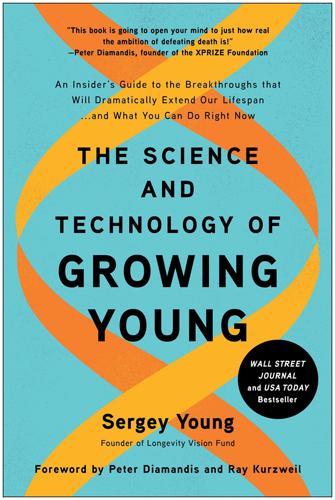
The Science and Technology of Growing Young: An Insider's Guide to the Breakthroughs That Will Dramatically Extend Our Lifespan . . . And What You Can Do Right Now
by
Sergey Young
Published 23 Aug 2021
There will be no more national-scale xenophobia. There will be no more world wars. I do not say this from a naïvely idealistic point of view. I say this because the world is already on this historical path. At the beginning of the twentieth century, 500 million people, representing 84 percent of the world’s land area, were ruled by European colonial powers.22 Today, that figure is close to zero. A hundred years ago, slavery was still legally practiced in many parts of the world. Today, it is despised. A century ago, women were almost universally disenfranchised. Today, they have the right to vote in virtually every nation and have made great progress toward genuine equality.
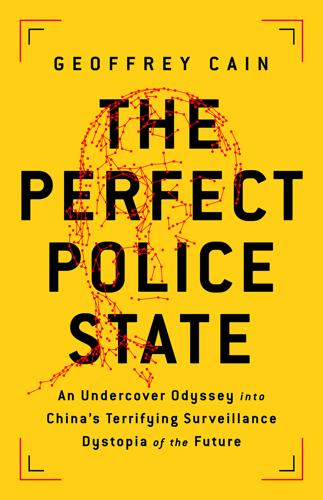
The Perfect Police State: An Undercover Odyssey Into China's Terrifying Surveillance Dystopia of the Future
by
Geoffrey Cain
Published 28 Jun 2021
In the Chinese Communist Party’s history writings later on, this marked the beginning of the “century of national humiliation” at the hands of Western powers, a shocking reversal of China’s role in the world. The emperor was effectively placed at the feet of the most powerful seafaring empire the world had ever seen.27 And once prosperous Eurasia too fell into war, religious bigotry, and disrepair. This was the result of pilfering conquest by European colonials and the corruption of the tribal governments bought off by them.28 After years of Maoism and economic brutalism, in 1973, as China was about to inch toward market reforms, it accounted for only 5 percent of the global economy.29 The lesson for China’s government? Modernize. Stand strong, stand tall.
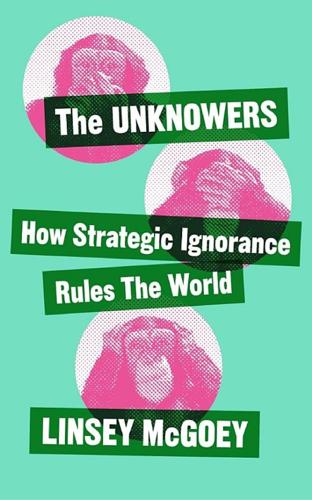
The Unknowers: How Strategic Ignorance Rules the World
by
Linsey McGoey
Published 14 Sep 2019
His appreciation of this problem grew from his work with the East India Company, and particularly his realization that the tendency of British intellectuals to deliberately exclude Indian perspectives that cast doubt on the robustness of British knowledge of India. He makes this point at the end of his essay Considerations on Representative Government. This essay is well-known and justly criticized today because of Mill’s derogatory statements about British colonies and the racist division he makes between ‘European’ colonies and non-European ones. But the essay is also noteworthy for a commendable insight: Mill’s admission of how little English authorities actually knew about India. He makes his remark on the last page of the essay, where he expresses concern over the East India Company’s actions in India, and calls for a ‘much more profound study of Indian experience, and of the conditions of Indian government, than either English politicians, or those who supply the English public with opinions, have hitherto shown any willingness to undertake.’8 This statement is remarkable for a number of reasons, not least the fact that the foremost authority on India for much of Mill’s life was his father James, who published a history of India in 1817 that was widely hailed as the definitive history of the continent, and which secured James a position as a senior manager in the East India Company.
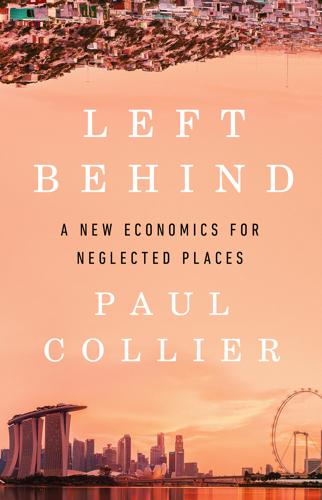
Left Behind
by
Paul Collier
Published 6 Aug 2024
Had eligibility for the quotas been restricted to Black Americans, the contrived argument used by the Supreme Court to declare affirmative action unconstitutional would not have been an option, since it would not have been based on race but on demonstrable and enduring disadvantage. Other than the minority of privileged teenagers, most of the world’s non-American black people have indeed suffered historic disadvantage. But in contrast to Black Americans this has not been due to entrenched American mis-governance. The culprits were the past European colonial powers. Elite American colleges are relying on the reverberations from that abusive European history to avoid their current obligations to their fellow Americans. The marginalized communities in Bradford and Sheffield, Glasgow and the Welsh Valleys have not suffered centuries of disadvantage comparable to Black Americans, but they too have faced growing educational disadvantage.
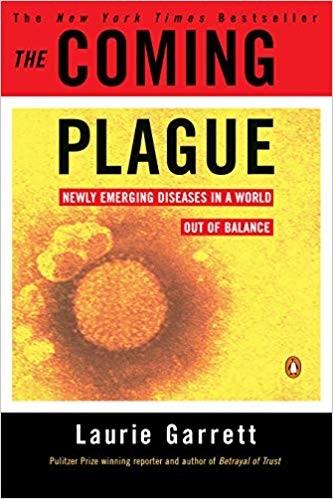
The Coming Plague: Newly Emerging Diseases in a World Out of Balance
by
Laurie Garrett
Published 31 Oct 1994
A mood of activism and boldness infected the usually staid halls of medical schools internationally, inspiring would-be physicians like Tarantola to dream of a world in which villagers in Burkina Faso had as much a right to expect an eighty-year life span as did les parisiennes bourgeois. When young doctors like Tarantola looked around the world for inspiration in the 1960s, they saw people nearly their own age leading revolutions against the old European colonial powers, taking control of governments and debating the creation of new types of social orders. Like many European and American idealists, Tarantola thought that with enough energy and Western money, just about anything was possible “if there is political will.” It was with that zeal that he approached his work in the Fada N’Gourma Rural Hospital in Burkina Faso, developing a grass-roots primary health care system that radically reduced infectious disease problems in the area.
…
Thousands of Indians, most of whom had spent all their lives in East Africa, fled not only Uganda but the continent as a whole.29 Though such problems plagued all the poor nations on the planet, they were particularly acute in Africa because of its severe political and military instability. Nowhere else in the world were governments so recently freed from centuries of European colonialism. The Portuguese colonies of Guinea-Bissau, Angola, Mozambique, and Cape Verde only gained independence in the mid-1970s, after more than a decade of bloody civil war. In the southern part of the continent, warfare and instability would persist until the fates of Rhodesia, South Africa, Angola, and Southwest Africa were decided.
…
Netter, AIDS in the World (Cambridge, MA: Harvard University Press, 1992), 127–32. 12 Earlier circumstantial evidence led Joseph Needham to conclude that China had leprosy prior to A.D. 500, but skeletal studies found no clear leprotic remains in Asia until well after the medieval leprosy epidemic of Europe. See V. Moller-Christensen. “Evidence of Leprosy in Earlier Peoples,” in Brothwell and Sandison, eds. (1967), op. cit. Indeed, the greatest leprosy epidemics of Asia followed European colonialism of the region during the eighteenth century. 13 For these and many other cogent details on the history of tuberculosis, see F. Ryan, The Forgotten Plague: How the Battle Against Tuberculosis Was Won—and Lost (Boston: Little, Brown, 1993; and R. Dubos, “Tuberculosis,” Scientific American 181 (1949): 31–40. 14 J.
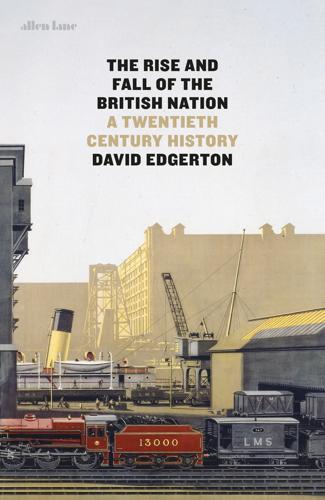
The Rise and Fall of the British Nation: A Twentieth-Century History
by
David Edgerton
Published 27 Jun 2018
Adam Tooze, The Deluge: The Great War, America and the Remaking of the Global Order, 1916–1931 (London, 2014), chapter 20. 13. Frederick Cooper, Colonialism in Question: Theory, Knowledge, History (Oakland, California, 2005), pp. 142–8; Jon Wilson, India Conquered: Britain’s Raj and the Chaos of Empire (London, 2016). 14. See Martin Thomas, Violence and Colonial Order: Police, Workers and Protest in the European Colonial Empires, 1918–1940 (Cambridge, 2012), chapter 9. 15. Ben Taylor, ‘Science and the British Police Service: Surveillance, Intelligence and the Rise of the Professional Police Officer, 1930–2000’ (PhD thesis, King’s College London, 2015). 16. Tooze, Deluge. 17. Joe Maiolo, Cry Havoc: The Arms Race and the Second World War, 1931–1941 (London, 2010). 18.
…
Thomas, Geraint, ‘Political Modernity and “Government” in the Construction of Inter-war Democracy: Local and National Encounters’, in Laura Beers and Geraint Thomas (eds.), Brave New World: Imperial and Democratic Nation-building in Britain between the Wars (London, 2011). Thomas, Martin, Violence and Colonial Order: Police, Workers and Protest in the European Colonial Empires, 1918–1940 (Cambridge, 2012). —, Fight or Flight: Britain, France, and Their Roads from Empire (Oxford, 2014). Thomas, William, Rational Action: The Sciences of Policy in Britain and America, 1940–1960 (Cambridge, Massachusetts, 2015). Thompson, Andrew (ed.), Britain’s Experience of Empire in the Twentieth Century (Oxford, 2012).
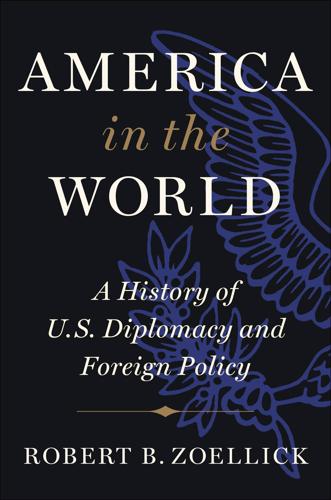
America in the World: A History of U.S. Diplomacy and Foreign Policy
by
Robert B. Zoellick
Published 3 Aug 2020
While waiting, Jefferson, brimming with plans for the new republic, wrote thirty-one reports in four months, including a paper on coinage that led to the adoption of the dollar and decimal system.1 On March 1, 1784, Jefferson presented a committee plan for the governance of the trans-Appalachian territories. Jefferson viewed these lands as vital to U.S. security; they offered “defense in depth” against neighboring European colonies. Jefferson had helped organize Virginia’s military expedition to seize the Illinois country, and as governor had ceded vast real estate to the Confederation’s Western Reserve. But security required settlement.2 The key principle of Jefferson’s committee report was that new lands should become coequal states with the original thirteen.
…
Michael Green, the author of a recent wide-ranging and insightful history of America’s “Grand Strategy” in the Asia Pacific, traces the U.S. rise as a Pacific power to Seward’s multidimensional vision of “military strength, trade, and republican values.” The secretary of state recognized Japan and China as potential independent powers, and sought to thwart European colonial moves on Korea while initiating commercial ties. The Burlingame Treaty of 1868 was China’s first “equal” treaty with a Western power.56 Given Seward’s experiences with Santo Domingo, the Trent crisis, and Mexico, it is no surprise that the secretary’s strategic eye observed the Caribbean, too.
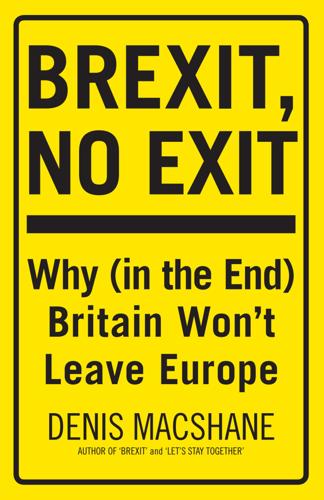
Brexit, No Exit: Why in the End Britain Won't Leave Europe
by
Denis MacShane
Published 14 Jul 2017
I was struck during the Brexit plebiscite campaign, in all the debates I engaged in with Conservative MPs and MEPs and with pro-Brexit commentators and economists, how very early on in their arguments against Europe there would be an attack on Germany as a new hegemon that was twisting the EU and the euro to be instruments of German Machtpolitik. It led the leftist economics academic Jamie Galbraith to describe Greece as a ‘European colony’, the kind of leftwing demagogy about Europe that was as damaging to any clear understanding of the EU as the rightist demagogy of a Nigel Farage or Boris Johnson. The media establishment, in the sense of the papers owned by proprietors who paid no tax in the UK, such as the Daily Mail, the Daily Telegraph, the Sun, The Times and their Sunday sister papers, were relentlessly hostile to the EU.
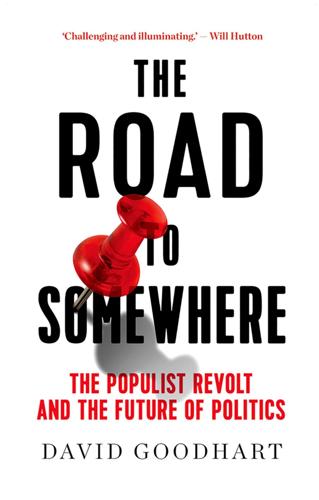
The Road to Somewhere: The Populist Revolt and the Future of Politics
by
David Goodhart
Published 7 Jan 2017
The Euro crisis has created Greece’s fascistic Golden Dawn. Post-nationalism has turned out to have some of the same group-think qualities as nationalism itself only wrapped in moral self-regard. Unlike the British patriotic left of the Second World War and New Jerusalem period, the post-1960s new left saw nationalism in the context of European colonialism. It was not only part of the apparatus of class oppression but indistinguishable from racism too. And working class national sentiment was merely false consciousness. A narrative of progress, shaped by the history of civil rights reforms in the past few generations, saw the abolition of slavery and the emancipation of women and minorities, as a prelude to the transcending of all exclusive communities—including the nation state.

Oryx and Crake
by
Margaret Atwood
Published 5 May 2003
Surprising what a sharp sting they can give, especially the yellow ones. He rubs them away. “It is the strict adherence to daily routine that tends towards the maintenance of good morale and the preservation of sanity,” he says out loud. He has the feeling he’s quoting from a book, some obsolete, ponderous directive written in aid of European colonials running plantations of one kind or another. He can’t recall ever having read such a thing, but that means nothing. There are a lot of blank spaces in his stub of a brain, where memory used to be. Rubber plantations, coffee plantations, jute plantations. (What was jute?) They would have been told to wear solar topis, dress for dinner, refrain from raping the natives.
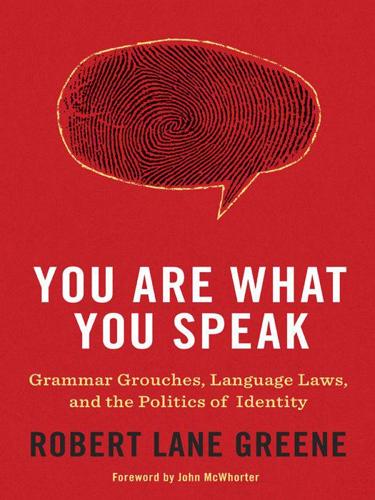
You Are What You Speak: Grammar Grouches, Language Laws, and the Politics of Identity
by
Robert Lane Greene
Published 8 Mar 2011
But three years after the war’s end, in 1948, an assertive Afrikaner party, the National Party, won South Africa’s elections for the first time. With this victory began the period of legally enforced “apartness” or, in Afrikaans, apartheid. Before 1948, South Africa’s white rule was not unlike that in other European colonies in Africa, such as Algeria or Kenya. Apartheid, though, was a different beast: the most legally elaborate, and stiflingly oppressive, system of minority rule in the world. Blacks couldn’t move freely about the country, own land in the vast majority of it, work in skilled trades, join unions, have sex with or marry whites, or even, at apartheid’s peak, learn mathematics in school.

Present Shock: When Everything Happens Now
by
Douglas Rushkoff
Published 21 Mar 2013
(Only France, with its limited navy, proved incapable of expanding in quite the same way, leading finance minister Jean-Baptiste Colbert to invent the concept of French luxury and achieve expansion through exports. “French fashions must be France’s answers to Spain’s gold mines in Peru,” he declared.)22 Once the overt conquests of nations and the subjugation of their people was no longer feasible, the West achieved the same thing through more virtual means. After World War II, the last of the European colonies—such as India and Palestine—were proving ungovernable. The creation of the World Bank and the International Monetary Fund gave Western powers a new way to expand their economies without actually taking over countries. Instead, in the name of liberating these regions, they would lend large sums to so-called developing nations, at interest.

Instant City: Life and Death in Karachi
by
Steve Inskeep
Published 12 Oct 2011
Karachi has been a destination for some of the most dramatic migrations of all. No one metropolis could capture the full variety of the world’s growing cities, but Karachi is representative in several ways. It’s on the Asian coastline, where massive urban growth is under way. Its modern foundations were laid during the age of European colonialism. Its great expansion coincided with the postwar collapse of empire, when industrialization attracted people to the city—as did the desperation of people seeking shelter from political or economic catastrophes. And it’s surprising to learn how often Karachi’s course has been influenced by trends, ideas, or investment from other cities.
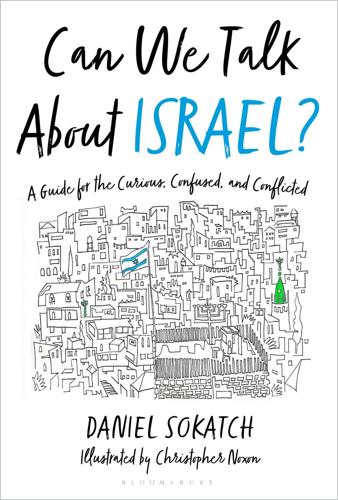
Can We Talk About Israel?: A Guide for the Curious, Confused, and Conflicted
by
Daniel Sokatch
Published 18 Oct 2021
If Palestinians descend from Canaanites, then by definition they’ve been in the land longer than the Jews, who the Bible says invaded and conquered the Canaanites. But some partisans of the Palestinian cause have criticized this theory, noting that it actually validates the Zionist narrative that Jews have an ancient connection to the land, rather than being a recent European colonial transplant to the region. In this way, the theory endorses an idea they reject: namely, that Jews and Palestinians have, essentially, been fighting it out for control of the country for thousands of years. More recent and serious scholarship suggests that Palestinians descend from a mix of the various waves of peoples and civilizations that inhabited Palestine over the centuries—including some of those ancient biblical inhabitants.
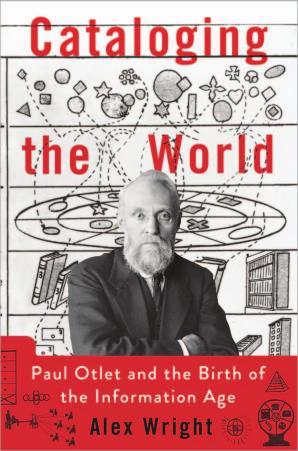
Cataloging the World: Paul Otlet and the Birth of the Information Age
by
Alex Wright
Published 6 Jun 2014
While there was a vocal, idealistic faction hoping to include language about human rights and the equality of nations, the colonial powers resisted, hoping to protect their economic interests and ensure that their territorial interests would stay profitable. For all of his own high-minded rhetoric about international peace and unity, Otlet struggled to reconcile these noble sentiments with the fact of widespread European colonialism and Belgium’s own continued vested interest in the Congo. In The End of War, he devoted a section to “international territories” or colonies, asserting that “the African continent is a completely international domain.” Echoing Leopold’s humanistic rationalizations for his exploitation of the indigenous population, Otlet characterized the entire European project in Africa as “a great civilizing mission,” one born of friendship toward the native populations and predicated on a respect for their religious beliefs, family structures, and property rights—and, in the process, “making them appreciate the benefits of civilization.”17 Africa aside, for the rest of the world, Otlet prescribed a new order, one based on respect for individual rights, protection of nationalities, races, and religions, and a federation of nations to safeguard those rights.
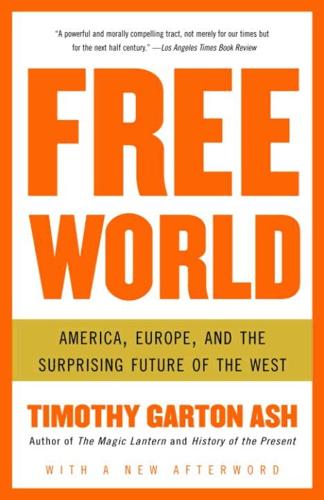
Free World: America, Europe, and the Surprising Future of the West
by
Timothy Garton Ash
Published 30 Jun 2004
Under the guise of semi-Western constitutional forms, distended royal families, clans, and tribes rule through the old virtue of asabiyya, defined by a great historian of the Arab peoples, Albert Hourani, as “solidarity directed toward acquiring and keeping power.”38 They have been encouraged or at least tolerated in these ways by the West for much of the twentieth century. European colonial powers originally drew the arbitrary frontiers of their states, installed some of their ancestors as rulers, and sought to preserve cozy client relationships even after decolonization: the British with the King of Jordan, the French with the King of Morocco, and so on. The anticolonial United States has for decades been prepared to treat the oil-producing Arab countries as “a big dumb gas station,” in Thomas Friedman’s striking phrase.39 If an Arab country does hold an election there is now always a danger that a radical Islamist party will come to power—and then it might be “one man, one vote, once.”
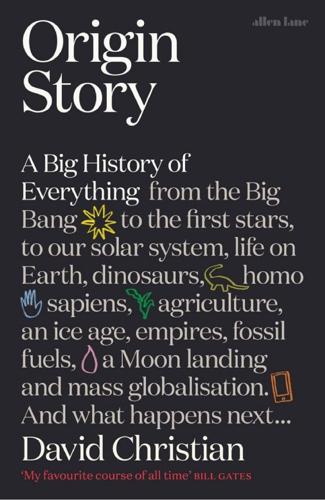
Origin Story: A Big History of Everything
by
David Christian
Published 21 May 2018
On August 9, 1945, a similar weapon was dropped on the city of Nagasaki. Act 3 includes the second half of the twentieth century and the early twenty-first century. From the bloodbath of the world wars, the United States and the Soviet Union emerged as the first global superpowers. There were many local wars, most aimed at overthrowing European colonial rule. But there were no more major international wars during the era of the Cold War. By now, all powers understood that there would be no victors in a nuclear war. But there were some close shaves. Soon after the Cuban missile crisis of 1962, President John Kennedy admitted that the odds of an all-out nuclear war had been “between one out of three and even.”1 The four decades after World War II witnessed the most remarkable spurt of economic growth in human history.

The Coming of Neo-Feudalism: A Warning to the Global Middle Class
by
Joel Kotkin
Published 11 May 2020
It was the ascendant middle class, willing to challenge the aristocracy and even the clergy, that drove democratic reform. As the radical social theorist Barrington Moore said a half century ago, “no bourgeois, no democracy.”56 To be sure, the Western progress toward more democratic governance did not at first give equal rights to all—far from it. Prosperity came partly at the expense of indigenous peoples in European colonies, including those of the Dutch and the British. Belgium’s control of the Congo was particularly heinous, with the use of forced labor from the native residents to serve a small European minority of crony capitalists and government administrators.57 American success was built in part on the destruction of indigenous cultures and a revival of the abhorrent practice of slavery.
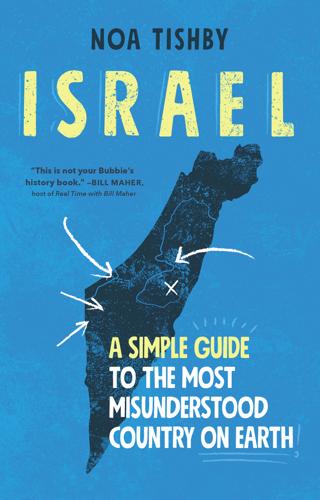
Israel: A Simple Guide to the Most Misunderstood Country on Earth
by
Noa Tishby
Published 5 Apr 2021
Israel is a refugee state, reestablished after the British left, as the Jewish homeland following thousands of years of exile and persecution. The Jews did not go back to Israel to “colonize” or to operate on behalf of any European power, but to literally save themselves. The argument of Israel being a European colony is also a dud since only 31 percent of its citizens are of European origin; the rest are of Middle Eastern descent, Arabs and Jews, which makes them locals to the region. (Sorry, I know how this sounds. But I do get this argument a lot, put to me in this exact racist terminology.) Apartheid.
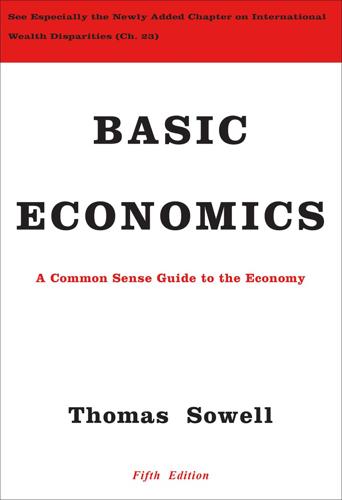
Basic Economics
by
Thomas Sowell
Published 1 Jan 2000
While impartiality is a desirable quality in laws, even laws which are discriminatory can still promote economic development, if the nature of the discrimination is spelled out in advance, rather than taking the form of unpredictably biased and corrupt decisions by judges, juries, and officials. The Chinese and Indians who settled in the European colonial empires of Southeast Asia never had the same legal rights as Europeans there, nor the same rights as the indigenous population. Yet whatever rights they did have could be relied upon, and therefore served as a foundation for the creation of Chinese and Indian businesses throughout the region.
…
The Tamils of Sri Lanka, the Bamiléké of Cameroon, the Kabyle Berbers of Algeria, the Kikuyu of Kenya, the Toba Batak of Indonesia, the Ilocano of the Philippines, the Malayalees of Kerala in India, and the Ibo of Nigeria all come from regions too poor to support their populations, and all have unusually high rates of migration to areas outside their home regions, where they have taken up a variety of opportunities in the modern sector.{903} The era of European colonialism put Western education and Western industrial, commercial and administrative skills within reach for groups previously among the poorer indigenous people such as the Ibos in Nigeria and the Tamils in Sri Lanka, who then rose to become more prosperous than others who had been more prosperous before.

Living in a Material World: The Commodity Connection
by
Kevin Morrison
Published 15 Jul 2008
This time the link was politically very different though – fifty years ago Mao’s China had forged relations with President Nassar of Egypt in what was seen to be an ‘anti-West’ alliance. China’s hunger for raw materials has put a new global power in Africa, which is still dealing with the legacy of European colonialism; nowhere more so than the Congo, which is once again the focus of international companies wanting to tap its riches. Doing the Congo Congo is unique in terms of colonialism. It became the private property of King Leopold II, constitutional monarch of Belgium, and the absolute ruler of the Congo during the 1880s, but there was no legal link between the two countries until 1908, when it was renamed the Belgian Congo (Wauters, 1930).
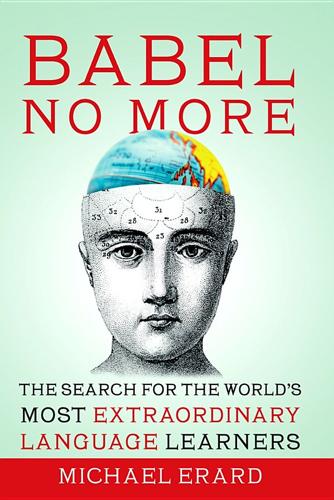
Babel No More: The Search for the World's Most Extraordinary Language Learners
by
Michael Erard
Published 10 Jan 2012
Historical and economic forces also make up an important part of the story, not only by determining which languages one learns and what one does with them, but by calling forth and channeling the neurological traits that serve learning, speaking, and using a lot of languages. Such forces also shape who happens to have access to what opportunities for school, travel, and even literacy. Recall how European wars provided Mezzofanti with sick soldiers in polyglot hospitals, and how European colonialism gave young Cameroonian men the need to learn more languages. Clearly, the brain is an important part of the story, and hyperpolyglots seem to have unusual neurological origins. Maybe this looks like a nostalgic return to the era when people believed in elite brains, but it’s not. The new neuroscience is locating the neural signatures of high performance, figuring out how to manipulate the plasticity of specific brain systems, and trying to understand the genetic factors that impact cognitive abilities as well as disabilities.
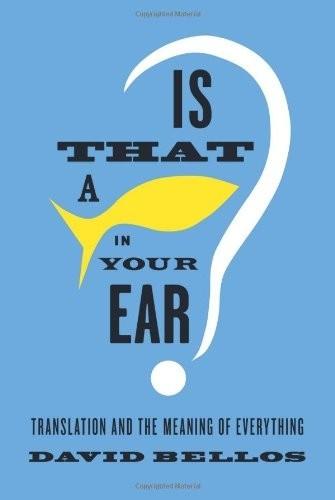
Is That a Fish in Your Ear?: Translation and the Meaning of Everything
by
David Bellos
Published 10 Oct 2011
They work into languages they have learned long after the critical age of language acquisition—they are what we termed L2 translators see here of this book. They therefore run the same kind of risk of creating unintentionally comical or offensive effects as do the creators of international signage in Croatian seaside hotels. Nida’s main concern was to try to ensure they did not. Bible translation into non-European languages, which began with European colonial expansion as early as the seventeenth century, was highly inventive from the start. Albert Cornelius Ruyl, a junior trader in the Dutch East India Company with unusual linguistic skills, first taught himself Malay—a regional contact language—when he began his service in Sumatra. He wrote a grammar, then translated the Gospel of Matthew from Dutch.
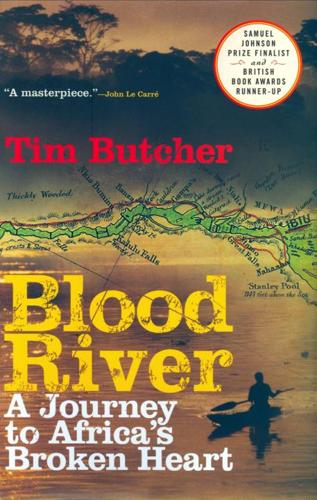
Blood River: A Journey to Africa's Broken Heart
by
Tim Butcher
Published 2 Jul 2007
The greatest shame arising from Stanley's Congo journey was how it started this pattern of sovereignty-stripping, a process whereby the vast majority of Africans in the Congo and elsewhere have ended up not just without any say in the running of their country, but abused and exploited by their African leaders. While outsiders led by Stanley can be blamed for creating this situation, the people of Africa must share responsibility for showing themselves unable to change it. The Malaysian naval officer on my river boat was right to ask why former European colonies in Asia have been able to develop since independence, while those in Africa have regressed. The cruelty and greed of African dictators is mostly to blame, but it is also true that the peoples of Africa have not been capable of working together to rein in the excesses of dictators. People power in Africa has a wretched record.
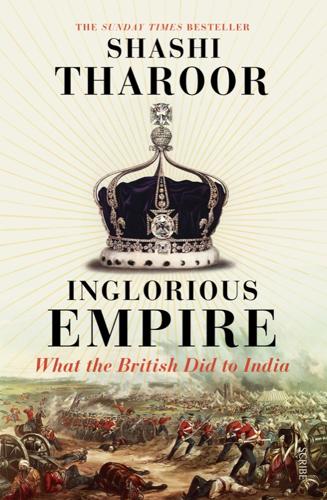
Inglorious Empire: What the British Did to India
by
Shashi Tharoor
Published 1 Feb 2018
The prolonged state of chronic hostility between India and Pakistan, punctuated by four bloody wars and the repeated infliction of cross-border terrorism as a Pakistani tactic against India, is the most obvious example. But there are others. The dramatic events in East Timor in 1999 led to the last major transfer of power to an independence movement. Yet at least closure has occurred there, unlike in Western Sahara or in those old standbys of Cyprus and Palestine, all messy legacies of European colonialism. Fuses lit in the colonial era could ignite again, as they have done, much to everyone’s surprise, in the Horn of Africa, between Ethiopia and Eritrea, where war broke out over a colonial border that the Italians of an earlier era of occupation had failed to define with enough precision and where peace simmers today amidst much uncertainty.
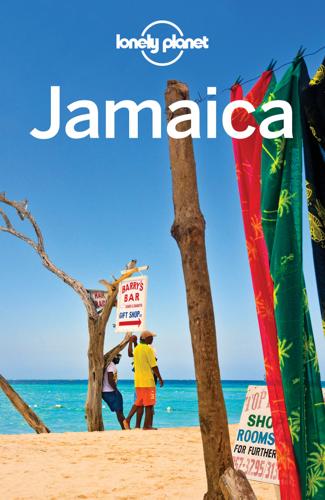
Lonely Planet Jamaica
by
Lonely Planet
It's a history that has left its mark on the island, but the passion and the perseverance of its people, which have made the island and its culture so vital, still leads Jamaicans to work toward a stronger future. The Story of the Jamaican People by Philip Sherlock and Hazel Bennett offers a new interpretation of Jamaica’s history centering on Afro-Caribbean culture rather than European colonialism. Xaymaca The Caribbean was inhabited long before Christopher Columbus sailed into view, colonized by a successive wave of island-hopping incomers originally from South America. Most notable were the Arawaks, and then the Taínos who first settled ‘Xaymaca’ (‘land of wood and water’) around AD 700–800.
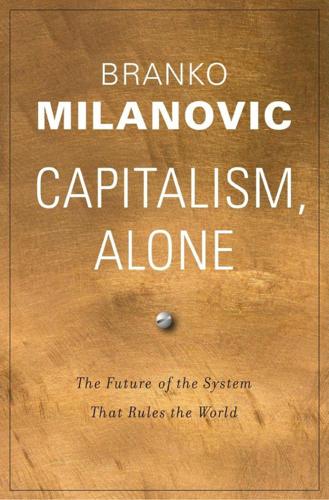
Capitalism, Alone: The Future of the System That Rules the World
by
Branko Milanovic
Published 23 Sep 2019
It also produced—with a delay of some twenty years, in its continuation known as World War II—a diminution in the global importance of Europe and the rise of the United States to the position of a global hegemon. And it almost certainly accelerated the process of decolonization, in part by weakening European colonial powers and in part by delegitimizing their rule. World War I did not just come out of the blue: its seeds were contained in conditions prevailing before the war. As John Hobson (1902) originally argued, the European imperialism that ultimately led to the war arose because of high domestic inequality in income and wealth generated by globalized capitalism.

Stakeholder Capitalism: A Global Economy That Works for Progress, People and Planet
by
Klaus Schwab
Published 7 Jan 2021
During that war, many of OPEC's Arab members opposed Israel, which during and after the armed conflict expanded its territory in the region. The embargo, targeted mainly against Israel's western allies including the US and the UK, was very effective. It was no wonder perhaps, that the OPEC countries used their newly gained market power. In the preceding two decades, many of its members—often former European colonies in Asia, the Middle East, and Africa—had finally gained their independence. But unlike most Western countries in that era, these developing countries were often consumed by political and social turmoil. The economic boom in Europe and the United States remained out of reach for many newly independent countries in Asia, the Middle East, and Africa.
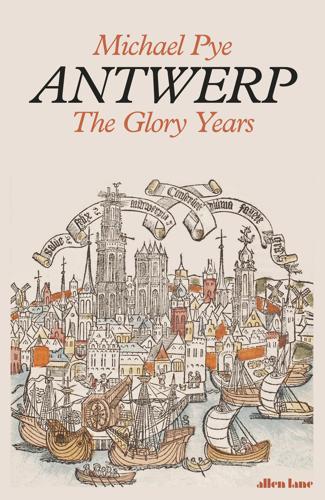
Antwerp: The Glory Years
by
Michael Pye
Published 4 Aug 2021
This flexibility was enough to allow the Portuguese Ambassador to Istanbul to imagine she might be considering a return to Portugal, even that she was a Christian at heart,3 although this was the Dona Gracia who ‘helped the Jews when they did not have money to leave, comforted them in Flanders and in the bitter mountains of the Alps and Germany’, as Samuel Usque wrote in his Consolaçam.4 Yet in Istanbul, Dona Gracia established herself in the European colony in Galata, not the settled Jewish quarter. She took Spanish ladies and maids in her entourage and dressed her male servants in the Venetian style, not the usual Turkish caps and hoods. She also collaborated with the Portuguese; she did not respect the great divide in the world. Her agents passed on information about Portuguese held captive close to Hormuz, and tried to rescue others imprisoned in Muscat.5 Her connections were good for starting rumours because no outsider could be sure where she truly wanted to be.
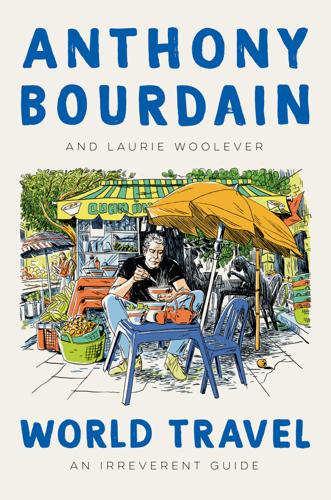
World Travel: An Irreverent Guide
by
Anthony Bourdain
and
Laurie Woolever
Published 19 Apr 2021
For me, it was always the place firecrackers came from, and little else. I was vaguely aware it was Chinese, kind of, and later I became aware that it was somehow Portuguese, too. “In fact, it was settled by the Portuguese in the sixteenth century, when Portugal pretty much ruled the sea. The first and last European colony in China, a trading port, spices and flavors from all the other Portuguese colonies in Africa, India, and the Strait of Malacca, mixed with European and Chinese, and, well, what came out the other side was unique. To be Macanese is to be neither Chinese nor Portuguese, but something singular and complex.

Stakeholder Capitalism: A Global Economy That Works for Progress, People and Planet
by
Klaus Schwab
and
Peter Vanham
Published 27 Jan 2021
During that war, many of OPEC's Arab members opposed Israel, which during and after the armed conflict expanded its territory in the region. The embargo, targeted mainly against Israel's western allies including the US and the UK, was very effective. It was no wonder perhaps, that the OPEC countries used their newly gained market power. In the preceding two decades, many of its members—often former European colonies in Asia, the Middle East, and Africa—had finally gained their independence. But unlike most Western countries in that era, these developing countries were often consumed by political and social turmoil. The economic boom in Europe and the United States remained out of reach for many newly independent countries in Asia, the Middle East, and Africa.
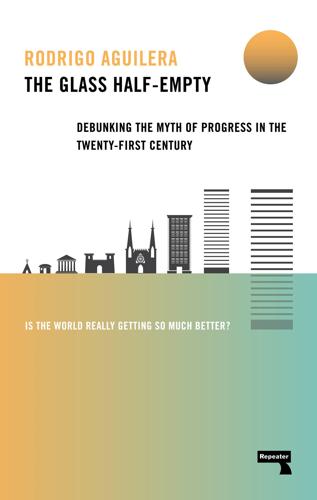
The Glass Half-Empty: Debunking the Myth of Progress in the Twenty-First Century
by
Rodrigo Aguilera
Published 10 Mar 2020
Later, the nineteenth century had the prophets of Enlightenment justifying colonialism, on the grounds that the very liberties that should be afforded to the European race were not naturally applicable to the “barbarians” and “savages” that populated the rest of the world.46 The partitioning of Africa by the major European colonial powers during the 1884–1885 Berlin Conference took place almost exactly two hundred years after Britain’s Glorious Revolution of 1688, which is often seen as the beginning of liberal political enlightenment. Surely this was enough time to square off any initial contradictions? It must also be recalled that, at the time, not all Europeans were seen as equals.
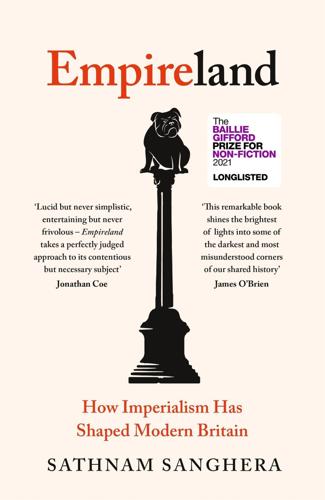
Empireland: How Imperialism Has Shaped Modern Britain
by
Sathnam Sanghera
Published 28 Jan 2021
One prominent anthropologist, Herbert Hope Risley, working at the turn of the century, even believed that caste could be discerned from the nose, the finest noses naturally belonging to the upper castes. Needless to say, there was no consistency in this absurd generalizing. As Tayyab Mahmud explains, when 1.5 million Indians went overseas as indentured labour between 1834 and 1920, filling the gaps created by the abolition of slavery in the European colonies in the early nineteenth century, they endured being stereotyped in often entirely contradictory ways. Initially, it was standard to portray Africans as lazy and untrustworthy, while Indian workers were deemed industrious, reliable and obedient. However, once Indians were ensconced on the plantations and having to contend with brutal hardships and humiliations, they fell from favour.
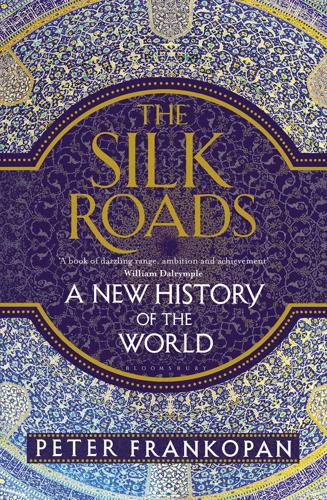
The Silk Roads: A New History of the World
by
Peter Frankopan
Published 26 Aug 2015
The British learnt to intervene judiciously, taking advantage of circumstances that were in their favour, but staying out of it when the dice were loaded against them. It was also becoming clear that what happened in Europe could determine one’s fate on the other side of the world. Intense arguments about who would inherit the throne of Austria could have consequences that led to fighting and exchanges of territory in European colonies all over the world: the issue of the legitimacy of Maria-Theresa’s succession in the 1740s provoked outbreaks of fighting from the Americas to the Indian subcontinent that lasted nearly a decade. The result when matters were finally settled in 1748 was that Cap Breton in Canada and Madras in India changed hands between the French and the British.
…
Secoli XI–XIII (2000), pp. 20–1. 18J. Riley-Smith, The First Crusaders, 1095–1131 (Cambridge, 1997), p. 17. 19The Monk of the Lido, Monachi Anonymi Littorensis Historia de Translatio Sanctorum Magni Nicolai, in Recueil des Historiens des Croisades: Historiens Occidentaux 5, pp. 272–5; J. Prawer, The Crusaders’ Kingdom: European Colonialism in the Middle Ages (London, 2001), p. 489. 20Codice diplomatico della repubblica di Genova, 3 vols (Rome, 1859–1940), 1, p. 20. 21B. Kedar, ‘Genoa’s Golden Inscription in the Church of the Holy Sepulchre: A Case for the Defence’, in G. Airaldi and B. Kedar (eds), I comuni italiani nel regno crociato di Gerusalemme (Genoa, 1986), pp. 317–35.

George Marshall: Defender of the Republic
by
David L. Roll
Published 8 Jul 2019
Preoccupied with the Depression, America’s diplomatic reaction was timid, and the League of Nations refused to impose sanctions on Japan. This weak response encouraged the Japanese government to withdraw from the League and foreshadowed wider aggression by Japan that would spread to the rest of China and the European colonies in East Asia. In Germany, former corporal Adolf Hitler engineered a political revolution by captivating German voters, especially the country’s six million unemployed, with his message of national redemption. Hitler was a singularly gifted speaker and performer. Between 1928 and 1932, his Nazi Party shocked the German establishment by increasing its share of the vote in the Reichstag (parliament) from 2.6 percent to 37.4 percent.
…
In China, Japanese armies continued advancing south, capturing the city of Nanchang on March 27. In the South China Sea, Japan’s naval forces annexed a necklace of strategically situated islands that lay athwart sea lanes to Singapore and the island of Luzon in the Philippines. As proclaimed by its foreign ministry, the Japanese were pursuing a “New Order”—one that threatened European colonies in Southeast Asia as well as the Philippines. Facing the probability of having to defend their respective homelands in Europe, the British and French navies were not large enough to also protect their resource-rich possessions in Asia against Japanese attack. On or about March 19, the president received a note through diplomatic back channels from British foreign secretary Lord Halifax suggesting that he should consider moving the U.S. fleet to Hawaii in the event war should break out in Europe.
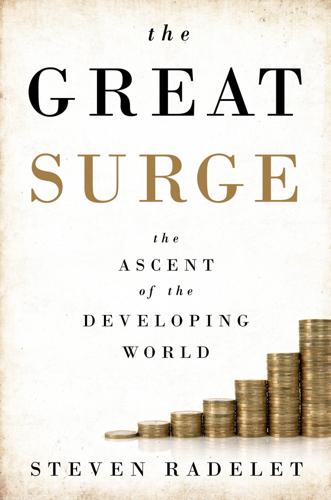
The Great Surge: The Ascent of the Developing World
by
Steven Radelet
Published 10 Nov 2015
A huge health gap emerged, mirroring the huge gaps in wealth, education, and other aspects of human welfare that arose in the nineteenth and twentieth centuries. The rich countries saw enormous gains, while poor countries were left behind. This dynamic began to change in the middle of the twentieth century. Following the end of World War II and the European colonial period, knowledge about good health practices, alongside critical medicines and vaccines, began to spread to developing countries. Child deaths began to fall, disease morbidity began to decline, and life expectancy began to increase, even in most of the world’s poorest countries. The combination of the dramatic declines in infant mortality, reductions in maternal mortality, and fewer deaths from malaria, tuberculosis, measles, and other diseases is translating into much longer and healthier lives.

A Concise History of Modern India (Cambridge Concise Histories)
by
Barbara D. Metcalf
and
Thomas R. Metcalf
Published 27 Sep 2006
In the civil lines area, existing villages were removed and replaced with paved streets and covered gutters, set out on a grid pattern and lined with newly planted avenues of trees. Population density was very low, with European residents living in ‘bungalows’, a distinctive colonial housing style meant to provide ventilation and protection from heat, in plots that could be as large as 10 acres (plate 4.3). The civil lines contained the buildings around which European colonial society revolved: government offices, the club, polo field, church, and shops. Social life – visiting, balls, certain sporting events, social drinking – were modelled on upper-class behaviour and were exclusively European. The military cantonment, again laid out on a regular grid, was directly north of the old city and, to further reassure the European civilian population, immediately adjacent to their residential 110 A Concise History of Modern India Plate 4.3 Bungalow, Civil Lines, Allahabad, photograph 1866.
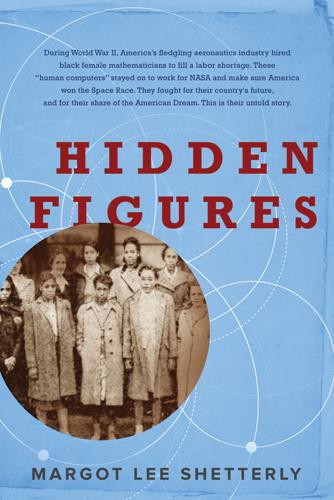
Hidden Figures
by
Margot Lee Shetterly
Published 11 Aug 2016
Philip Randolph, an avowed socialist who preached a fiery sermon in favor of fair employment and civil rights legislation in front of a packed audience in Norfolk in 1950, was careful in his speeches to denounce Communism as antithetical to the interests of the Negro people. Paul Robeson, Josephine Baker, and W. E. B. Du Bois were among the black leaders to draw a connection between America’s treatment of its Negro citizens and European colonialism. They traveled abroad and made speeches declaring their solidarity with the peoples of India, Ghana, and other countries that were in the early days of new regimes as independent nations or pushing with all their might to get there by agitating against their colonial rulers. The US government went so far as to restrict or revoke these firebrands’ passports, hoping to blunt the impact of their criticism of American domestic policy in the newly independent countries that the United States was eager to persuade to join its side in the Cold War.
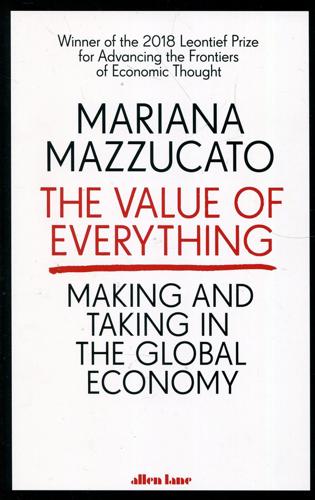
Value of Everything: An Antidote to Chaos The
by
Mariana Mazzucato
Published 25 Apr 2018
In the fourth century BC, Aristotle distinguished a variety of more or less virtuous jobs, depending on the class (citizen or slave) of the ancient Greek polis dweller.1 In the New Testament, the apostle Matthew reported that Jesus said it was ‘easier for a camel to go through the eye of a needle than for a rich man to enter into the Kingdom of God'.2 During the Middle Ages, the Church disparaged and even denounced moneylenders and merchants who ‘bought cheap and sold dear';3 while they may not have been lazy, they were considered unproductive and vile. Pre-modern definitions of what work was or was not useful were never clear-cut. With the onset of colonialism in the sixteenth century these definitions became even more blurred. European colonial conquest and the protection of trade routes with newly annexed lands were expensive. Governments had to find the money for armies, bureaucracies and the purchase of exotic merchandise. But help seemed to be at hand: extraordinary amounts of gold and silver were discovered in the Americas, and a vast treasure poured into Europe.
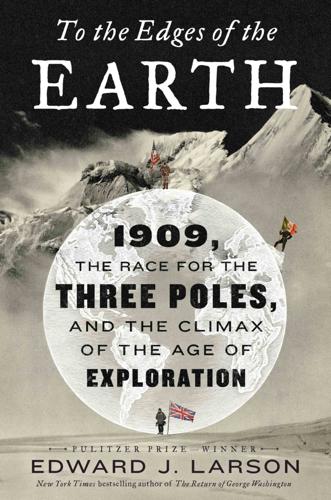
To the Edges of the Earth: 1909, the Race for the Three Poles, and the Climax of the Age of Exploration
by
Edward J. Larson
Published 13 Mar 2018
The magnetic poles held a strong attraction for scientists and explorers during the Victorian era, though this had weakened by the turn of the twentieth century. Shackleton and Mawson were men of a new era; David was not. During the nineteenth century, scientific organizations and governments across Europe and in the European colonies had launched a global crusade to map the curved lines and shifting patterns of terrestrial magnetism to their convergences at the magnetic poles. It became the largest shared scientific enterprise to date, with three magnetic observatories erected with British funds in Australia alone. Navigation by compass had always required knowledge of the variation between the magnetic and geographic poles, but the discovery in the early 1800s of a relationship between current electricity and magnetic fields added to the interest in terrestrial magnetism.
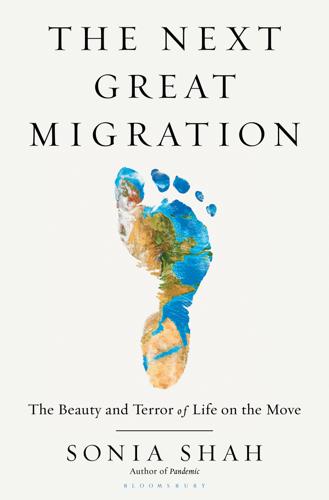
The Next Great Migration: The Beauty and Terror of Life on the Move
by
Sonia Shah
They compared the specimens they found to illustrations in expensive, hand-colored and copper-engraved volumes to figure out if anyone had encountered them before, and if so, what they’d called them. But with Linnaeus’s taxonomy, they didn’t need that anymore. “Take a bird or a lizard or a flower28 from Patagonia or the South Seas, perhaps one that had had a local name for centuries, rechristen it with a Latin binomial, and presto!” writes the essayist Anne Fadiman. It became a tiny European colony. Linnaean taxonomy was a “form of mental colonising and empire-building,” a potent tool in Europe’s campaigns of conquest, writes the historian Richard Holmes. Any living creature anywhere could be fit into its order. Luminaries and royal patrons29 from across the continent called on the celebrated naturalist, bearing gifts of exotic animals to add to his menagerie, which included cockatoos, peacocks, a cassowary, four kinds of parrots, an orangutan, monkeys, an agouti, and a raccoon.
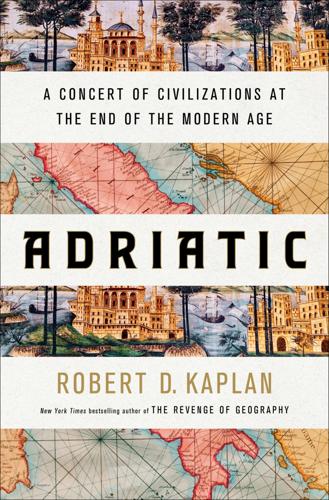
Adriatic: A Concert of Civilizations at the End of the Modern Age
by
Robert D. Kaplan
Published 11 Apr 2022
But the more fundamental issue is this: Can one imagine a universal civilization that is at the same time richly rooted in tradition? Yes, one can, if, to repeat, one thinks as Pierre Manent does, in terms of cities and empires rather than exclusively in terms of states.[21] Cities and city-states throughout history have been multicultural, just as empires in the long historical sense (as opposed to strictly the European colonial sense) have been cosmopolitan and multinational. And while cities and empires are political creations rooted in antiquity, states have a less classic vintage, and are associated more with modernity. Postmodernity does not necessarily mean the passing of states. But the fact is, across Eurasia and particularly in the greater Middle East, the state model is weakening.
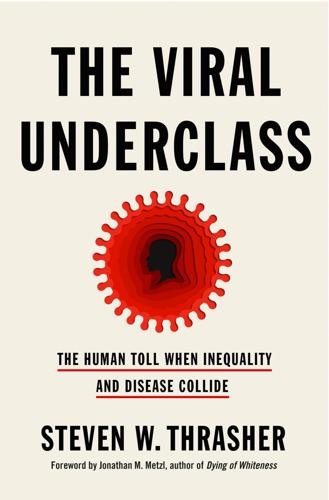
The Viral Underclass: The Human Toll When Inequality and Disease Collide
by
Steven W. Thrasher
Published 1 Aug 2022
no effect on its transmission: Dini Harsono et al., “Criminalization of HIV Exposure: A Review of Empirical Studies in the United States,” AIDS and Behavior 21 (September 7, 2016): 27–50. 5: From Athens to Appalachia health spending by a third: Roberto Perotti, “The Human Side of Austerity: Health Spending and Outcomes During the Greek Crisis,” National Bureau of Economic Research, working paper 24909 (August 2018): E62. Migration was not the cause of viral increase, but the expanded size of the viral underclass due to the legacy of European colonialism coinciding with European sanctioned austerity was a disaster. Suicides increased: Niki Kitsantonis, “Greece, 10 Years into Economic Crisis, Counts the Cost to Mental Health,” New York Times, February 3, 2019, https://www.nytimes.com/2019/02/03/world/europe/greece-economy-mental-health.html.

Tripping on Utopia: Margaret Mead, the Cold War, and the Troubled Birth of Psychedelic Science
by
Benjamin Breen
Published 16 Jan 2024
Mead and Fortune traveled via a motorized canoe laden with room-sized mosquito nets, crates of ammunition for hunting birds, precious packets of antimalarial pills, thousands of cigarettes and matches (these being by far the most important currency for bartering), and many months’ supply of notepaper, typewriter ribbons, Leica film, India ink, and colored pencils. They sought out the most remote and unstudied societies they could find—the so-called unpacified peoples at the farthest periphery of the European colonial empires. Though they were steadfastly opposed to imperialism, Mead and Fortune carried some mental baggage with them, too. They imagined their work in wholly benevolent terms: a race to record cultural riches before European colonizers reduced unfathomably complex social orders into a monoculture of plantation laborers, gold prospectors, and mining company representatives.
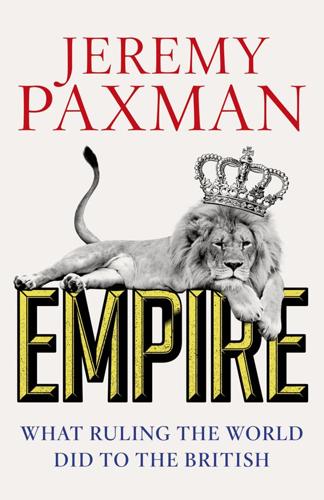
Empire: What Ruling the World Did to the British
by
Jeremy Paxman
Published 6 Oct 2011
The anxiety which racked the Church on discovering that, in Darwin’s resonant sentence, ‘Man still bears in his bodily frame the indelible stamp of his lowly origin’ did not shake the conviction of superiority very much. Indeed, in The Descent of Man, Darwin appeared to offer an evolutionary justification for European colonialism. Starting from the premise that ‘the western nations of Europe … now so immeasurably surpass their former savage progenitors, [that they] stand at the summit of civilization’, he determined that ‘the civilized races of man will almost certainly exterminate, and replace the savage races through the world’.
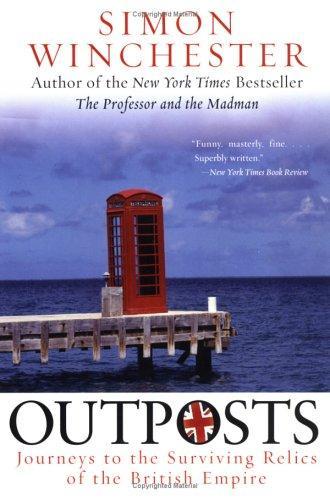
Outposts: Journeys to the Surviving Relics of the British Empire
by
Simon Winchester
Published 31 Dec 1985
She had Heligoland in the North Sea, and from Port Mahon in Minorca the Royal Navy ran the Balearic Islands. There were the Ionian Islands, and Malta, of course, and Cyprus (though hardly a European possession). And the Channel Islands and the Isle of Man, which are not colonies, but direct dependencies of the Crown and lie outside the United Kingdom. Gibraltar is the only unquestioned European colony that remains, and is definitely the only British Imperial possession that there ever has been on the continent of Europe itself.) It took the best part of a week to climb up from the valley of the Guadalquivir to the limestone mountain chain of which Gibraltar was an outlier. I had to pass through tuna-fishing villages, where I would sip ice-cold fino and discuss the price of albacore; I stopped for half a day to inspect the great lighthouse at Cape Trafalgar—where it turned out that only one of a dozen Andalucians I questioned had ever heard of Nelson, or Villeneuve, most Spaniards evidently preferring to linger on Spain’s victories rather than her defeats.
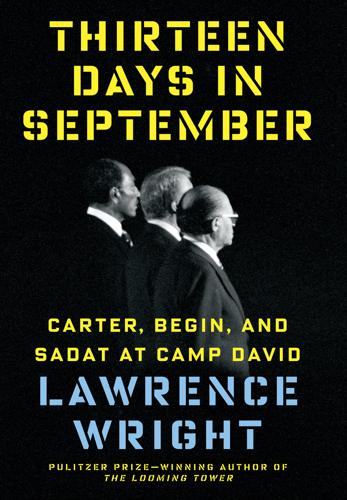
Thirteen Days in September: Carter, Begin, and Sadat at Camp David
by
Lawrence Wright
Published 15 Sep 2014
“If we agreed that armed attack can properly achieve the purposes of the assailant, then I fear we will have turned back the clock of international order,” the president said in a nationally televised address. Ben-Gurion finally bowed to the pressure. The 1956 war, called the Suez Crisis in the West and the Tripartite Aggression in Egypt, stands as a tombstone for European colonialism. The unintended consequences for the aggressors were shattering. Both the British and the French governments fell within months of their ignominious departure from Egypt, when their countries were made to step back from long-standing roles as leading players on the world stage and merge into the chorus.
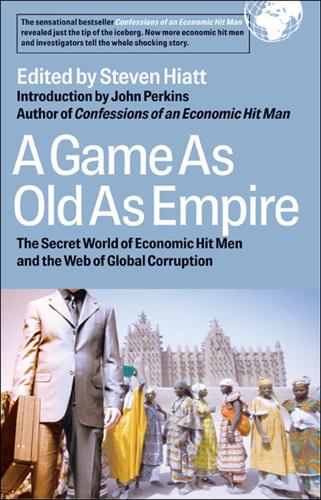
A Game as Old as Empire: The Secret World of Economic Hit Men and the Web of Global Corruption
by
Steven Hiatt; John Perkins
Published 1 Jan 2006
Moreover, the two strongest powers, the U.S. and the Soviet Union, seemed to stand on the anti-imperialist side. The U.S. had long pursued an “open door” policy advocating formal independence for developing countries. The Soviet Union had denounced imperialism since its birth in 1917, and the communist movement it led had wide appeal in parts of the colonial world as a result. Nevertheless, the European colonial powers tried to hang on to their possessions as long as they could. Britain did finally “quit India” in 1947, but fought insurgents in Kenya, Cyprus, and Malaya before granting those countries independence. France fought losing, divisive wars in Indochina and Algeria to retain its bit of imperial gloire.
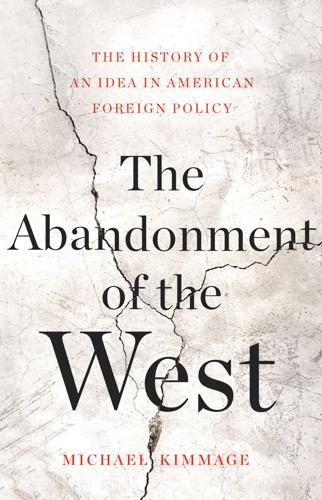
The Abandonment of the West
by
Michael Kimmage
Published 21 Apr 2020
In many cases, as Said of course knew, this white middle-class Westerner was the person reading Orientalism.26 Had Orientalism been only a book about Europe, its impact would have been mostly retrospective and scholarly. Said would have added a literary dimension to the enormous scholarship on empire building. In the mid-1970s, when Said was putting Orientalism together, France and Britain had dropped back from the imperial scene, their major colonies long gone. Only a handful of formally European colonies still remained. What gave Orientalism its savor and its political punch was Said’s inclusion of the United States with France and Britain: “since World War II America has dominated the Orient, and approached it as France and Britain once did,” Said writes. The American separation from Europe, the Wilsonian attempt to democratize European foreign policy, and the Cold War contrasts of Western liberty versus Soviet tyranny—Truman’s contrasts, Eisenhower’s contrasts, Kennedy’s contrasts—were a nonsense version of modern history to Said.
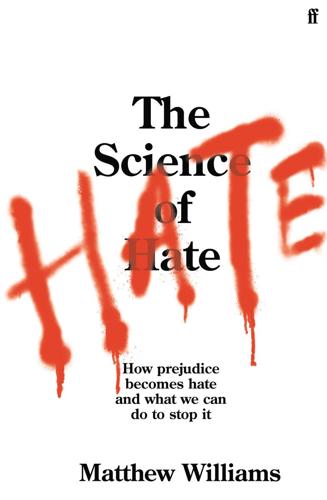
The Science of Hate: How Prejudice Becomes Hate and What We Can Do to Stop It
by
Matthew Williams
Published 23 Mar 2021
Human variation is real, but it does not map neatly onto the conventional and everyday descriptions of race. Most of the academic research and policy literature uses the term ‘race’ to refer to groups within populations that exhibit physical differences in skin colour. While this is a widely accepted practice it is not scientific and is a remnant of European colonial expansion and empire building. However, this does not mean race as a social category is unimportant, as it has become imbued with meaning through the interaction of humans classified into races. In this book I borrow the use of the term race from the research and policy work that I include, but I do not support its use in a scientific way that attempts to ascribe inherent differences between populations
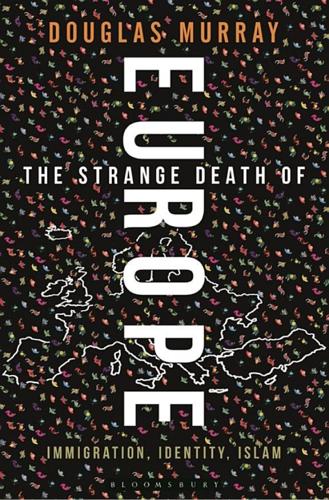
The Strange Death of Europe: Immigration, Identity, Islam
by
Douglas Murray
Published 3 May 2017
In recent decades the same blackmail from history that has afflicted modern Europe has also been assumed by a group of noticeably homogeneous nations. What is striking is that all of the other countries expected to suffer for the same sins are countries for whose creation Europe is blamed, so that the impression appears to be that the stain of the Europeans criss-crosses the whole world. Whereas for contemporary Europeans, colonialism is just one of our middle-ranking, midway sins, for Australians colonialism has become the nation’s founding, original sin. And not because like European nations it stands accused of having plundered other countries in its search for wealth, but because it stands accused of plundering itself – of being a colonialist project still sitting on its colony.
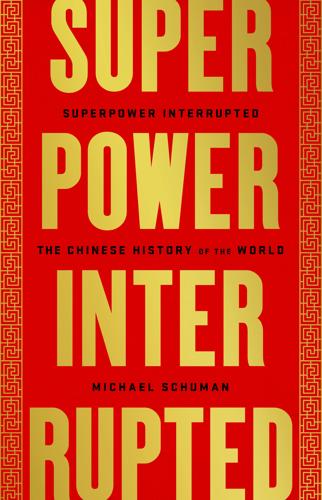
Superpower Interrupted: The Chinese History of the World
by
Michael Schuman
Published 8 Jun 2020
Everywhere, traditional empires and proud ancient civilizations were becoming slaves of the Westerners. India, that other grand Asian civilization, the birthplace of beloved Buddhism, had succumbed to the British. The Ottoman Empire based in Istanbul, once the terror of Europe and the Middle East, was on the verge of dismantlement, too. Africa was being chopped up into a kaleidoscope of European colonies. The Russians had consumed the once glittering states of Central Asia. The British, French, and Dutch had gobbled up the former vassal states in Southeast Asia. Why wouldn’t China be next? “China is in imminent peril,” wrote Confucian scholar Kang Youwei in 1895, in the wake of the catastrophic defeat to Japan.
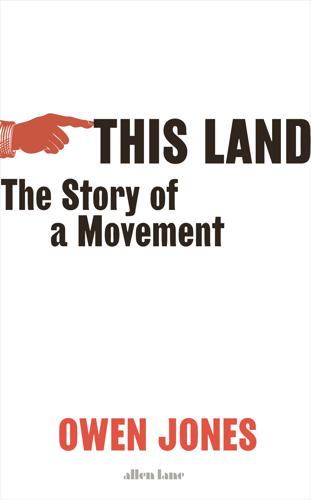
This Land: The Struggle for the Left
by
Owen Jones
Published 23 Sep 2020
By the 1990s, Israel, founded in part by Holocaust survivors, was increasingly regarded as a brutally oppressive superpower, striking in the militarization of its society and its chauvinistic nationalism; as Israel fought Palestinian intifadas (uprisings) with thousands of consequent deaths, and expanded illegal settlements in the West Bank, the left widely saw Israel as the last remaining European colonial-type enterprise. Because Israel received generous military and diplomatic support from Western governments, the liberation of Palestine from its subjugation became one of the great foreign policy causes of the left. Yet while the brutality of Israel’s occupation of Palestinian lands is undeniable, the situation was – and is – fundamentally different from those projects of European settler-colonialism.
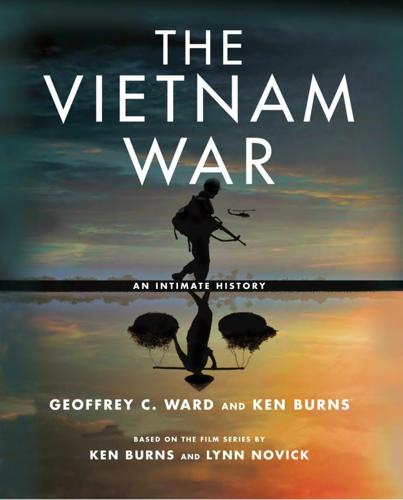
The Vietnam War: An Intimate History
by
Geoffrey C. Ward
and
Ken Burns
Published 4 Sep 2017
It is impossible to know precisely where he went and what he did over much of that time. In France, he applied for a scholarship to the Colonial School that prepared civil servants to run the empire, hoping, he wrote, that the training he received might benefit his “compatriots.” His application was turned down. He returned to the sea, and witnessed the impact of European colonialism in the African and Asian ports visited by the ships on which he served. He seems to have lived in London for two years, studying English and working at the Carlton Hotel as an assistant to the celebrated chef Auguste Escoffier. He also evidently visited the United States twice, working as a pastry chef at the Parker House in Boston, cooking for a wealthy Brooklyn family, and visiting Harlem to hear Marcus Garvey denounce racism, before turning up in Paris for the peace talks.
…
of 1964, 2.1, 3.1, 3.2, 3.3, 4.1 of 1968, 6.1, 6.2, 6.3, 7.1, 7.2, 7.3, 7.4, 7.5, 7.6, 7.7, 7.8, 7.9, 7.10, 7.11, 8.1 of 1970 of 1972, 9.1, 9.2, 9.3, 9.4, 9.5, 9.1 Eller, Frank P., 3.1, 3.2 Elliott, David, 4.1, 6.1 Elliott, Duong Van Mai, 4.1, 4.2, 4.3, 6.1, 7.1, 7.2, 7.3, 8.1, 9.1, 10.1, 10.2, 10.3, 10.4, 10.5, epl.1 Ellsberg, Daniel, 9.1, 9.2, 9.1, 9.2 Emerson, Henry “Hank,” 4.1, 4.2 “End the Draft” week, 5.1, 5.2 England, see Great Britain English, Lowell Enhance program Episcopal Peace Fellowship Escoffer, Auguste Espionage Act (1917) Europe, 1.1, 1.2, 1.3, 1.4, 4.1, 7.1 European colonialism Evanston, Ill. Ewell, Julian J., 7.1, 7.2, 7.3, 7.4, 7.5, 8.1 Executive Office Building, Washington, D.C., 8.1, 8.2, 9.1 Faas, Horst, 4.1, 8.1, 9.1 Face the Nation Fallows, James Farina, Mimi Fassnacht, Robert Federal Bureau of Investigation (FBI), 3.1, 4.1, 5.1, 7.1, 7.2, 7.3, 7.4, 8.1, 8.2, 9.1, 9.1 Felt, Harry D.
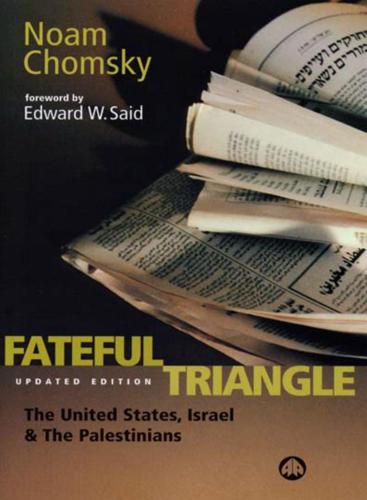
Fateful Triangle: The United States, Israel, and the Palestinians (Updated Edition) (South End Press Classics Series)
by
Noam Chomsky
Published 1 Apr 1999
The head of Israel’s Northern Command, General Avigdor Ben Gal, described the Arabs of Galilee (within Israel proper) as “a cancer in Israel’s body” an attitude echoed in references to the “underpopulated Galilee” (Irving Howe), meaning that the Galilee has too few Jews (but too many Arab citizens, Israel fears). Others fulminate over the Arab “crazed in the distinctive ways of his culture” and committed to “pointless” though “momentarily gratifying” acts of “bloodlust” (New Republic editor Martin Peretz) .23 These persistent attitudes, familiar throughout the history of European colonialism, help us understand what is happening today The Israeli editor Yigal Schwartz, on completing his tour as a reserve officer in the West Bank, described the prevailing attitude among the military Classics in Politics: The Fateful Triangle Noam Chomsky The Palestinian Uprising 806 as based on the assumption that they are dealing with “primitive people, Indians, whom it is our duty to educate and discipline,” teaching them that “they are children and we are parents who educate them,” with the rod if necessary.
…
Visiting Gaza shortly before the uprising, Prime Minister Shamir called city officials and notables to meet him, left them waiting outdoors before a locked door, and when they were finally allowed their say, abruptly informed them that Israel would never leave Gaza and departed; “humiliation from this source has a definite political significance,” Hareven adds, and did not pass unnoticed among people who have learned that “the Jews understand nothing but force.”38 These are the conditions of everyday life, more telling than the corpses and broken bones. The similarity to the deep South in its worst days is plain enough. The phenomenon is typical of European colonialism, for example George Washington, who referred to the “merciless Indian savages” of the Declaration of Independence as “beasts of prey, tho’ they differ in shape,” who must be treated accordingly39 Today, extraordinary comments pass virtually unnoticed. I will mention only one example, because of its relevance to the elite media here as well.
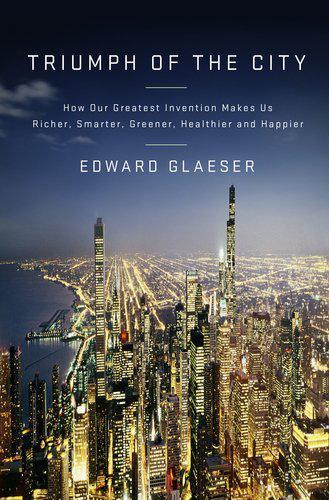
Triumph of the City: How Our Greatest Invention Makes Us Richer, Smarter, Greener, Healthier, and Happier
by
Edward L. Glaeser
Published 1 Jan 2011
When American ships showed up in 1853, Japan agreed to open itself to trade with outsiders, but still more or less on its own terms, and within forty years, Japan had thoroughly mastered Western ways and become a formidable power on the world stage. Between 1894 and 1910, the Japanese beat up the Chinese, just like a European colonial power, defeated Russia, and conquered Korea. By the middle of the twentieth century, the Japanese were building ships and airplanes as good as, and sometimes better than, their American counterparts. How could the Japanese catch up to the West so fast? One answer to this question lies in a city: Nagasaki.

Culture and Prosperity: The Truth About Markets - Why Some Nations Are Rich but Most Remain Poor
by
John Kay
Published 24 May 2004
Culture and Prosperity {59} Colonies such as India or Indonesia in which immigrants were a minority are not rich states-not even those colonies where settlements were large, as in South Africa, Kenya, or the West Indies. The countries of settlement not only imported technology and institutions from Western Europe: they also imported people familiar with that technology and those institutions. In European colonies the native population was not encouraged-and often, until late stages of colonialism, not permitted-to assimilate and be assimilated by the imported culture. The transfer of technology and institutions was superficial and transitory. But even if the building blocks of the market economy were imported, these new countries had to solve one problem for themselves.

1946: The Making of the Modern World
by
Victor Sebestyen
Published 30 Sep 2014
For Indian leaders of both sides the British were the problem, not the solution. They did not want the British there. Nehru made the point plain: ‘I would rather have every village in India go up in flames than keep a single British soldier in India a moment longer than necessary,’ he said.10 European colonialism was no longer sustainable. And it effectively ended when the Union flag was lowered at the Vice-regal Lodge in Delhi. Chakravarti Rajagopalachari, who became Governor-General of India a year after the British left, said that if the British had not transferred power when they did ‘there could well have been no power to transfer.’11 28 ‘Half-Nun, Half-Whore’ On the evening of 16 August, some of the best-known authors in Russia were packed into the lecture hall of the Leningrad Writers’ Union, a beautiful building of classical simplicity just off Nevsky Prospekt, the city’s main thoroughfare.
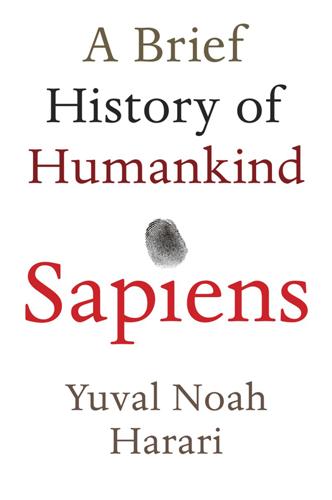
Sapiens: A Brief History of Humankind
by
Yuval Noah Harari
Published 1 Jan 2011
Countless other crimes and misdemeanours accompanied the growth of the modern economy in other parts of the planet. The nineteenth century brought no improvement in the ethics of capitalism. The Industrial Revolution that swept through Europe enriched the bankers and capital-owners, but condemned millions of workers to a life of abject poverty. In the European colonies things were even worse. In 1876, King Leopold II of Belgium set up a nongovernmental humanitarian organisation with the declared aim of exploring Central Africa and fighting the slave trade along the Congo River. It was also charged with improving conditions for the inhabitants of the region by building roads, schools and hospitals.
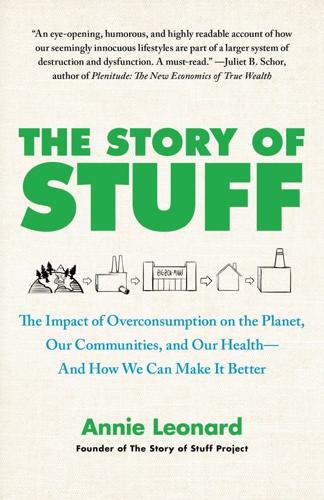
The Story of Stuff: The Impact of Overconsumption on the Planet, Our Communities, and Our Health-And How We Can Make It Better
by
Annie Leonard
Published 22 Feb 2011
The IMF was created to deal with financial imbalances between countries: its primary role was to keep the world’s currencies stable and exchangeable in order to support international trade and to provide emergency loans to any country whose economy was in such bad shape that it couldn’t participate in global trade. The World Bank was created specifically to loan money to the governments of countries devastated by World War II so they could rebuild their economies and rejoin global trade. Soon, the World Bank shifted its focus to countries and European colonies in Latin America, Africa, and Asia. The GATT was a complicated treaty set up to reduce national barriers to trade; in 1995 it was replaced by the international organization known as the World Trade Organization (WTO), which has even broader-reaching powers. Note that these are only the three largest of these organizations; there are dozens of additional multilateral banks, government agencies, and trade agreements that replicate the IMF/World Bank/WTO model in regional or sector-specific forms.104 Although some of the original intentions behind these institutions may have been good, their evolution over the past half century has had disastrous results for the great majority of people on the planet, and for the planet itself.

Stacy Mitchell
by
Big-Box Swindle The True Cost of Mega-Retailers
and
the Fight for America's Independent Businesses (2006)
When Wal-Mart employees in a small town in Quebec became the first to form a union at one of the company’s superstores, the chain retaliated by closing the store and laying oƒ all two hundred employees. This is not a recipe for broad prosperity. Rather, this book contends, the economic structure that mega-retailers are propagating represents a modern variation on the old European colonial system, which was designed not to build economically viable and self-reliant communities, but to extract their wealth and resources. Yet many cities eagerly usher in these corporate colonizers. Some envision a tax windfall, only to discover that these sprawling stores impose a significant burden on public infrastructure and services.
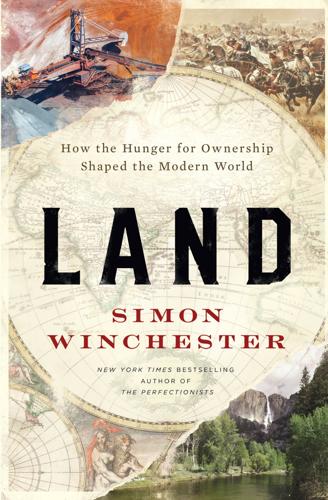
Land: How the Hunger for Ownership Shaped the Modern World
by
Simon Winchester
Published 19 Jan 2021
aboriginal people of Australia, 199–200 antiquity of, 200, 239, 244 bias against, 199 controlled burning by, 240–41, 241, 243, 244–45 Cook and, 235–39 Earth as their mother, 402–3 Guugu Yimithir group, 238 Gweagal family, 237, 237 as landowners, 235 as T.O.’s (Traditional Owners), 200, 239, 244 wisdom of, 235–45, 241 Accursius, Franciscus, 215 Adams, John, 139n Adams, John Quincy, 146 Afghanistan, 49n, 71 border (Durand Line), 81 Africa anti-imperial rebellions, 366 borders and countries created and mapped, 367–68 British and European colonies in, 98–99, 131–32, 363–66, 365 Bronze Age arable farmers, 40 claims of white settlers, 369 competing claims of tribes, 368 concept of landownership and, 369 confiscation of settlers’ lands, 370, 371, 371 country names changed, 368 English as lingua franca, 366 European partitioning of land, 365–66 Europeans leave, 367 missionaries in, 364 nation-building efforts, 368 poverty in, 372 restoration of land in, 366–73, 371 rule by indigenous people, 368 shared land, concept of, 403 trope defining British missionary behavior in, 98, 326 uncultivated land in, 372 See also specific countries, places agriculture Agricultural Revolution, 174 ancient, in China, 44 animal-drawn plough, 44 Bronze Age, 40, 42–43, 46, 172 caschroms (digging sticks), 42–43, 43 demarcation of land and, 42, 45–46 enclosures and, 44, 46, 173 history of, 40–42 Iron Age, iron plough, 43–44 plough’s moldboard, 44 strip lynchets, 45, 45 tools, 42–43 Akhmatova, Anna, 285 Albania-Montenegro border, 75 Aldridge, George, 245 Alexander I, Tsar, 50, 56, 58–59 Algic or Algonquian languages, 16, 16n Algonquin people, 136n Alsop, Joseph, 290 American chestnut trees, 12 American Geographical Society, 72 American Public Land Survey System, 152 American Revolution, 24, 136 Amherst, Jeffery, 137, 137n Anak Krakatau island, 104–5, 105n Andamanese Islanders, 243–44 Andersonstown, Northern Ireland, 265, 266 Andorra-France border, 75–76 Angle Inlet, Minn., 91–92 animals, endangered species on Anak Krakatau, 105 Bolson tortoise, 204 Korean DMZ and, 225–27, 226 Plains bison, 204–6, 206 in Richmond, Bushy, and Greenwich Parks, London, 249 wilding, abandoned farms and, 232–34, 232n wilding and Knepp estate, England, 230–32, 231 wilding and Oostvaardersplassen, Netherlands, 228–29, 234 Anne, Queen of England, 34 Apache people, 150n, 203, 261 Appalachians, 11, 135, 136, 138, 152 Aramaki, Akira, 301–8, 311–16, 318–19 as birthright citizen (Nisei), land buying and, 306–7 family and heritage, 303–5, 313 incarceration and release from Minidoka camp, 301–3 land of, Bellevue, Wash., 302, 303, 306–7, 315–16, 318, 318n obituary of, 319 Aramaki, Hanako Tanako, 313, 319 Aramaki, Hikotara, 303–6, 311 Aramaki, Towa Tasaki, 306, 311, 313 Arapaho people, 149, 261 Argentina’s borders, 75, 77 Aristotle, 53 Armitage, Simon, 225 Ascent of F6, The (Auden), 265 Ashanti people, 403 Asia ancient agriculture, 40, 44 boundaries and, 46 ocean expansion and land loss in, 400 Yellow River (Huang He), 40 Yellow River Valley, 46 Atchison, Topeka and Santa Fe railroad, 142, 151, 152 Atlantic (Winchester), 131 Atlantic Ocean, 10, 11, 99, 367n crossing, 130, 191 rising waters of, 398, 401 Auden, W.
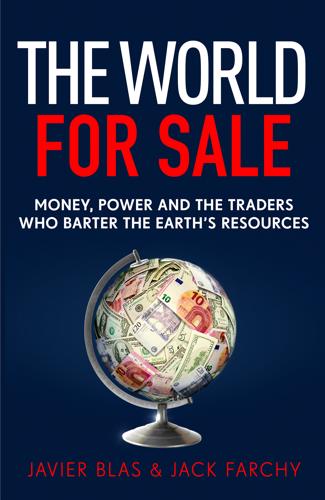
The World for Sale: Money, Power and the Traders Who Barter the Earth’s Resources
by
Javier Blas
and
Jack Farchy
Published 25 Feb 2021
It would be the foundation of much of the trading house’s wealth, but also the source of the darkest cloud over its future. Most African countries export commodities, and little else. 1 And that means Africa’s economic fortunes have risen and fallen with the commodity markets. The 1950s and 1960s, when many African nations won independence from European colonial powers, were a golden era for the continent. After the Second World War, Europe and Asia needed commodities for the reconstruction. Traders travelled to Africa for copper and other metals. But soon Africa’s reliance on natural resources became a liability. Low commodity prices, mismanagement, corruption, wars and the legacy of colonialism hampered the continent’s development throughout much of the 1980s and 1990s.
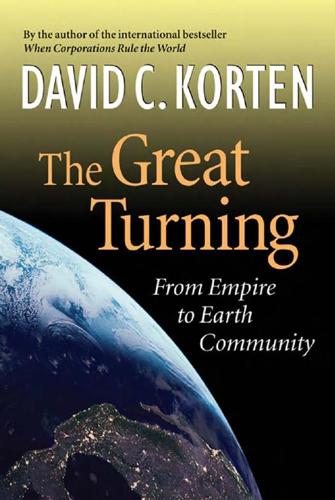
The Great Turning: From Empire to Earth Community
by
David C. Korten
Published 1 Jan 2001
The Opportunity 85 Such communities and alliances formed in significant numbers during the latter half of the twentieth century to bring forth great social movements for national independence, human and civil rights, women’s rights, peace, environmental protection, and economic justice. During a period of only fifty years these movements dismantled the prevailing system of European colonial empires, codified human rights in international law, rewrote the legal codes of nations, and redefined the prevailing cultural codes regarding relationships among men and women, races, nations, and species. These alliances are now linking into the most powerful and truly global social movement in the whole of the human experience.
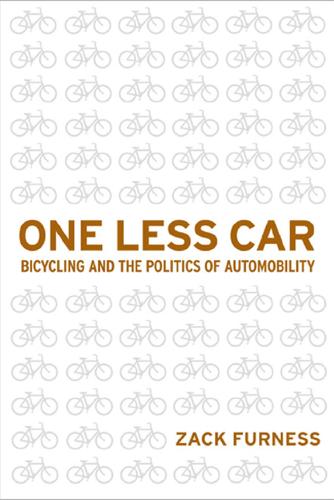
One Less Car: Bicycling and the Politics of Automobility
by
Zack Furness
and
Zachary Mooradian Furness
Published 28 Mar 2010
The logic of the “hand up” paradigm presumes that people universally gain a sense of self-worth through the act of consumption or through the processes by which one becomes a consumer in the first place, namely, one’s (forced) participation in a market economy. and while proclaiming the moral and ontological benefits of earning one’s keep may be a commonly held premise in so-called Western societies, it is highly problematic when one considers, for example, the manner in which it was historically exported onto, or more accurately invaded, the african continent. That is to say, the project of European colonialism was instrumental in teaching these socioeconomic lessons through a combination of brutal forced labor practices, genocidal campaigns, and propaganda efforts aimed at emphasizing both the material and spiritual rewards of market-based labor. One of the commodities enlisted in this dual process of cultural pedagogy and capitalist evangelism was, ironically enough, the bicycle.

Cities Under Siege: The New Military Urbanism
by
Stephen Graham
Published 30 Oct 2009
Such a process, he argues, is working to gradually unravel a ‘classic and long-lasting distinction between an outer face and an inner face of the colonial condition.’6 It is important to stress, then, that the resurgence of explicitly colonial strategies and techniques amongst nation-states such as the US, UK and Israel in the contemporary ‘post-colonial’ period7 involves not just the deployment of the techniques of the new military urbanism in foreign war-zones but their diffusion and imitation through the securitization of Western urban life. As in the nineteenth century, when European colonial nations imported fingerprinting, panoptic prisons and Haussmannian boulevard-building through neighbourhoods of insurrection to domestic cities after first experimenting with them on colonized frontiers, colonial techniques today operate through what Michel Foucault termed ‘boomerang effects.’8 ‘It should never be forgotten’, Foucault wrote, that while colonization, with its techniques and its political and juridical weapons, obviously transported European models to other continents, it also had a considerable boomerang effect on the mechanisms of power in the West, and on the apparatuses, institutions, and techniques of power.
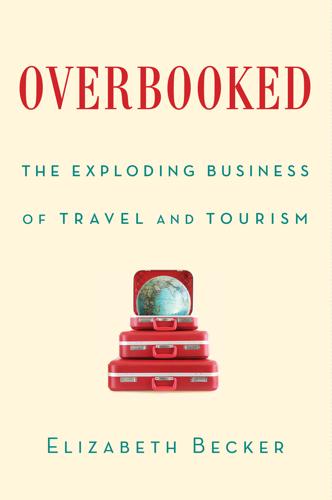
Overbooked: The Exploding Business of Travel and Tourism
by
Elizabeth Becker
Published 16 Apr 2013
An agreement reached by the nations with ties to Antarctica allows only 100 tourists on the shore at any time and completely prohibits all cruise ships with more than 500 passengers from entering Antarctica’s waters. But Ecuador seems of two minds about tourist restrictions. At the same time, the country is planning to build a new airport to welcome more visitors and boost the $500 million it earns annually from tourists. • • • Since the days of high-riding European colonials, tourism in Africa has been disparaged as an industry that caters to white foreigners who look down on black Africans as “exotic” natives at best. That cultural and racial chasm has been chronicled in numerous anthropological studies. In his description of Maasai dancing staged for tourists in Kenya, the scholar Edward M.
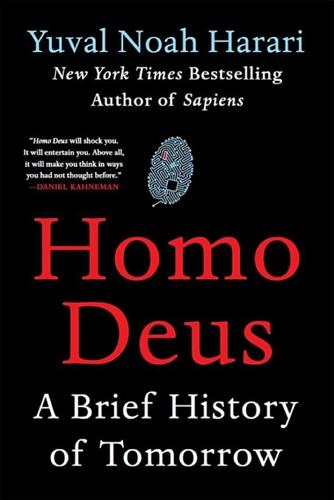
Homo Deus: A Brief History of Tomorrow
by
Yuval Noah Harari
Published 1 Mar 2015
When the Europeans penetrated the African interior, armed with the agreed-upon map, they discovered that many of the borders drawn in Berlin hardly did justice to the geographic, economic and ethnic reality of Africa. However, to avoid renewed clashes, the invaders stuck to their agreements, and these imaginary lines became the actual borders of European colonies. During the second half of the twentieth century, as the European empires disintegrated and the colonies gained their independence, the new countries accepted the colonial borders, fearing that the alternative would be endless wars and conflicts. Many of the difficulties faced by present-day African countries stem from the fact that their borders make little sense.
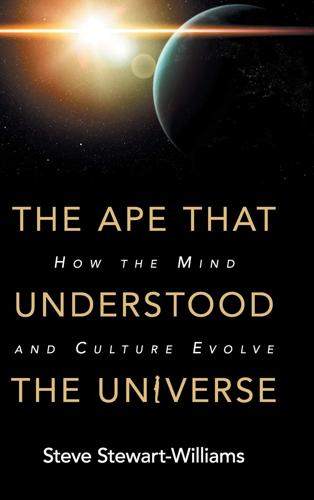
The Ape That Understood the Universe: How the Mind and Culture Evolve
by
Steve Stewart-Williams
Published 12 Sep 2018
To start with, any meme that increases its bearer’s longevity – any food preparation technique that eliminates toxins, for instance – stands a very good chance of spreading, if for no other reason than that it has more time to get copied by others. The flipside of this coin is that any meme that shortens its bearer’s life simultaneously curtails its chances of spreading, because people don’t generally copy the dead (or didn’t, at any rate, before the invention of TV).77 Here’s an example. During the heyday of European colonialism, a number of indigenous groups came to the view that, if they had faith, the Europeans’ bullets couldn’t harm them. Needless to say, this meme had disastrous consequences. One group infected with the meme – the Mahdists of Sudan – lost 11,000 men in a single battle to the bullets of Kitchener’s army.
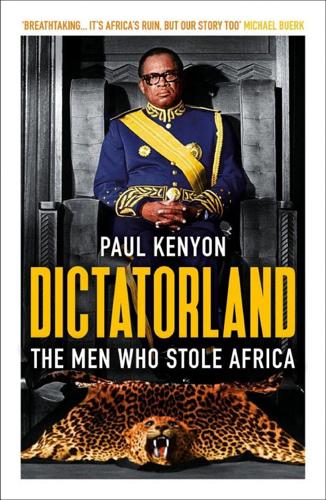
Dictatorland: The Men Who Stole Africa
by
Paul Kenyon
Published 1 Jan 2018
, sat a combative intellectual who had attained near-prophetic status among the leaders of independence movements across the continent. The previous year, on 6 March 1957, Kwame Nkrumah had wrestled the Gold Coast from the hands of the British to become the first prime minister of the newly named Republic of Ghana, one of the earliest of the former European colonies to achieve independence. His struggle had been a nonviolent, attritional campaign, punctuated by spells in prison during which his popularity had grown. His success made Ghana a blueprint for others. Delegates gathered for the first All-African Peoples’ Conference, to exchange ideas about defeating stubborn colonial regimes.
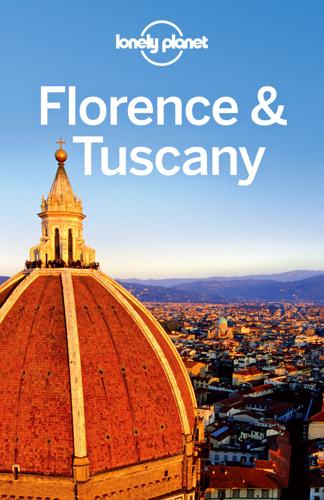
Florence & Tuscany
by
Lonely Planet
Strikes were held across the country to protest working conditions, and their brutal suppression gave rise to a new Socialist Party in 1881. The new Italian government’s money-making scheme to establish itself as a colonial power in Ethiopia and Eritrea proved a costly failure: 17,000 Italian soldiers were lost near Adowa in 1896, in what was the worst defeat of any European colonial power in Africa. When grain prices were raised in 1898, many impoverished Italians could no longer afford to buy food, and riots broke out. Rural workers unionised, and when a strike was called in 1902, 200,000 rural labourers came out en masse. Finally Italian politicians began to take the hint and initiated some reforms.
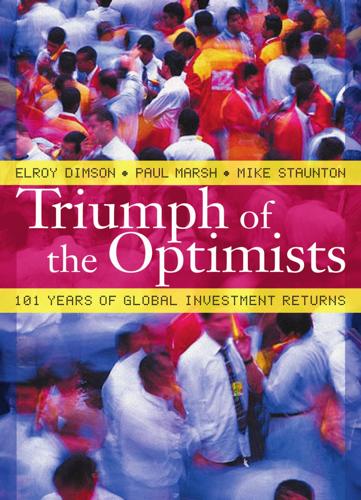
Triumph of the Optimists: 101 Years of Global Investment Returns
by
Elroy Dimson
,
Paul Marsh
and
Mike Staunton
Published 3 Feb 2002
Table 2-3 shows that, mostly, the exchanges founded during the nineteenth century were set up either in Europe, or by Europeans abroad. Of the non-European exchanges that pre-date 1900, Canada, South Africa, Hong Kong, Australia, New Zealand, India, and Sri Lanka were all part of the British Empire, while Egypt was effectively a British protectorate. The exceptions to the European/colonial rule are the United States, Japan, Turkey, and the five Latin American markets, Mexico, Brazil, Argentina, Chile, and Venezuela. The important issue that Table 2-3 raises is the extent to which the sixteen countries covered in this book and shown in bold typeface were representative of the world’s stock markets at the start of our research period in 1900.
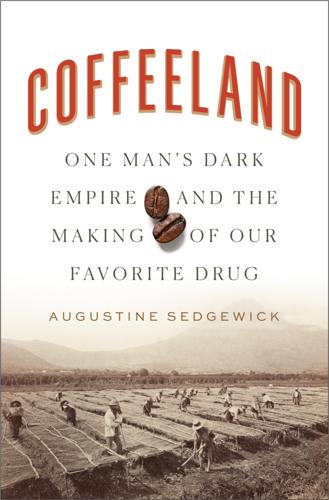
Coffeeland: One Man's Dark Empire and the Making of Our Favorite Drug
by
Augustine Sedgewick
Published 6 Apr 2020
The country’s new banks would make it cheaper to borrow money to buy land and develop plantations. Hill would not have failed to see it. Yet there were also reasons for caution. El Salvador was relatively late to coffee. By the 1880s Brazil already controlled more than half the world market, and coffee was also well established in European colonial possessions in South and Southeast Asia. In addition, the Berlin Conference of 1884–1885 divided up Africa into European export-processing zones that promised more colonial coffee production. Moreover, the nearby republics of Guatemala, Nicaragua, and Colombia had also gone in strongly for coffee during the Latin American export boom, joining established planters and exporters in countries including Costa Rica and Mexico.

Your Computer Is on Fire
by
Thomas S. Mullaney
,
Benjamin Peters
,
Mar Hicks
and
Kavita Philip
Published 9 Mar 2021
The concrete, rubber, metal, and electrical underpinnings of the internet are not a neutral substrate that enable human politics but are themselves a sedimented, multilayered historical trace of three centuries of geopolitics, as well as of the dynamic flows of people, plants, objects, and money around the world in the era of European colonial expansion. We need new narratives about the internet, if we are to extend its global infrastructure as well as diversify the knowledge that it hosts. But first we must examine the narratives we already inherit about the internet and about information technology. Many of us still think of information technology as a clean, technological space free from the messiness of human politics.

Grand Transitions: How the Modern World Was Made
by
Vaclav Smil
Published 2 Mar 2021
On the global level the errors around the most likely values are estimated at up to ±25% in 1700 and about ±18% by 1800—but there is little doubt about slow expansion of both of these fundamental land uses during the first 1,500 years of the Common Era, with croplands increasing from about 130 to about 230 million ha and pastures from about 110 to 220 million ha (Klein Goldewijk 2011). But between 1500 and 1800 cropland area had nearly doubled (230 to 420 million ha) with new farmland opened in Eastern Europe, in central and south China, and in European colonies in Latin America. At the same time, the extent of pastures had more than doubled (from 220 to 510 million ha) with the latter expansion taking place mostly in Asia. As the population growth accelerated, the past two centuries have seen unprecedented change in land use. Global cropland had doubled during the 19th century and the absolute growth of 430 million ha brought the total to 850 million ha, largely due to the westward expansion of North American agriculture on American Great Plains and Canadian Prairies and to similar openings of newly cultivated lands in Australia, Brazil, Argentina, Russian Empire (in Central Asia), and north China.
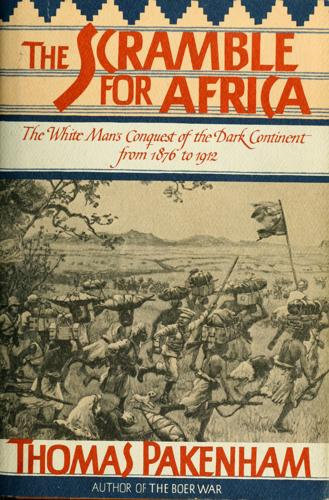
The scramble for Africa, 1876-1912
by
Thomas Pakenham
Published 19 Nov 1991
But they must co-operate with the authorities and resign themselves to the end of cattle-raiding and tribal warfare. Hendrik Witbooi, a Christian convert like Samuel Maherero, anxiously seized on the peace terms. But he was shrewd enough to see that in the long run the conflict between Europeans and Africans would be impossible to reconcile. To succeed, a European colony demanded a revolution in African society. The Germans wanted land for settlement, cattle for export, gold and diamonds for mining – and Africans to work for long hours for little or no money. Neither Witboois nor Herero shared this vision. Their fathers had been nomads, worshipping their ancestors, living by cattle and the gun.
…
There was polite clapping in the stadium from 35,000 Africans as the last British governor, Lord Soames, watched the Union Jack slither down the flagpole to be replaced by the red, black, green and gold flag of Zimbabwe, a new African nation. After ninety years, Rhodesia was free – or rather Rhodesia was dead, the land which Rhodes and his men had grabbed from Lobengula. Long live Zimbabwe, the forty-third member of the British Commonwealth, and the forty-sixth European colony in Africa to win its freedom. As a blue spotlight followed the new flag up to the top of the flagpole and a twenty-one-gun salute bombarded the veld, delight became delirium. (Nearby I saw some white Rhodesians in the VIP enclosure weep openly into their handkerchiefs, but it was only the police giving them, inadvertently, a dose of tear gas.)
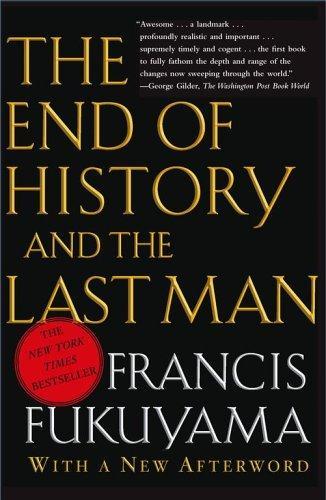
The end of history and the last man
by
Francis Fukuyama
Published 28 Feb 2006
Under the slogan “Rich Country, Strong Army,” the new leadership of Japan replaced old temple schools with a system of compulsory education administered by the state, recruited a mass peasant army in place of the samurai warriors, and established national taxation, banking, and currency systems. The wholesale transformation of Japanese society brought about during the Meiji restoration and the re-centralization of the Japanese state was motivated by an urgent sense that Japan had to learn to absorb Western technology if it was not to lose its national independence to European colonialism, as China had done.6 In other cases, ignominious defeat in war has been the spur to the adoption of rationalizing social reform. The reforms of vom Stein, Scharnhorst, and Gneisenau in Prussia were motivated by a recognition that Napoleon had been able to defeat their country at Jena-Auerstadt so easily because of the backwardness of the Prussian state and its total alienation from society.
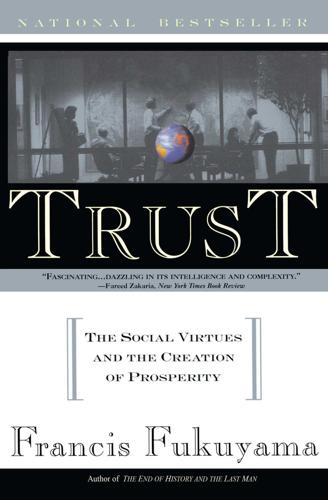
Trust: The Social Virtue and the Creation of Prosperity
by
Francis Fukuyama
Published 1 Jan 1995
As we have seen, national identity was undergirded by political Confucianism in traditional China, which laid down a series of obligations to a hierarchy of political authorities, culminating in the emperor. A negative, antiforeigner sense of national identity was forged in the late nineteenth and early twentieth centuries by China’s occupation, first by European colonial powers and then by Japan. In the twentieth century, the Chinese Communist party tried to put itself in place of the emperor and acquired an aura of nationalist legitimacy by virtue of its role in the struggle against the Japanese. But from dynastic times up through the communist victory in 1949, the primary loyalties of individual Chinese have been not to whatever political authorities were in power but to their families.
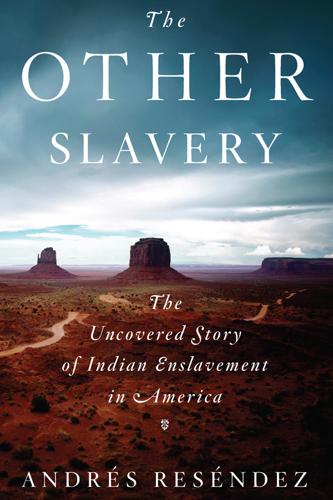
The Other Slavery: The Uncovered Story of Indian Enslavement in America
by
Andrés Reséndez
Published 11 Apr 2016
In the sixteenth and much of the seventeenth centuries, Europeans had maintained their technological superiority, which they had used to enslave tens of thousands of Native Americans. But once the genie was out of the bottle, their initial advantages vanished. By the mid- to late seventeenth century, the Spaniards were able to take fewer and fewer captives as Native Americans rose to the challenge of European colonialism. Some Indian societies negotiated accommodations with the newcomers. Others fled to inaccessible areas. And yet others transformed themselves into powerful forces by taking advantage of the very technologies and markets created by Europeans. All of them became active participants in the other slavery, thus making the system harder to control than ever.
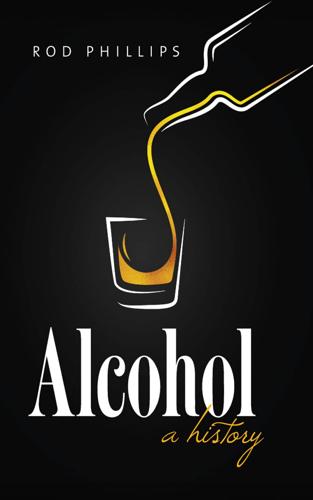
Alcohol: A History
by
Rod Phillips
Published 14 Oct 2014
The big loophole, of course, was that each government could decide which distilled beverages were trade spirits. The treaty proved largely unworkable because of this, and in practice it made little difference to the availability of alcohol in the colonies. In the late nineteenth and early twentieth centuries, the European colonies displayed a range of alcohol policies and patterns of consumption that was as varied as in Europe itself. But the policies were rarely simple echoes of the policies adopted in Europe. There was a continuous expression of concern for the effects of alcohol on indigenous people and their culture, from missionaries on the ground, from temperance organizations at home, and from some colonial administrators.
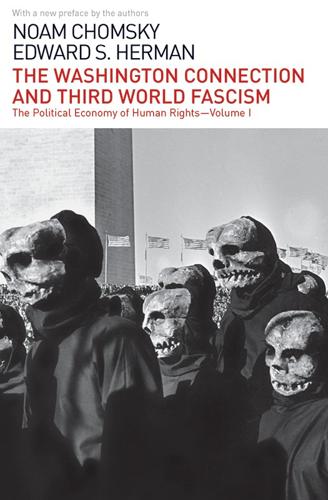
The Washington Connection and Third World Fascism
by
Noam Chomsky
Published 24 Oct 2014
The press conference in England was covered by the British and Western European media and led to a Parliamentary debate and Resolution. The Reuters dispatch describing these events was picked up in Latin America—even in Paraguay—but it was almost totally ignored in the U.S. One might imagine that it is the U.S. tradition of brutal maltreatment of “inconvenient natives” (merely a chapter in the sordid history of European colonial expansion), or standard racist unconcern, that keeps the media from taking allegations of genocide seriously in U.S. domains. While there is no doubt some truth in that explanation, it is only a partial one. Thus, the New York Times offers front-page coverage to threats posed to native hill tribesmen in postwar Indochina, fabricating the required evidence, as we shall see below (Volume II, chapter 4).
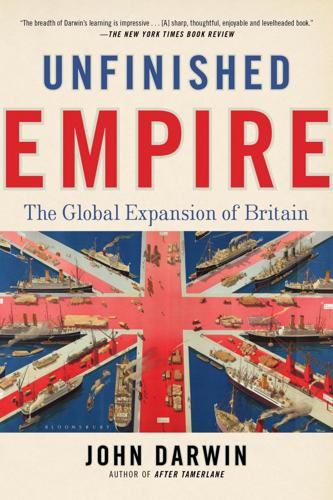
Unfinished Empire: The Global Expansion of Britain
by
John Darwin
Published 12 Feb 2013
In Said’s notorious description, a coterie of Western intellectuals was able to disparage the intellectual and cultural life of every part of the world beyond Europe as stagnant at best, retrogressive at worst; and the societies that sustained it as variously corrupt, despotic, cruel and effeminate – when not actually barbaric. European colonial regimes – the British foremost amongst them – he saw as zealous enforcers of this self-serving doctrine. By the relentless condemnation of indigenous cultures and the systematic promotion of forms of ‘colonial knowledge’ that favoured their power, they destroyed the cultural self-confidence of those they ruled over.
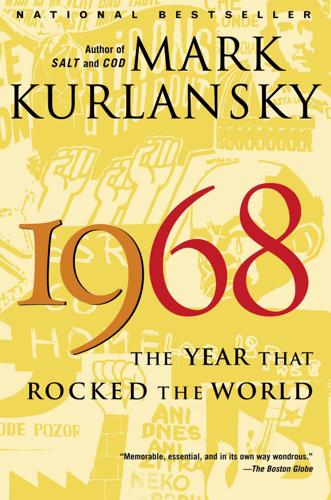
1968: The Year That Rocked the World
by
Mark Kurlansky
Published 30 Dec 2003
The British radical Tariq Ali, using language that was also heard in Berlin, Rome, and Paris, said of Tet, “A wave of joy and energy rebounds around the world and millions more are suddenly, exhilaratingly, ceasing to believe in the strength of their oppressor.” We all carry our own history on our backs. The American activists wanted a stop to the aggression. The Europeans wanted a defeat of colonialism—they wanted the United States to be crushed just as the European colonial powers had been. This was particularly apparent in the French insistence that the marines in Khe Sanh might suffer the same humiliating defeat as had the French in Dien Bien Phu. The constant articles in the French press asking, “Is Khe Sanh another Dien Bien Phu?” had a barely concealed wishfulness to them.
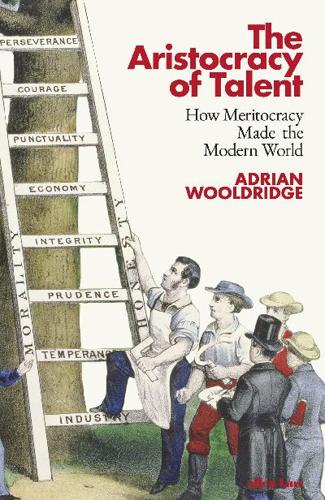
The Aristocracy of Talent: How Meritocracy Made the Modern World
by
Adrian Wooldridge
Published 2 Jun 2021
Thanks to the legacy of slavery and segregation, black Americans not only earn 60 per cent less than white Americans but have much less accumulated wealth. The case for affirmative action also applies to other groups that have been subjected to collective wrongs down the generations. These groups certainly include other ethnic minorities: the aboriginal populations of former European colonies are obvious examples. But it’s wrong to treat all ethnic groups as equally deserving of special breaks. Why should recent immigrants be given extra opportunities when their host countries have already improved their life chances by giving them citizenship? There is no collective wrong to be rectified here.
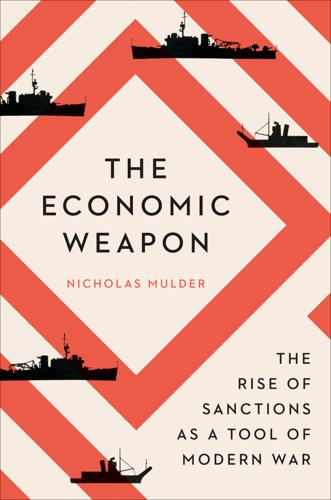
The Economic Weapon
by
Nicholas Mulder
Published 15 Mar 2021
Here an imperial prejudice clearly shaped British thinking about the economic weapon. When it had considered economic pressure against Chinese Nationalists in the 1920s, the ATB had few qualms about proposing cutting off food and fuel as part of a pacific blockade against the Chinese population.92 Yet in a confrontation with another European colonial power, merely closing a canal in breach of international treaties or stopping the private sale of water constituted a military act rather than an “economic” one. This double standard goes some way toward explaining why sanctions, which had worked against small Balkan states in the 1920s, ran into problems when their target was a fellow European empire engaged in colonial war.
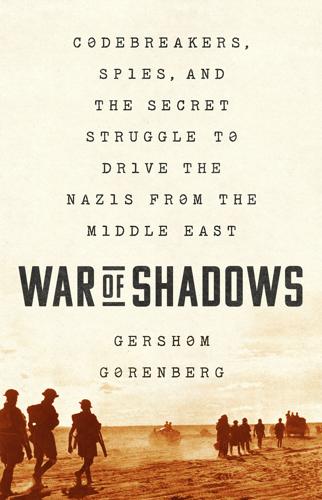
War of Shadows: Codebreakers, Spies, and the Secret Struggle to Drive the Nazis From the Middle East
by
Gershom Gorenberg
Published 19 Jan 2021
“The Japanese have proposed a tripartite declaration on the independence of India and Arabia,” Ciano wrote in his diary in mid-April. “Initial reactions in Berlin are unfavorable.”12 Japan’s strategy for overrunning the southern rim of Asia even while fighting America depended in part on stirring local national movements to rebel. Promising to drive out European colonial empires, Japan would build its own.13 So Husseini and Gailani saw the Hitler-Mussolini meeting in April 1942 as an opening to press their demand. “We request the Italian government to render all possible assistance to the Arab countries which are at present under the tyranny of Britain” and “to recognize the sovereign rights and independence of these countries,” Husseini and Gailani’s letter to Ciano said.

Rentier Capitalism: Who Owns the Economy, and Who Pays for It?
by
Brett Christophers
Published 17 Nov 2020
Figure 2.2 Asset location by value for major UK-based natural resource rentiers In this respect, there would appear to be something of an imperial flavour to UK natural-resource rentierism. Essentially, there is a constellation of giant capitalist firms headquartered in Europe extracting both natural resources and the rents they afford primarily from other parts of the world – regions that in many cases are in fact former European colonies, British or otherwise. I have already touched, for example, on BHP and Glencore’s operations in Chile and DRC. Shell’s long and controversial presence in Nigeria is also well known; Anglo American’s main country of business is South Africa; BP has substantial operations in Angola – the list goes on.
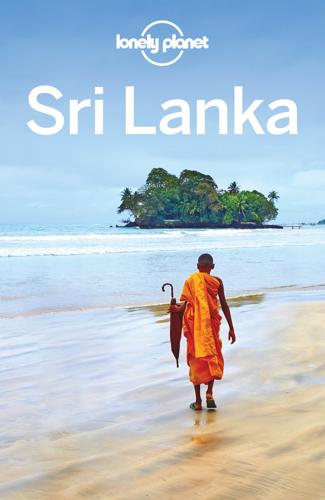
Lonely Planet Sri Lanka
by
Lonely Planet
The Road to Independence Growing Nationalism The dawning of the 20th century was an important time for the grassroots Sri Lankan nationalist movement. Towards the end of the 19th century, Buddhist and Hindu campaigns were established with the dual aim of making the faiths more contemporary in the wake of European colonialism, and defending traditional Sri Lankan culture against the impact of Christian missionaries. The logical progression was for these groups to demand greater Sri Lankan participation in government, and by 1910 they had secured the minor concession of allowing Sri Lankans to elect one lonely member to the Legislative Council.

Stranger Than Fiction: Lives of the Twentieth-Century Novel
by
Edwin Frank
Published 19 Nov 2024
In Artemisia, Banti answers the question by telling an untold story from history, recognizing that history is nothing if not a repository of untold stories and implicitly proposing that in telling them, one might open a way into the future. The end of the war has brought about the collapse of European colonialism—it was hardly as quick and tidy as that, yet Indian independence and the Chinese Revolution of 1949 mark, as we can see even more clearly now, a world-historical change—opening up whole worlds of stories to the novel, stories of what has been and stories of what might be. It opens up those stories to the novel, but it also opens a wider world to the novel.
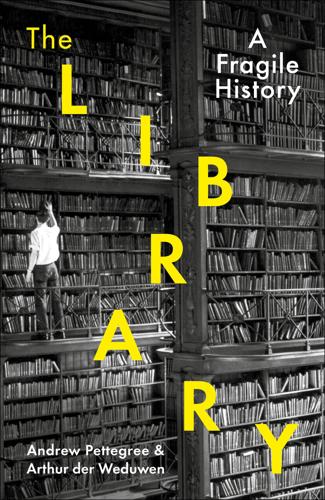
The Library: A Fragile History
by
Arthur Der Weduwen
and
Andrew Pettegree
Published 14 Oct 2021
These cultures generally stayed loyal to woodblock or manuscript bookmaking, though not before they had shared with the West one further remarkable gift: paper. Made from cloth rags, paper was a far cheaper medium than parchment, and exquisitely well suited for partnership with the printing press. But without the multiplying capacities of print, book collecting outside of Europe and European colonies remained largely an elite privilege. For the next three centuries the vast proliferation of libraries, public and private, serving ever-expanding circles of readership, remained predominantly a phenomenon of Europe and its global diaspora. This growth of book ownership was driven forward by a steady growth in literacy.

Europe: A History
by
Norman Davies
Published 1 Jan 1996
‘The Mayflower, carrying 120 puritan ‘Pilgrim Fathers’ and their families, landed in their Plymouth Colony on 11 (21) December 1620. The Massachusetts Bay Colony followed ten years later. Although religious refugees from England, they did not prove tolerant. The colony of Rhode Island (1636) was founded by dissenters expelled from Massachusetts. By that time the existence of a worldwide network of European colonies, and their seaborne lines of communication, was an established fact. The international sea trade multiplied by leaps and bounds. To the west, the transatlantic route was long dominated by Spain. By 1600, 200 ships a year entered Seville from the New World. In the peak decade of 1591–1600,19 million grams of gold and nearly 3 billion grams of silver came with them.
…
When an openly anti-Jewish politician, Karl Lueger, was elected Lord Mayor in 1897, Francis-Joseph refused to confirm. Relenting after two days’ reflection he accepted Lueger’s appointment, whilst awarding a medal to Chief Rabbi Güdemann. Africa, ‘the Dark Continent’, retained many of its geographical secrets until a surprisingly late date. European colonies had been planted on the northern coast from ancient times. But the source of the Nile, which watered the land of the Pharaohs, was not properly identified until 1888. Missionary explorers such as David Livingstone could still be lost in the 1870s for years on end. Contrary to European belief, Africa was devoid neither of organized government nor of ordered religion; and a huge variety of languages and cultures belied the idea that all Africans were Stone Age savages.
…
Through their colonial empires and trading companies, European powers dominated the globe. By 1945 almost all had been lost: the Europeans had fought each other to the point of utter exhaustion. European political power was greatly diminished; Europe’s military and economic power was overtaken; European colonial power was no longer sustainable. European culture lost its confidence; European prestige, and moral standing, all but evaporated. With one notable exception, every single European state that entered the fray in 1914 was destined to suffer military defeat and political annihilation by 1945. The one country to avoid total disaster was only able to survive by surrendering its political and financial independence.
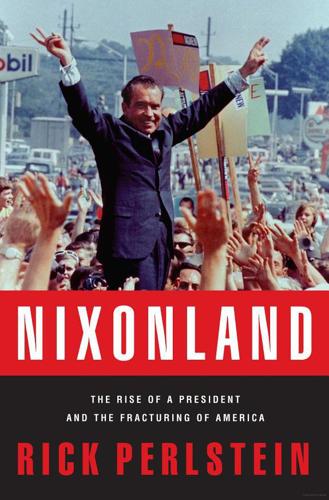
Nixonland: The Rise of a President and the Fracturing of America
by
Rick Perlstein
Published 1 Jan 2008
But South Vietnam was not quite a country at all. Vietnamese independence fighters had begun battling the French since practically the day they stopped fighting side by side in World War II. In 1954 they fought their colonial overlords to a final defeat at the stronghold of Dien Bien Phu. It was the first military loss for a European colonial power in three hundred years. Though these stalwarts, the Vietminh, now controlled four-fifths of the country’s territory, at the peace conference in Geneva they made a concession: they agreed to administer an armistice area half that size, demarcated at the seventeenth parallel (but for some last-minute haggling, it would have been the eighteenth).
…
The lead paragraph began, “A massive study of how the United States went to war in Indochina, conducted by the Pentagon three years ago, demonstrates that four administrations progressively developed a sense of commitment to a non-Communist Vietnam, a readiness to fight the North to protect the South, and an ultimate frustration with this effort—to a much greater extent than their public statements acknowledged at the time.” It was a polite way of saying Americans had been lied to for twenty-five years. The lies went back to Harry Truman, the article explained. Military aid to France had “directly involved” the United States in preserving a European colony; the Eisenhower administration played “a direct role in the ultimate breakdown in the Geneva settlement” and the cancellation of free elections scheduled for 1956. (President Nixon always said honoring Geneva was the reason we had to continue the war.) Kennedy—this in the Pentagon study’s words—transformed the “limited-risk gamble” he inherited into a “broad commitment.”
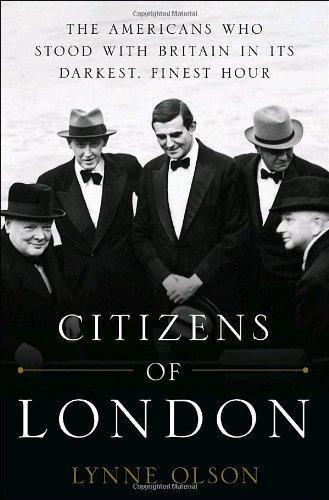
Citizens of London: The Americans Who Stood With Britain in Its Darkest, Finest Hour
by
Lynne Olson
Published 2 Feb 2010
Having emerged from World War II as the mightiest country in the world, the United States was serenely convinced of its own omnipotence. Initially, it had little interest in close collaboration or partnership with its former Western allies, whose empires and global influence were fast disintegrating. Indeed, within months after the war, the United States had begun to displace Britain, France, and the other European colonial powers as the main economic and military force in Southeast Asia, the Pacific region, the Mediterranean, and the Middle East. At the end of the conflict, the United States had briefly envisioned the Soviet Union as its main partner in dealing with postwar international problems. The onset of the Cold War, however, put an end to that notion, as well as to Roosevelt’s plan for a speedy American withdrawal from European affairs.
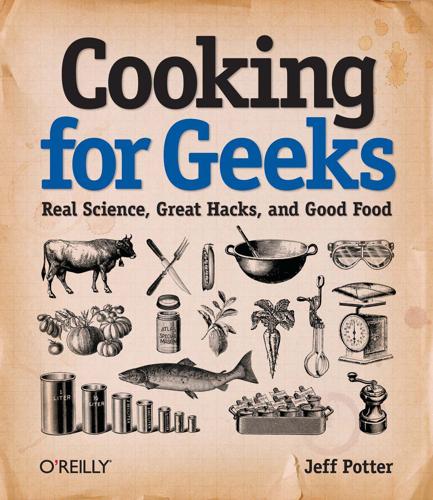
Cooking for Geeks
by
Jeff Potter
Published 2 Aug 2010
Fusion cooking often results from the mixing of two cultures via immigration. There are plenty of fusion-like dishes that have come out of cultures situated where two different regions meet or two different cultures mingle: Mediterranean (North African + Southern European), Southeast Asian (Asian + European colonialism), and Caribbean (African + Western European), for example. Israeli markets carry ingredients from the surrounding western regions of North Africa (especially Moroccan) and Eastern Europe; their cuisine is influenced by the traditions of both areas. Modern Vietnamese food was heavily impacted by French occupation in the 19th century.
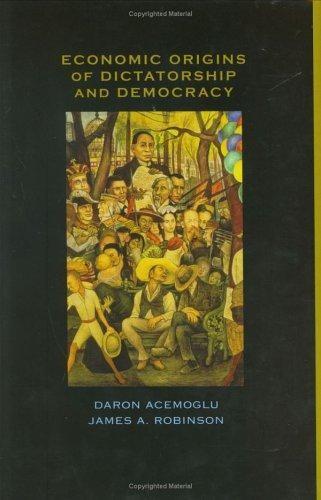
Economic Origins of Dictatorship and Democracy
by
Daron Acemoğlu
and
James A. Robinson
Published 28 Sep 2001
As illustrated by the British, Argentinian, and South African political histories discussed in Chapter 1, most transitions to democracy, both in nineteenth- and twentieth-century Europe and twentieth-century Latin America, took place amid significant social turmoil and revolutionary threats. In addition, the creation of democratic societies in most former European colonies in the 1950s and 1960s was the result of pressure by the disenfranchised and relatively poor colonials against the colonizing power. Such threats of turmoil and social disorder similarly accompanied the recent spate of democratizations in Africa (Bratton and van der Walle 1997) and Eastern Europe (Bunce 2003).
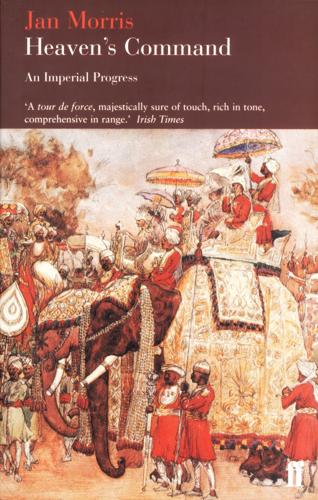
Heaven's Command (Pax Britannica)
by
Jan Morris
Published 22 Dec 2010
To the south the Americans were pursuing their own manifest destiny boldly across the prairies, and the eastern Canadians wanted the same freedom to expand—besides, they were afraid that if they did not move into that tempting vacuum, the Americans would. Since 1811 there had in feet been one isolated European colony in the heart of the Canadian west. It stood at the confluence of the Red River and the Assiniboine, two of the chief thoroughfares of central Canada. There an idealistic young peer, Lord Selkirk, had planted a colony of Scotsmen and Irishmen, on a land grant of 116,000 square miles allowed him by the Company—of which, as it happened, he was a substantial stockholder.2 Their progress had been fitful.
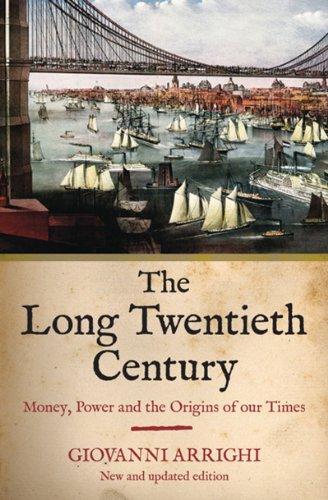
The Long Twentieth Century: Money, Power, and the Origins of Our Times
by
Giovanni Arrighi
Published 15 Mar 2010
After the Vietnam War had demonstrated that the most expensive, technologically advanced, and destructive military apparatus the world had ever seen was quite powerless in curbing the will of one of the poorest people on earth, the US government temporarily lost most, if not all of its credibility as the policeman of the free world. The result was a power vacuum which local forces, in open or tacit collusion with the USSR and its allies, promptly exploited in various ways: to complete the process of national liberation from the last residues of European colonialism (as in Portugal’s African colonies and in Zimbabwe); to wage war on one another in an attempt to reorganize the political space of surrounding regions (as in East Africa, South Asia, and Indochina); and to oust US client-states from power (as in Nicaragua and Iran). Riding this rising tide of turbulence, which they neither created nor controlled but from which they gained in prestige and power as the designated antagonists of the Cold War order, the ruling THE LONG TWENTIETH CENTURY 333 groups of the USSR lost sight of the underlying configuration of power and dispatched their army to Afghanistan to do what the more powerful US army had failed to do in Vietnam.
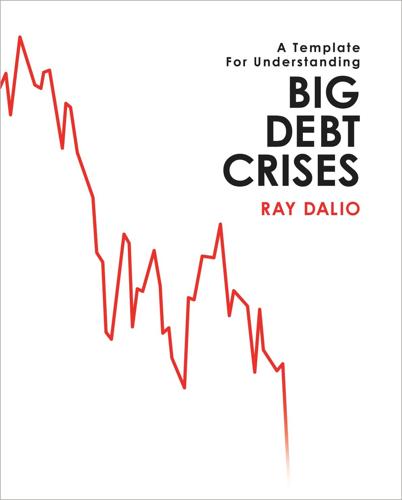
Big Debt Crises
by
Ray Dalio
Published 9 Sep 2018
Beginning in September 1940, to obtain more resources and take advantage of the European preoccupation with the war on their continent, Japan invaded several colonies in Southeast Asia, starting with French Indochina. In 1941, Japan extended its reach by seizing oil reserves in the Dutch East Indies to add the “Southern Resource Zone” to its “Greater East Asia Co-Prosperity Sphere.” The “Southern Resource Zone” was a collection of mostly European colonies in Southeast Asia, whose conquest would afford Japan access to key natural resources (most importantly oil, rubber, and rice). The latter, the “Greater East Asia Co-Prosperity Sphere,” was a bloc of Asian countries controlled by Japan, not (as they previously were) the Western powers. Japan then occupied a naval base near the Philippine capital, Manila.
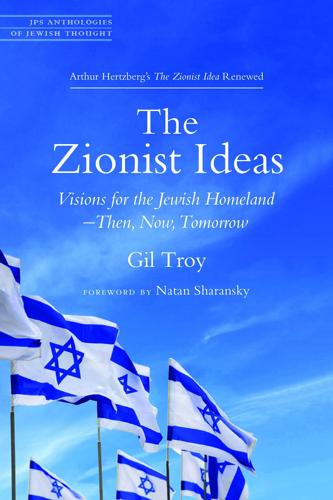
The Zionist Ideas: Visions for the Jewish Homeland—Then, Now, Tomorrow
by
Gil Troy
Published 14 Apr 2018
Memmi’s 1953 autobiographical novel, Pillar of Salt, introduced by the existential novelist Albert Camus, described growing up in the Tunisian Jewish ghetto before serving in a Nazi forced-labor camp. Documenting the Holocaust beyond Europe, Memmi felt enslaved yet liberated: “a half-breed of colonization, understanding everyone because I belonged completely to no one.” He resented the Jews’ double impotence: bullied by European colonial oppressors and neighboring Muslim Arab tormentors. “I’m a Jew!” he wrote. “My home is in the ghetto, my legal status is native African. I come from an Oriental background. I’m poor.” This understanding of marginalization, what academics call “liminality,” shaped his 1957 classic, The Colonizer and the Colonized¸ introduced by the existential philosopher Jean Paul Sartre.
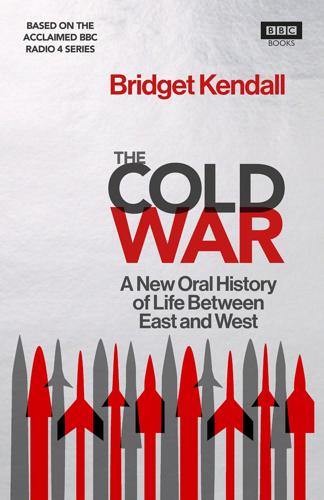
The Cold War: Stories From the Big Freeze
by
Bridget Kendall
Published 14 May 2017
The United States’ experience in Vietnam had been a salutary lesson in what could go wrong, but – despite détente – each side continued to look for ways to secure strategic advantage and anchor influence, and on occasion swoop in to prop up smaller allies under threat. Wars through surrogates were becoming part of the new playbook across the world. Nowhere was this truer than in Africa, where the old European colonial powers had for the previous two decades been in the process of pulling out. For the Soviet Union, always keen to couch its arguments in terms of an anti-imperialist struggle and international solidarity with the oppressed, this was fertile territory for enlisting new Marxist converts. The Americans, too, were on the lookout for new friends.
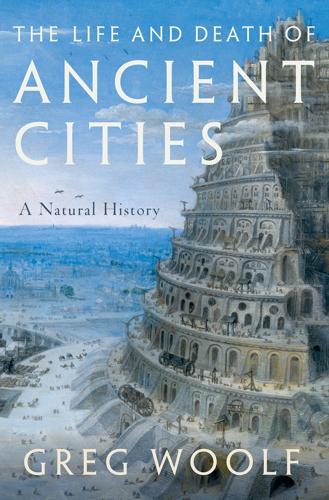
The Life and Death of Ancient Cities: A Natural History
by
Greg Woolf
Published 14 May 2020
Taking entire families would have been even more expensive in terms of transport, especially if oared vessels were used, and increased the demand for food and water in transit and afterwards, but could a mostly male expedition really rely on finding sufficient indigenous princesses (or female slaves) to ensure the future of a new foundation? Even without families, the first wave of settlers had to survive the period between their arrival and when they could harvest their first crops. The horrific experience of the first European colonies in the New World gives pause for thought. And those European settlers had far superior technology, both in absolute terms and in relation to the locals. Greeks had not much of a military advantage over the local populations of the western Mediterranean. Superior skills as navigators might enable a quick escape if things became tense, but in terms of conquest and occupation of land, the incomers were few in number and had the same sort of Iron Age weapons as the locals.
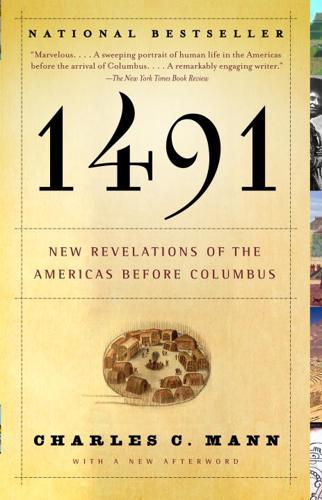
1491
by
Charles C. Mann
Published 8 Aug 2005
Throughout all of the nineteenth and much of the twentieth century, nationalism was ascendant, and historians identified history with nations, rather than with cultures, religions, or ways of life. But the Second World War taught the West that non-Westerners—the Japanese, in this instance—were capable of swift societal change. The rapid disintegration of European colonial empires further adumbrated the point. Crosby likened the effects of these events on social scientists to those on astronomers from “the discovery that the faint smudges seen between stars on the Milky Way were really distant galaxies.” Meanwhile, new disciplines and new technologies were creating new ways to examine the past.

The Long Game: China's Grand Strategy to Displace American Order
by
Rush Doshi
Published 24 Jun 2021
Dagong hired a number of senior Western officials on behalf of UCRG to criticize US ratings, including former French Prime Minister Dominique de Villepin, who traveled the world attacking Western agencies in ideological terms and drew a “straight line from the Opium Wars, the British Raj, and the European colonial powers’ grab for Africa to current forms of Western privilege, including its control of credit ratings.”103 Eventually, despite its ideological bent and alleged Chinese-backing, UCRG sputtered and was shut down. The failure of UCRG did not mark the end of China’s ambition to reshape global credit ratings.

The Ministry for the Future: A Novel
by
Kim Stanley Robinson
Published 5 Oct 2020
This is always an act of imagination, which fixes on matters geological (ice ages and extinction events, etc.), technological (the stone age, the bronze age, the agricultural revolution, the industrial revolution), dynastic (the imperial sequences in China and India, the various rulers in Europe and elsewhere), hegemonic (the Roman empire, the Arab expansion, European colonialism, the post-colonial, the neo-colonial), economic (feudalism, capitalism), ideational (the Renaissance, the Enlightenment, Modernism), and so on. These are only a few of the periodizing schemes applied to the flux of recorded events. They are dubiously illuminative, perhaps, but as someone once wrote, “we cannot not periodize,” and as this appears to be true, the hunt is on to find out how we can best put this urge to use.
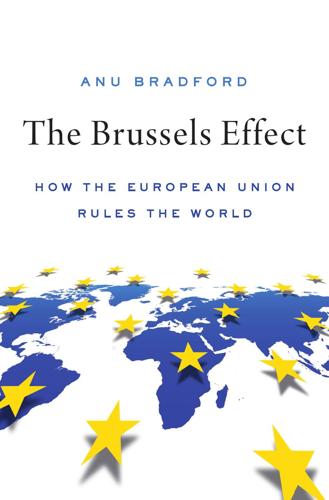
The Brussels Effect: How the European Union Rules the World
by
Anu Bradford
Published 14 Sep 2020
For example, in discussing the global reach of the GDPR, Mark Scott and Laurens Cerulus describe how “Europe wants to conquer the world all over again,” yet this time without military means but rather through its “legal juggernaut aimed at imposing ever tougher privacy rules on governments and companies from San Francisco to Seoul.”77 They point out that in countries like South Africa, which base their domestic data protection legislation on the GDPR, this European legislative export risks “being viewed as yet another diktat handed down by former colonial powers in a form of ‘data imperialism.’ ”78 Lawrence A. Kogan, criticizing the EU’s extensive regulatory reach in environmental and food safety matters, puts it bluntly: [T]he EU has embarked upon an adventure in environmental cultural imperialism. This is a global practice reminiscent of an earlier European colonial era. And the fact that Europe is using “soft power” to enforce it will hardly make it more palatable to people who will be unable to feed themselves as a result.79 The EU counters these criticisms by arguing that it is not engaged in coercion—it is not using force or threats to persuade any company or government to do anything—in particular, when the EU is exporting its rules through the market-driven Brussels Effect.
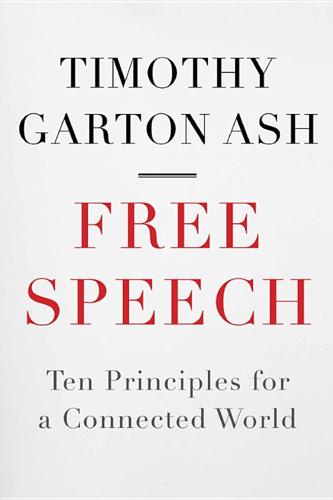
Free Speech: Ten Principles for a Connected World
by
Timothy Garton Ash
Published 23 May 2016
A provision of the Chilean constitution was actually amended in response to a judgement of the Inter-American Court of Human Rights, which ruled that Chile should not have banned a film called ‘The Last Temptation of Christ’.129 Some of these traditions and values may have come originally in the wake of European colonialism, but even where they did, they have taken root in local soil and been changed in the process. South Africa combines a Dutch and English legal heritage with strong native traditions, memorably evoked in Nelson Mandela’s Long Walk to Freedom. A comparable blending can be observed in English-, French-, Spanish- and Portuguese-speaking countries around the world, from Australia to Chile and Kenya to Venezuela.
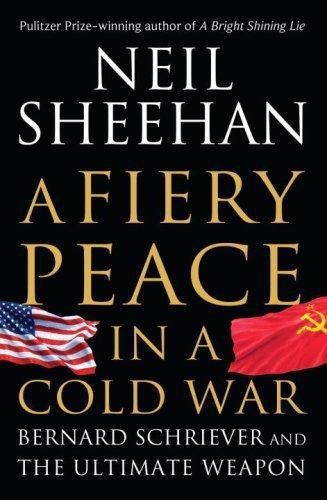
A Fiery Peace in a Cold War: Bernard Schriever and the Ultimate Weapon
by
Neil Sheehan
Published 21 Sep 2009
Acheson had in his cultural heritage the stabilizing model of the British Empire when the Royal Navy had dominated the seas and “Pax Britannica” had ruled nearly a quarter of the earth’s landmass and peoples. The “Pax Americana” that he and Truman and their associates intended to create was not, however, going to be an exploitative system akin to British and European colonialism. Outright colonies were unacceptable to the American political conscience. The one formal colony the United States had possessed, the Philippines, wrested from Spain at the turn of the twentieth century, had been given its independence in 1945. What the United States sought were surrogate governments friendly to American power, free to run their internal affairs as they wished as long as they agreed with Washington in matters of foreign policy.
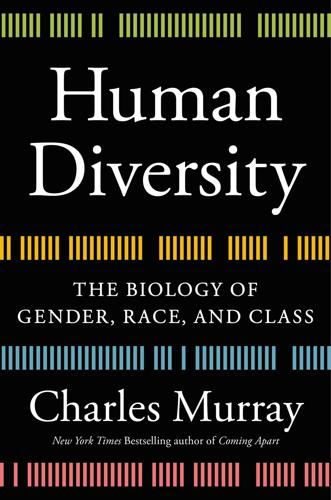
Human Diversity: The Biology of Gender, Race, and Class
by
Charles Murray
Published 28 Jan 2020
An official statement of the American Sociological Association in 2003 told its members to beware “the danger of contributing to the popular conception of race as biological.”8 Nor am I talking about attitudes that have softened in the face of all that has been learned since the sequencing of the genome. Here is part of the official statement of the American Association of Physical Anthropology on race that was adopted on March 27, 2019: The Western concept of race must be understood as a classification system that emerged from, and in support of, European colonialism, oppression, and discrimination. It thus does not have its roots in biological reality, but in policies of discrimination. Because of that, over the last five centuries, race has become a social reality that structures societies.9 For Jared Diamond, author of the bestselling Guns, Germs, and Steel, “[t]he reality of human races is another commonsense ‘truth’ destined to follow the flat Earth into oblivion.”10 It is in this context that Part II sets out to convince you that the orthodoxy about race is scientifically obsolete. 6 A Framework for Thinking About Race Differences Of necessity, Part II is organized radically differently from Part I.
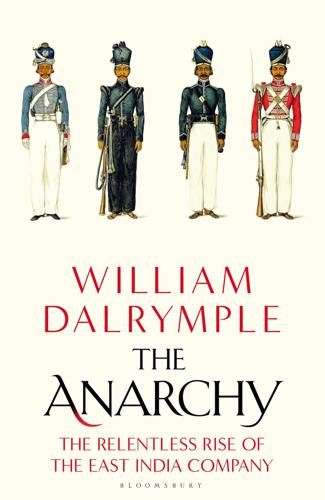
The Anarchy: The Relentless Rise of the East India Company
by
William Dalrymple
Published 9 Sep 2019
Like Roe, he comes as a supplicant begging for contracts and business, and with him come the CEOs of his country’s biggest corporations. The corporation – the idea of a single integrated business organisation stretching out across the seas – was a revolutionary European invention contemporaneous with the beginnings of European colonialism that upended the trading world of Asia and Europe, and which helped give Europe its competitive edge. It is, moreover, an idea that has continued to thrive long after the collapse of European imperialism. When historians debate the legacy of British colonialism in India, they usually mention democracy, the rule of law, railways, tea and cricket.

Enemies and Neighbours: Arabs and Jews in Palestine and Israel, 1917-2017
by
Ian Black
Published 2 Nov 2017
Palestinian scholars, handicapped by a dearth of Arab documentary sources, a lack of access to Israeli archives, and by their own statelessness, began to examine their history more assertively, although with less dramatic results.16 In the 1990s Walid Khalidi’s encyclopaedic study, All That Remains, laid the foundation for recording the Palestine that was eradicated by Israel.17 Yezid Sayigh’s meticulously documented account of the Palestine national movement and its search for a state is still unsurpassed, two decades after publication.18 It is also hard to improve on the penetratingly honest insight of the Palestinian-American historian Rashid Khalidi that Zionism was not just another European colonial enterprise but was simultaneously the national movement of the Jewish people and one that achieved its goals at the expense of his own people.19 No one now seriously disputes, for example, how many Palestinians died in the Deir Yassin massacre in April 1948, or how many Arab villages were depopulated or destroyed during or after that year’s war.
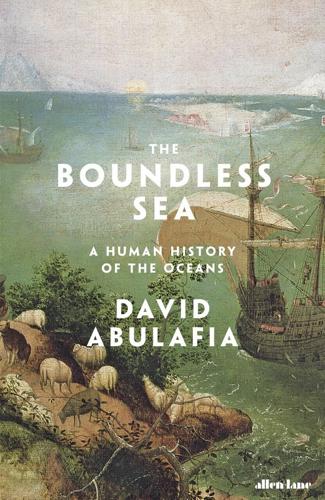
The Boundless Sea: A Human History of the Oceans
by
David Abulafia
Published 2 Oct 2019
Yet the prospects were not quite as bright as the optimistic President of Yale averred. Great Britain continued to block trade between the United States and its own valuable possessions in the Caribbean, which were a prime source of contraband goods from the Far East. It was far from clear that wider European markets would be open to the Americans, and that might well include European colonies in Africa, Asia and South America as well. The answer was to go global, taking advantage of the simple fact that the Americans were now free from the authority of the East India Company.13 Sending a ship to China was a dangerous and expensive business. The Empress of China was built in Boston, and was about a hundred feet in length, displacing 360 tons.
…
By the end of the eighteenth century the sultan was commissioning square-rigged ships of European design in India; in 1786 he is said to have possessed eight men-of-war, for alongside peaceful trade the sultan engaged in naval wars with his rebellious subjects, and the size of the fleet doubled in the last quarter of the eighteenth century, as did the volume of coffee handled by the Muscateers.5 Before 1800, then, the Omanis had established themselves as valuable middlemen between the European colonies in India and Indonesia and lands ruled by the Ottomans, the Persians, African rulers and themselves. Their range extended as far as Calcutta, the new British base in India, even though this meant they had to sail their ships right round the subcontinent; but there they could mix with merchants and sailors from almost every maritime nation under the sun.6 They could also take advantage of the steady reduction in importance of the Portuguese, in the Indian Ocean, both politically and commercially, and exploit the rivalry between other Europeans to insert themselves successfully into the maritime trade of the Indian Ocean.7 The rise of Muscat is only part of the remarkable story of the Omani maritime empire.
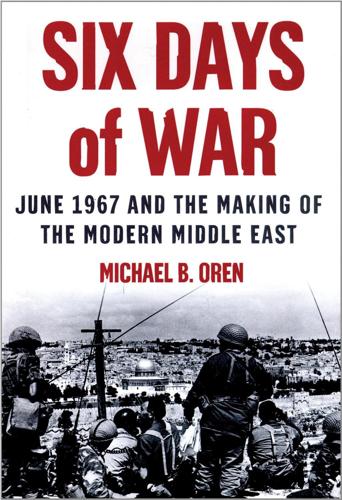
Six Days of War: June 1967 and the Making of the Modern Middle East
by
Michael B. Oren
Published 2 Jun 2003
But Nasser first made light of the mission—Why risk talking with Israel for the sake of the Baghdad Pact? he asked—then refused to receive Anderson at all. Thereafter, Eisenhower approved another top-secret project—Omega—geared to toppling Nasser by all methods except assassination.16 Washington indeed disliked Nasser, but it abhorred European colonialism even more. Though signatory with France and Britain to the 1950 Tripartite Declaration prohibiting any attempt to alter Middle East borders by force, the United States refused to regard the Canal’s nationalization as such an attempt, or to sanction the use of force against Egypt. A succession of international initiatives followed, all aimed at resolving the crisis, all notable for their lack of teeth.
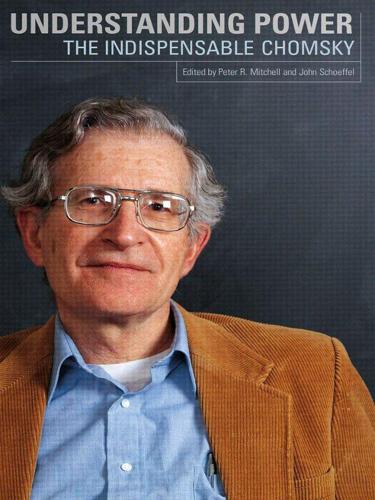
Understanding Power
by
Noam Chomsky
Published 26 Jul 2010
It was that after the Gulf War was over, the U.S. was in a perfect position to ram through its rejectionist program and fully extend the Monroe Doctrine to the Middle East [the Monroe Doctrine was proclaimed by the U.S. in 1823 and stated that Latin America was the exclusive domain of the United States, not the European colonial powers]. It was our way of saying: “Look, this is our turf, we’ll do what we feel like here.” As George Bush in fact put it: “What we say goes.” 105 Now the world understands that; the Gulf War helped them understand it. Bosnia: Intervention Questions MAN: Noam, do you recall any major issues on which your views have totally flip-flopped at some point, perhaps by thinking them out more or something like that?
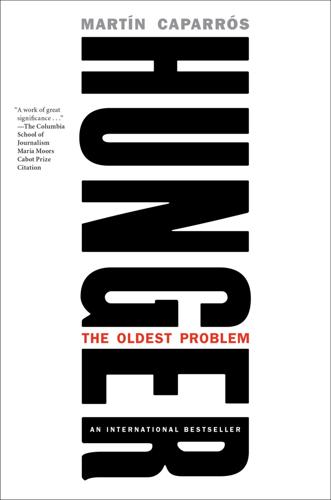
Hunger: The Oldest Problem
by
Martin Caparros
Published 14 Jan 2020
They provided new territory where their unemployed could find occupations and land to grow cheap food to reduce the pressure of hunger. It was the perfect way to avoid that civil war. In this interpretation, hunger was neither a divine judgment nor a just punishment for sloth nor a fearful plague. It was, instead, the danger that threatened to provoke the fall of the regime. European colonial expansion in the second half of the nineteenth century finalized, in some way, the creation of the Other World as we now know it: millions of semi-enslaved workers producing food in the Empire’s territories to keep the workers in the imperial centers poorly nourished. In few countries was there then as much hunger as there was then and now in India.

Accessory to War: The Unspoken Alliance Between Astrophysics and the Military
by
Neil Degrasse Tyson
and
Avis Lang
Published 10 Sep 2018
Lookouts aboard the many Dutch vessels plying the seas decade after decade from Java and New Amsterdam to South Africa and South America used their telescopes to scan the horizon for privateers. In seventeenth-century Japan, when Christianity was banned and Christian missionaries were understood to be agents of European colonialism, foreign merchant vessels were permitted to enter the country through only two ports, one of which was Nagasaki, where coastal watch stations were equipped with telescopes for scanning the waters.18 On land, commanders who had telescopes found they could now exercise a degree of control over fronts several miles wide rather than dashing around for a close-up view of small segments of the battlefield.
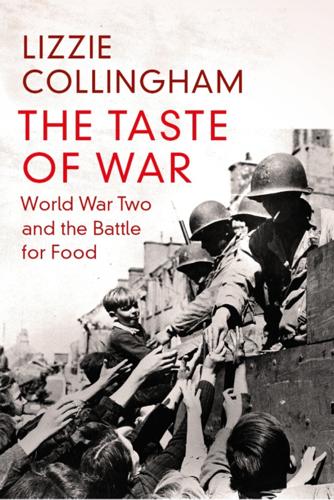
The Taste of War: World War Two and the Battle for Food
by
Lizzie Collingham
Published 1 Jan 2011
If the United States were not placated by a peace deal in China they might well place an embargo on the scrap metal and oil imports that Japan so badly needed to maintain the war effort.73 However, 62,000 Japanese soldiers had already lost their lives in China and the Japanese military command felt that to withdraw would betray their sacrifice.74 Then, as Germany stormed across western Europe in the spring and summer of 1940, the weakness of the European colonial powers encouraged the Japanese chiefs of staff to think that they could take over the entire south-east Asian treasure house of resources.75 Occupation of the French, British and Dutch colonies in south-east Asia would enable Japan to achieve decisive victory in the Chinese war by cutting off supplies of Indo-Chinese rice to Nationalist China.76 They also set their sights on the oil supplies in the Dutch East Indies.
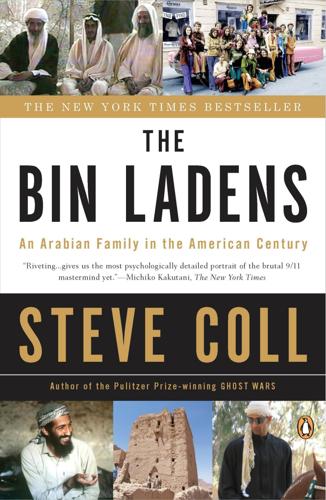
The Bin Ladens: An Arabian Family in the American Century
by
Steve Coll
Published 29 Mar 2009
He failed to build alliances among his half-brothers and placed his unqualified sons in positions of military command, exacerbating his relatives’ fear that he might use his large brood to usurp the planned succession to Faisal. Saud’s reign coincided with the rise of Gamal Abdel Nasser, an army officer who seized power in Egypt and called for revolution and unity in the Arab world, appeals that won him popular acclaim. Nasser’s propaganda attacked the former European colonial powers and their reactionary clients; King Saud seemed to be a conspicuous example. Saud dodged a Nasser-inspired coup in 1955; the foiled conspiracy was a shocking event in politically quiescent Arabia. The king grasped that he had to respond to Nasser’s popularity, but he lacked the necessary insight and skill.

Roller-Coaster: Europe, 1950-2017
by
Ian Kershaw
Published 29 Aug 2018
Soares, supported financially by the West German Social Democratic Party, was the key political player in the early stage of Portugal’s transition to parliamentary democracy. But it was still a rocky road. Portugal’s colonial empire had been wound up during the year after the ‘carnation revolution’. With that, the last of the major European colonial empires was gone and the era of colonial imperialism was finally over. But it was a bloody ending. The Portuguese left their former possessions in a terrible state. There was no smooth process of decolonization. East Timor was seized by Indonesia. Angola was wracked by civil war. Mozambique also soon descended into civil war, while revolutionary forces turned Guinea-Bissau into a one-party state that took violent revenge against former supporters of the colonial regime.

Goliath: Life and Loathing in Greater Israel
by
Max Blumenthal
Published 27 Nov 2012
In a purely strategic sense, castrations carried out by the Palmach under the guidance of medical professionals were designed as a deterrent against further sexual attacks, instilling terror in the Palestinian rural population while restoring the confidence of Jewish women living in adjacent kibbutzim. But they also contained a deeper significance that found its roots in fin de siècle European colonialism. Through its brazen castrations, the Palmach militia sought to symbolically neuter the Palestinian national movement, asserting Zionist dominance in a struggle between two patriarchal societies where virility and victory were intertwined. During the early years of Zionist settlement in Palestine, the kibbutz movement tasked Jewish women with an equal role in labor and the military required her to serve in some capacity, but her most essential function was as the national womb.

The Meritocracy Trap: How America's Foundational Myth Feeds Inequality, Dismantles the Middle Class, and Devours the Elite
by
Daniel Markovits
Published 14 Sep 2019
See Schiavone, The End of the Past, 136–53; Justin Yifu Lin, Demystifying the Chinese Economy (Cambridge: Cambridge University Press, 2012), 48–51. (such as Japan): See Hayami and Ruttan, “Agricultural Productivity,” 898. Even among otherwise similarly situated societies, such as the European colonies in the New World, the choice of crops, size of farms, nature of labor (whether indigenous or immigrant, free or slave), and other technologies of production all varied depending on soil and climate. See, e.g., Stanley L. Engerman and Kenneth L. Sokoloff, “History Lessons: Institutions, Factor Endowments, and the Path of Development in the New World,” Journal of Economic Perspectives 14, no. 3 (Summer 2000): 217.
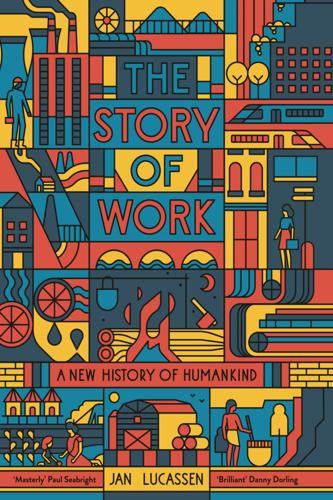
The Story of Work: A New History of Humankind
by
Jan Lucassen
Published 26 Jul 2021
In the key model countries, the corporatist experiment existed only for one or two decades. Only Franco in Spain and particularly Salazar’s Estado Novo in Portugal lasted longer. This country is also important because of its colonial policies. Besides, Japan competed with the welfare pretensions in the European colonies, e.g. with the Dutch in Indonesia. 148. M.B. Smith 2012, 2015a & 2015b; McAuley 1991; also Rimlinger 1971; Madison 1968; Cook 1993; Tomka 2004; Piketty 2019, 578–606; Milanovic 2019. 149. McAuley 1991, 195. Cf. Article 12 of the 1936 Constitution: ‘the man who will not work, shall not eat’, which sounds like the apostle Paul in 2 Thessalonians 3 (Kloosterboer 1960, 174). 150.
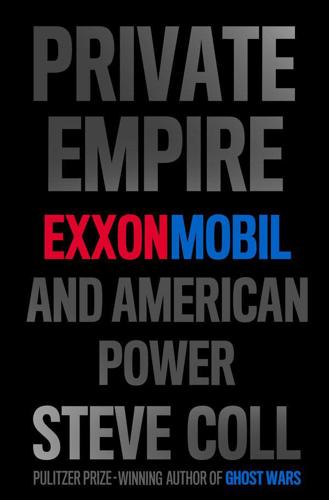
Private Empire: ExxonMobil and American Power
by
Steve Coll
Published 30 Apr 2012
If African governments protected oil commerce, they could prosper. But they required the goodwill of international oil giants. “If kidnapping of their workers and attacks on their facilities continue,” those companies were unlikely to stay.31 African politicians, scarred by a century of resource-driven European colonialism, feared that the Bush administration viewed their oil as analogous to the oil of the Persian Gulf: as a vital American interest, one that might warrant military intervention, at least in extremis. Bush officials imagined themselves striking a more nuanced, postcolonial posture, one that emphasized encouraging African states to modernize and to rise from poverty.
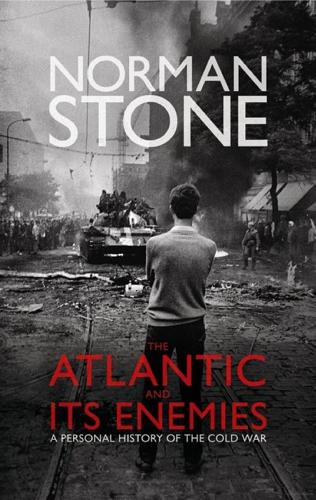
The Atlantic and Its Enemies: A History of the Cold War
by
Norman Stone
Published 15 Feb 2010
On 1 January 1947 they agreed to put their own zone together with the American one, based on Frankfurt: the result, most of what was to be West Germany, was called ‘Bizonia’, but that too did not work any too well. The German problem went together with others, worldwide. Japan, her capital almost flattened, and two principal cities nuclear ruins, was prostrate; European colonies in south-eastern Asia were hardly governable. Especially, a vast civil war was brewing in China. The Chinese Communists had acquired a solid base, with Soviet help and with captured Japanese weaponry, in Manchuria, and it was traditionally from there that China was conquered. But Stalin was probing in other areas as well.

Enlightenment Now: The Case for Reason, Science, Humanism, and Progress
by
Steven Pinker
Published 13 Feb 2018
The Berlin Wall was torn down in 1989, freeing the nations of Eastern Europe to establish democratic governments, and communism imploded in the Soviet Union in 1991, clearing space for Russia and most of the other republics to make the transition. Some African countries threw off their strongmen, and the last European colonies to gain independence, mostly in the Caribbean and Oceania, opted for democracy as their first form of government. In 1989 the political scientist Francis Fukuyama published a famous essay in which he proposed that liberal democracy represented “the end of history,” not because nothing would ever happen again but because the world was coming to a consensus over the humanly best form of governance and no longer had to fight over it.8 Fukuyama coined a runaway meme: in the decades since his essay appeared, books and articles have announced “the end of” nature, science, faith, poverty, reason, money, men, lawyers, illness, the free market, and sex.

Lonely Planet Scotland
by
Lonely Planet
For we fight, not for glory nor for riches nor for honours, but only and alone for freedom, which no good man surrenders but with his life.' The Pope initially supported the Scottish cause, but English lobbying changed his mind. Union with England Civil war and 17th-century religious conflict left the country and its economy ruined. Scotland couldn't compete in this new era of European colonialism and, to add to its woes, during the 1690s famine killed up to a third of the population in some areas. Anti-English feeling ran high: the Protestant king William, who had replaced the exiled Catholic James VII/II to the chagrin of many in Scotland, was at war with France and employing Scottish soldiers and taxes – many Scots, sympathetic to the French, disapproved.
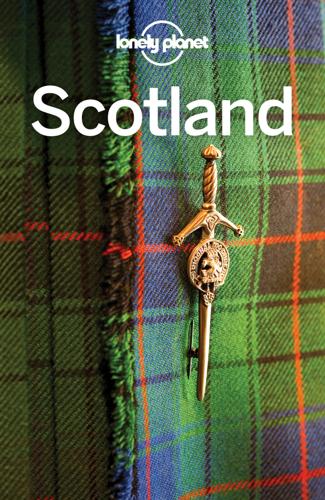
Lonely Planet Scotland
by
Lonely Planet
Jacobite, a term derived from the Latin for ‘James’, is used to describe the political movement committed to the return of the Catholic Stuart kings to the thrones of England and Scotland. Union with England Civil war and 17th-century religious conflict left the country and its economy ruined. Scotland couldn’t compete in this new era of European colonialism and, to add to its woes, during the 1690s famine killed up to a third of the population in some areas. Anti-English feeling ran high: the Protestant king William, who had replaced the exiled Catholic James VII/II to the chagrin of many in Scotland, was at war with France and employing Scottish soldiers and taxes – many Scots, sympathetic to the French, disapproved.
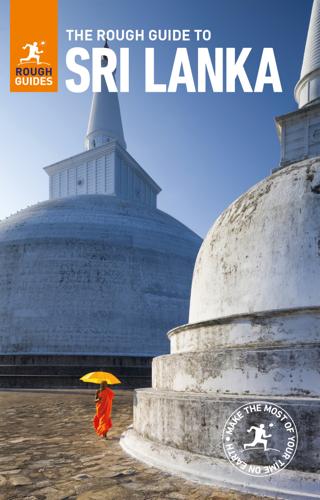
The Rough Guide to Sri Lanka
by
Rough Guides
Published 21 Sep 2018
In the 1870s, however, the island’s coffee production was destroyed by a leaf disease. The void was soon filled by the introduction of tea, with plantations quickly spreading around the slopes of the central highlands, while rubber and coconuts also acquired increasing importance. The rise of nationalism Sri Lanka’s traumatic encounters with European colonial powers led to a major re-evaluation of its own traditional culture. In the nineteenth century, revivalist Buddhist and Hindu movements sprang up, with the aim both of modernizing native institutions in the face of the Western onslaught, and of defending the island’s traditional culture against missionary Christianity.
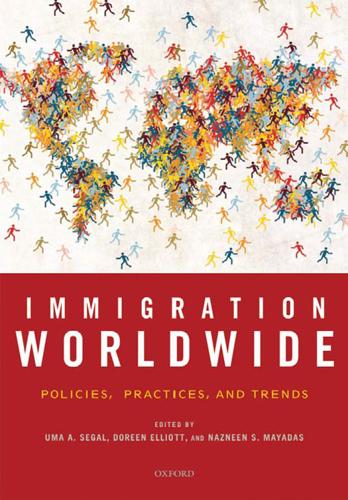
Immigration worldwide: policies, practices, and trends
by
Uma Anand Segal
,
Doreen Elliott
and
Nazneen S. Mayadas
Published 19 Jan 2010
During the three decades, over 400,000 citizens of countries other than New Zealand left the country after periods in residence of 12 months or more. Until the late 1980s the great majority of New Zealand’s immigrants came from a small number of ‘‘traditional’’ source countries—the United Kingdom (the European colonial power in the nineteenth century), Australia (the neighboring British colony that was an important source of immigrants to New Zealand in the nineteenth and the first half of the twentieth centuries), the Pacific Islands (also the original source of the Maori population), parts of northern and western Europe (especially Scandinavia in the nineteenth century and the Netherlands from the 1950s), and from Canada and the United States (but smaller flows than from Europe).
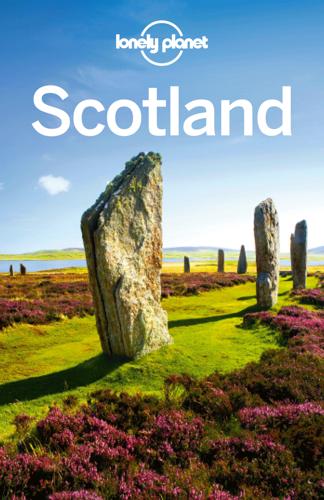
Scotland Travel Guide
by
Lonely Planet
A well-presented and easily absorbed introduction to Scottish history is at www.bbc.co.uk/history/scottishhistory. The accompanying images of historical sites help to bring it to life. UNION WITH ENGLAND The civil wars left the country and its economy ruined. Scotland couldn’t compete in this new era of European colonialism and, to add to its woes, during the 1690s famine killed up to a third of the population in some areas. Anti-English feeling ran high: William was at war with France and was using Scottish soldiers and taxes – many Scots, sympathetic to the French, disapproved. This feeling was exacerbated by the failure of an investment venture in Panama (the so-called Darien Scheme, designed to establish a Scottish colony in the Americas), which resulted in widespread bankruptcy in Scotland.
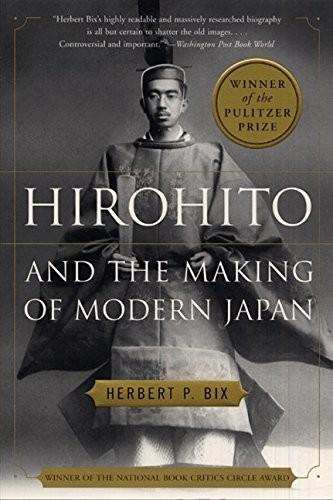
Hirohito and the Making of Modern Japan
by
Herbert P. Bix
Published 1 Jan 2000
This question revealed not only that Hirohito expected an early German victory but that he had also begun to consider the possibility of deploying troops in both Indochina and the Dutch East Indies, now that the French and Dutch had been conquered by the Germans, even if the less opportunistic side of his personality recoiled at the idea of doing so.31 When the problem of French Indochina arose again the next day in a conversation with Kido, the emperor revealed both his keen concern with appearances and his genuine vacillation over what to do about the undefended European colonies. Conscious of the ideological ideals that he, defender of the nation’s moral integrity, was expected to uphold, he remarked that, historically, “there were actions such as those taken by Frederick and Napoleon.” But “our country does not want to act in such Machiavellian ways. Shouldn’t we always try to bear in mind the true spirit of hakk ichi’u [benevolent rule], which has been our policy since the age of the gods.”32 Avowing “benevolent rule” and disavowing Machiavellianism, while simultaneously sanctioning the use of poison gas against the Chinese—these contradictory acts reveal Hirohito’s divided nature.
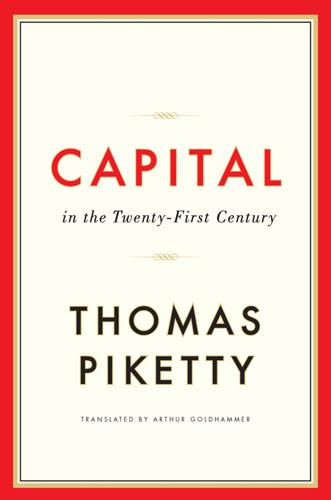
Capital in the Twenty-First Century
by
Thomas Piketty
Published 10 Mar 2014
Will China Own the World? The sovereign wealth funds of non-petroleum-exporting countries raise a different kind of problem. Why would a country with no particular natural resources to speak of decide to own another country? One possibility is of course neocolonial ambitions, a pure will to power, as in the era of European colonialism. But the difference is that in those days the European countries enjoyed a technological advantage that ensured their domination. China and other emerging nonpetroleum countries are growing very rapidly, to be sure, but the evidence suggests that this rapid growth will end once they catch up with the leaders in terms of productivity and standard of living.
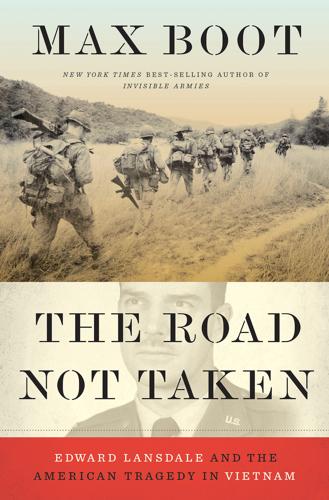
The Road Not Taken: Edward Lansdale and the American Tragedy in Vietnam
by
Max Boot
Published 9 Jan 2018
(“Admittedly,” he added, in a self-aware postscript, “this is an ideal which human weaknesses make it difficult to achieve.”)4 U.S. rule was paternalistic and racist (Taft referred to Filipinos as “our little brown brothers” and ordinary soldiers called them “googoos” or “niggers”), but it was also in important respects more liberal than contemporary European colonial regimes. Washington did not allow American companies to set up agricultural concerns to exploit local labor and land such as the vast rubber plantations owned by the French in Indochina, the Dutch in the East Indies, and the British in Malaya. There was no need to exploit the Philippines when the American homeland was so abundantly provided with natural resources of its own.
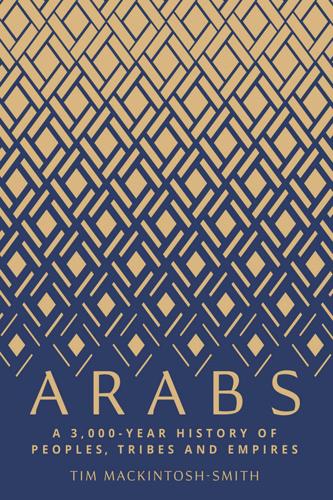
Arabs: A 3,000 Year History of Peoples, Tribes and Empires
by
Tim Mackintosh-Smith
Published 2 Mar 2019
But even in figures from Israeli sources, the disproportion is clear enough: over all, between 2000 and the middle of 2018, 9,456 Palestinians have been killed by Israeli security forces, compared with 1,237 Israelis killed by Palestinians – almost 8:1. In the ‘autonomous’ West Bank, meanwhile, Israeli policy would make nineteenth-century European colonialism and twentieth-century apartheid seem liberal by comparison. For example, an Israeli property law causes any land which is not actually lived on by its owner to revert to the ‘original’ possessors – that is, the Israeli state. Since the State of Israel dates back only to 1948, the use of ‘original’ seems strange; it is, of course, an allusion to the Jewish presence in Palestine in ancient times, and to the modern Zionist-colonial interpretation of ancient references to a sacred ‘Promised Land’.

Lawrence in Arabia: War, Deceit, Imperial Folly and the Making of the Modern Middle East
by
Scott Anderson
Published 5 Aug 2013
I., 12.1, 16.1 Lepsius, Karl “Lewis” (Australian officer) Libya, Italian invasion of, 1.1, 2.1 Liddell Hart, Basil, 6.1, nts.1n Lishansky, Joseph, 10.1, 13.1, 15.1, 17.1, nts.1n Lloyd, George, 4.1, 15.1, 15.2, 15.3, 16.1 Lloyd George, David, 10.1, 12.1, 15.1, 18.1, epi.1, epi.2 Clemenceau’s agreement with London, 9.1, 9.2, 9.3, 10.1, 12.1, 13.1, 14.1, 14.2, 14.3, 14.4, 14.5, 15.1, 15.2, 16.1, 16.2, 16.3, 17.1, 18.1 Loytved-Hardegg, Julius Lynden-Bell, Arthur, 9.1, 11.1, 12.1 Maan, 11.1, 12.1, 13.1, 13.2, 13.3, 13.4, 13.5, 17.1 Lawrence’s mission to Maan-Aqaba road Maccabean Society MacDonogh, George Macedonia, 12.1, 18.1 McGovern, Rudolf, 1.1, 2.1, 3.1, 3.2 in Kornub, 3.1, 7.1, epi.1 machine guns, 4.1, 9.1, 11.1, 11.2, 14.1, 18.1, 18.2 Mack, Julian McKale, Donald, 2.1, 10.1, 17.1, epi.1 McMahon, Henry, 7.1, 8.1, 9.1, 9.2, 9.3, 13.1, nts.1n, 522n on Alexandretta scheme on Arab independence, 7.1, 7.2 as British high commissioner for Egypt, 6.1, 9.1, 9.2 McMahon-Hussein Correspondence, 6.1, 7.1, 11.1, 12.1, 12.2, 13.1, nts.1n, 521n, 522n, 531n McMeekin, Sean MacMillan, Margaret Madeba, 16.1, 16.2, 16.3, 17.1 Mahdi War, 3.1, 9.1 Mallet, Louis Managem, 278, 12.1, 13.1, 14.1, 15.1, 15.2, nts.1n Manchester, University of Mapping of Palestine, 3.1, 3.2 Marmara, Sea of Marne River Martyrs’ Square, Beirut Mary, Queen Masri, Abdul Aziz al- Maxwell, John Mecca, 5.1, 5.2, 5.3, 6.1, 6.2, 6.3, 7.1, 17.1, epi.1 Arab Revolt in, 7.1, 8.1, 8.2, 10.1 hajj to as off-limits to non-Muslims, 8.1, 11.1 Turkish threat to, 8.1, 10.1, 11.1 Medina, 2.1, 3.1, 5.1, 5.2, 5.3, 5.4, 6.1, 7.1, 8.1, 8.2, 11.1 Djemal Pasha’s withdrawal order and France on preventing capture of as off-limits to non-Muslims Turkish garrison in, 8.1, 8.2, 8.3, 8.4, 9.1, 10.1, 10.2, 10.3, 10.4, 11.1, 11.2, 11.3, 11.4, 12.1, 13.1, 14.1, 17.1, 17.2 Mediterranean Expeditionary Force (Med-Ex), 5.1, 6.1 Mediterranean Sea, 1.1, 1.2, 2.1, 3.1, 3.2, 5.1, 5.2, 5.3, 5.4, 6.1, 10.1, 12.1, 12.2, 17.1, 17.2 Suez Canal and, 3.1, 3.2 Mesopotamia (Iraq), 2.1, 4.1, 8.1, 16.1, nts.1n Meuse River Mexico Meyer, Louis MI5 Michael (German offensive) Middle East, 3.1, 3.2, 4.1, 5.1, 5.2, 5.3, 5.4, 13.1, 14.1, 15.1, 17.1 agricultural science in British entanglements in, 7.1, 7.2 British war effort in crumbling of the Ottoman Empire in European territorial claims toward, 7.1, 12.1 modern, creation of, itr.1, itr.2, itr.3 oil in, 3.1, 4.1 Wilson as voice of British conscience in Military Handbook for South Syria, The, 278–79 mimeograph machines Minifir Mint, The (Lawrence), epi.1 “mission creep,” 5.1, 11.1 Moab Plateau, 16.1, 17.1, 17.2 Moneim, Abdel, 18.1, 18.2 Money, Arthur Mons, battle of Montenegro, 2.1, 5.1 Montgelas, Gräfin Morgenthau, Henry Morocco, Moroccans, 8.1, 8.2, 11.1 Mors, Robert, 4.1, 4.2 Moses, 3.1, 3.2, 4.1 “Moslem-Syrian littoral,” Mosseri, Jack Mount Hermon Mount of Olives, 4.1, 5.1, 11.1, 11.2 Mudowarra, 14.1, 15.1 Mudros Murray, Sir Archibald, 7.1, 8.1, 9.1, 9.2, 9.3, 10.1, 11.1, 11.2, 14.1, 14.2 Palestine offensives of, 9.1, 9.2, 11.1, 11.2, 11.3, 11.4, 12.1, 12.2, 12.3, 12.4, 14.1, 15.1 removed from command Muslims Arab, 2.1, 7.1 in British Empire in British military control of Medina and Crusaders and fears of Christian intentions toward in Jerusalem Jerusalem as sacred to Jews seen as inferior by Kurdish in Ottoman Empire, 4.1, 4.2 in Palestine, 16.1, 17.1 as pilgrims to Mecca and Medina, 5.1, 5.2, 8.1 under the rule of European colonial powers self-rule by, n Sunni in Syria, 17.1, 17.2 Turkish see also Islam Mussolini, Benito Mustafa Bey (town), Naama (camel) Nablus, 4.1, 4.2, 18.1, 18.2 expulsion of elders from, 5.1, 5.2, 5.3 Nachrichtenstelle für den Orient (Intelligence Bureau for the East) Nakhl Mubarak, 10.1, 10.2, 10.3 Napoleon I, emperor of France Napoleonic wars Nasir, Sherif, 13.1, 18.1 Nasser, Gamal Abdel Nassif, Suleiman Bey, 3.1, 3.2, 17.1, 17.2 Navajo Bar, Panama City Navy, French, off Palestinian coastline Navy, German Nazis, epi.1, epi.2 Nebuchadnezzar, king of Babylon Necho II, pharaoh of Egypt Newcombe, Stewart Francis, 1.1, 11.1, 11.2, 13.1, 13.2, 14.1, epi.1, epi.2 Alex Aaronsohn spurned by assigned as liaison officer to Faisal, 9.1, 10.1, 10.2, 10.3 as head of military intelligence unit in Cairo, 4.1, 4.2, 8.1, 11.1, 15.1 Lawrence recruited for intelligence work by, 3.1, 4.1 military survey conducted by, 3.1, 3.2, 5.1 New Delhi New Hampshire, University of New York, N.Y., 2.1, 3.1, 3.2, 6.1, 6.2, 9.1, 9.2, 9.3, 13.1, 13.2, 14.1, 14.2, 15.1, 16.1, 18.1, 18.2, epi.1 New York, USS, 14.1 New York Evening Post, 217 New York Stock Exchange New York Times, 79, 12.1, 16.1 New Zealand, territorial troops from Nicholas II, czar of Russia Nicolson, Arthur Nile River, 3.1, 9.1, 15.1, 17.1 NILI (Nezah Israel Lo Ieshaker) spy network, 11.1, 13.1, 14.1, 14.2, 14.3, 15.1, 16.1, 17.1, 17.2, nts.1n see also Aaronsohn, Aaron, spy network of Nimr, Faris, 17.1, 17.2 Normandy, 2.1, 2.2, 2.3 Northbrook, HMS, 13.1 Nur el Bahr, 274 Nuremberg trials Nuri Said, Odyssey (Homer), epi.1 oil: growing demand for in Middle East see also Standard Oil Company of New York Oklahoma: Kiefer oilfield in, 2.1, 2.2, 2.3, 3.1, 4.1, 5.1, 17.1 unruly oilmen from Omdurman, battle of Oppenheim, Max von, Count, 2.1, 2.2, 4.1, 5.1, 17.1 concubines of Constantinople assignment of economic ambitions of, 10.1, 13.1 “going native” by on Hussein Islamic jihad promoted by, 2.1, 3.1, 5.1 Jewish ancestry of Montblanc pen named after, 2.1, 2.2 Prüfer’s dispatches to, 5.1, 5.2, 6.1 wanderings in Bedouin garb by Organization A Orient Express Orkney Islands Ormsby-Gore, William, 10.1, 11.1, 12.1, 17.1, 17.2 Oskar II, 216–17 Ottoman (Turkish) Army, 14.1, 14.2, 16.1, 17.1, 18.1, 18.2, 18.3 Amman ruse effective against Arab officers wanting to revolt in, 6.1, 7.1 Arab regiments in, 6.1, 7.1, 17.1, nts.1n attempt to retake Tafileh by at Bair friction between German units and Fuweila and indifference of commanders to soldiers in limits of supplies and reinforcements for military installations of oil shortage of Palestine defeat of passive resistance of patrols by as stretched to breaking point in Syria Syrian, German command over Syrian deserters from total collapse of Turkish regiments in, 6.1, 11.1 Ottoman Empire, 2.1, 3.1, 7.1, 10.1, 11.1, 11.2, 12.1, 12.2, 13.1, 13.2, 14.1, 16.1, 17.1, 17.2, 17.3 Aaronsohn and alliances of apathy in general population to war by approaches toward Suez available to Arab revolt against armed forces mobilized by breakup of Britain’s relations with, 2.1, 3.1, 3.2, 9.1 British negotiations with, 16.1, 17.1 Capitulations in, 2.1, 4.1, 4.2, 6.1 carving up of in Central Powers, 4.1, 15.1 Christian minority in conservative backlash in counterintelligence agents from, 9.1, 9.2 currency collapse of decline of, 1.1, 2.1, 2.2, 3.1, 4.1, 6.1, 7.1, 10.1 diversity and cultural mosaic of, 4.1, 5.1, 12.1 Doris incident and, 5.1 in Eastern Front entry into World War I by, 1.1, 4.1, 4.2, 4.3, 4.4, 4.5, 5.1, 6.1 ever-mutating nature of foreign debt of geography of, 1.1, 5.1 Germany’s relationship with, 2.1, 2.2, 2.3, 3.1, 4.1, 4.2, 5.1, 5.2, 5.3, 5.4, 5.5, 6.1, 6.2, 6.3, 8.1, 9.1, 10.1, 11.1, 12.1, 15.1, 15.2, 16.1, 17.1, nts.1n government corruption in Hussein’s break with, 7.1, 8.1 imperial intentions of Triple Entente toward Islamists vs.

A Pipeline Runs Through It: The Story of Oil From Ancient Times to the First World War
by
Keith Fisher
Published 3 Aug 2022
But as regards the Gulf … our position is thoroughly assured so long as we retain our sea supremacy: and if we lose our sea supremacy we lose our Empire.94 For Grey, the Convention was aimed at improving relations with Russia generally: The policy of the agreement is to begin an understanding with Russia, which may gradually lead to good relations in European questions also and remove from her policy designs upon the Indian frontier either as an end in themselves or as a means of bringing pressure to bear upon us to overcome our opposition to her elsewhere.95 The Convention was also motivated by the shared desire of the British and Russian governments to contain the rising power of Germany which was, with some success, presenting itself abroad as a friendly alternative and counterforce to the established European colonial powers. German shipping and trade was beginning to break into Britain’s monopoly in the Persian Gulf; a German syndicate had been granted rights by Turkey to construct a railway to Baghdad, with extensions eastwards to the Persian border and southwards to the Gulf, and including oil drilling rights along the way, a development that was now being seen as a major emerging geopolitical threat to both British and Russian interests in the region; and there were concerns at the Foreign Office that increasing German influence over the Persian government might enable the Germans to muscle in on D’Arcy’s oil concession.96 In his eagerness, therefore, to curry favour with Russia, Grey even signalled that Britain might consider relaxing its long-held policy of denying the Russian Navy passage from the Black Sea, through the Turkish Straits, to the Mediterranean.97 D’Arcy seemed optimistic that oil would soon be struck near the Karun River in the Convention’s neutral zone; the commander of the detachment of Bengal Lancers, Lieutenant Arnold Wilson, recalled, Two rigs pounded night and day with percussion tools that are regarded to-day [1941] as curiosities: everything had to come from England, India, or America to Mohammerah, thence by river steamer to Ahwaz, thence after transhipment by tramway, to a point on the Upper Karun by a little sternwheeler, the Shushan, owned by Lynch Brothers, and thence by mule back or, after about June 1908, by a cart-road over the Tulkhaiyat (Tailor’s Peak) to Masjid-i-Sulaiman.
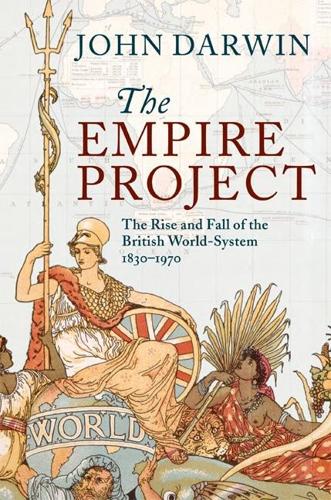
The Empire Project: The Rise and Fall of the British World-System, 1830–1970
by
John Darwin
Published 23 Sep 2009
Meanwhile, British leaders drew comfort from the powerful advantages that Britain's geopolitical position still seemed to confer. Despite a niggling sense of American rivalry, they enjoyed Washington's general backing for their Middle East policies, and their effort to keep Britain's regional primacy there. American antipathy to European colonialism had already been modified by the fear that the over-hasty demolition of European rule would open the door not to West-leaning nationalism but an East-leaning Marxism. The growing intensity of Cold War competition by 1950 and ever heavier emphasis on the supply of strategic materials strengthened the case for keeping key colonial producers under politically reliable management.
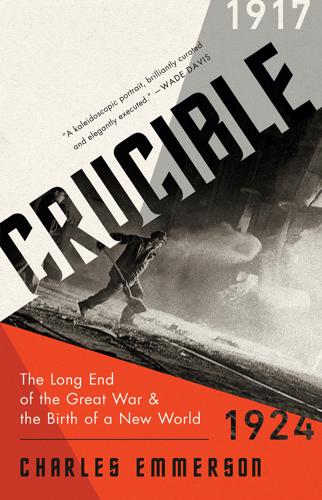
Crucible: The Long End of the Great War and the Birth of a New World, 1917-1924
by
Charles Emmerson
Published 14 Oct 2019
Garvey has a dramatic run-in with the African Blood Brotherhood, the group accused of involvement in the Tulsa riot, denouncing it for its secretiveness. Not long after, the brotherhood derides Garvey for turning the UNIA into a ‘tinsel show’. There are no rallies or marches at William Du Bois’s Pan African Congress. Meetings take place, discreetly, at the edges of the great power centres of European colonialism, first in London, where Du Bois mixes with sympathetic British politicians, and then in Brussels, where Belgian colonial officials observe proceedings. The French Senegalese chair heads off any motions which might offend the hosts. (The horrors of King Leopold’s exploitation of the Congo are not mentioned.)
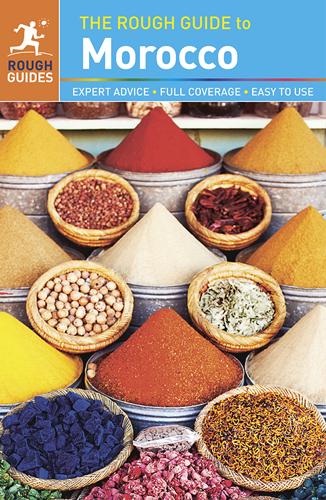
The Rough Guide to Morocco
by
Rough Guides
With all this, Ismail was able to build a palace in Meknes that was the rival of its contemporary, Versailles, and he negotiated on equal terms with European rulers. Indeed, it was probably the reputation he established for Morocco that allowed the country to remain free for another century and a half before the European colonial powers began carving it up. Mohammed III and Moulay Slimane Like all the great, long-reigning Moroccan sultans, Moulay Ismail left innumerable sons and a terminal dispute for the throne, with the powerful standing army supporting and dropping heirs at will. Remarkably, a capable ruler emerged fairly soon – Sultan Mohammed III – and for a while it appeared that the Shereefian Empire was moving back into the mainstream of world events.
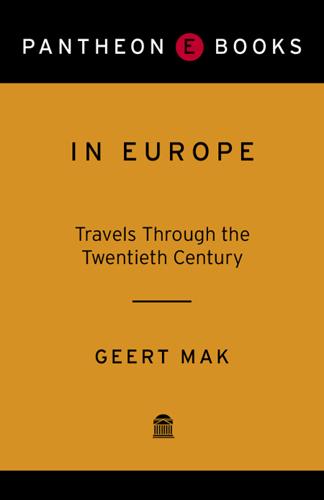
In Europe
by
Geert Mak
Published 15 Sep 2004
It is bizarre, but true: this little group of respectable Sunday Greeks, this remote little church, these elderly priests are all that remains of the enormous Greek Orthodox power centre that was once Constantinople, of the unique amalgam of European and Eastern culture that blossomed here for at least a thousand years. In some ways the Ottoman Empire was like the European colonial empires, but lacked one feature: the colonial disdain with which Europe looked down on other peoples. The Ottomans were not particularly interested in whether one was a Muslim or a Christian. Jews and Christians were generally left in peace. Promising young Jewish and Christian people were sometimes converted to Islam, then given influential positions in the army or the bureaucracy.
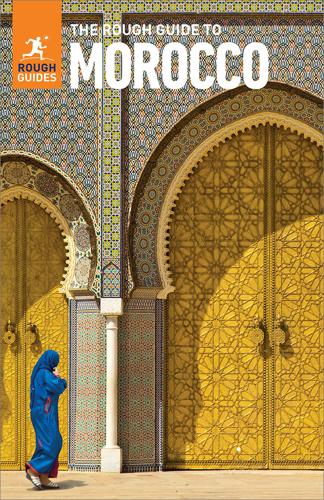
The Rough Guide to Morocco (Travel Guide eBook)
by
Rough Guides
Published 23 Mar 2019
With all this, Ismail was able to build a palace in Meknes that was the rival of its contemporary, Versailles, and he negotiated on equal terms with European rulers. Indeed, it was probably the reputation he established for Morocco that allowed the country to remain free for another century and a half before the European colonial powers began carving it up. Mohammed III and Moulay Slimane Like all the great, long-reigning Moroccan sultans, Moulay Ismail left innumerable sons and a terminal dispute for the throne, with the powerful standing army supporting and dropping heirs at will. Remarkably, a capable ruler emerged fairly soon – Sultan Mohammed III – and for a while it appeared that the Shereefian Empire was moving back into the mainstream of world events.
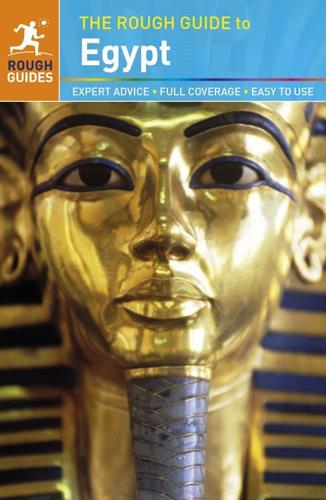
The Rough Guide to Egypt (Rough Guide to...)
by
Dan Richardson
and
Daniel Jacobs
Published 1 Feb 2013
Midan Orabi and Midan Tahrir Emerging from Sharia Sa’ad Zaghloul onto Midan Orabi you’ll see a Neoclassical Monument of the Unknown Soldier facing the seafront, where a naval guard of honour is changed every hour on the hour. The square is named after the leader of the 1882 Orabi Revolt, Egypt’s first attempt to cast off European colonial rule, punished by a naval bombardment of the city. Midan Tahrir Midan Orabi forms a T-shape with an even larger square, whose equestrian statue of Mohammed Ali rears outside the former Mixed Courts, where foreigners were once tried under their own jurisprudence rather than Egyptian law.
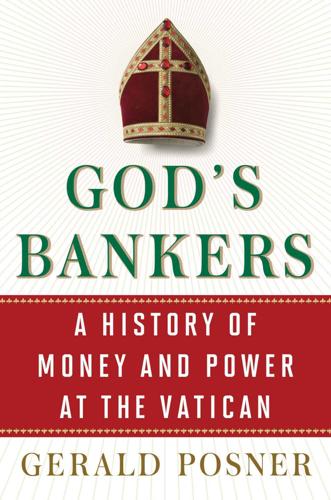
God's Bankers: A History of Money and Power at the Vatican
by
Gerald Posner
Published 3 Feb 2015
The Italians swept through the holy capital of Axum (sending a sacred obelisk back to Rome as a trophy for capturing the city).III The Ethiopian campaign was an essential part of Mussolini’s grand ambition to re-create an Italian empire that stretched without interruption from southern Europe through central and east Africa. Ethiopia—then Abyssinia—was a prime candidate for Il Duce’s expansionist policies. It was one of the few African nations not already a European colony. France and Britain had large empires and several other European countries boasted African colonies.54 Mineral-rich Ethiopia was a natural extension of Italy’s Eritrean colony to the northwest and Italian Somaliland on the east. And finally, Mussolini was in part avenging Italy’s defeat during the First Italian-Abyssinian War thirty-nine years earlier.

The Better Angels of Our Nature: Why Violence Has Declined
by
Steven Pinker
Published 24 Sep 2012
A plausible answer was: a sadistic god, a god who liked to see people bleed and suffer.”13 So, they might think, if these gods have a minimum daily requirement of human gore, why not be proactive about it? Better him than me. Human sacrifice was eliminated in some parts of the world by Christian proselytizers, such as Saint Patrick in Ireland, and in others by European colonial powers like the British in Africa and India. Charles Napier, the British army’s commander in chief in India, faced with local complaints about the abolition of suttee, replied, “You say that it is your custom to burn widows. Very well. We also have a custom: when men burn a woman alive, we tie a rope around their necks and we hang them.
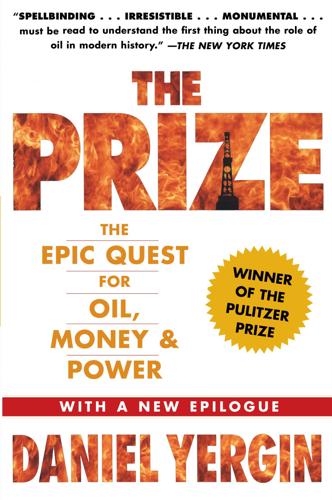
The Prize: The Epic Quest for Oil, Money & Power
by
Daniel Yergin
Published 23 Dec 2008
There was the hope, of course, that the British government could remain on reasonable terms with Egypt, but this hope faded when Nasser attempted to incorporate the separate country of the Sudan into his Greater Egypt.[3] Nasser was viewed more tolerantly in Washington, where the Administration and many in Congress tended to adopt an attitude of moral superiority toward the European colonial powers, combined with a desire to see them divest themselves of their empires more quickly. The Americans believed that the relics of colonialism were an enormous handicap for the West in its struggle with communism and the Soviet Union. The Suez Canal Company, despite the economic and strategic significance of the waterway, was one of the most visible of these relics.
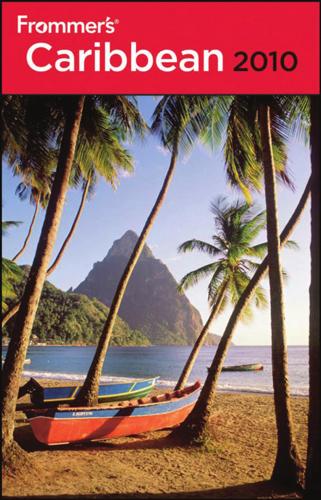
Frommer's Caribbean 2010
by
Christina Paulette Colón
,
Alexis Lipsitz Flippin
,
Darwin Porter
,
Danforth Prince
and
John Marino
Published 2 Jan 1989
Today it rises five floors above the 10 W H E R E TO S TAY Finds The Dutch philanthropist and architect Jan des BouFloris Suite Hotel vrie cr eated this gem of a boutique hotel in the vicinity of the C uraçao World Trade Center. Unlike any hotel on island, the all-suite hotel blends aspects of European colonial with West Indian architecture. Natural stone tiles are wedded with solid mahogany doors and windows. The compound is env eloped by a tr opical garden whose focal point is a swimming pool. A good priv ate sandy beach is just acr oss the str eet. The standard of luxury differs from suite to suite.
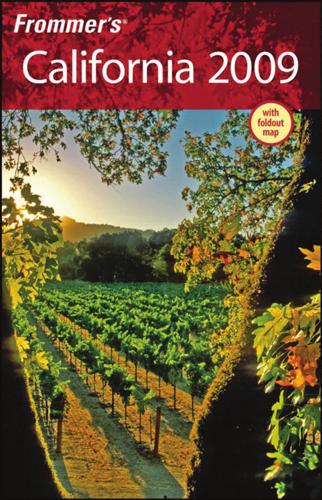
Frommer's California 2009
by
Matthew Poole
,
Harry Basch
,
Mark Hiss
and
Erika Lenkert
Published 2 Jan 2009
Ov er the next 200 y ears, dozens of sailors mapped the coast, including B ritish explor er S ir Francis D rake, who, in 1579, sailed his Golden H ind into what is no w called Drake’s B ay, and S panish explor er S ebastian Vizcano, who, in 1602, besto wed most of the place-names that survive today, including S an D iego, S anta B arbara, and Carmel. European colonial competition and Catholic missionar y z eal pr ompted Spain to establish settlements along the Alta (upper) California coast and claim the lands as its own. In 1769, Father Junípero Serra, accompanied b y 300 soldiers and clergy, began forging a path fr om Mexico to Monterey. A small mission and presidio (fort) w ere established that y ear at S an Diego, and b y 1804, a chain of 21 missions, each a day ’s walk fr om the next along a dir t r oad called Camino R eal (Royal R oad), str etched all the way to Sonoma.
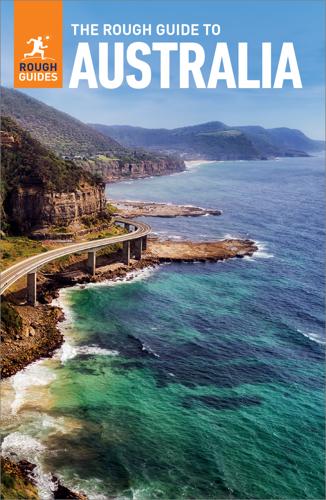
The Rough Guide to Australia (Travel Guide eBook)
by
Rough Guides
Published 14 Oct 2023
The collection was begun in 1874, moved into this building in 1897 and has been expanding ever since, most recently in 2003, when a gigantic cube of white glass, dubbed the “lightbox”, was grafted onto the eastern Woolloomooloo facade to contain the gallery’s Asian collection. As well as a wonderful permanent collection spanning European, colonial, First Nations and contemporary art, there’s a strong programme of temporary exhibits. A huge $344m expansion – the Sydney Modern Project – will transform the surrounding space when it is completed in December 2022 with a new First Nations art gallery, extensive sculpture gardens, and site-specific works.